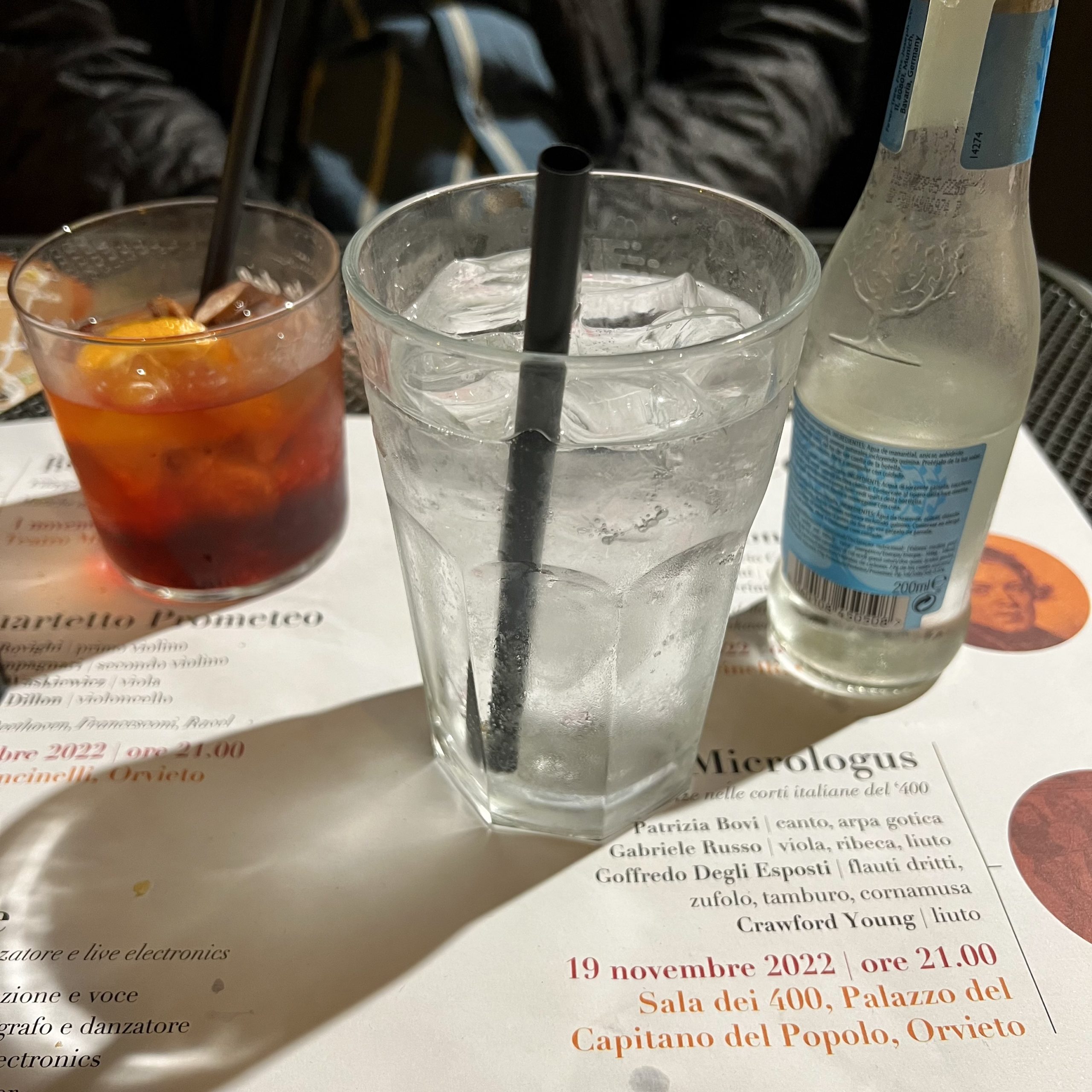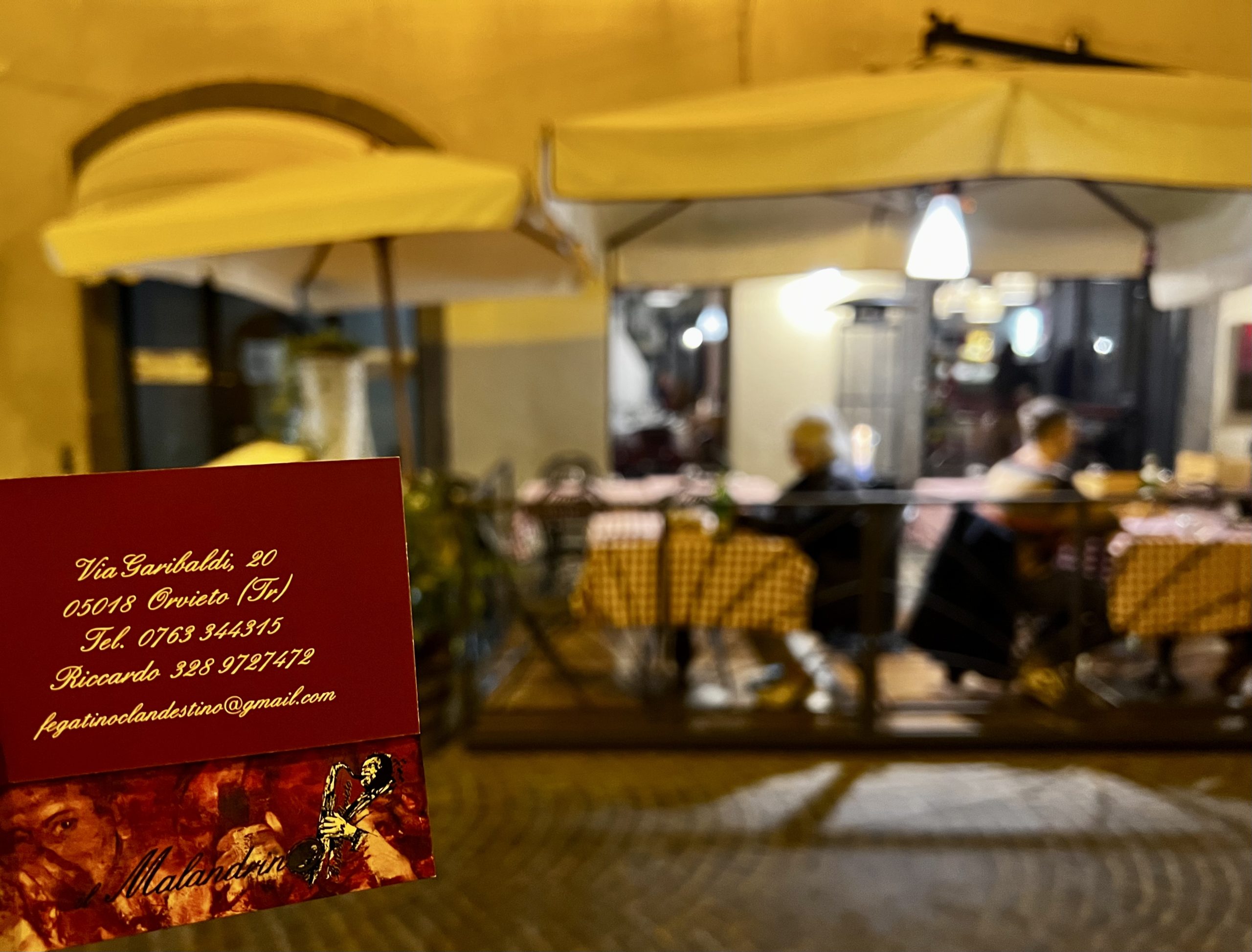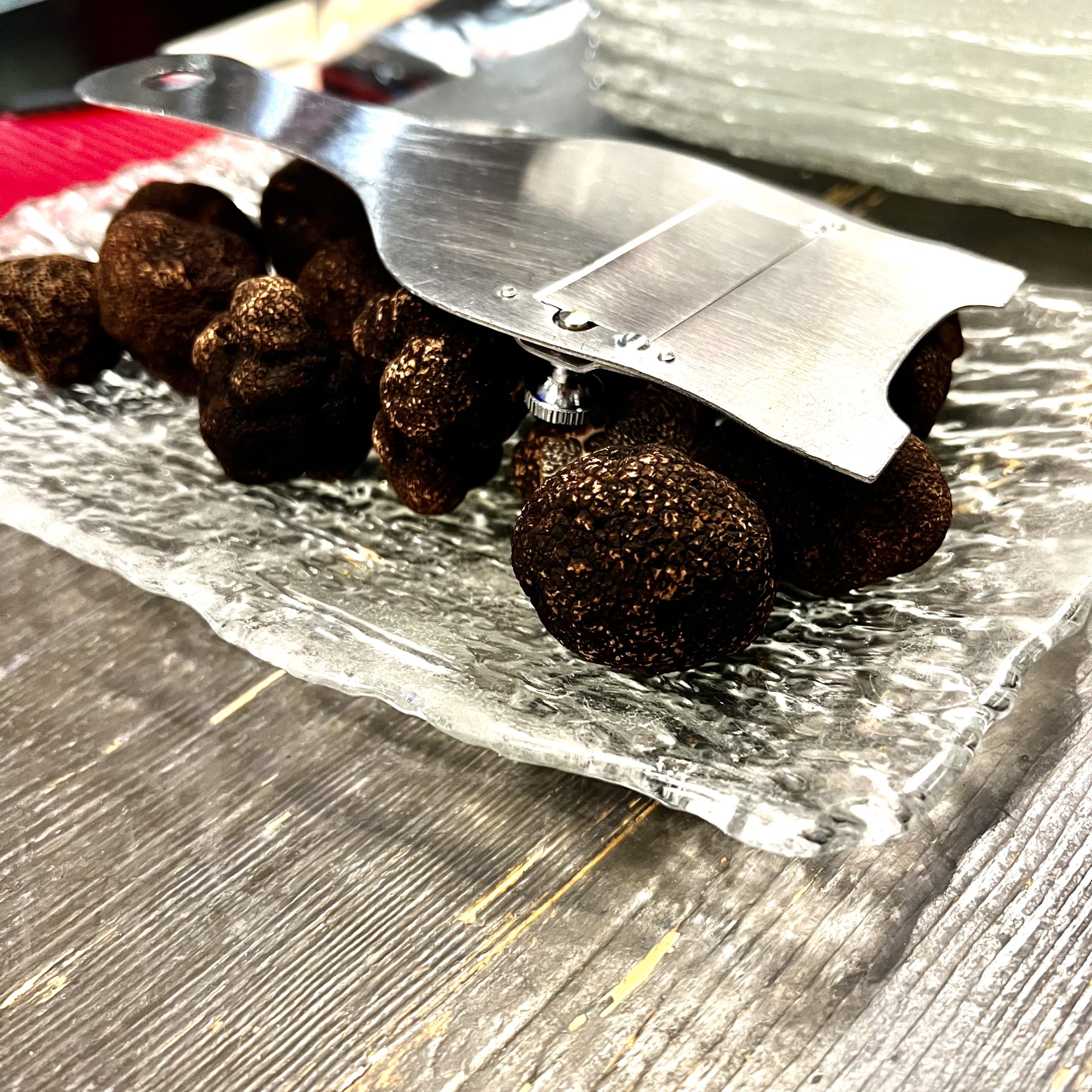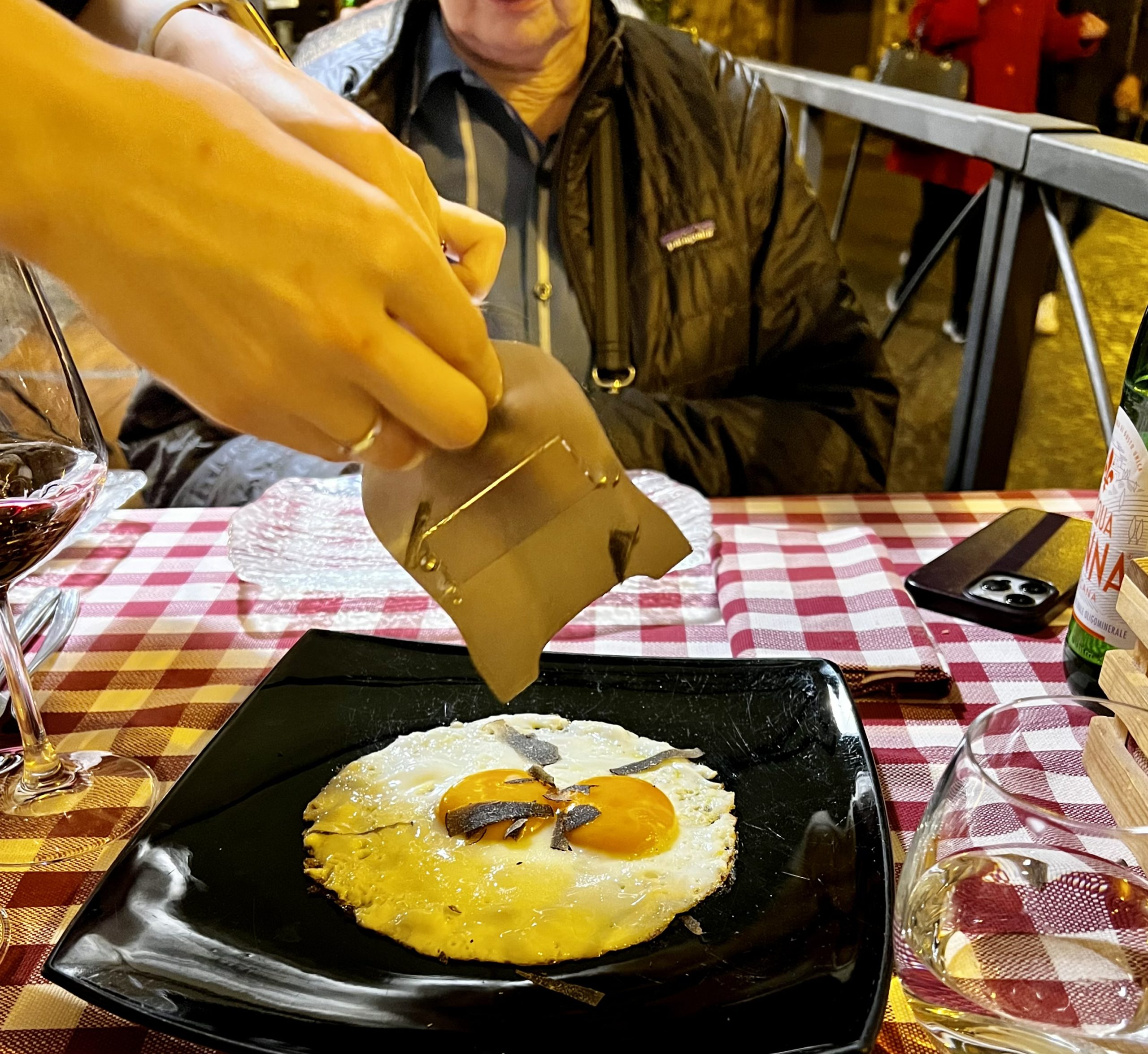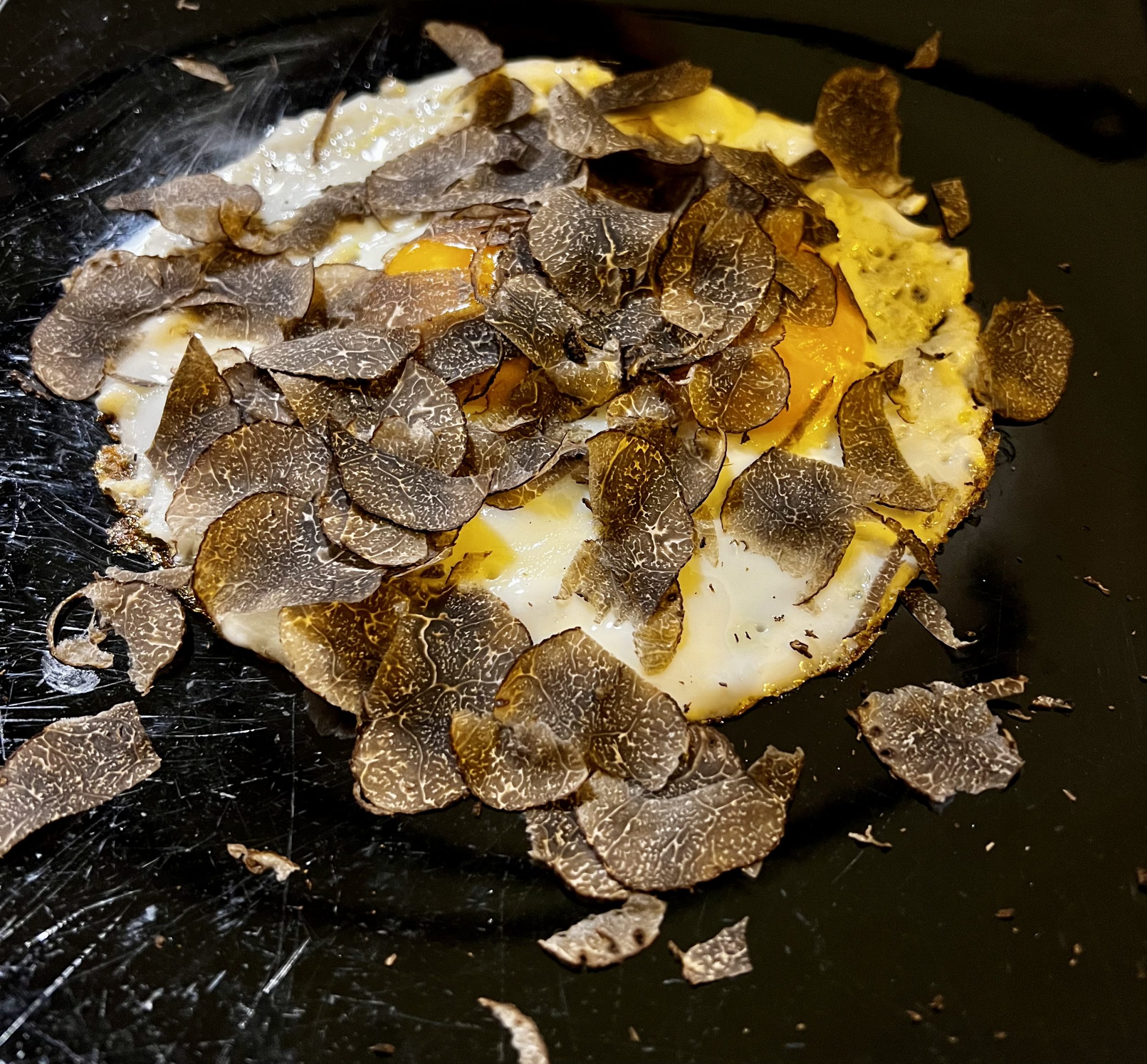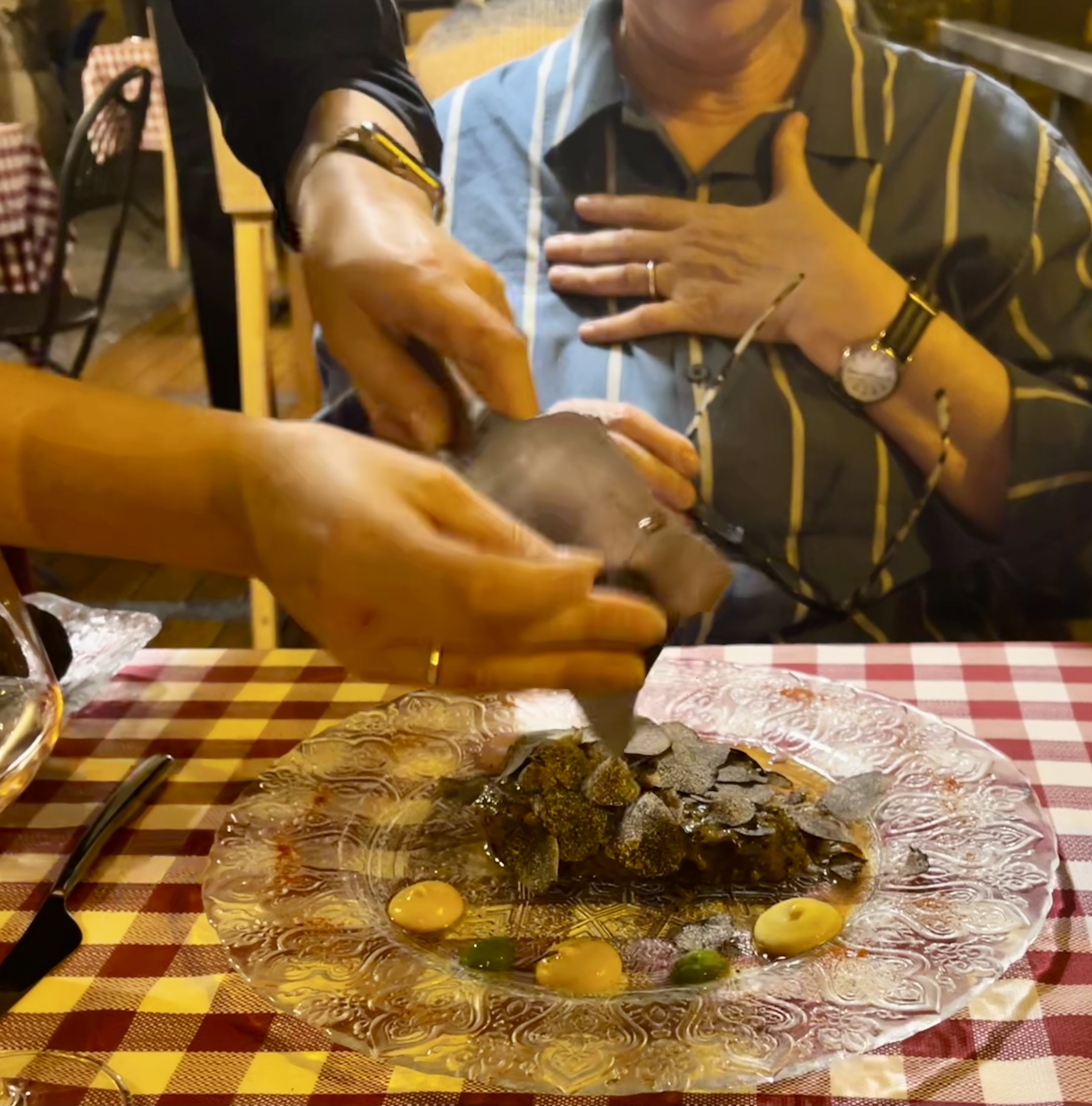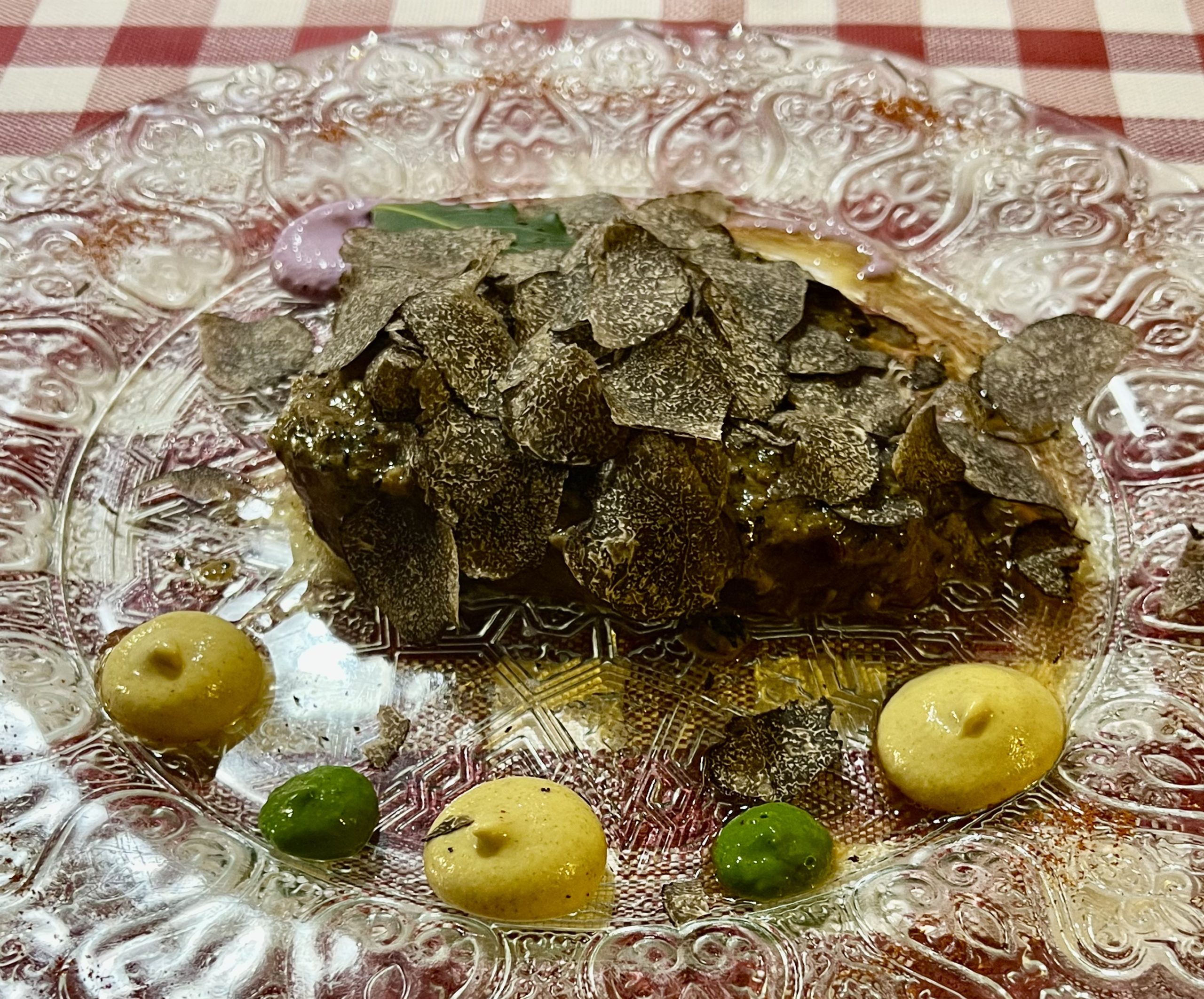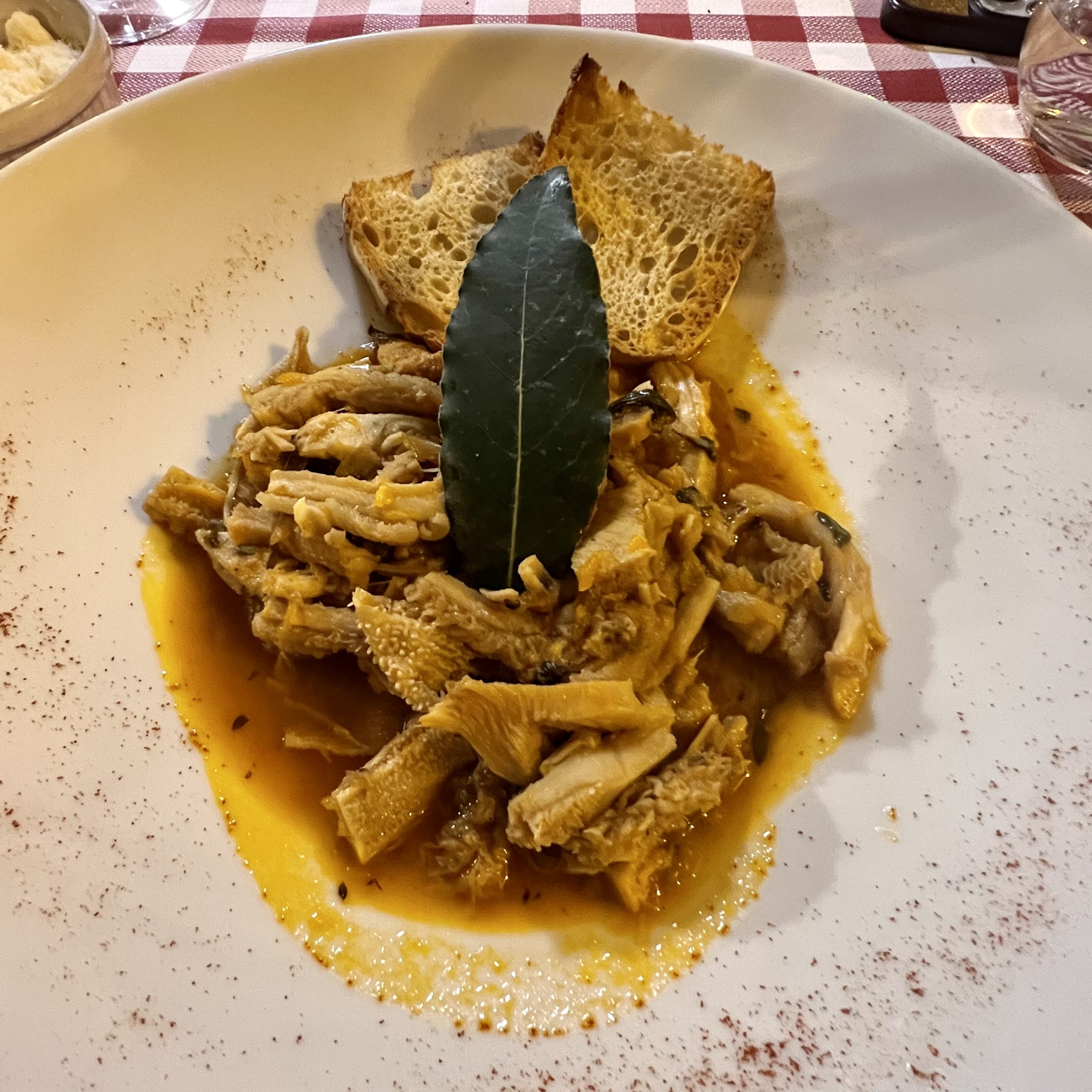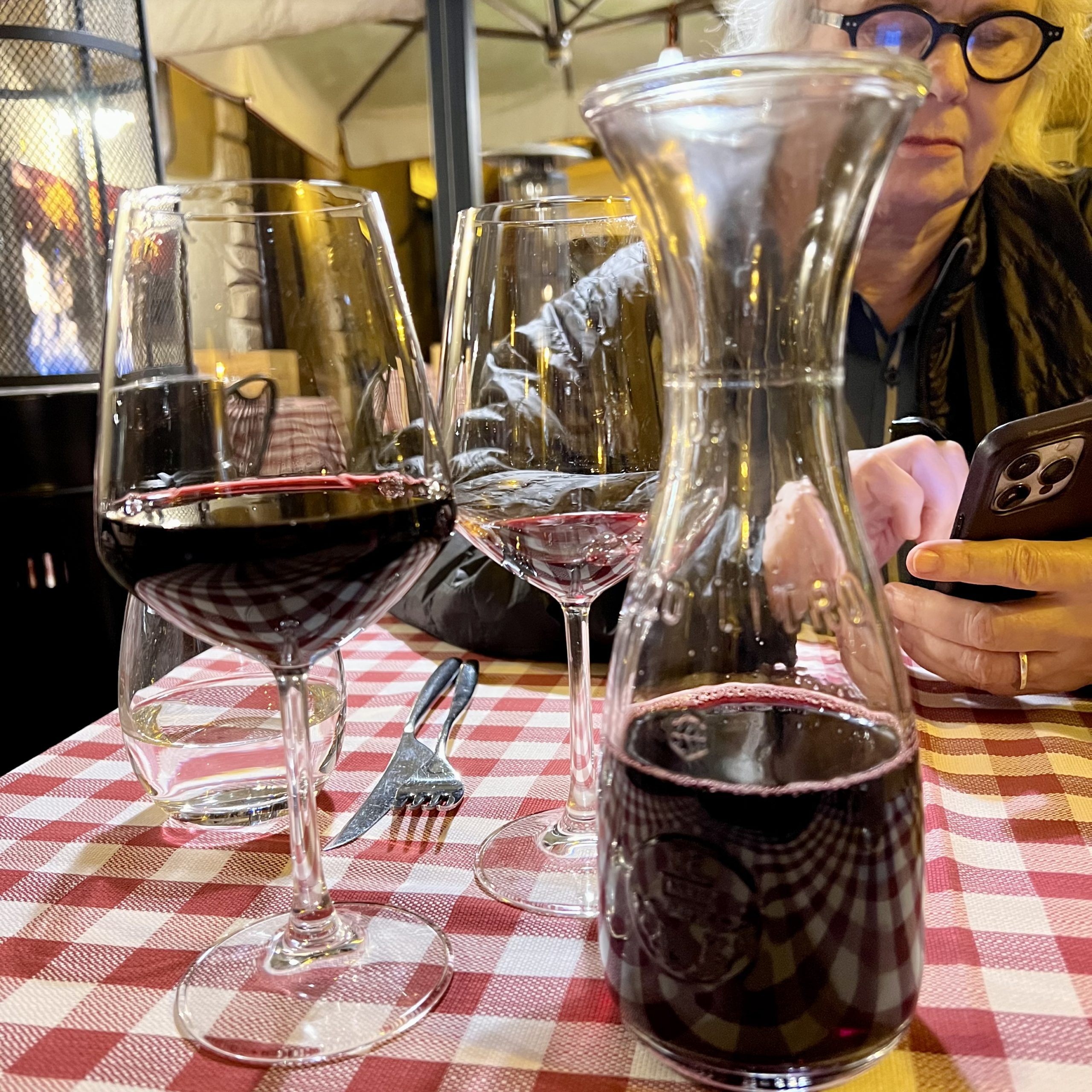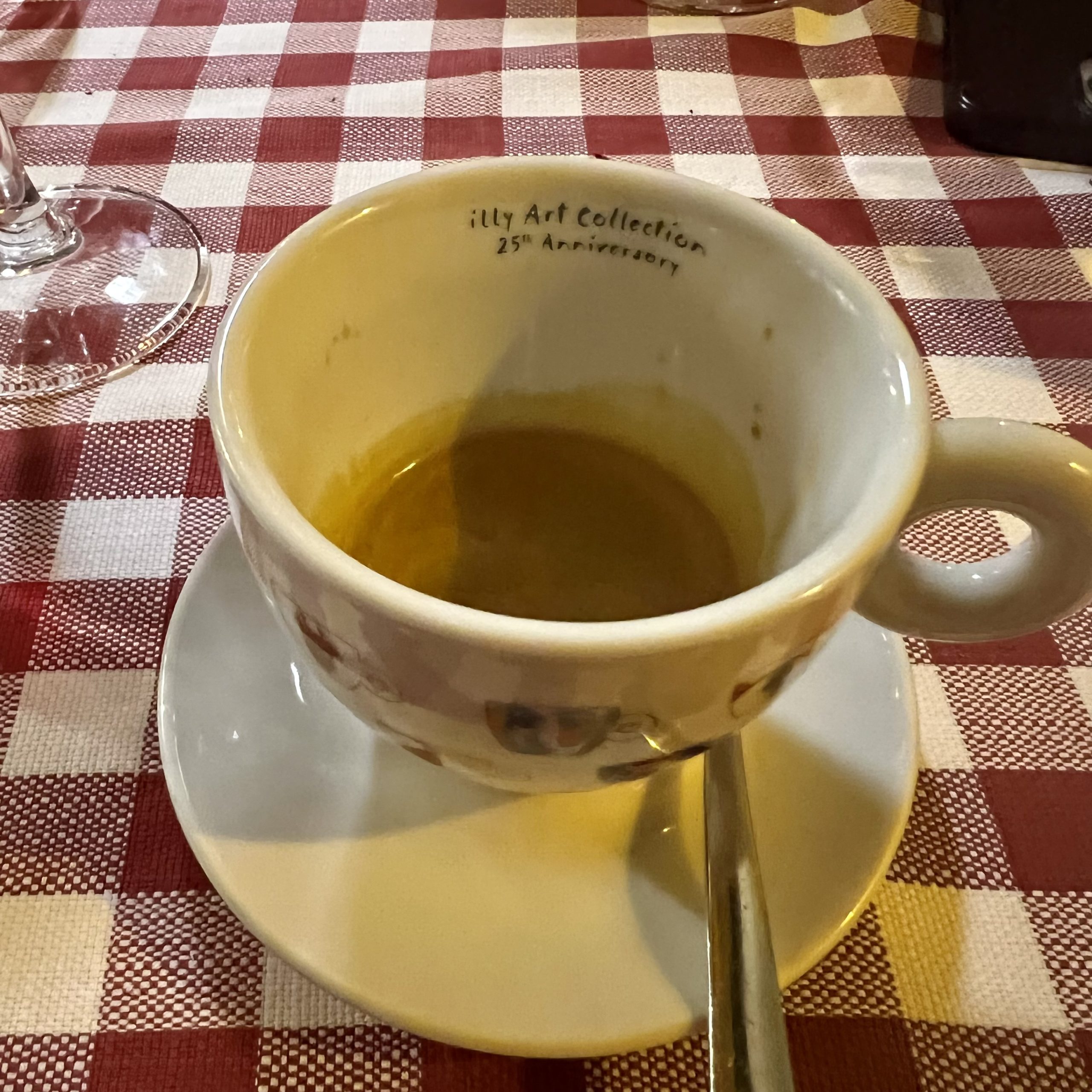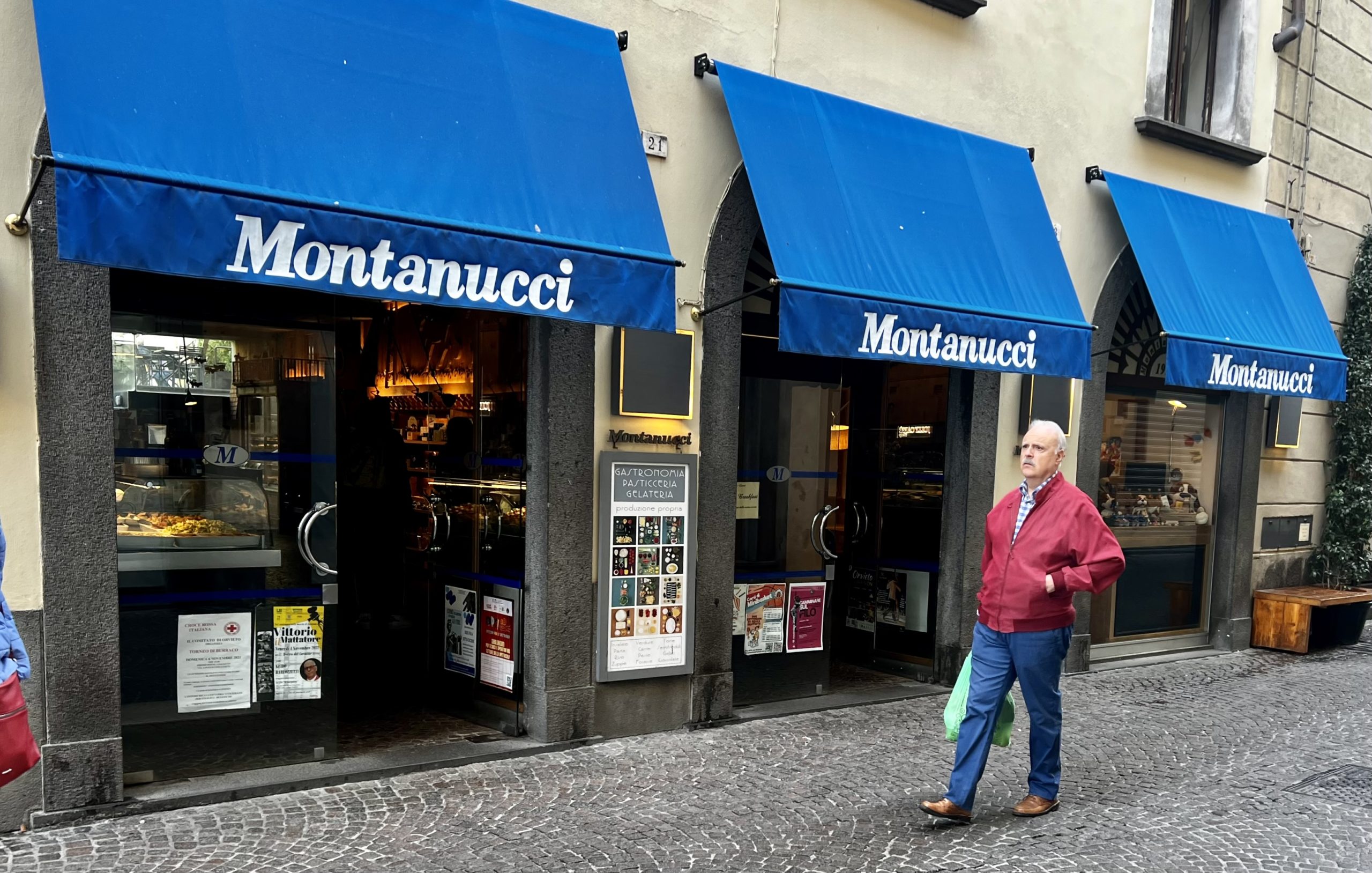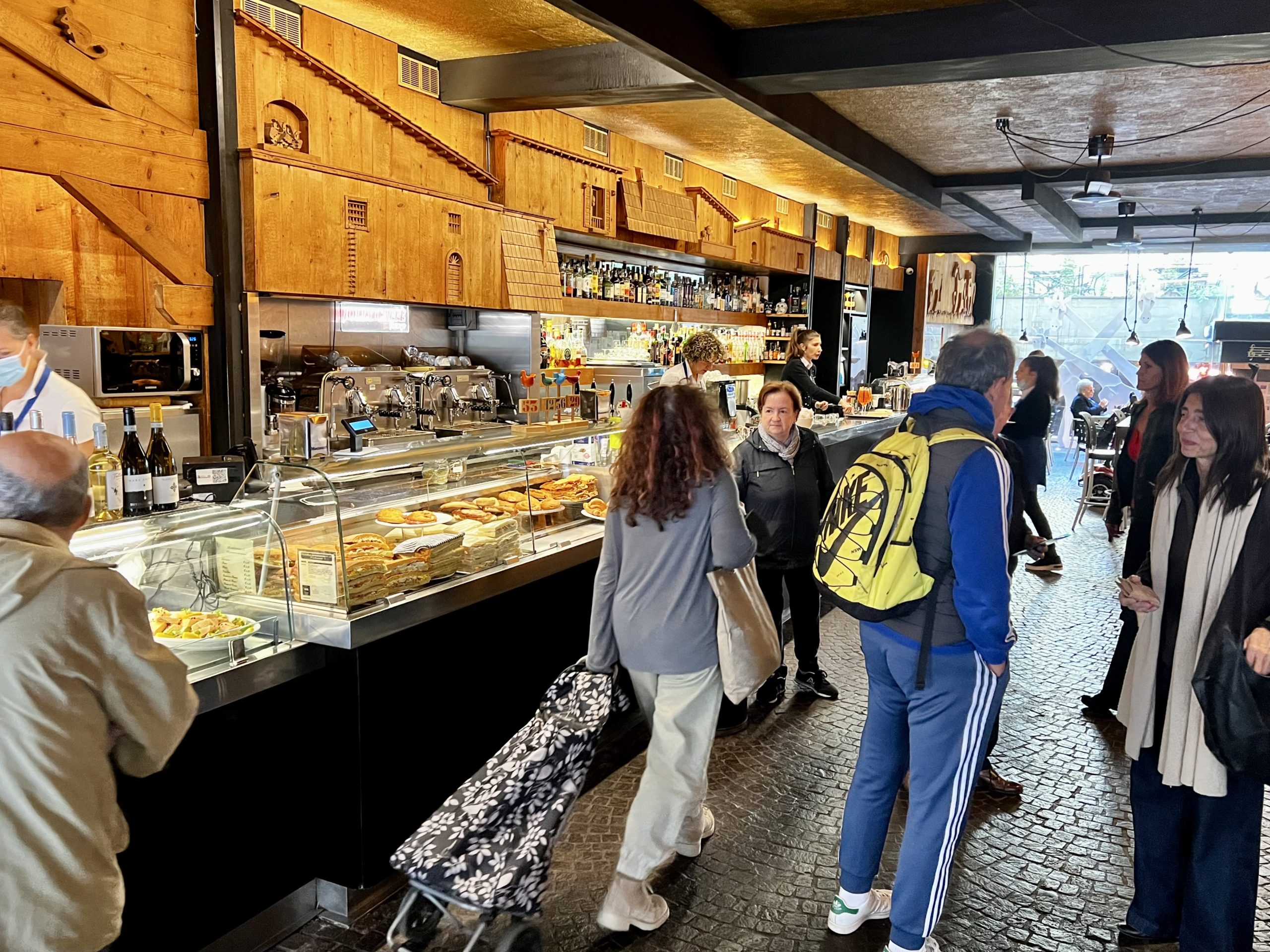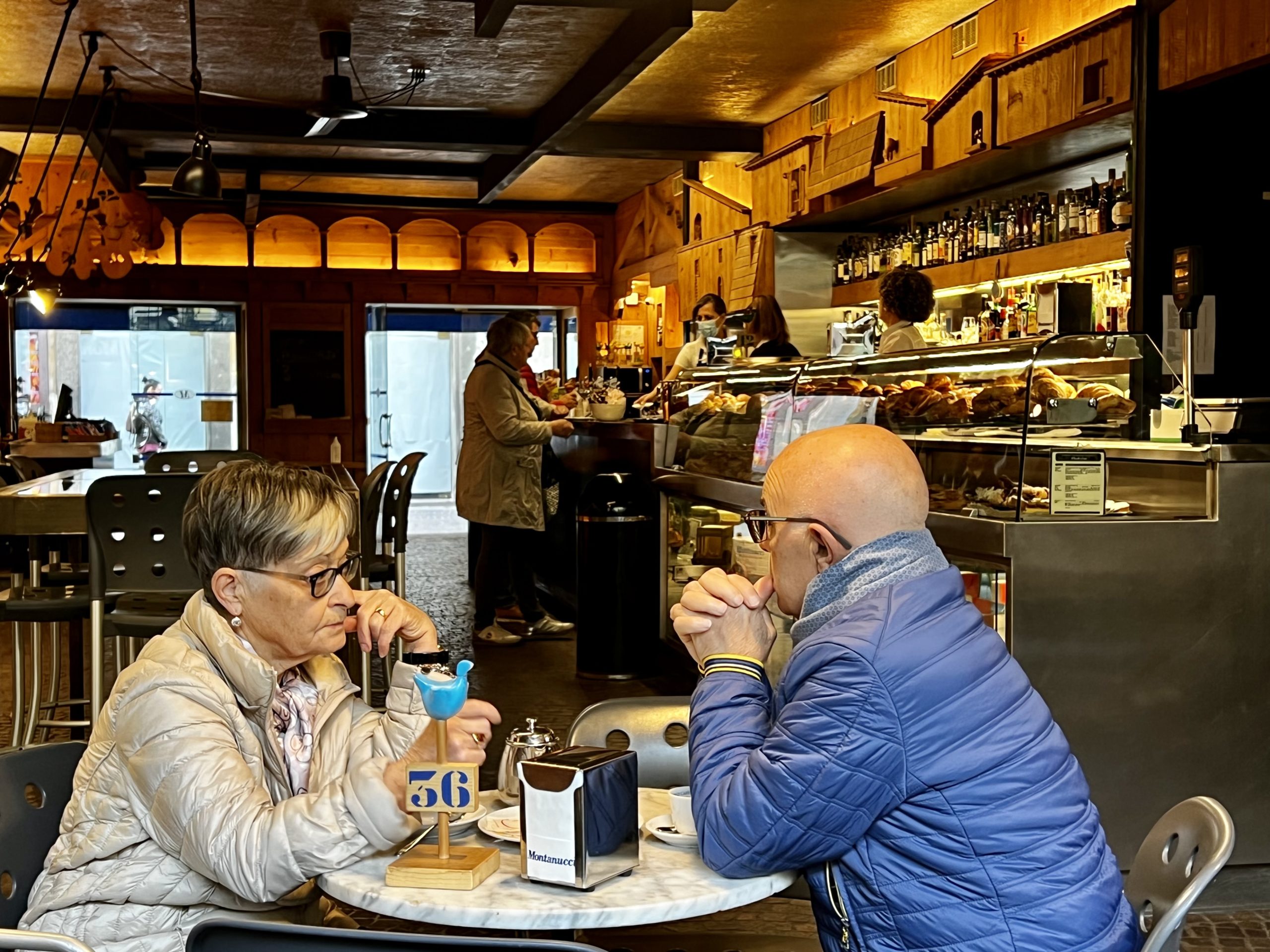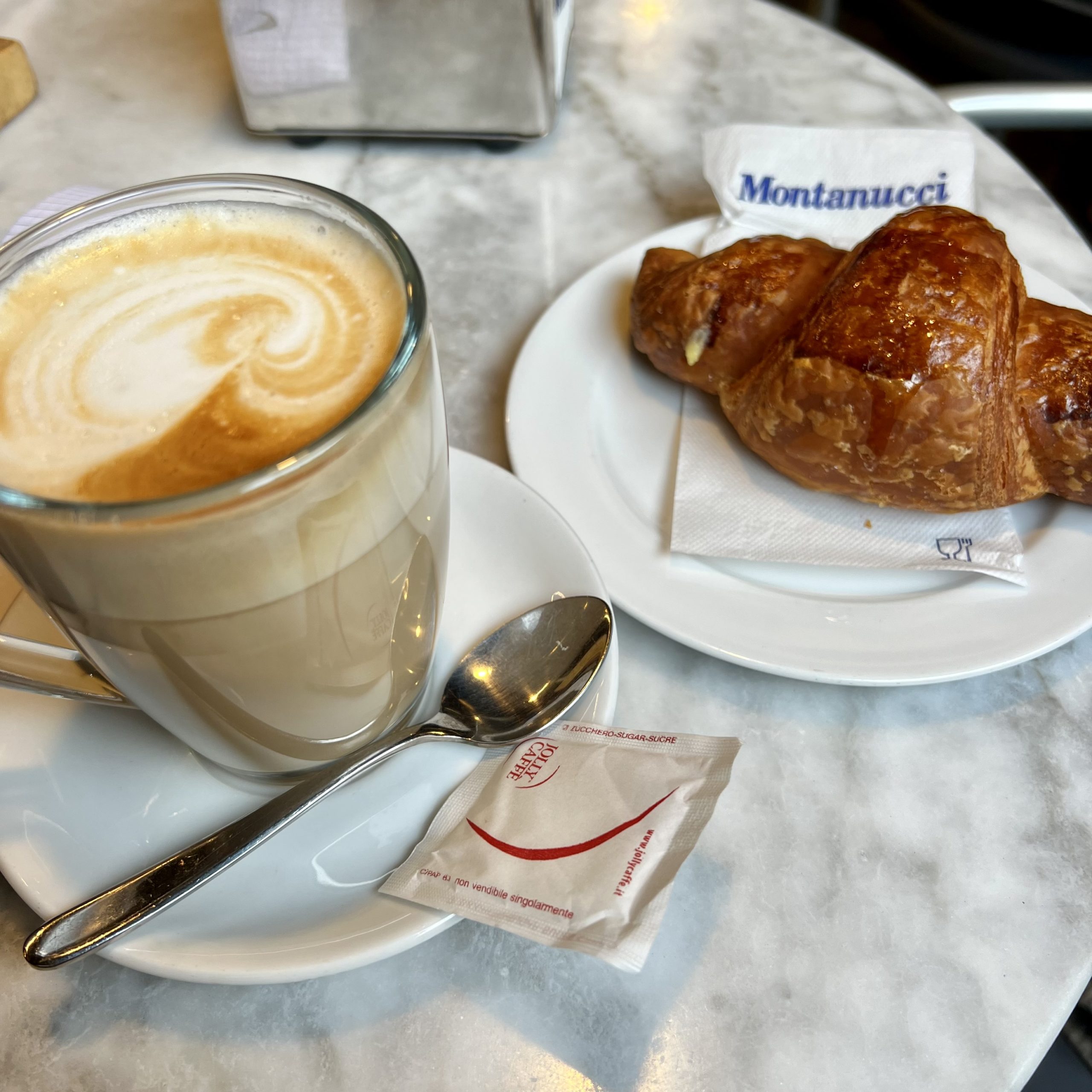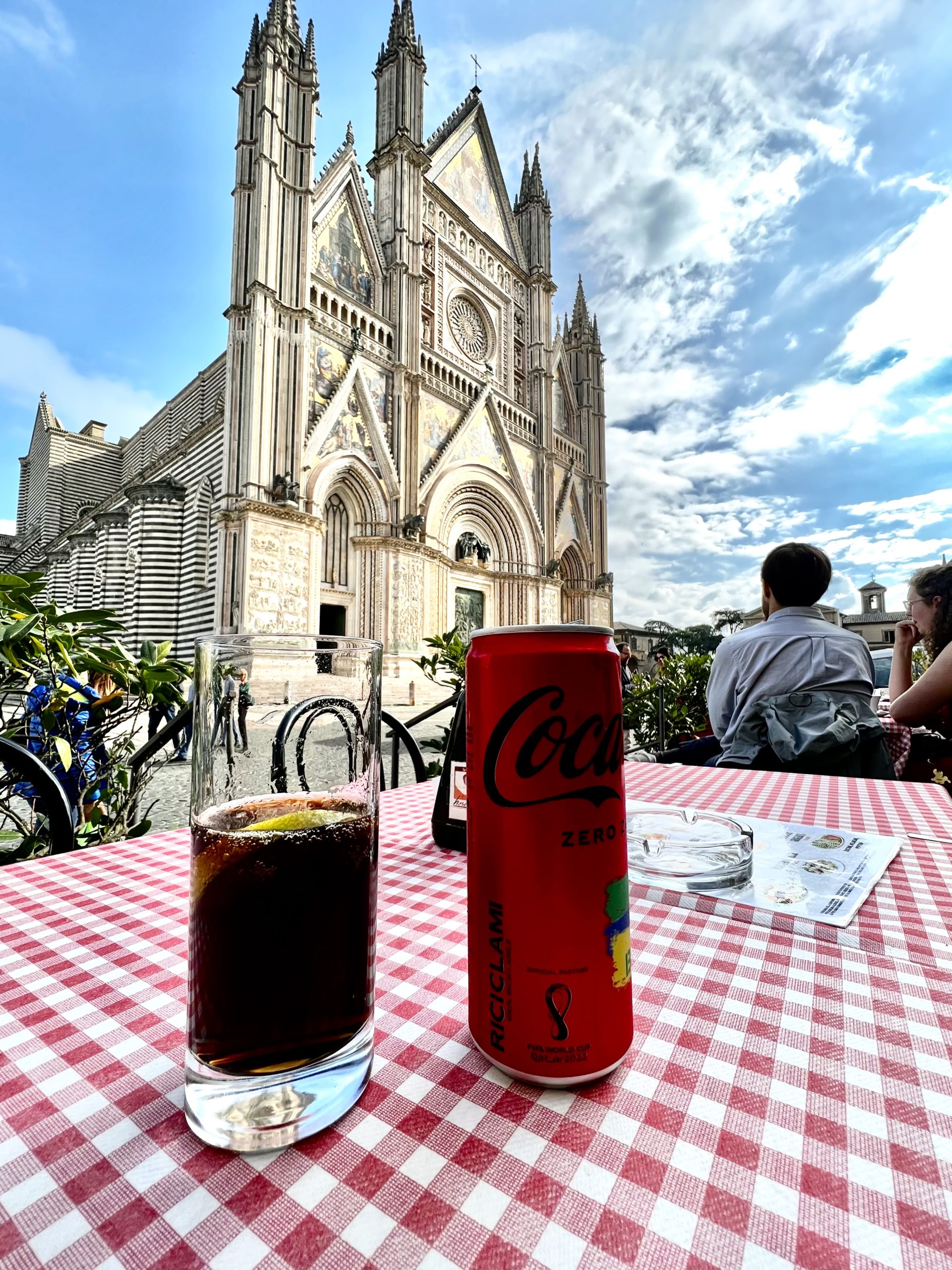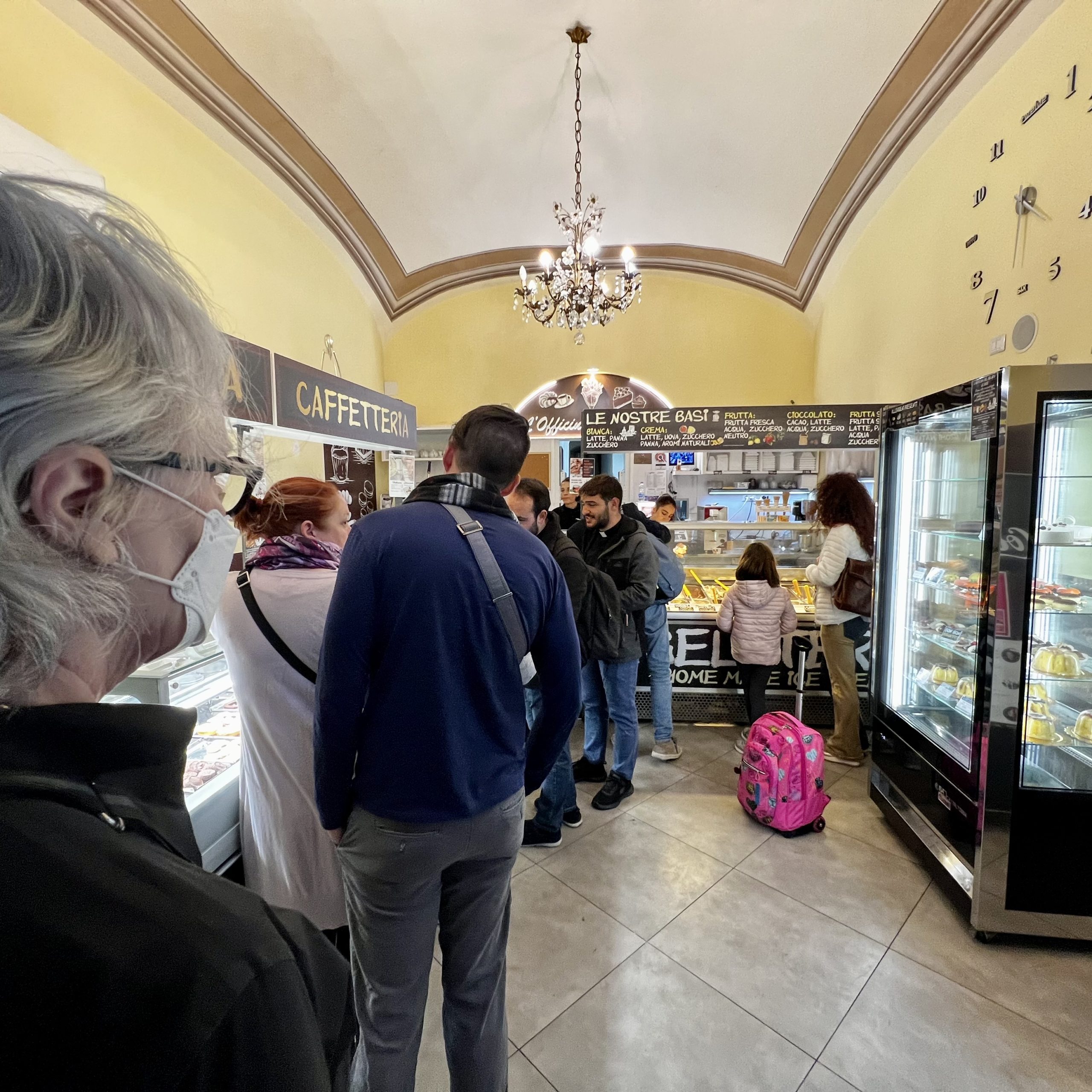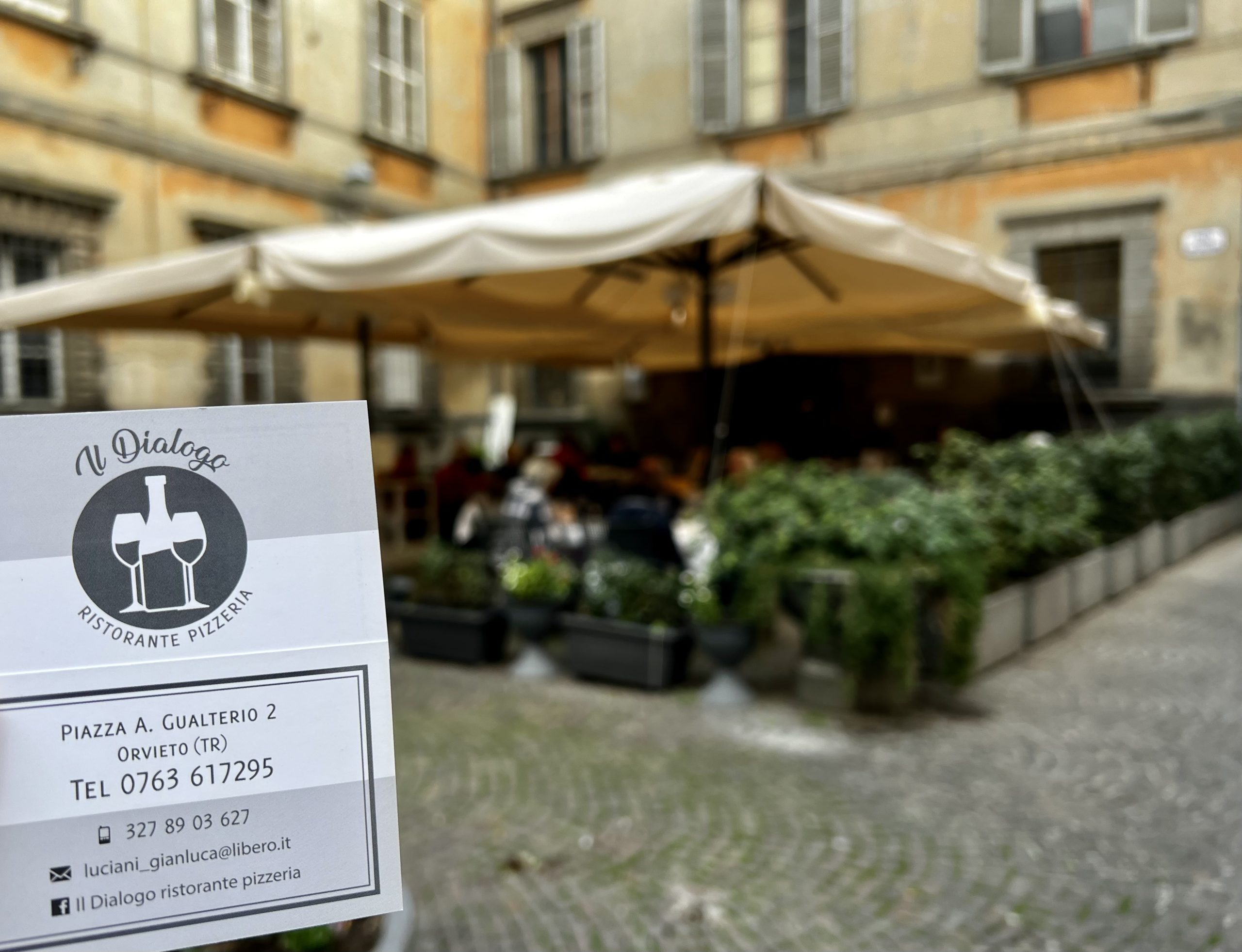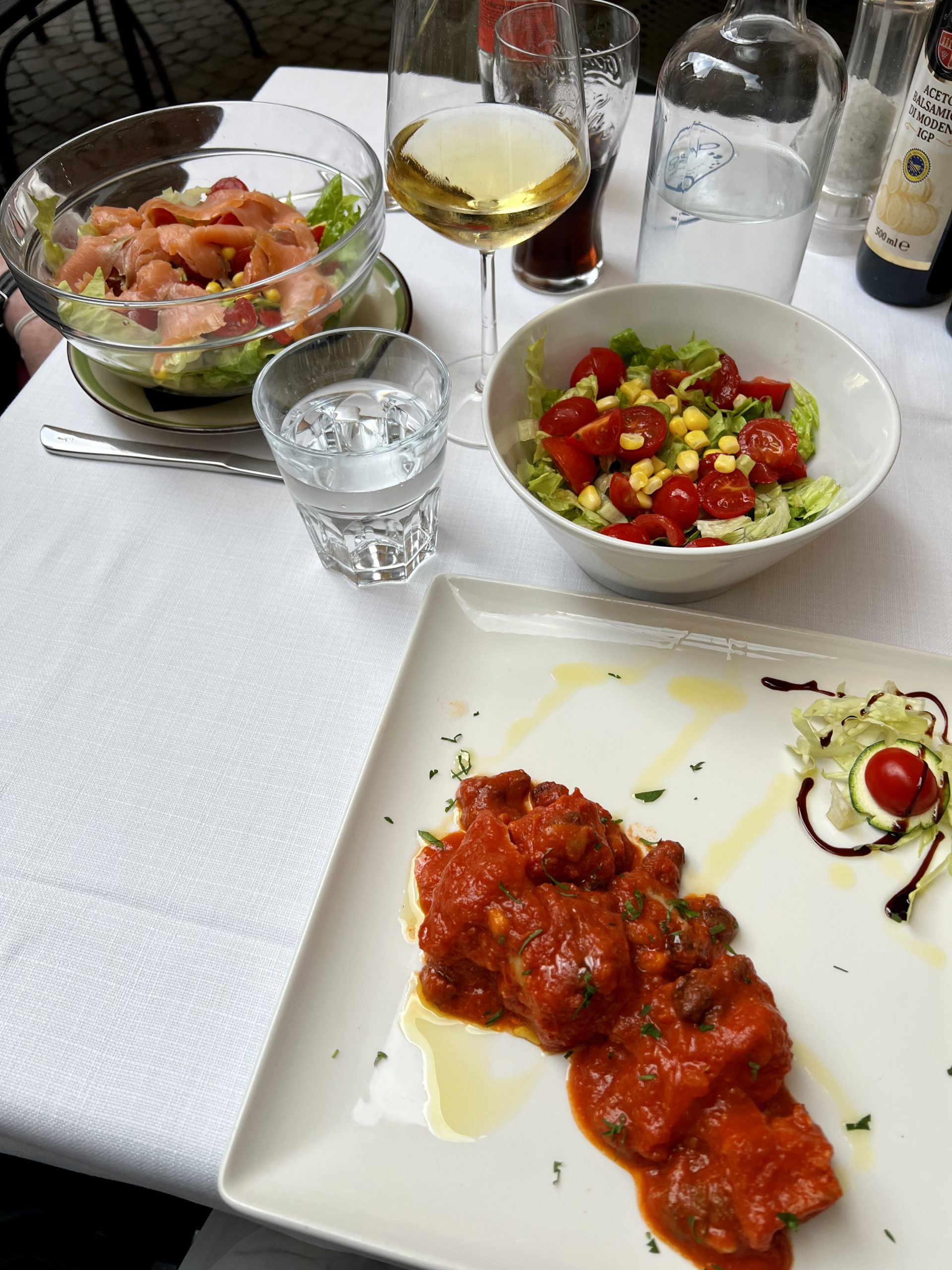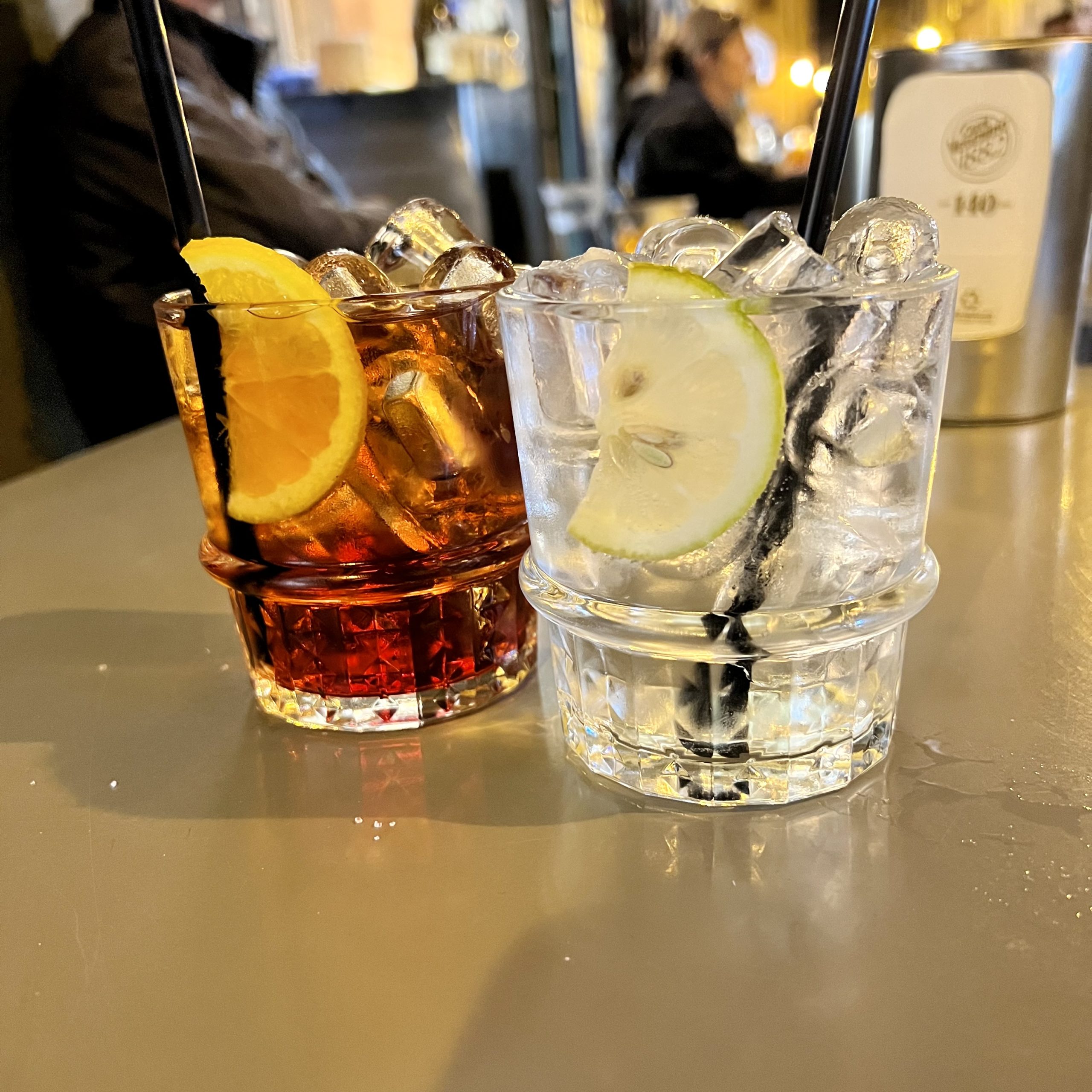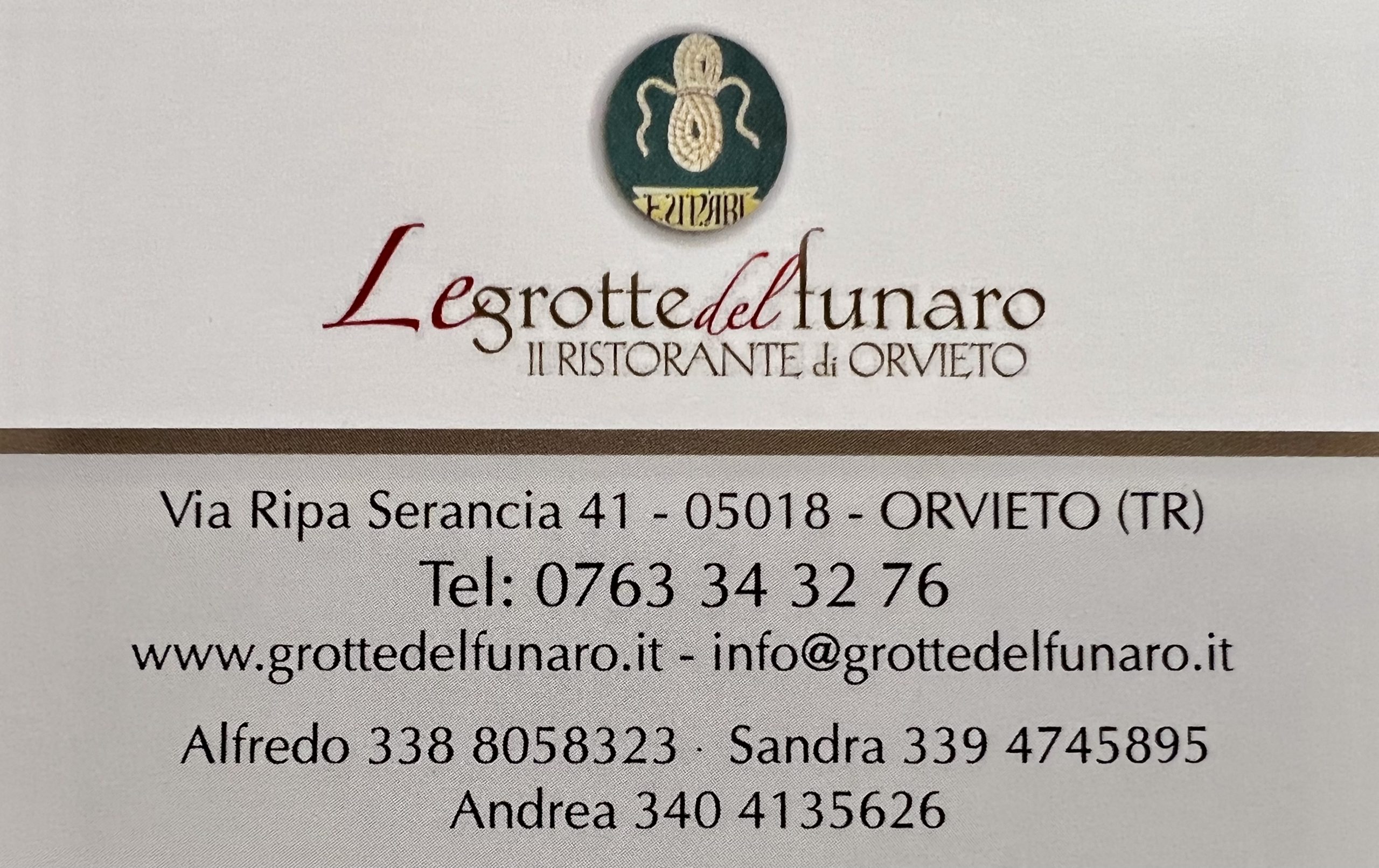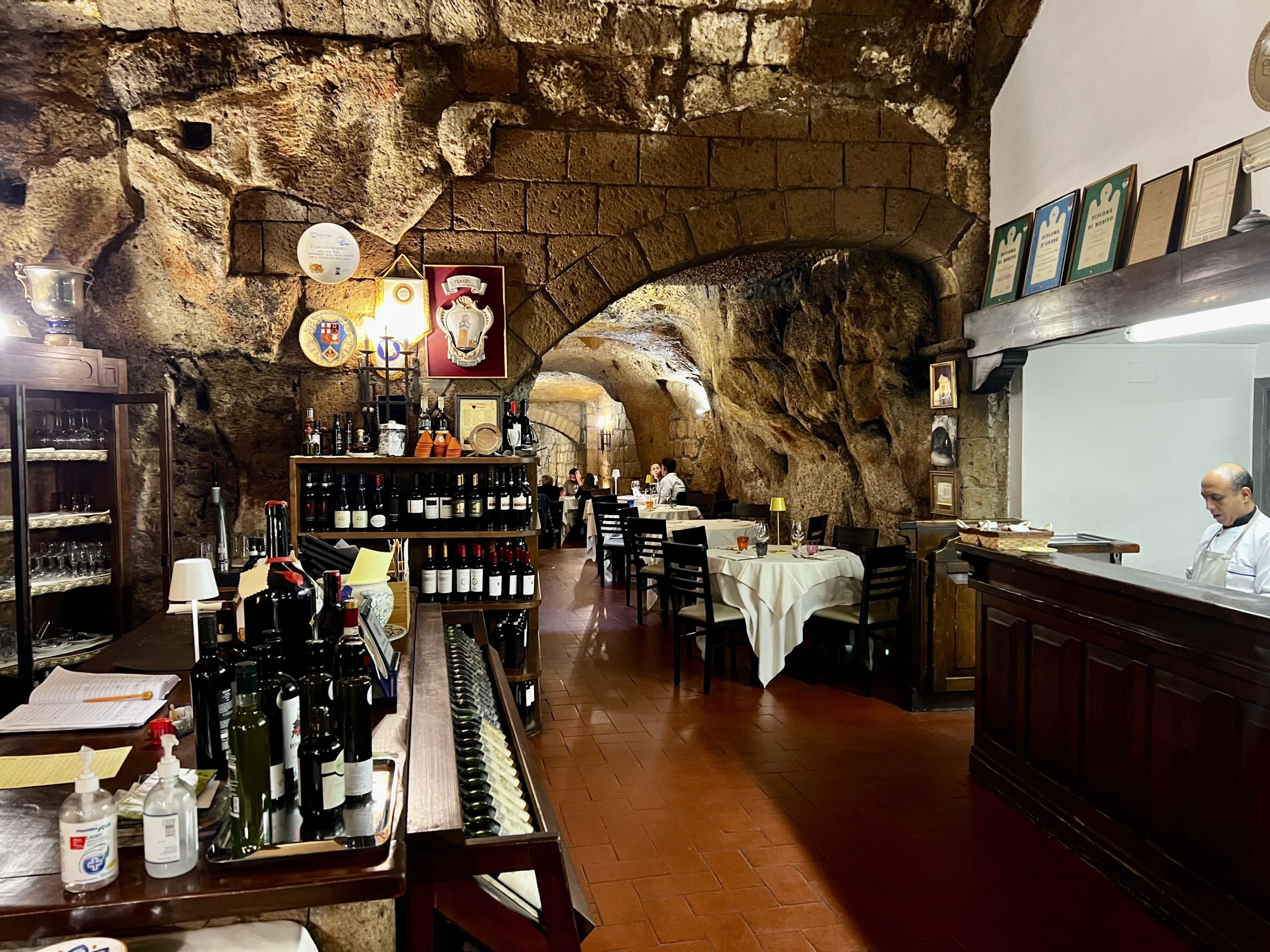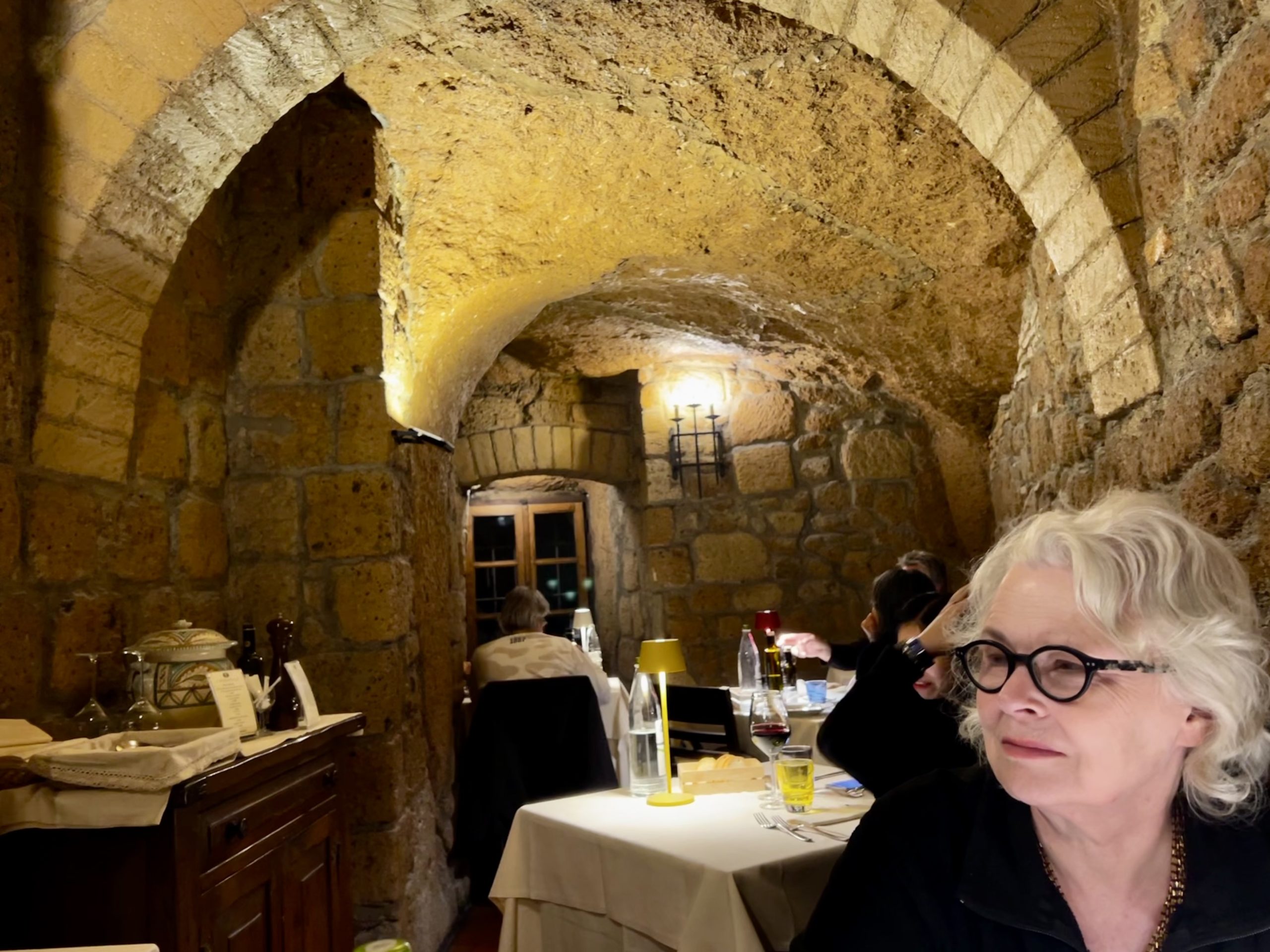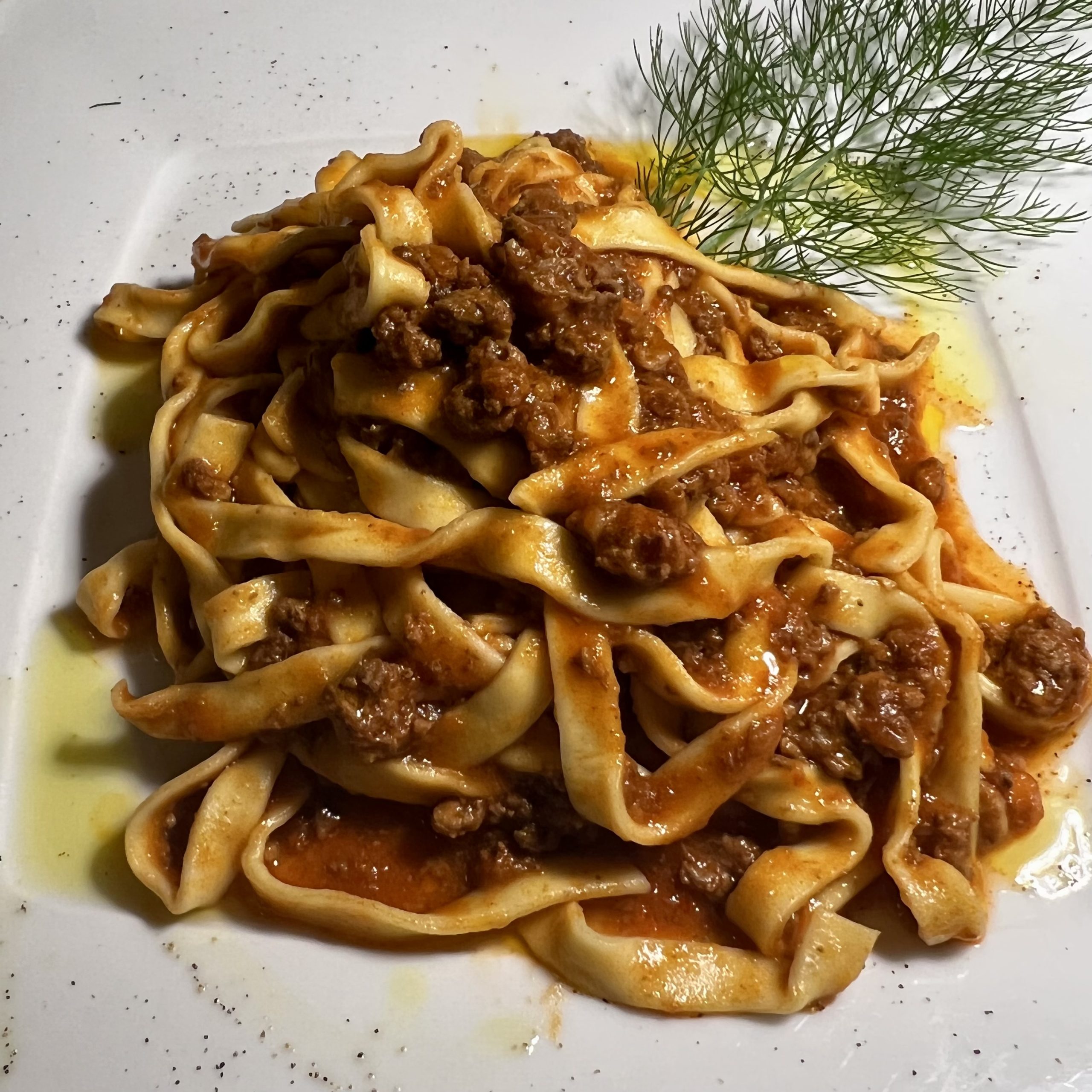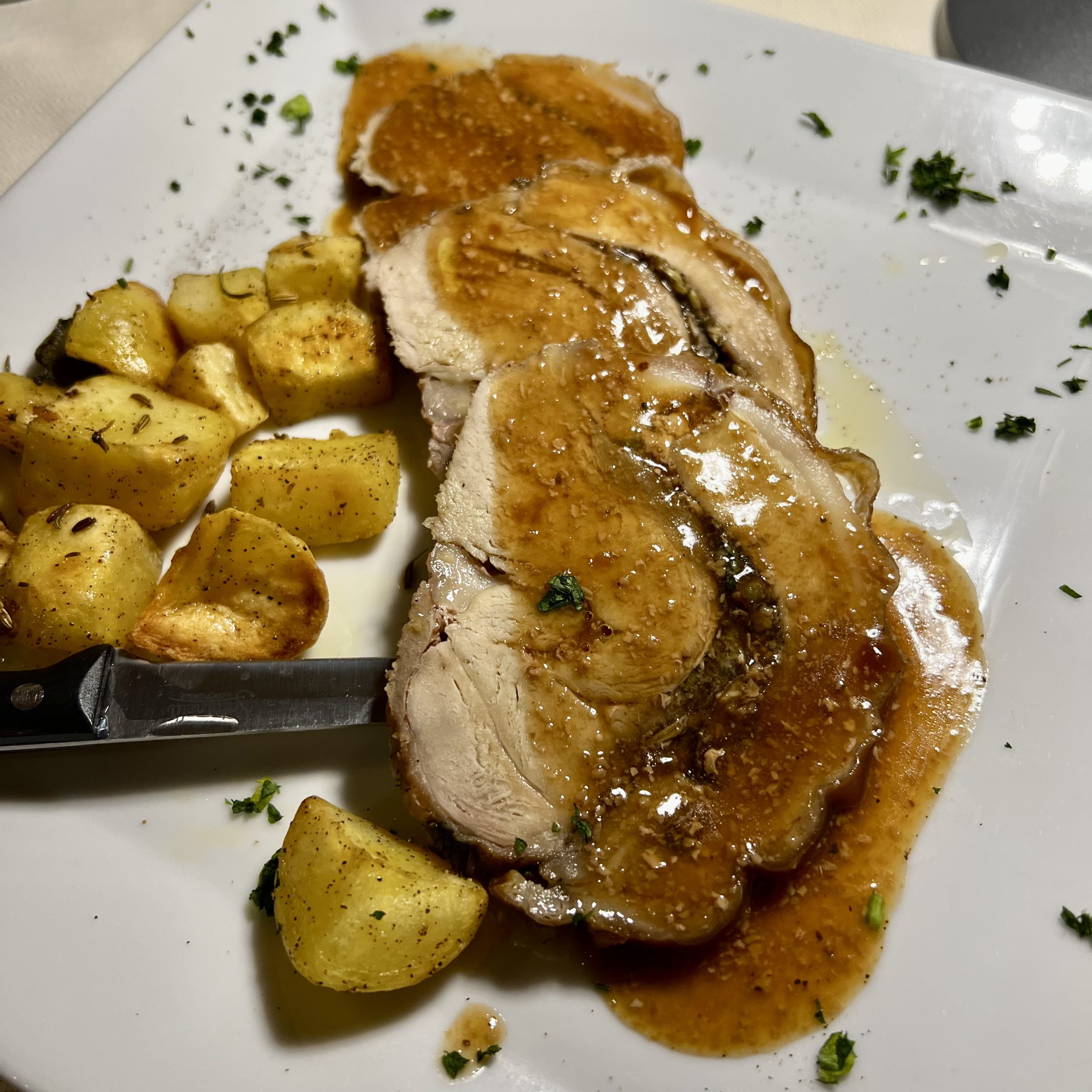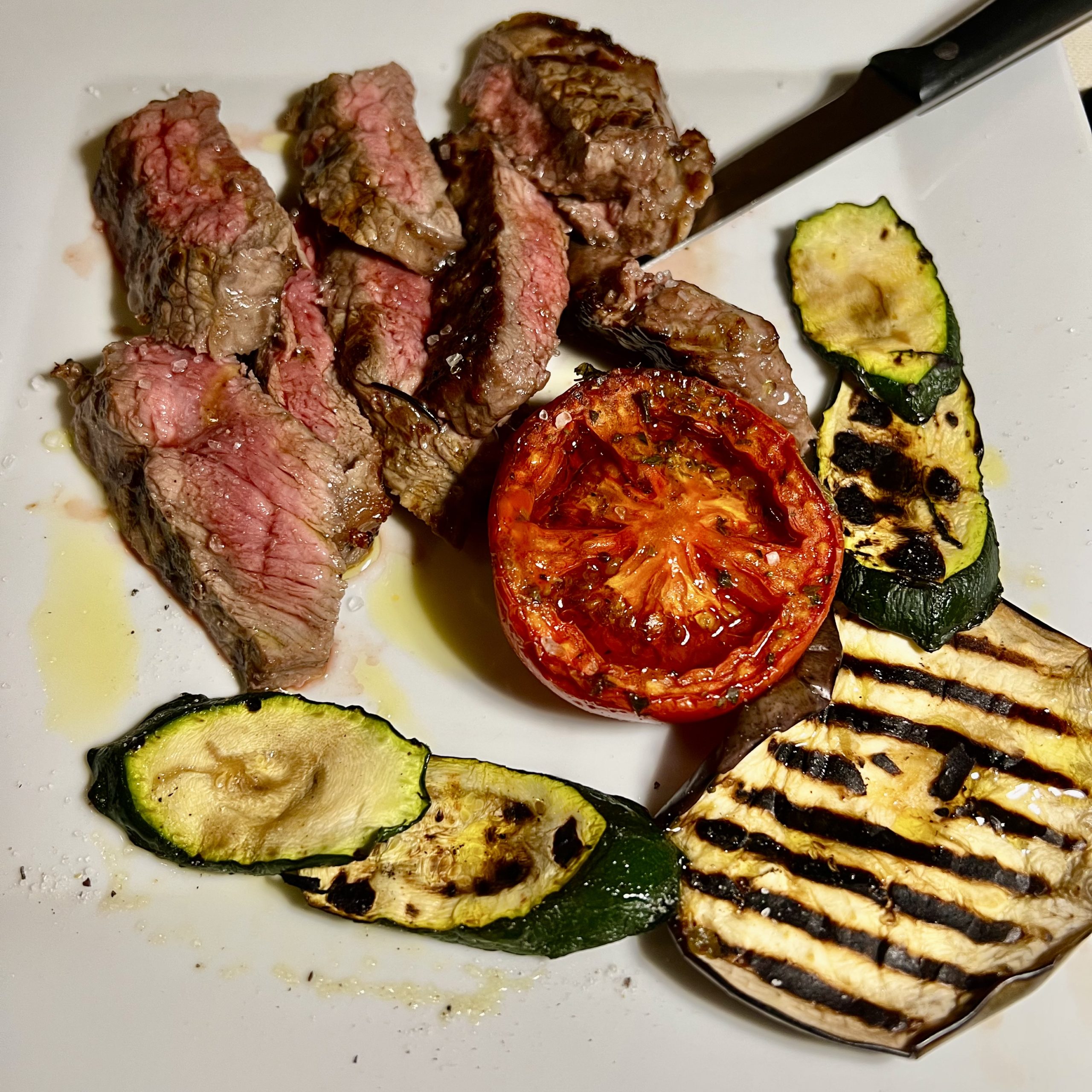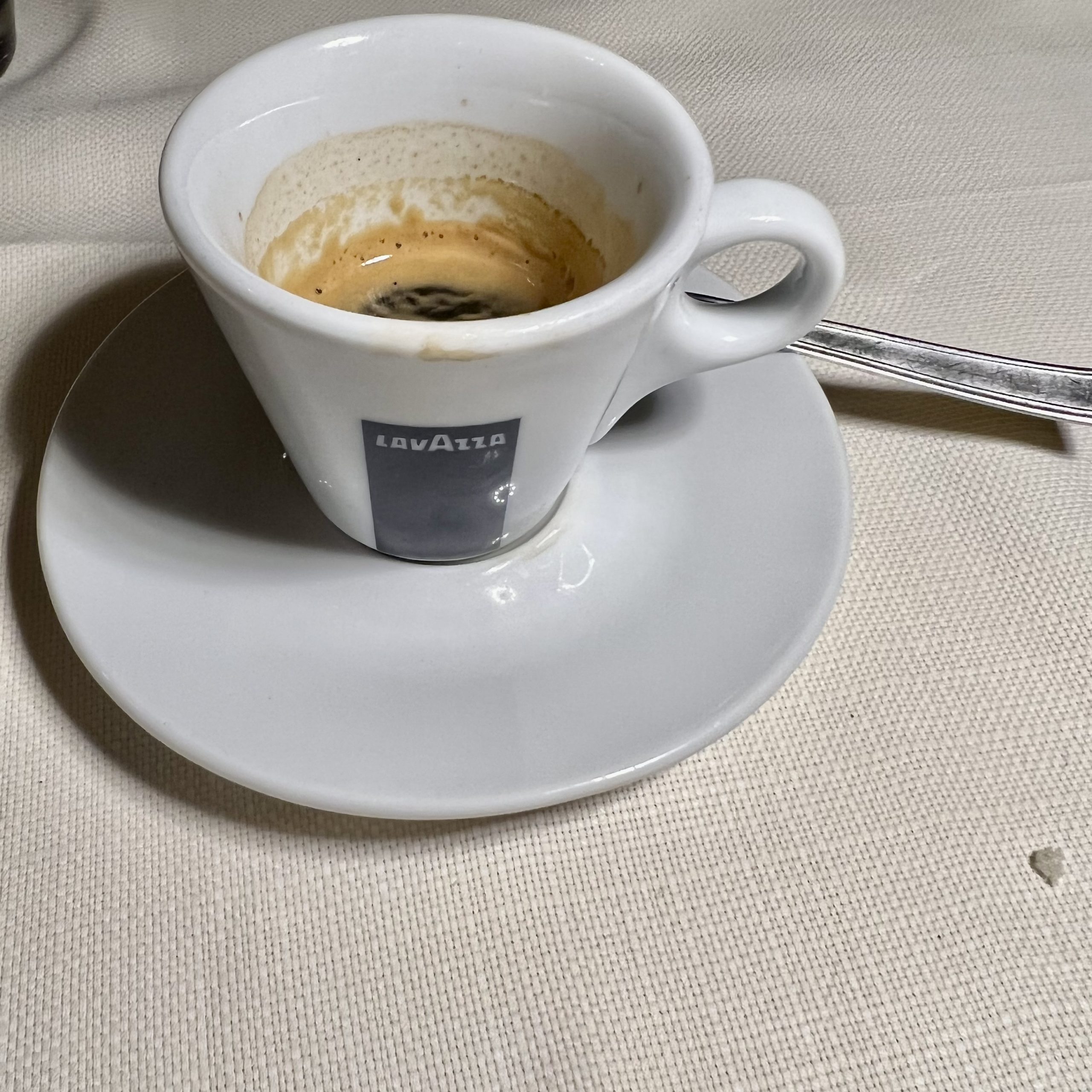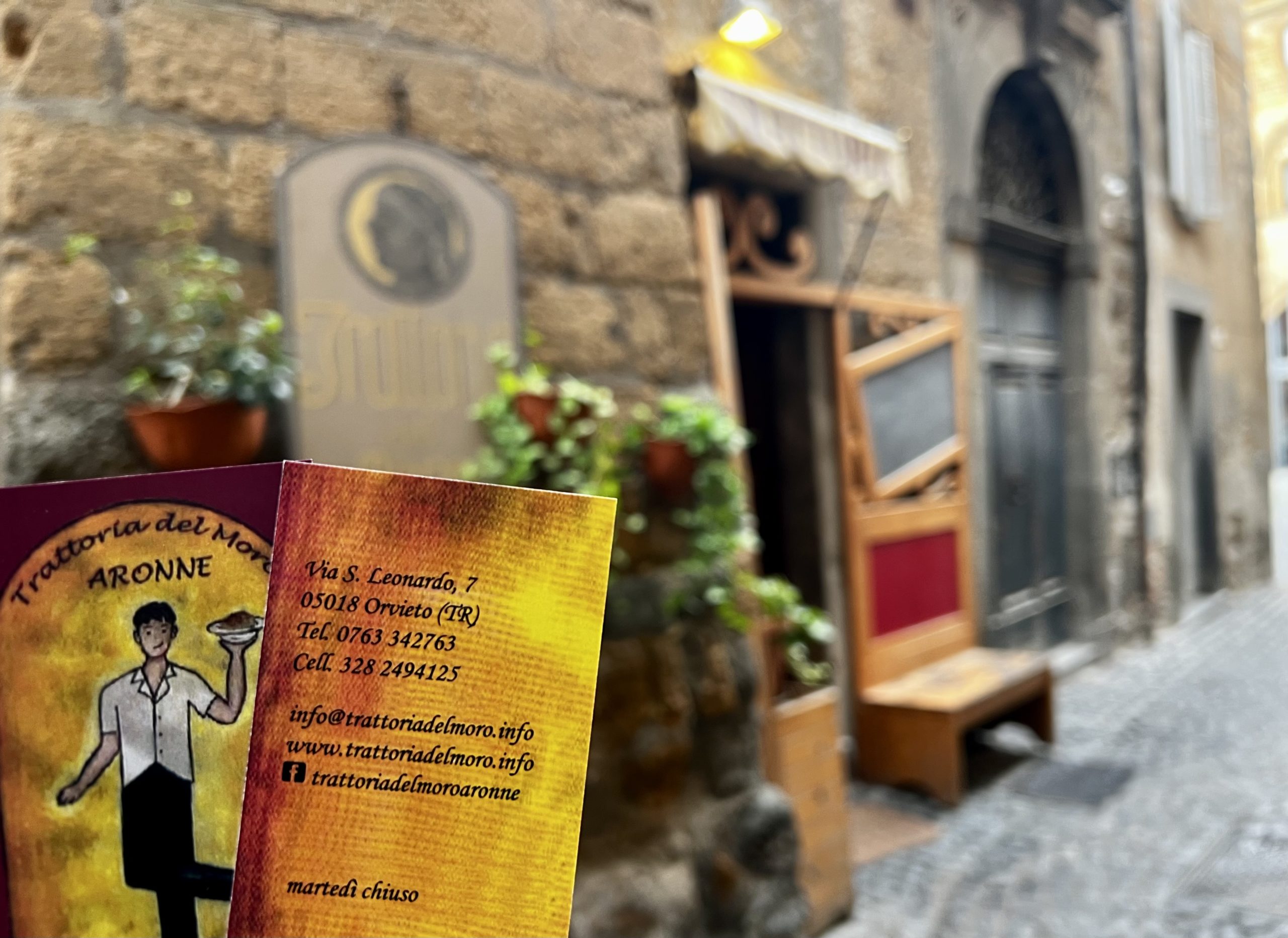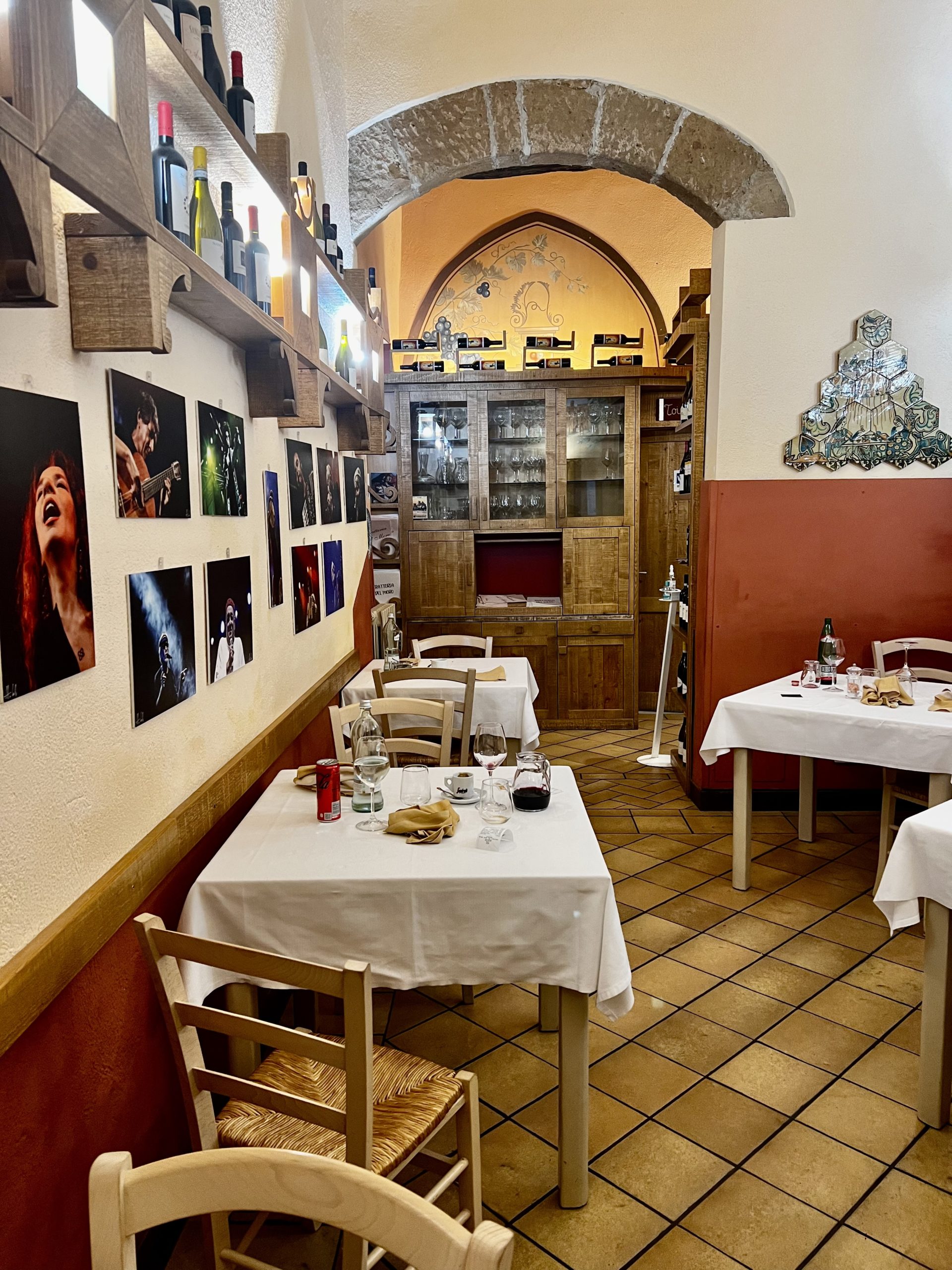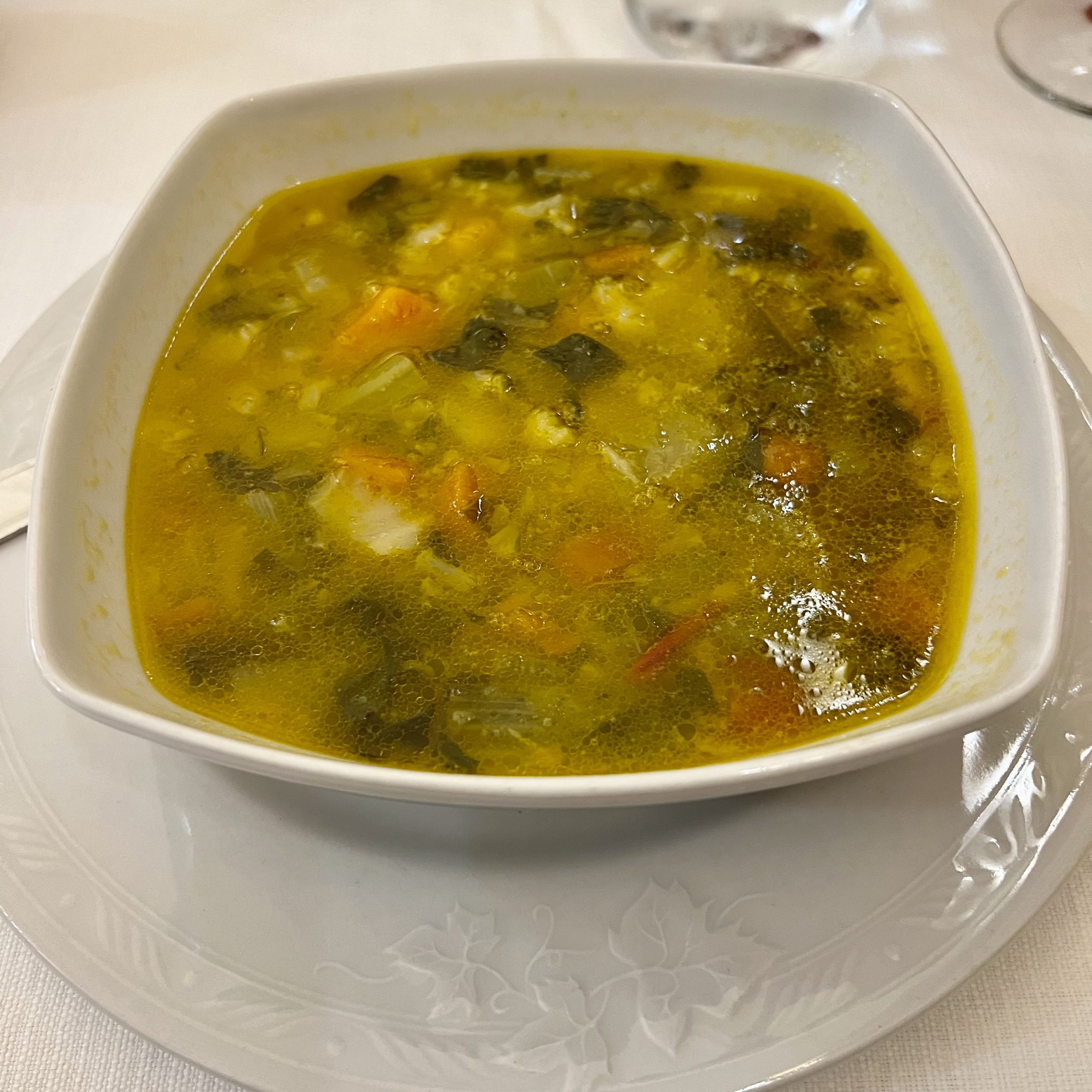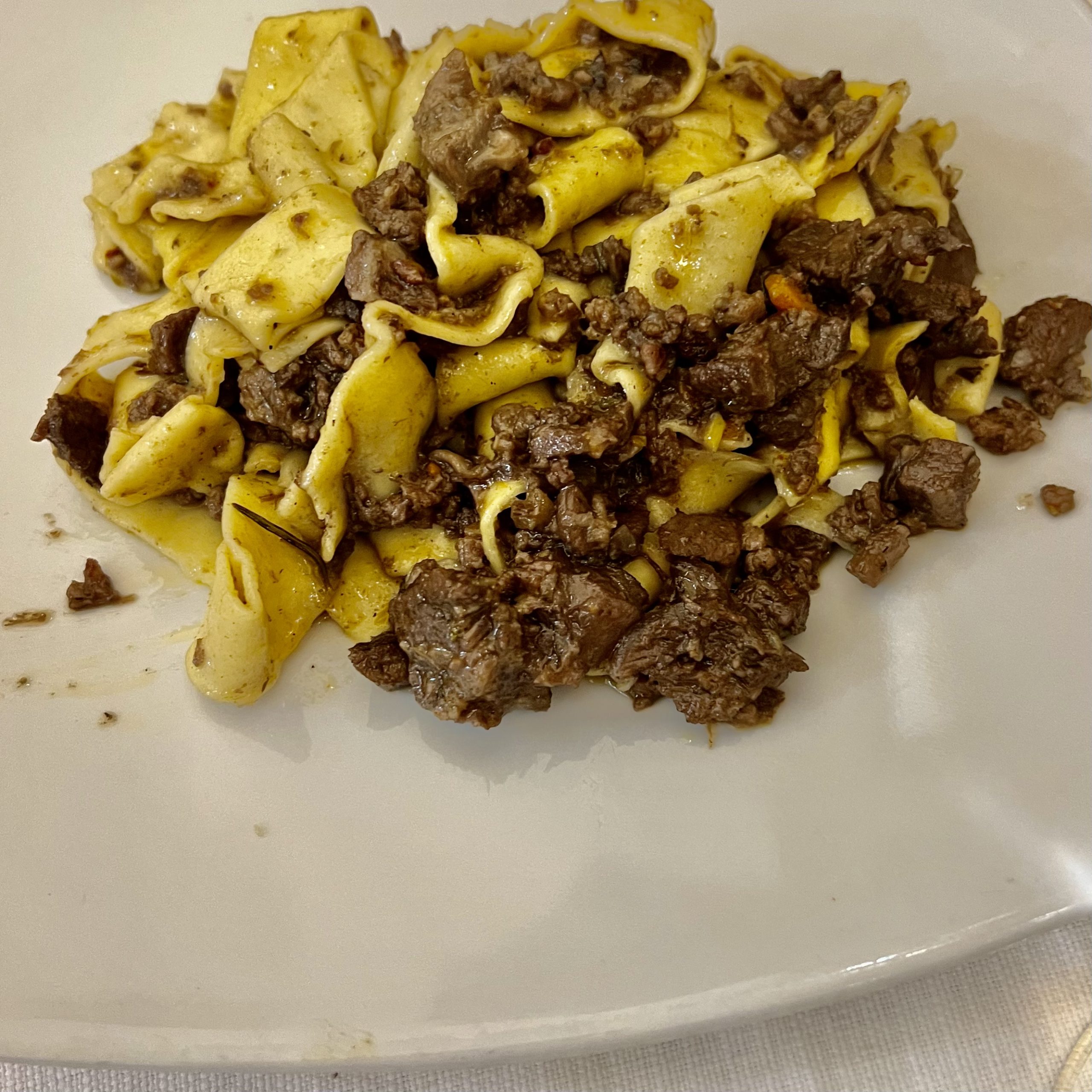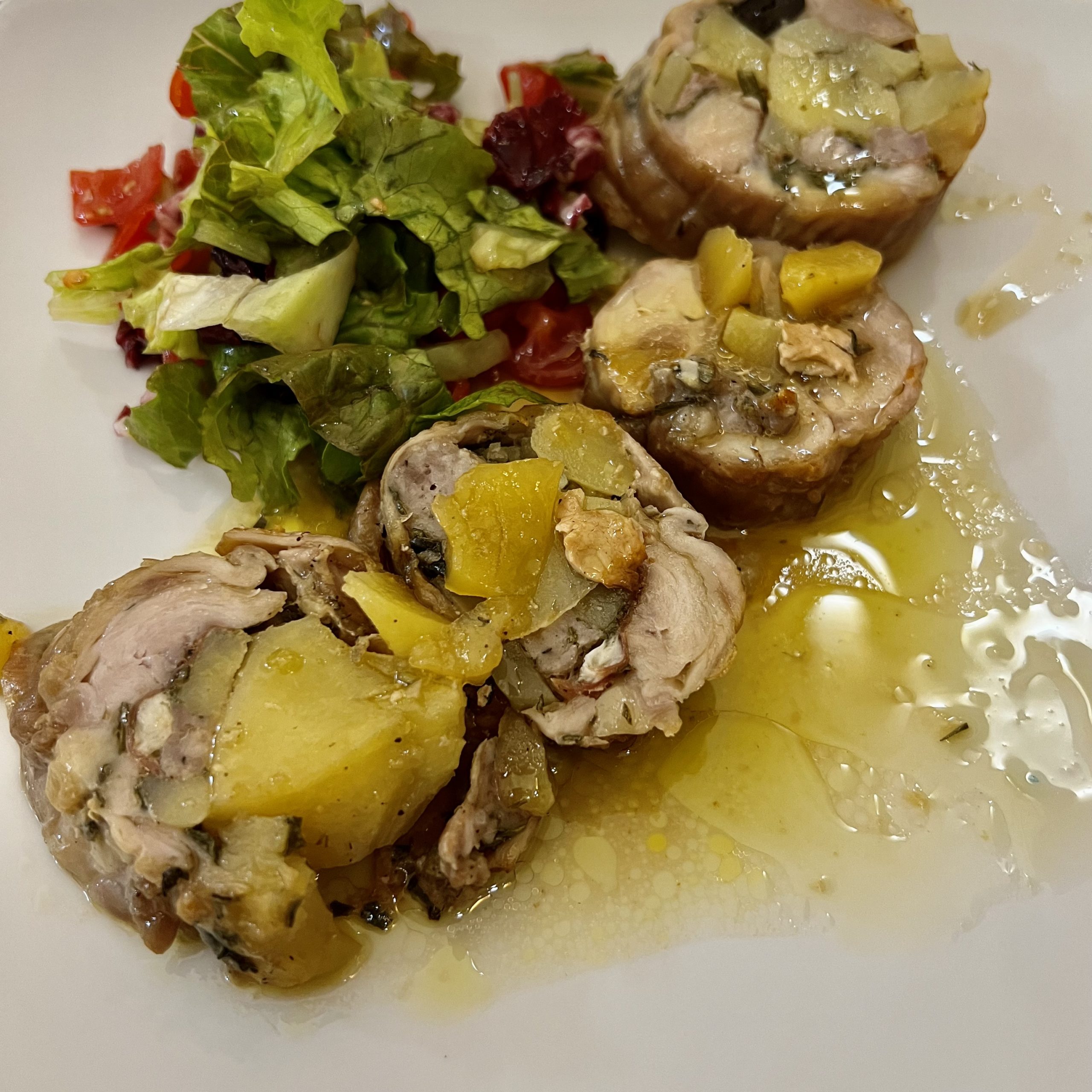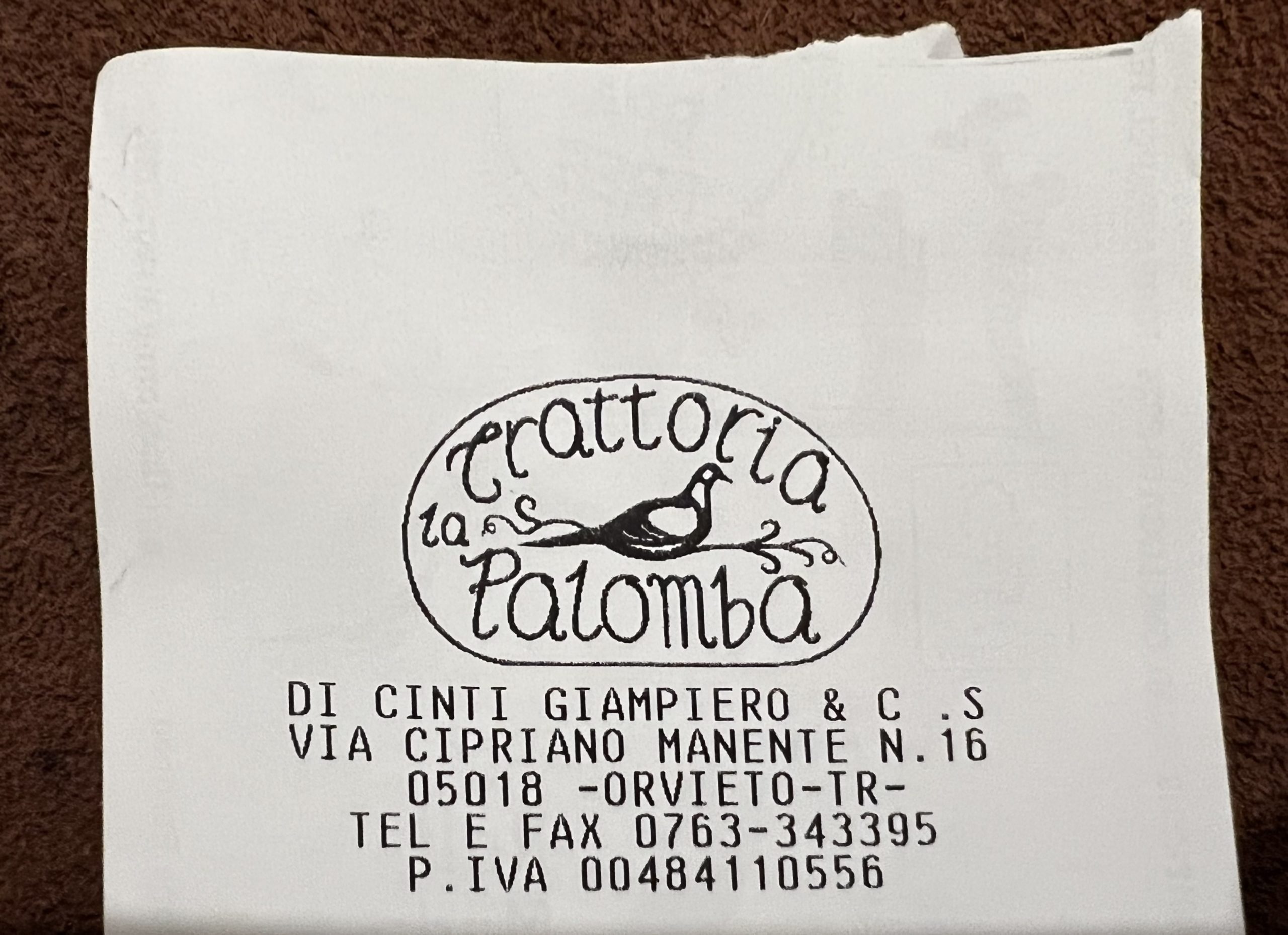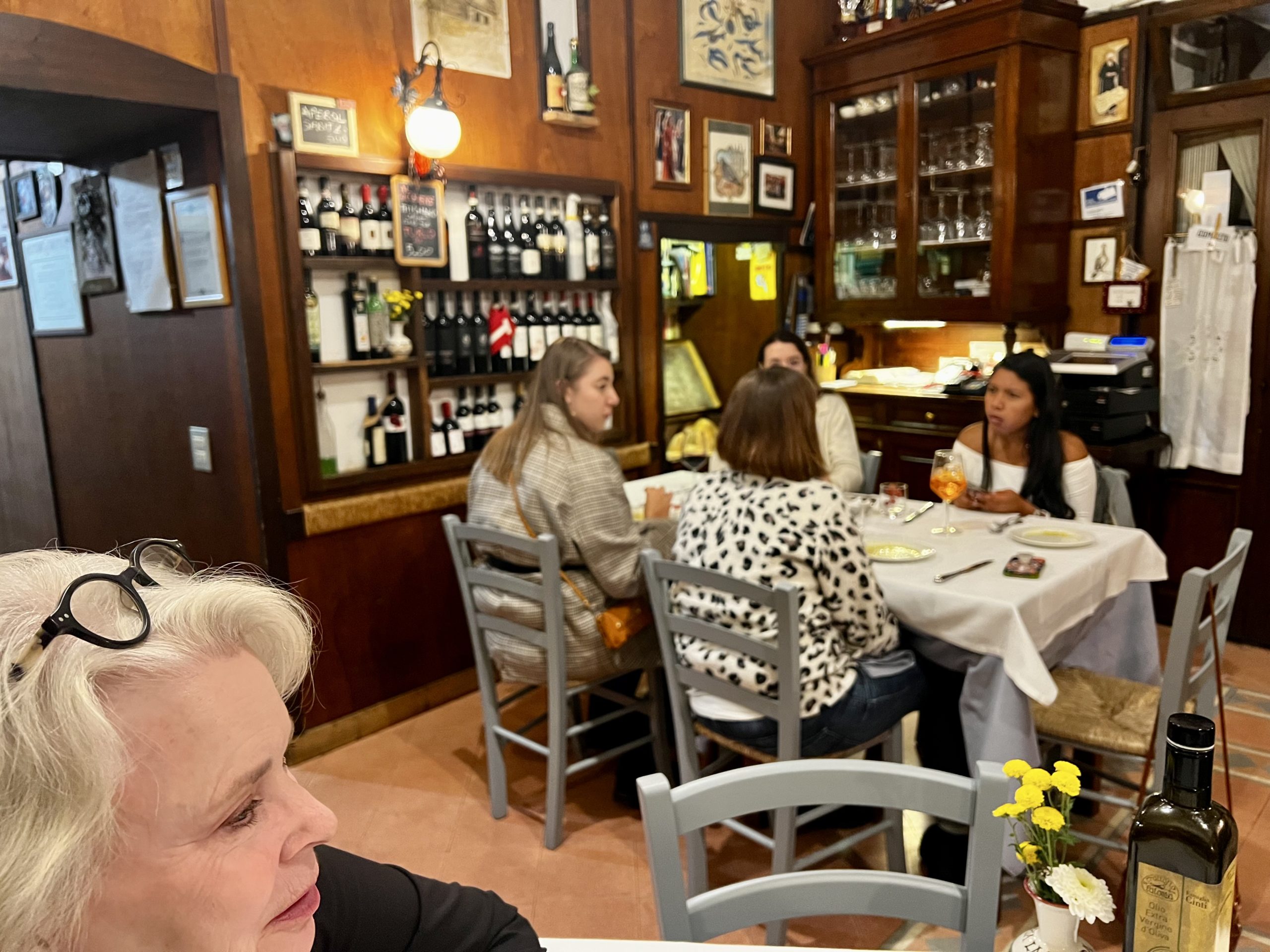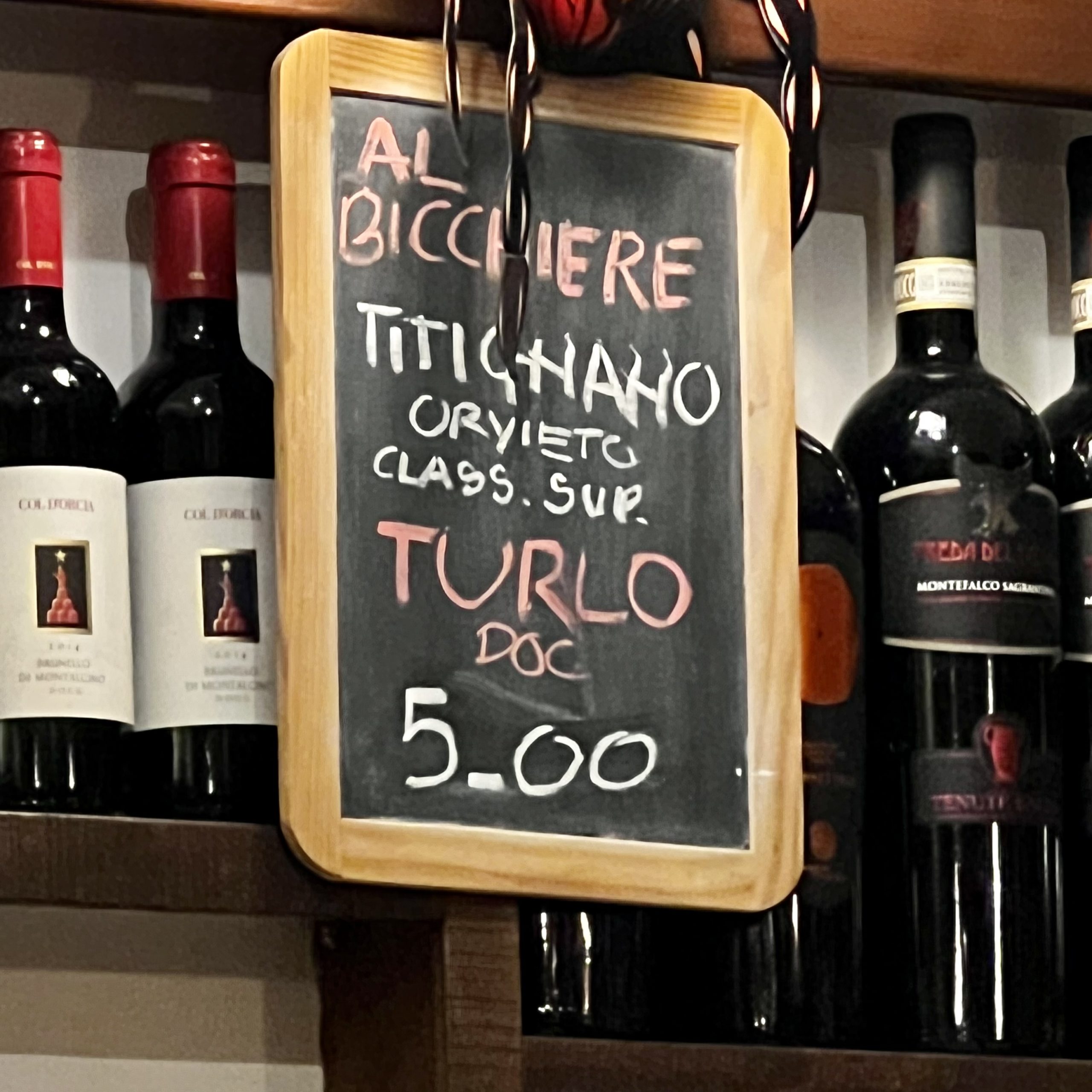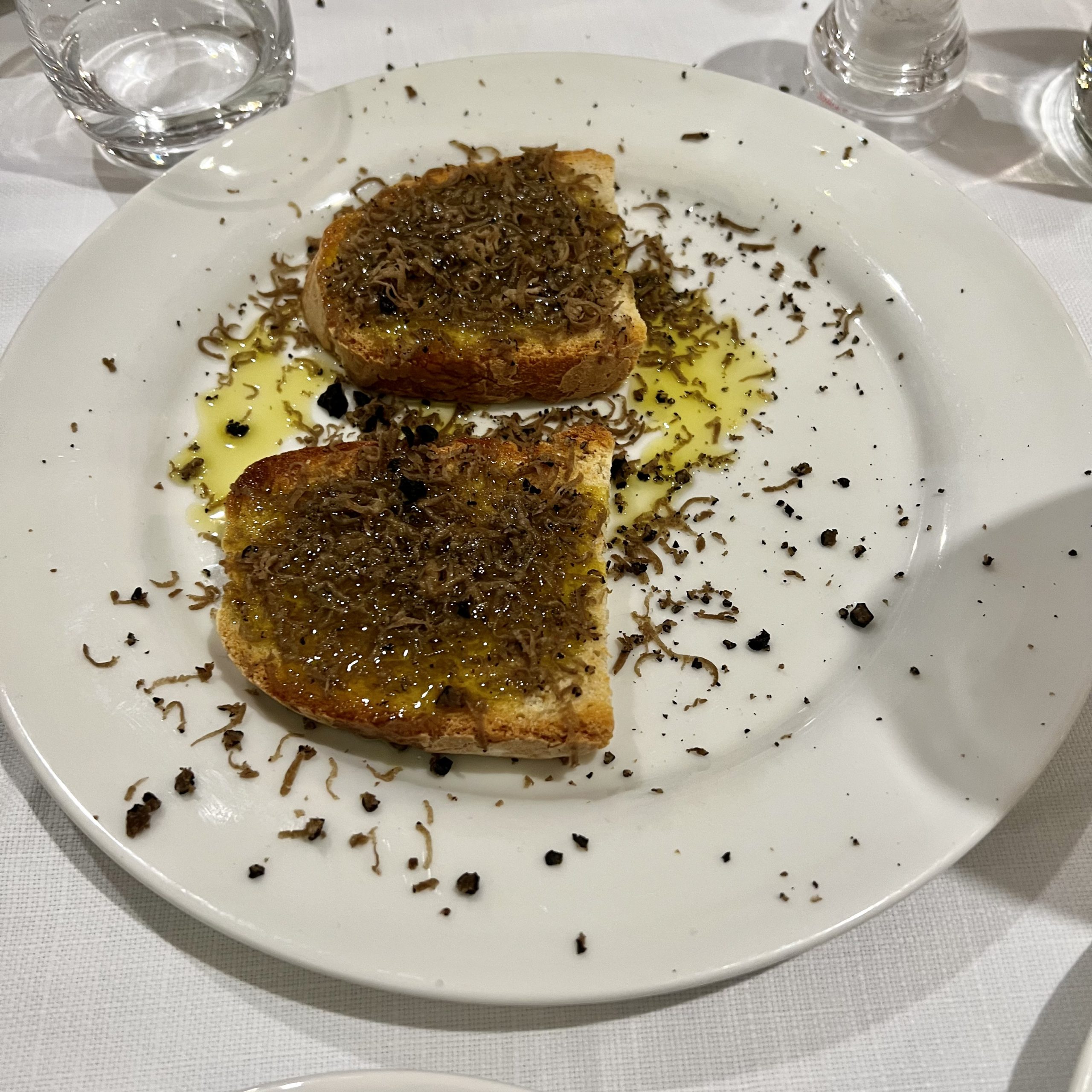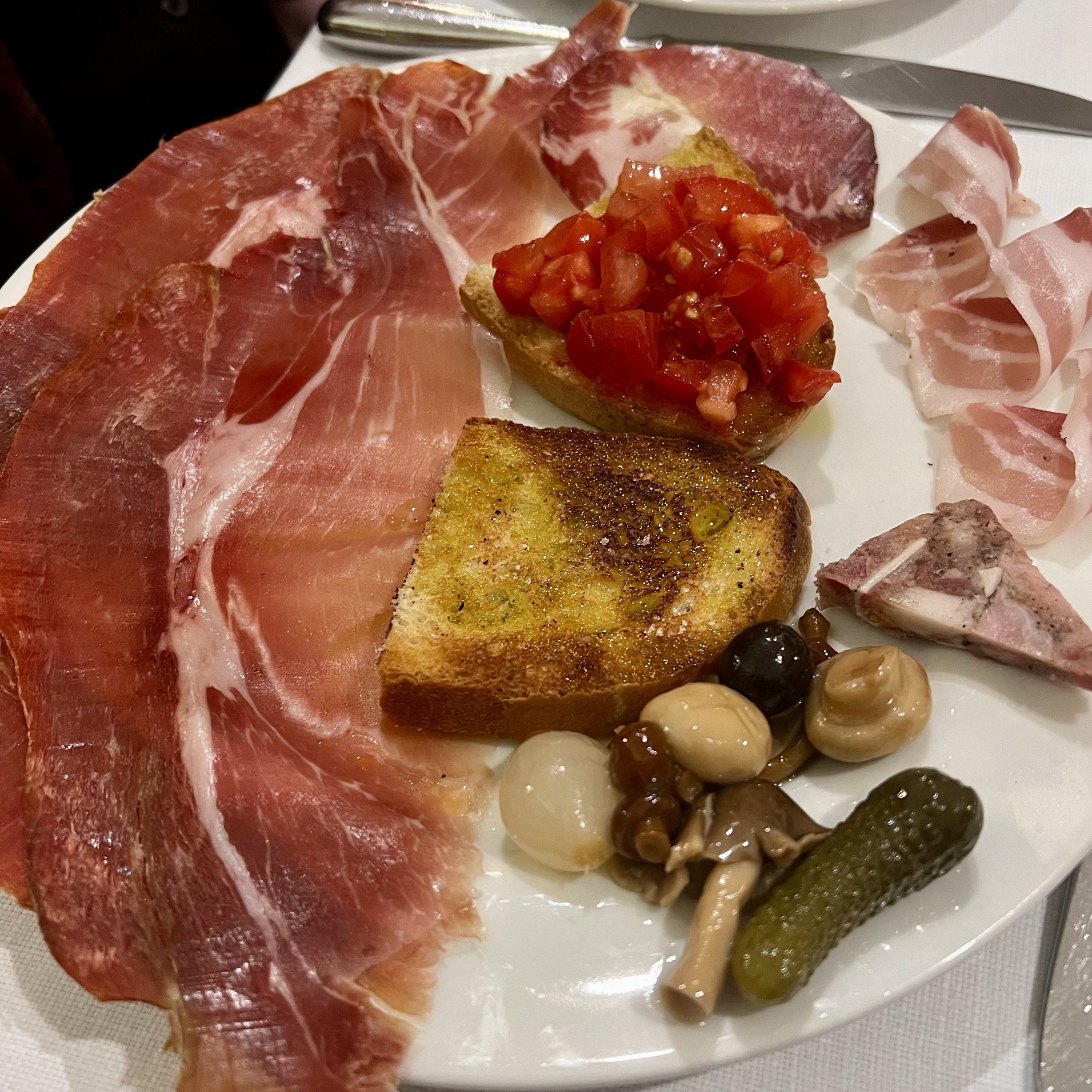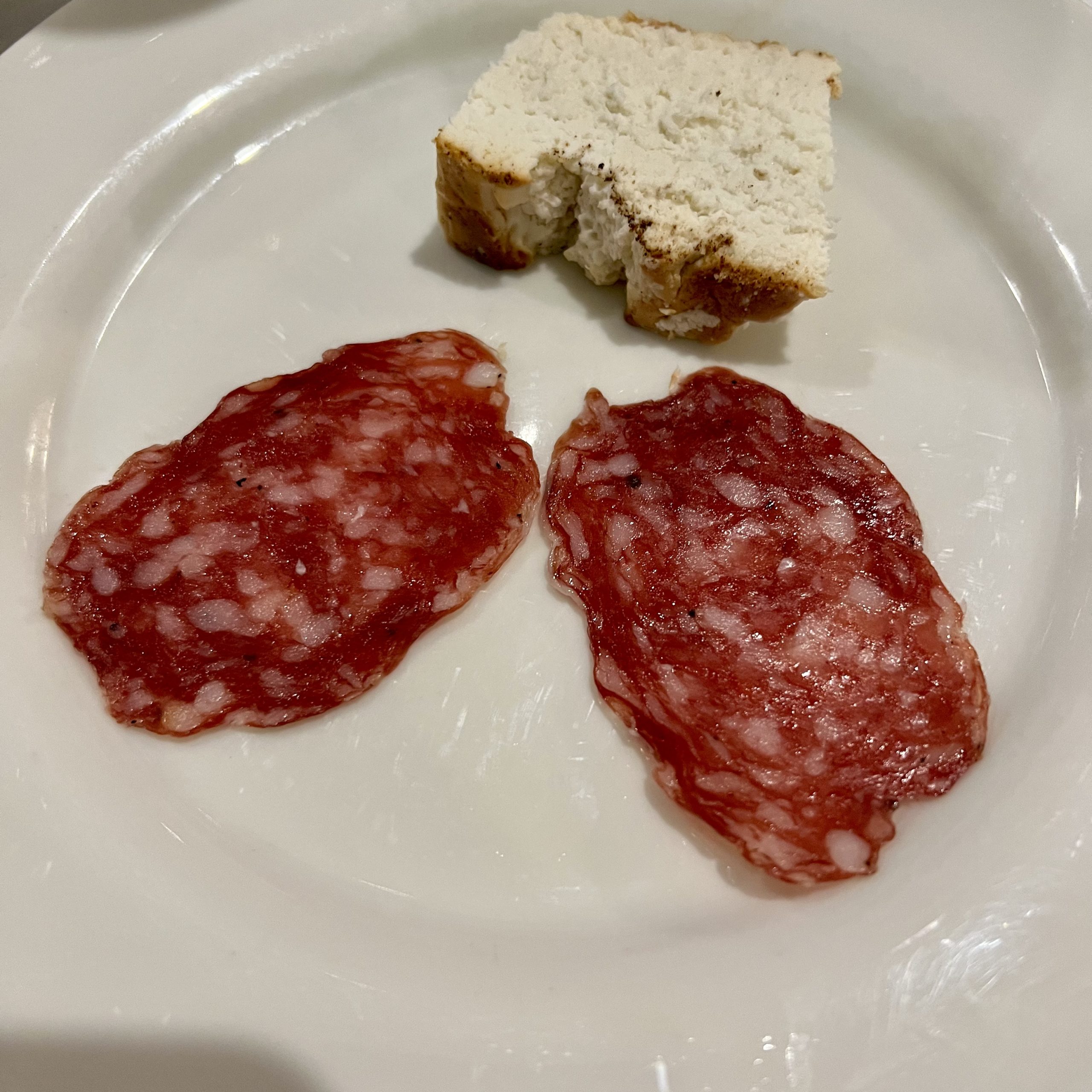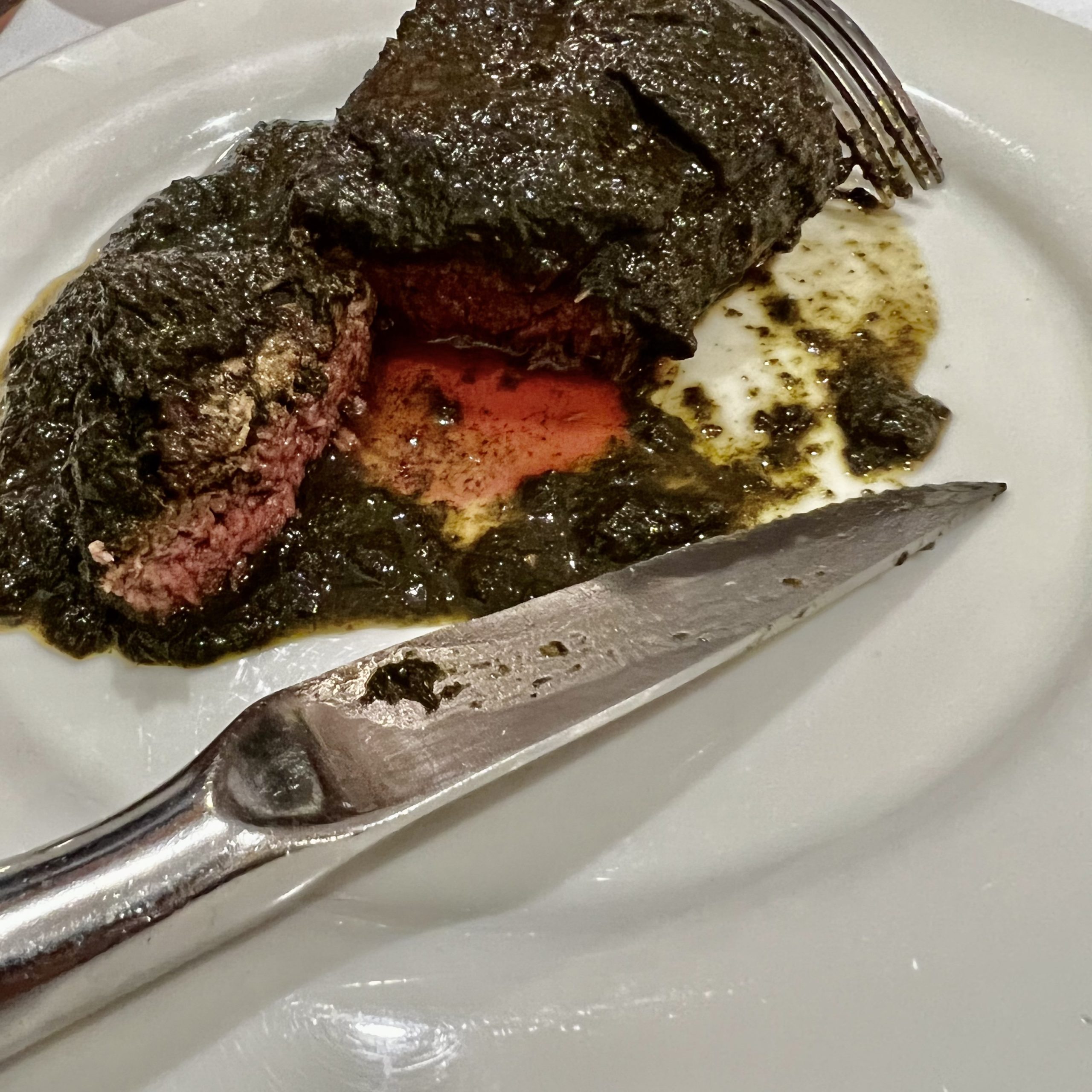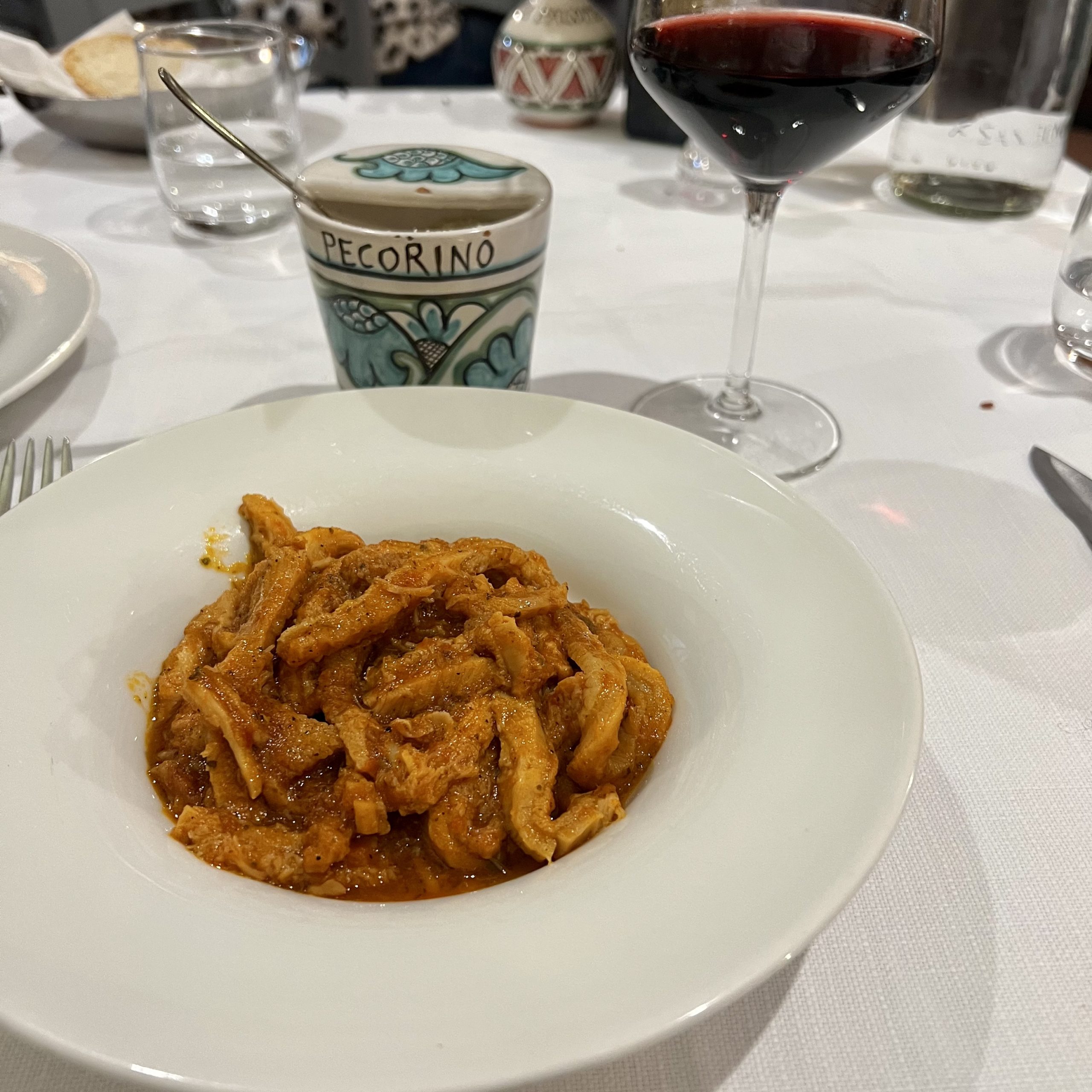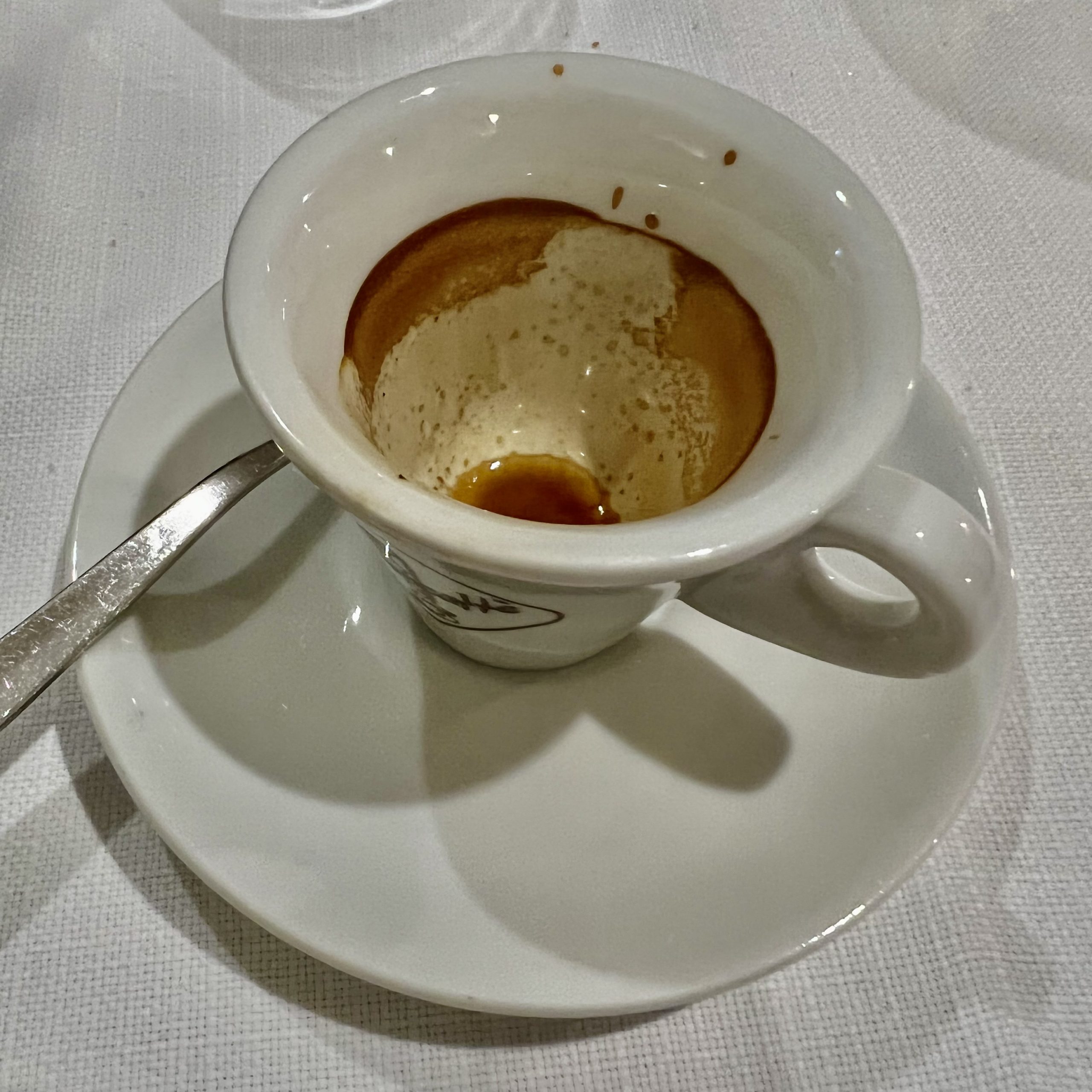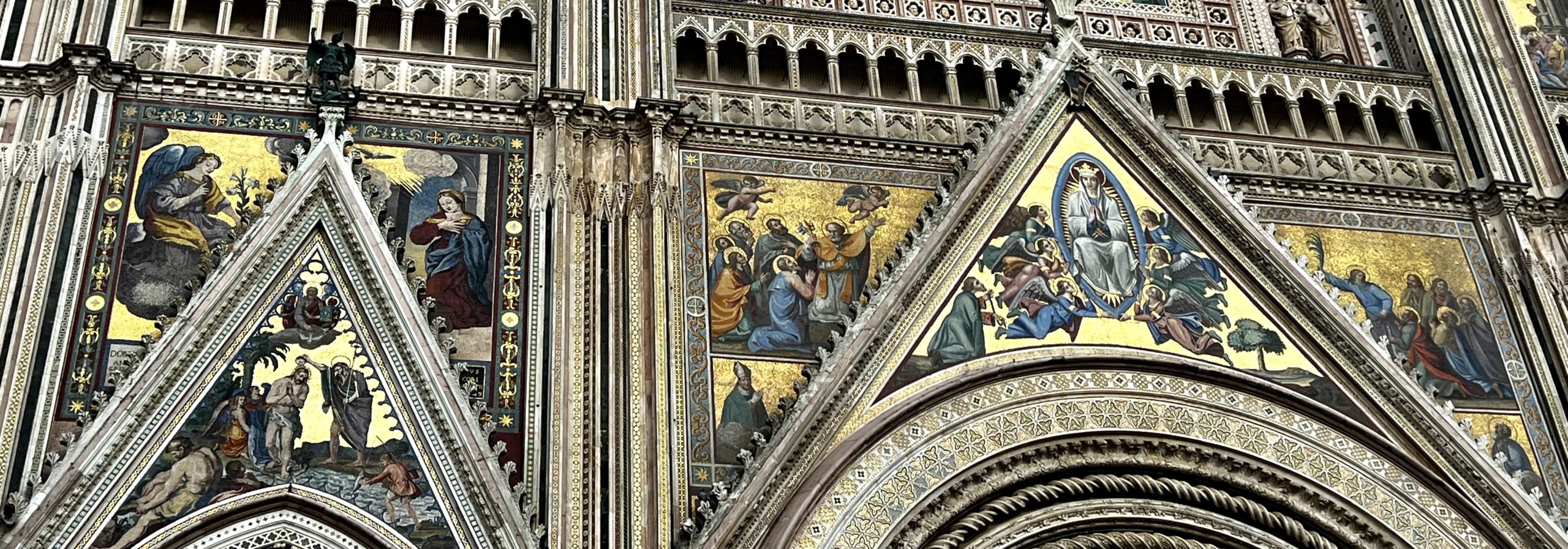02-05 November 2022
It has been more than twenty years since we visited Orvieto. We can’t wait that long for our next visit, age being one reason. But the other is that Orvieto is a delightful place and is in a central location for many day trips to sites in Umbria and Tuscany. Our friends Kirk and Adria from Oakland spent a year here when their children were in high school, and it is easy to imagine doing the same.
Orvieto rises dramatically out of the landscape, perched on top of vertical volcanic tuff cliffs that have been fortified multiple times over the centuries. The Etruscans got here first, but a recent discovery suggests Orvieto had Celtic origins. And, of course, the Roman Empire soon took charge. Then the Goths, Lombards, etc. Orvieto was strategically important, controlling the road between Florence and Rome.
Multiple popes took up residency in Orvieto, some for several years, and they were instrumental in many improvements, including new palaces, churches, and a dramatic water well. In the 13th century the city population was about 30,000–about 10,000 more than today. Thomas Aquinas taught here before he was called to Rome to serve as the papal theologian. Orvieto remained under papal rule until the unification of Italy in 1860.
The streets are definitely medieval. They wind through the city opening up to an occasional piazza. Walking across the city takes only twenty minutes. This time of year Orvieto is pretty calm. We did not experience the bustling passeggiato we saw on our last visit. The streets were quiet and used primarily by locals walking their babies or dogs, chatting with one another, and going to or from their daily shopping. We heard American voices that mentioned their cruise. Orvieto is close to Rome and undoubtedly makes a good day visit for those in Rome for a few days.
Although Orvieto has many things to brag about, Robert did not see any desserts that were invented here (as in Treviso). However, we did come during tartufo (truffle) season as evidenced by restaurant menus. We tried black truffles on eggs, pasta, and steak.
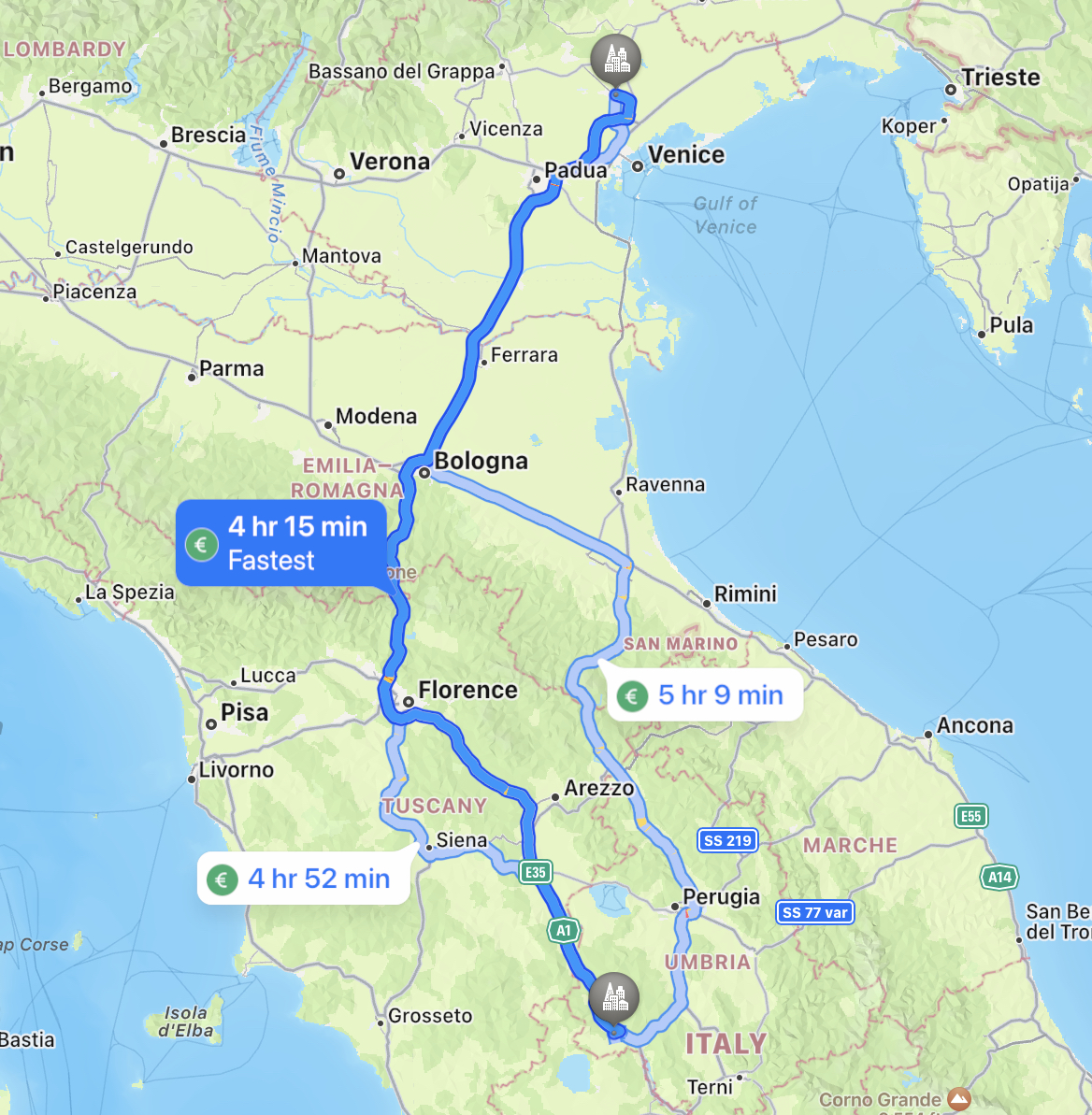
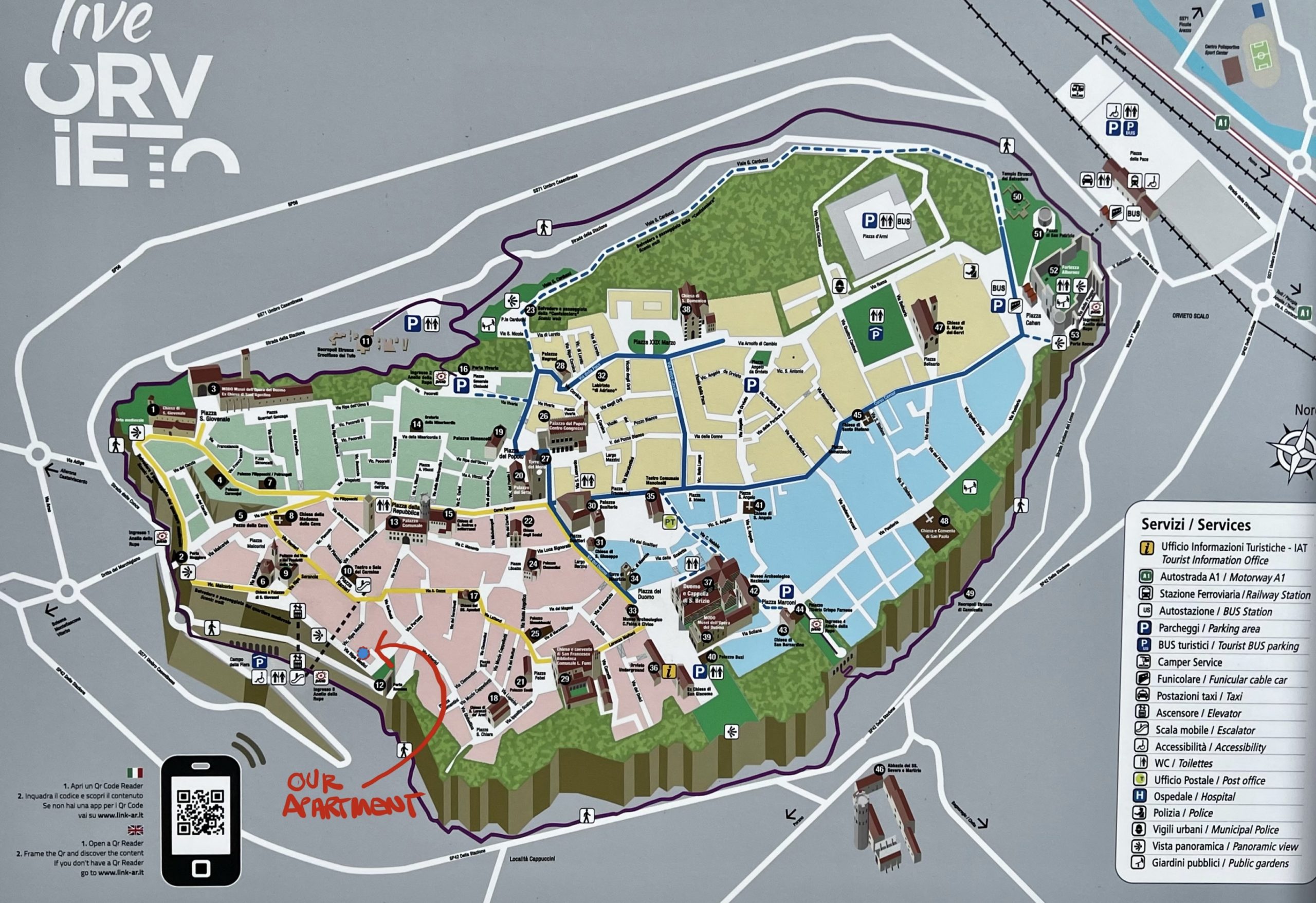
Apartment
Our apartment (thanks to Bonnie again!) was beautifully located just outside the core of the city but still within a pedestrian zone. The view out the front door and over a low city wall to the green Umbrian countryside was stunning. The owners met us at our car, helped carry our luggage, and then rode with Robert to a parking garage below the city walls. An elevator a short distance from the apartment provided easy access to the parking. We wish all our stays were as convenient as this one.
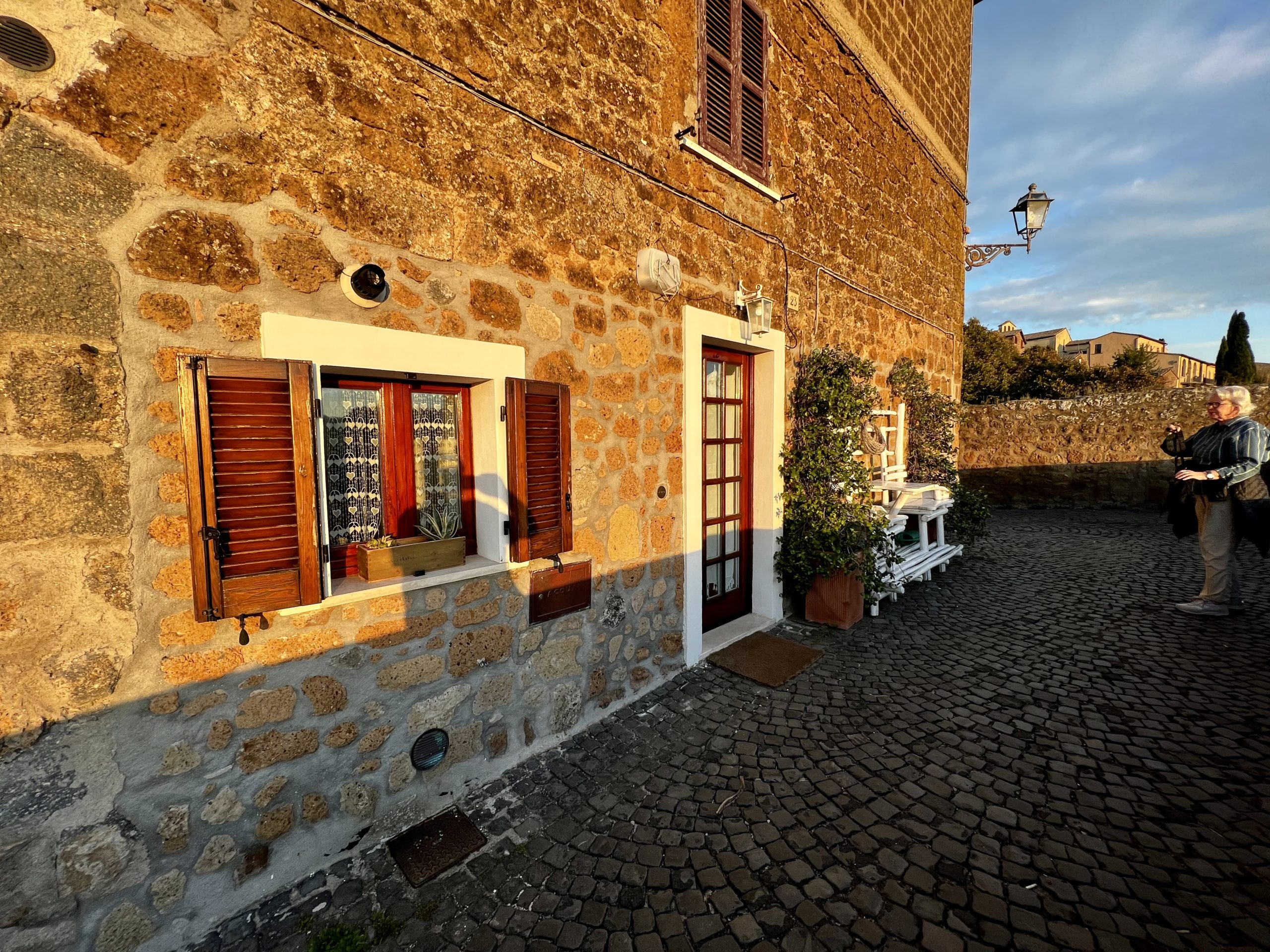
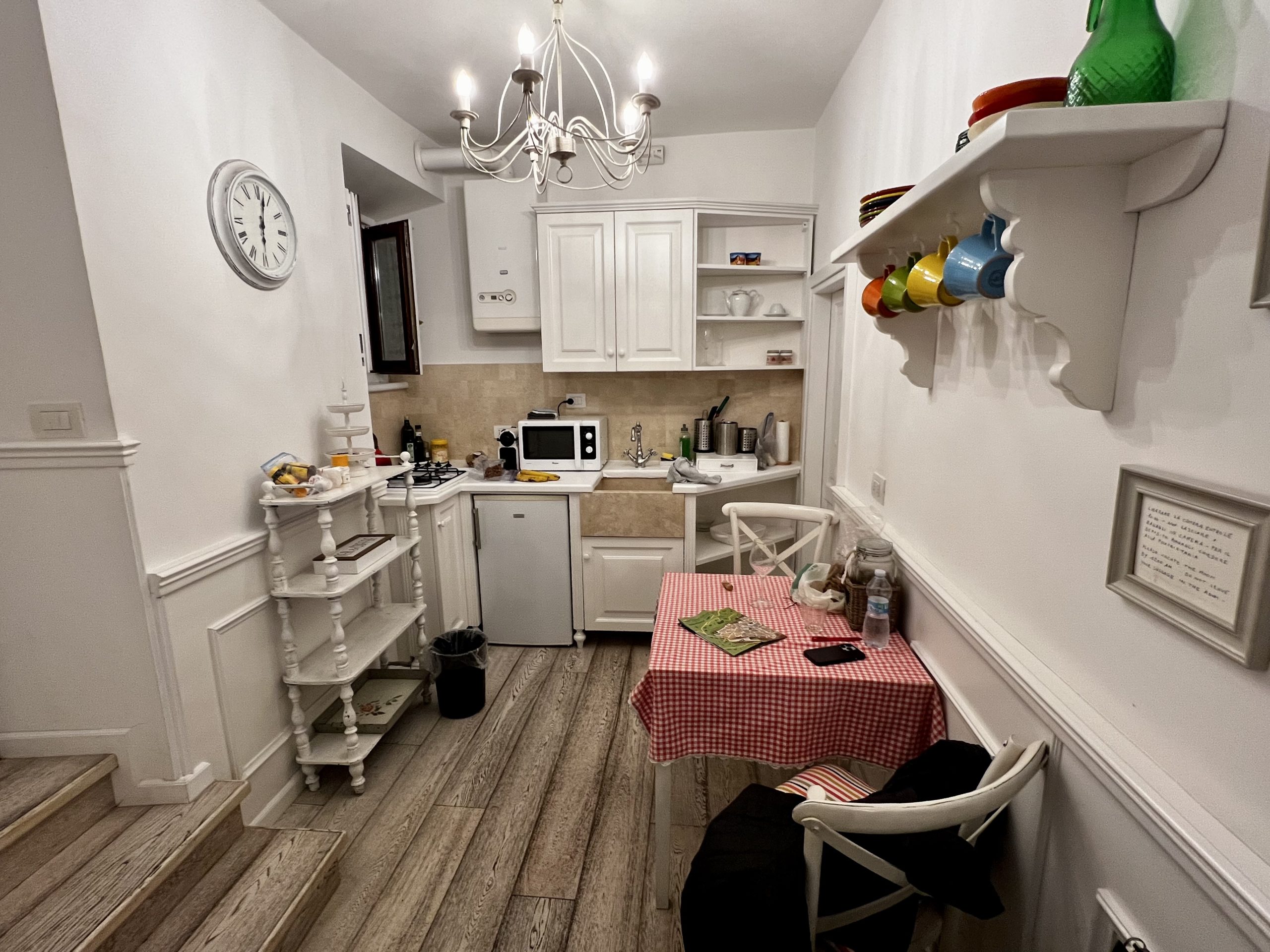
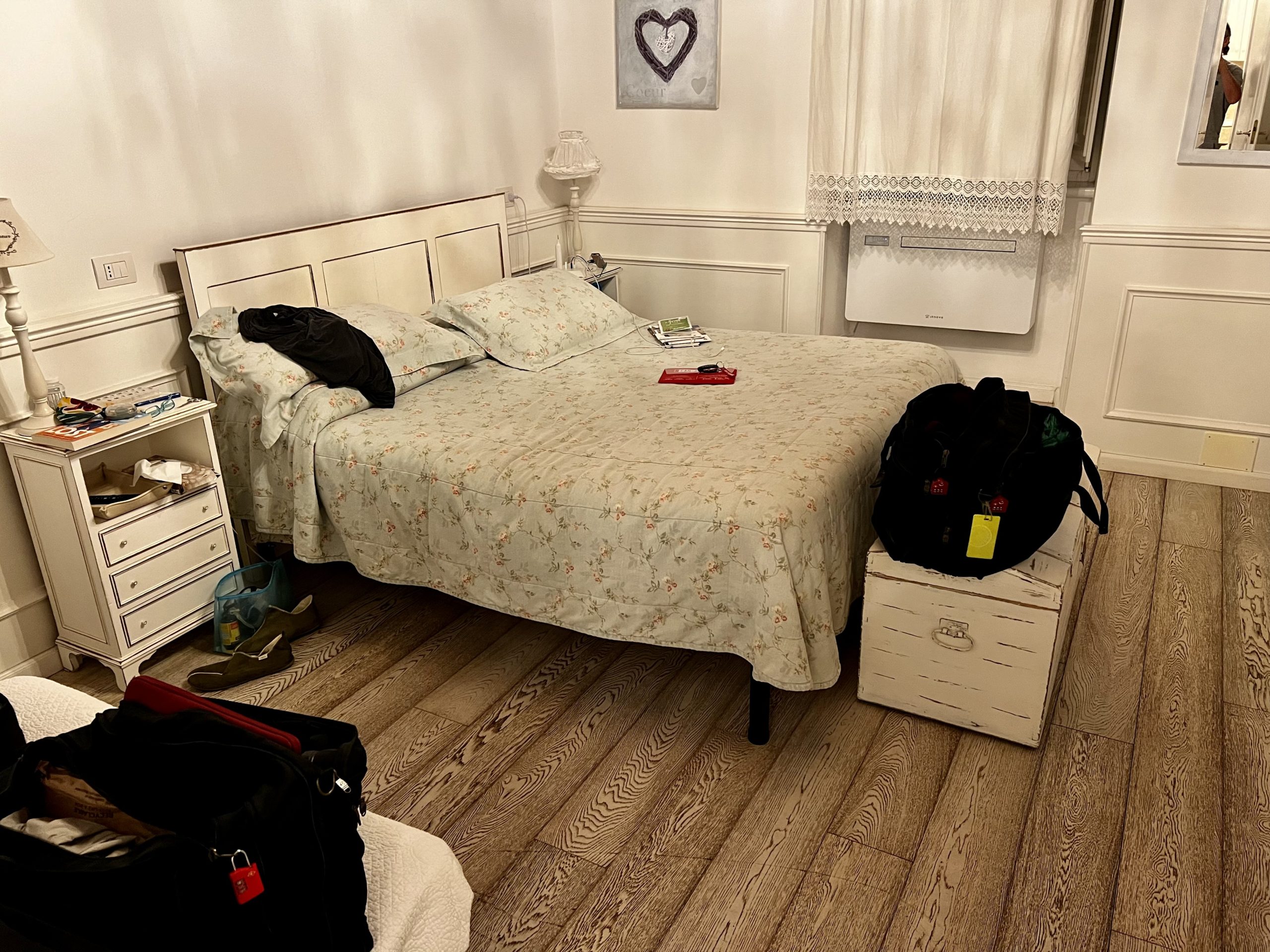
Observations
Lamps
We are seeing these all over Europe, especially at restaurants. Sturdy, rechargeable, and very useful. And, yes, you can order them on Amazon.
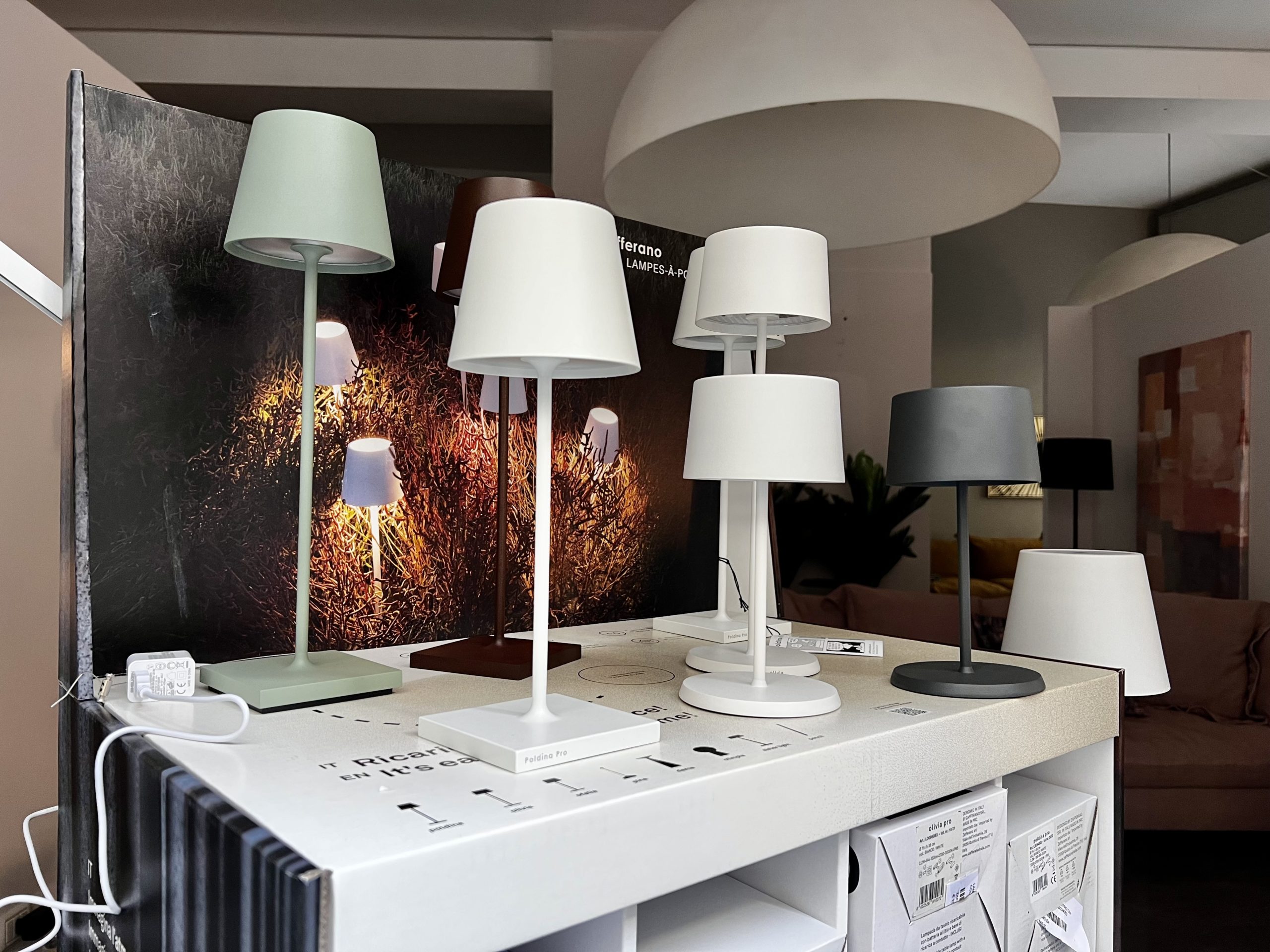
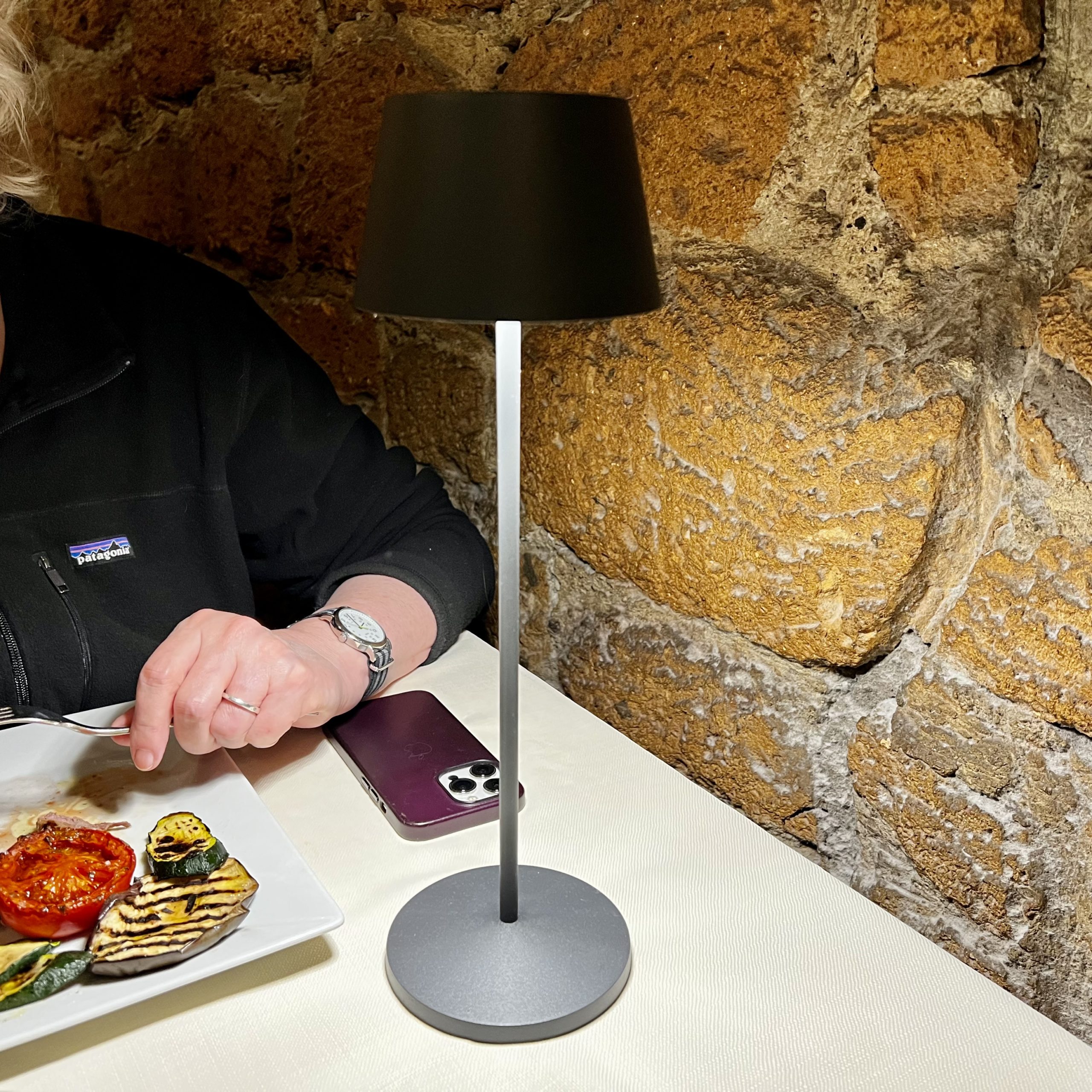
Cane (Dogs)
Apparently Italians adopted a lot of cane during Covid. Unfortunately, no one seems to have trained Italians on how to train their dogs. The dogs have not acquired the social skills needed to be around other dogs. We hear a lot barking and see a lot strained leashes.
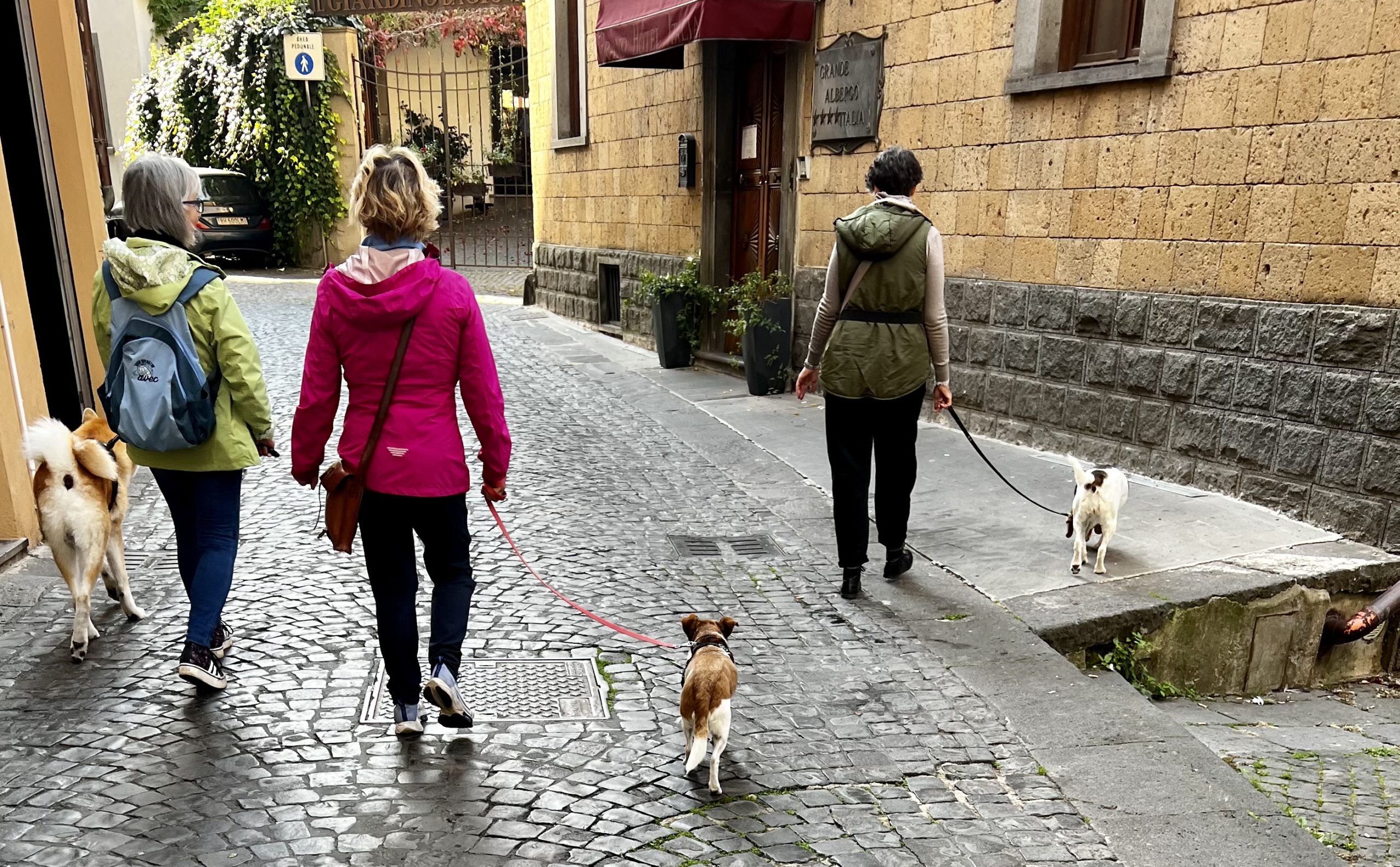
Il Duomo
The Duomo is undoubtedly the crown jewel of Orvieto. The elaborately decorated facade is extraordinary. Perhaps the best in Italy. The cathedral was started in 1290, designed by an obscure monk-mason Fra’ Bevignate from Perugia. Subsequently, the architect and sculptor Lorenzo Maitani was commissioned to stabilize and design the mosaic facade (1308-1330). The interior is quite simple until you come across the Cappella Nova (chapel) filled with incredible frescos begun by Fra Angelico (circa 1445) and frescos fifty years later by Luca Signorelli. Signorelli is known for taking an artistic leap in painting nude figures, giving them robust and vivid bodies, as well a his technique of foreshortening. Michelangelo and Raphael are said to have been inspired by his work.
We arrived on our first day to see the facade illuminated by a brilliant sunset.
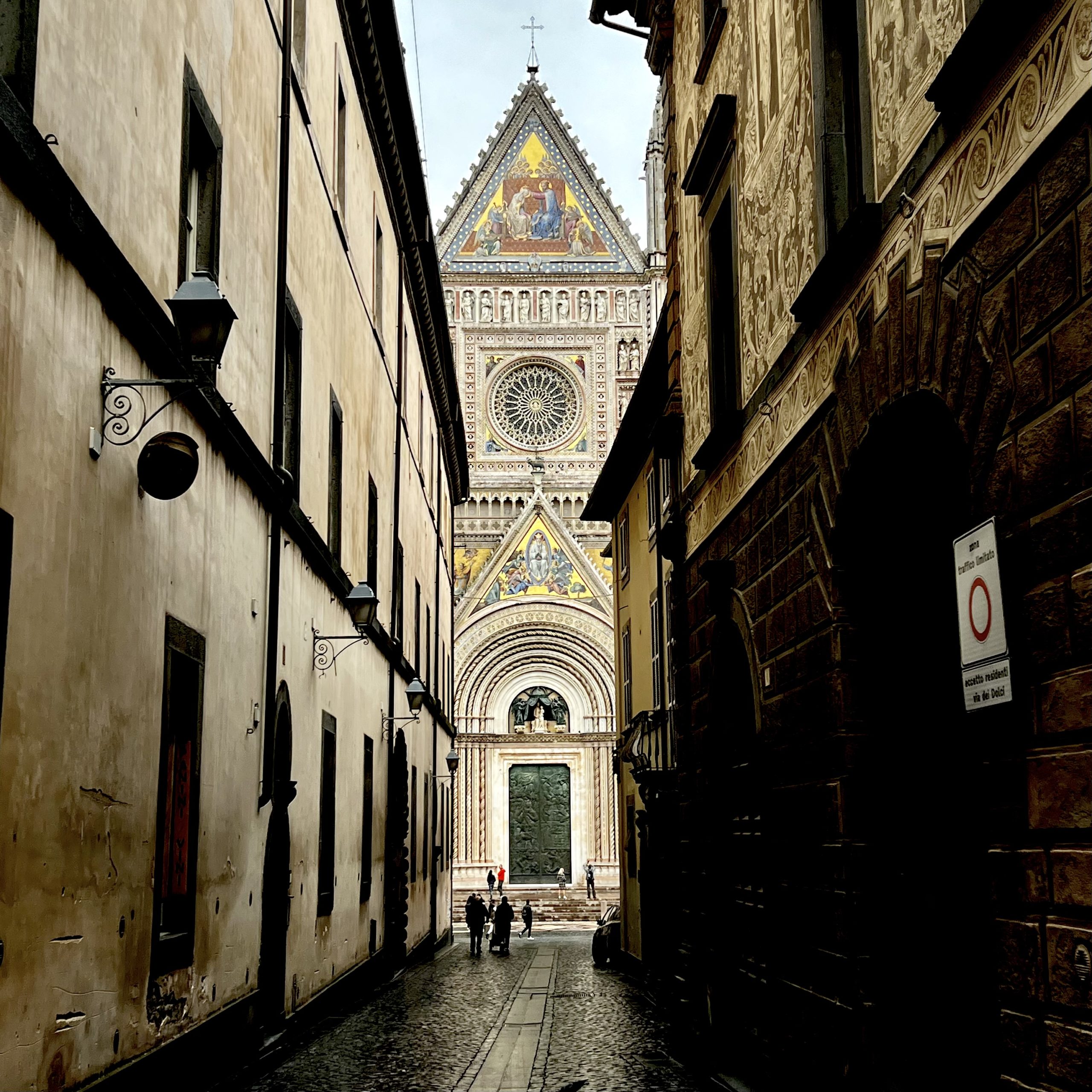
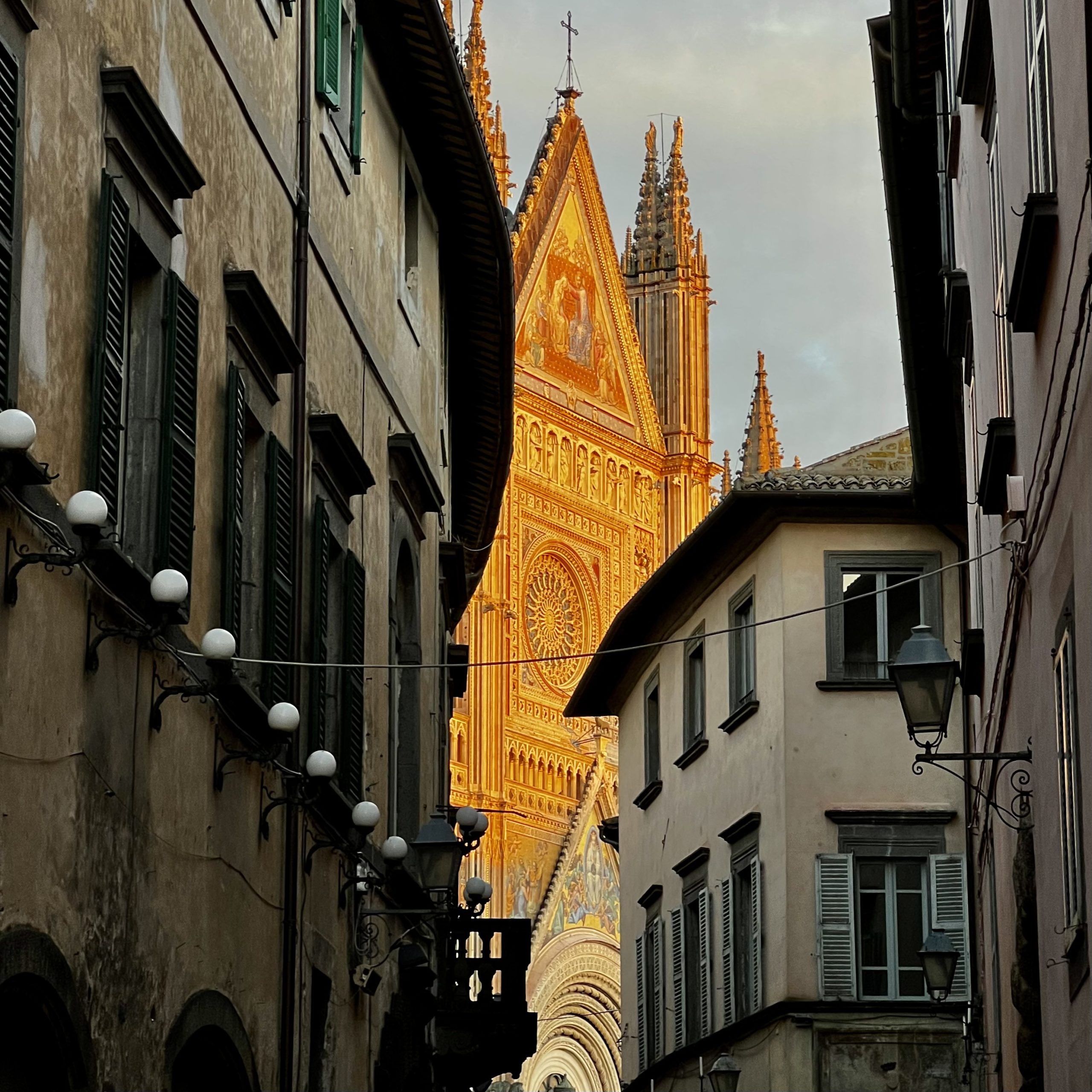
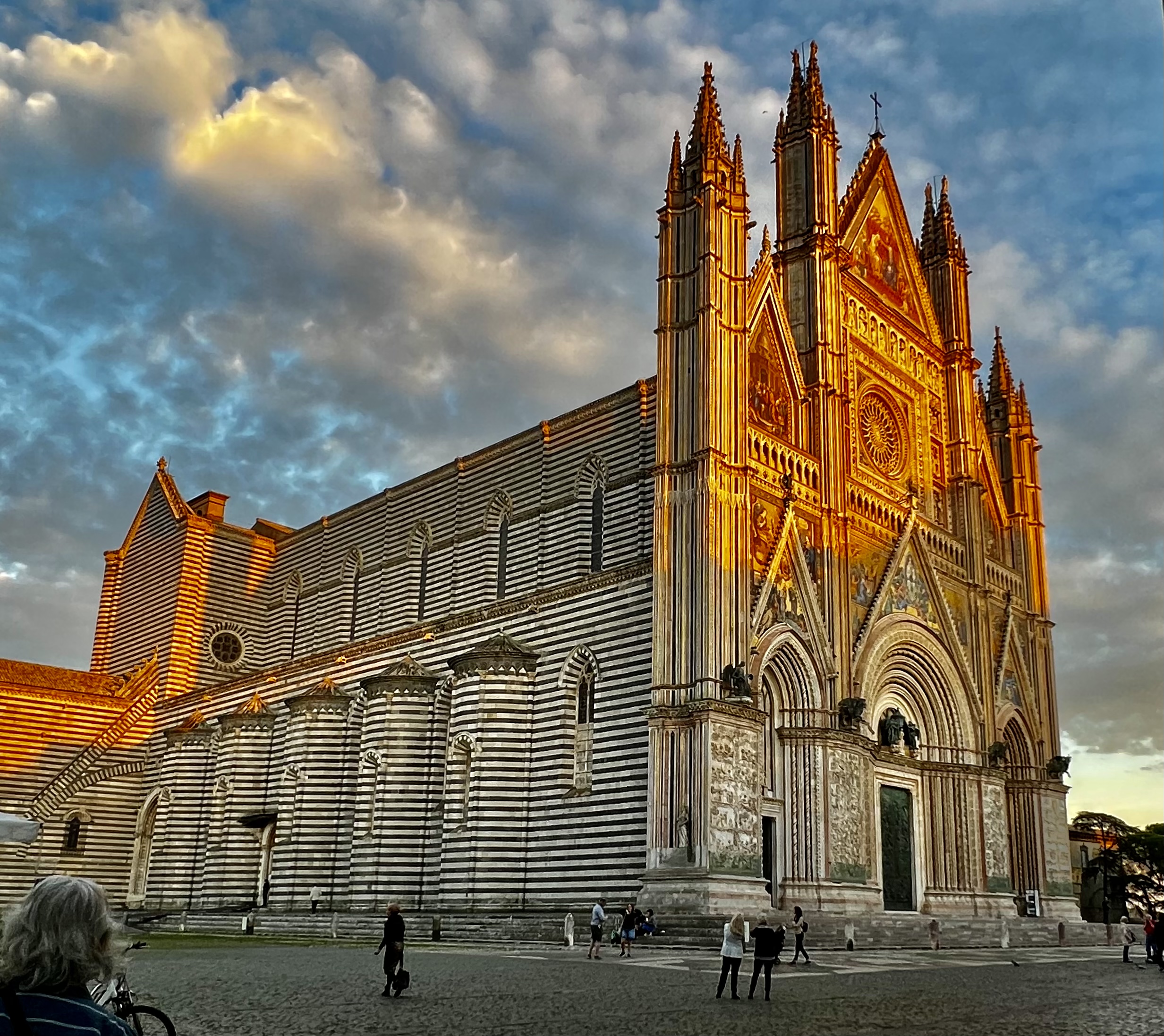
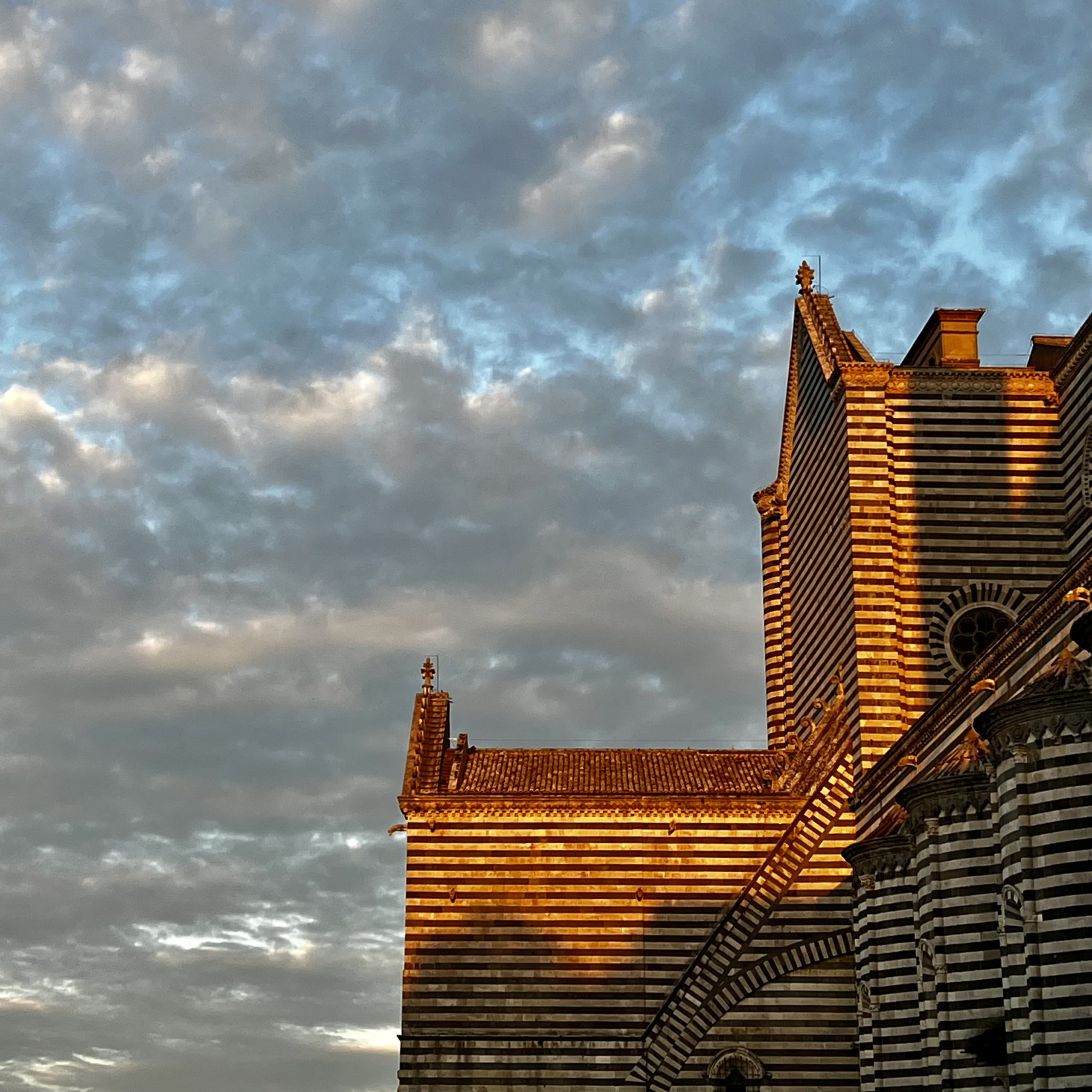
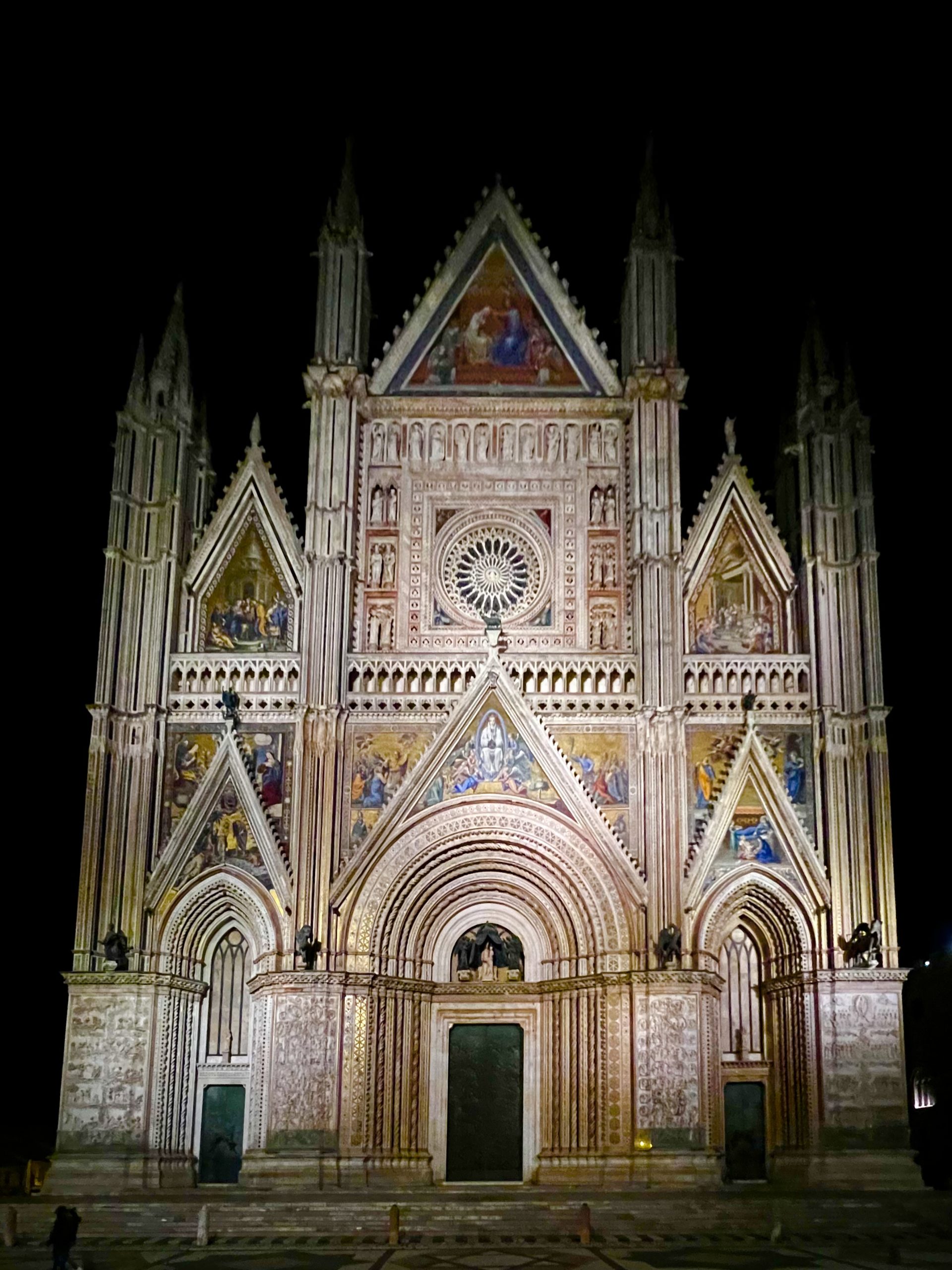
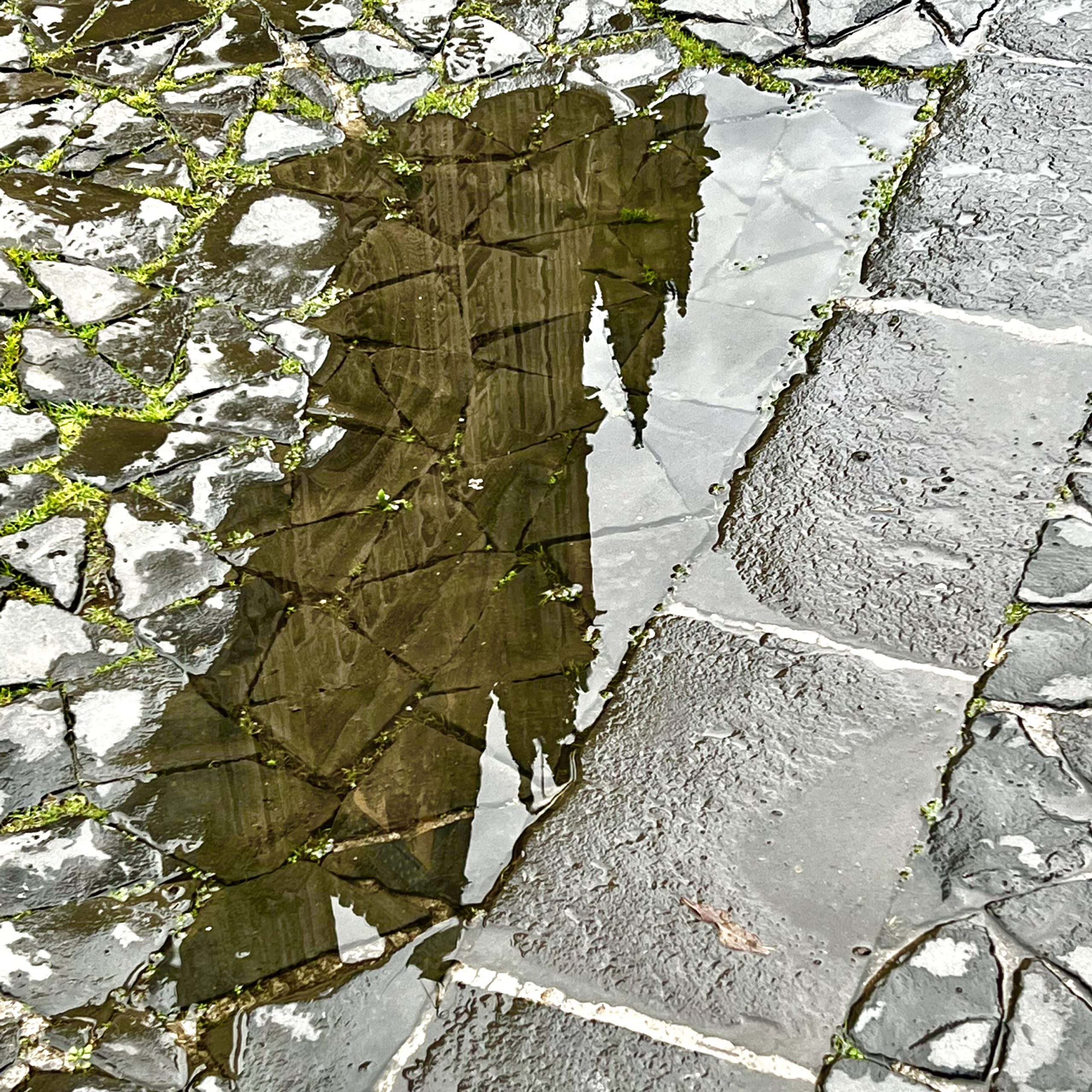
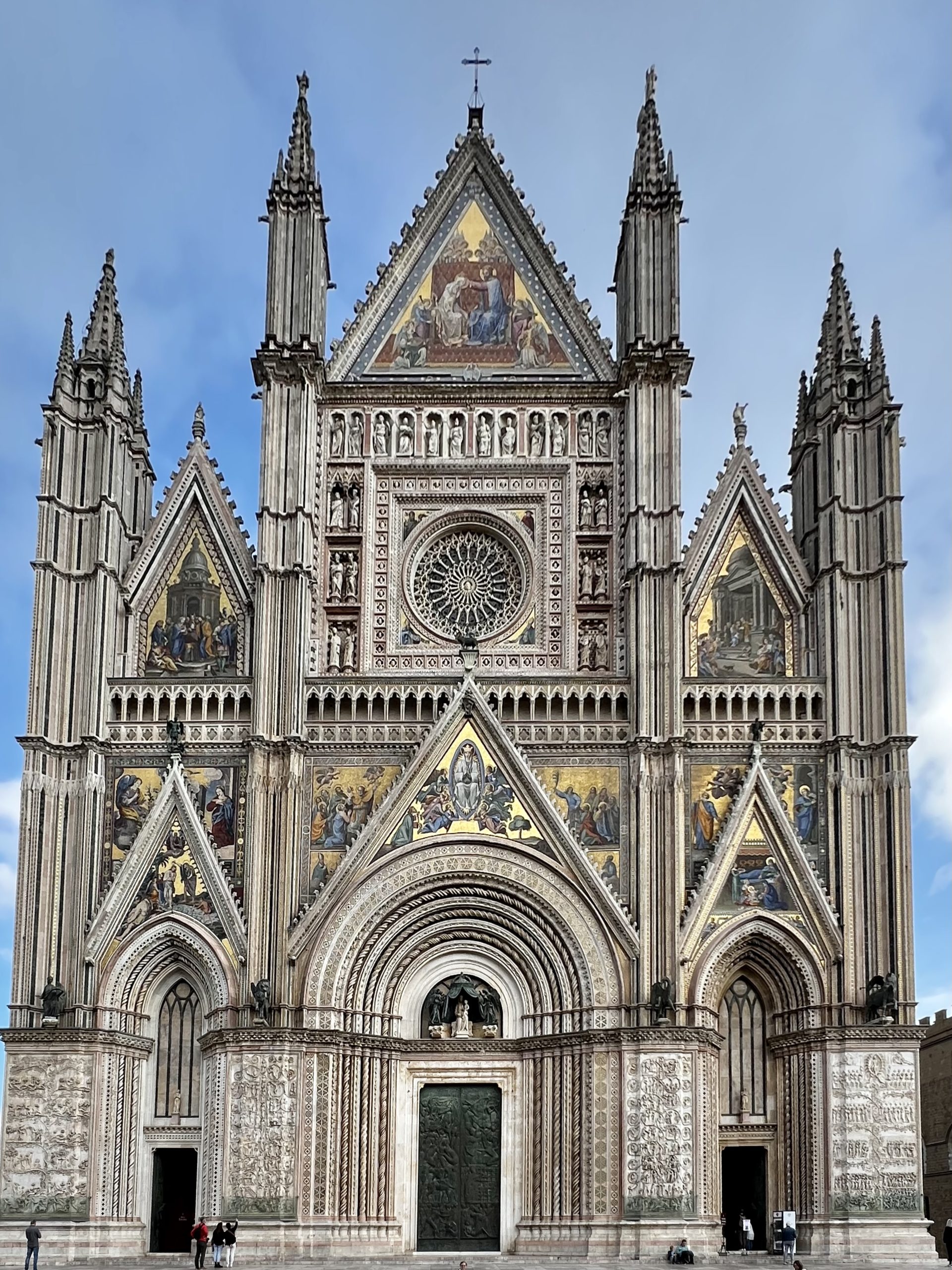
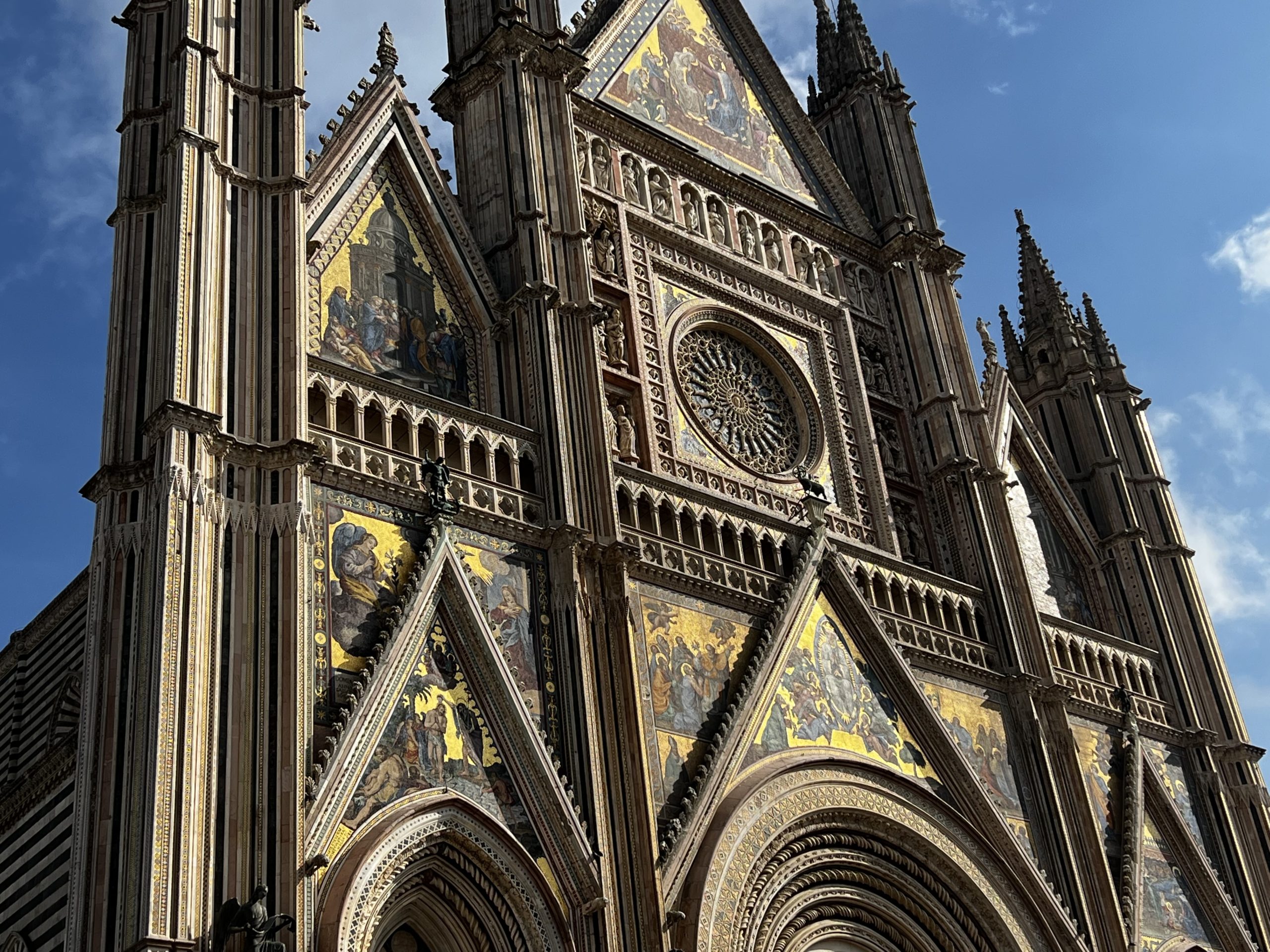
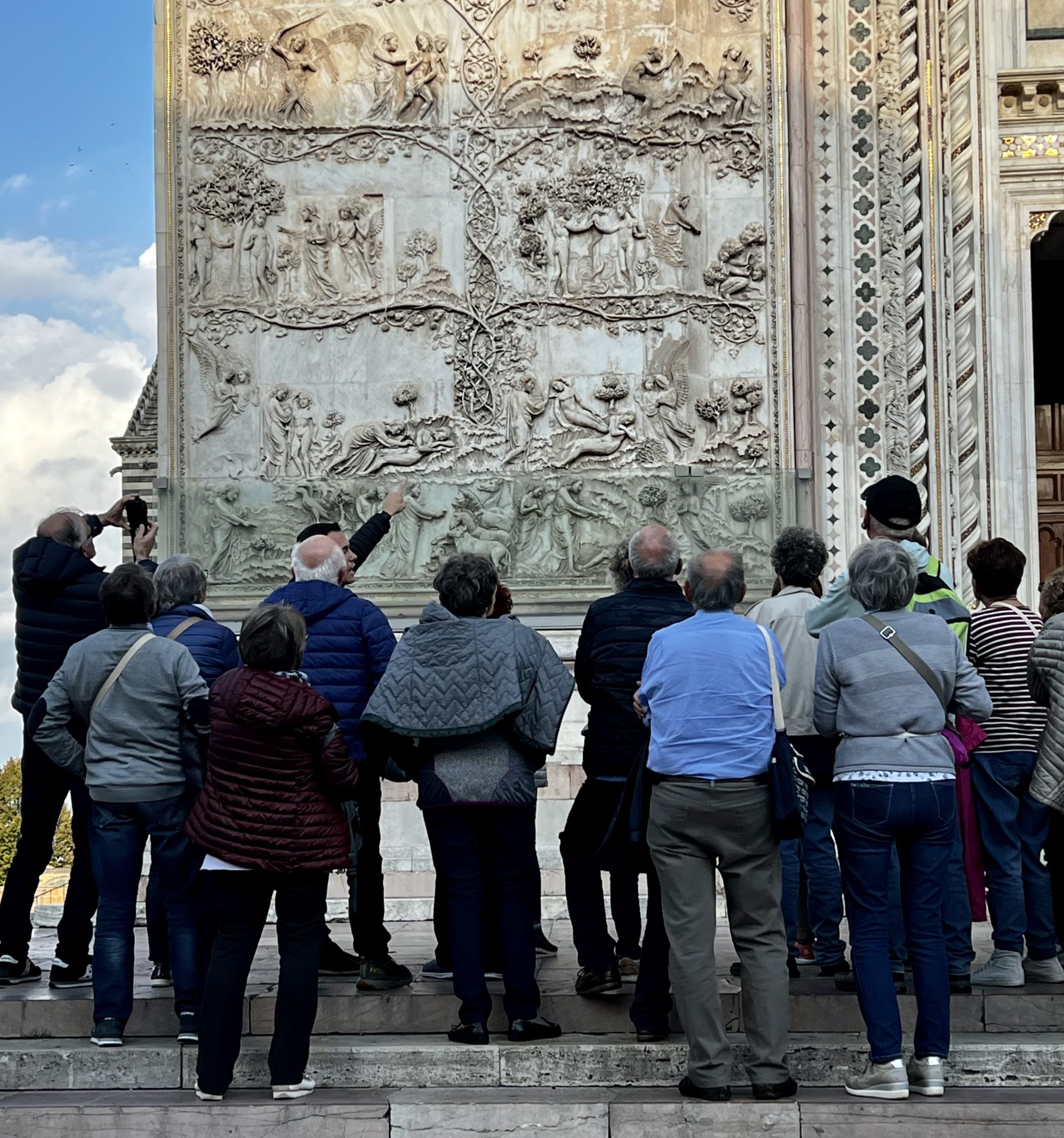
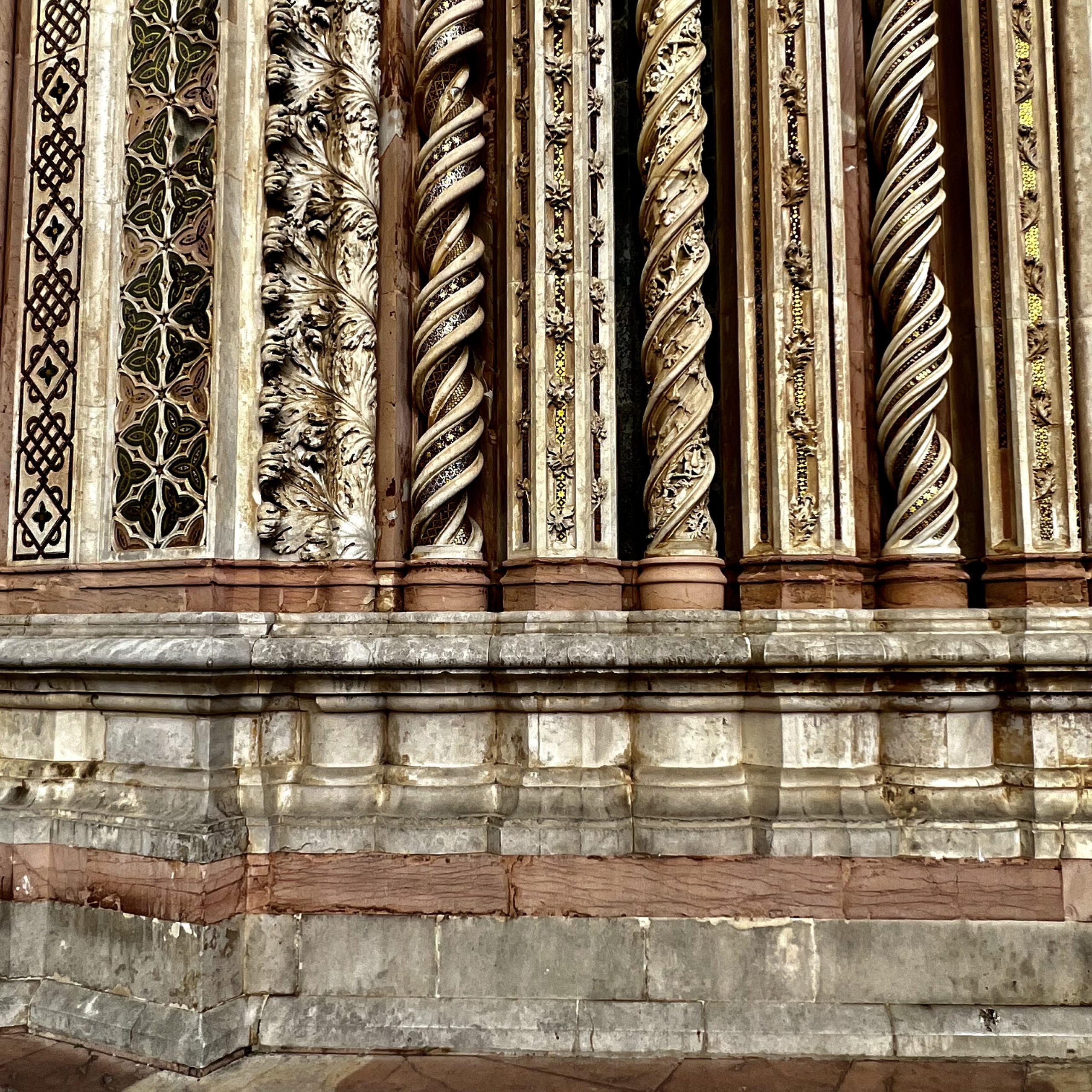
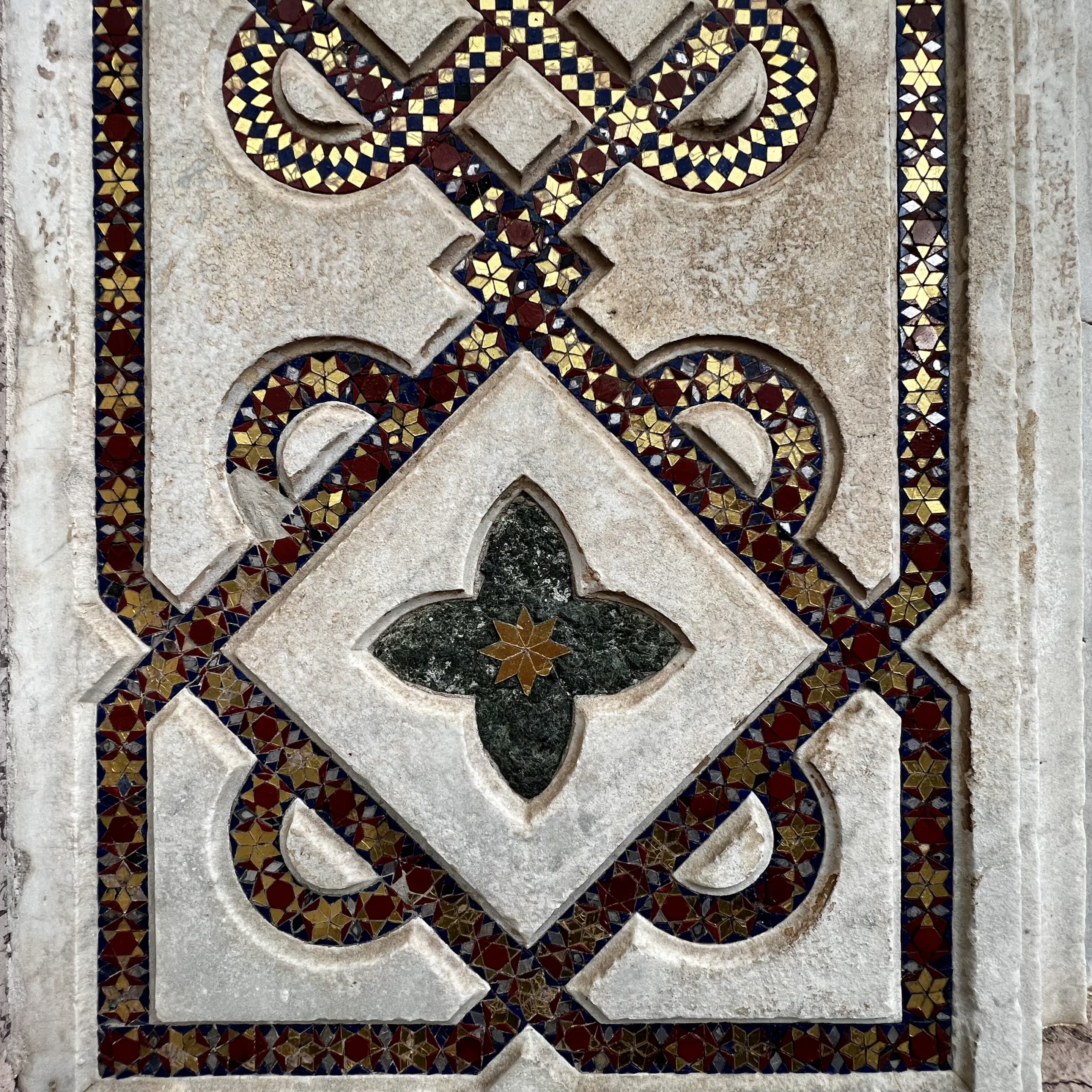
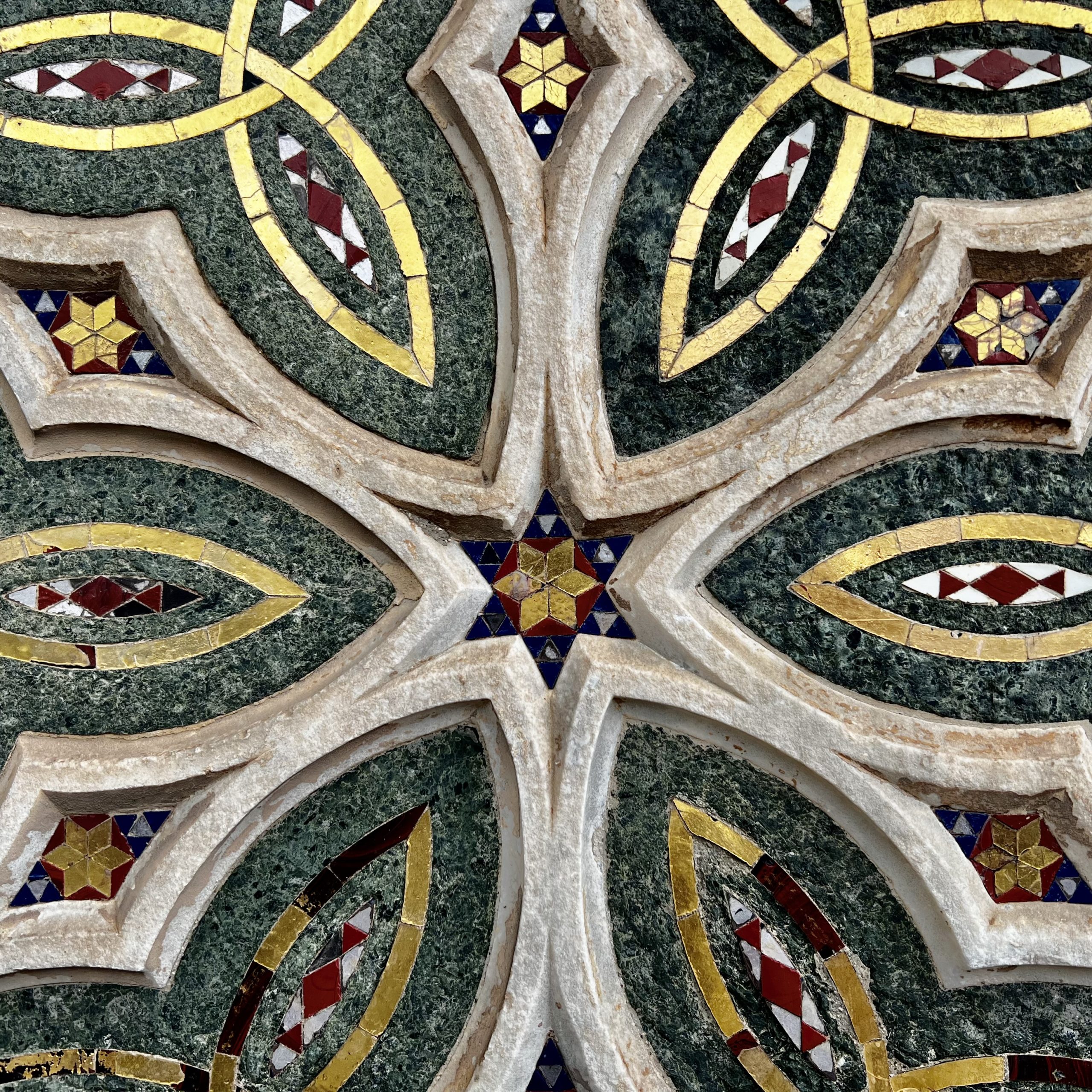
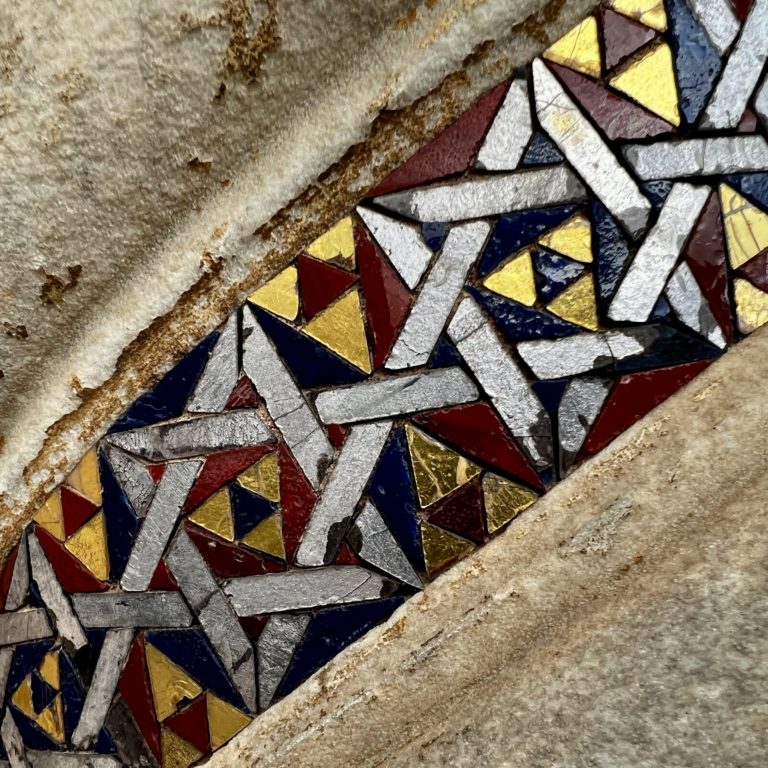
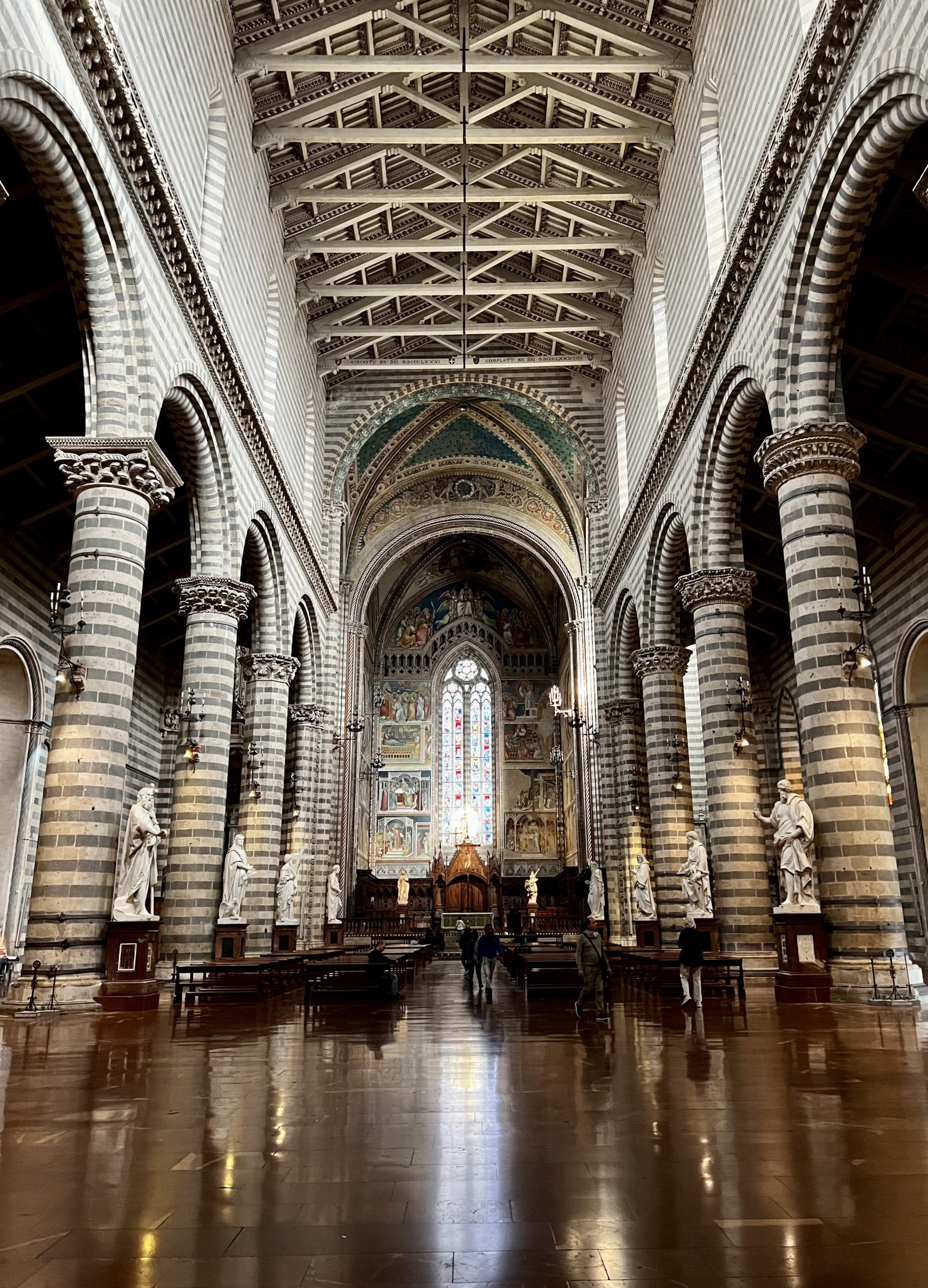
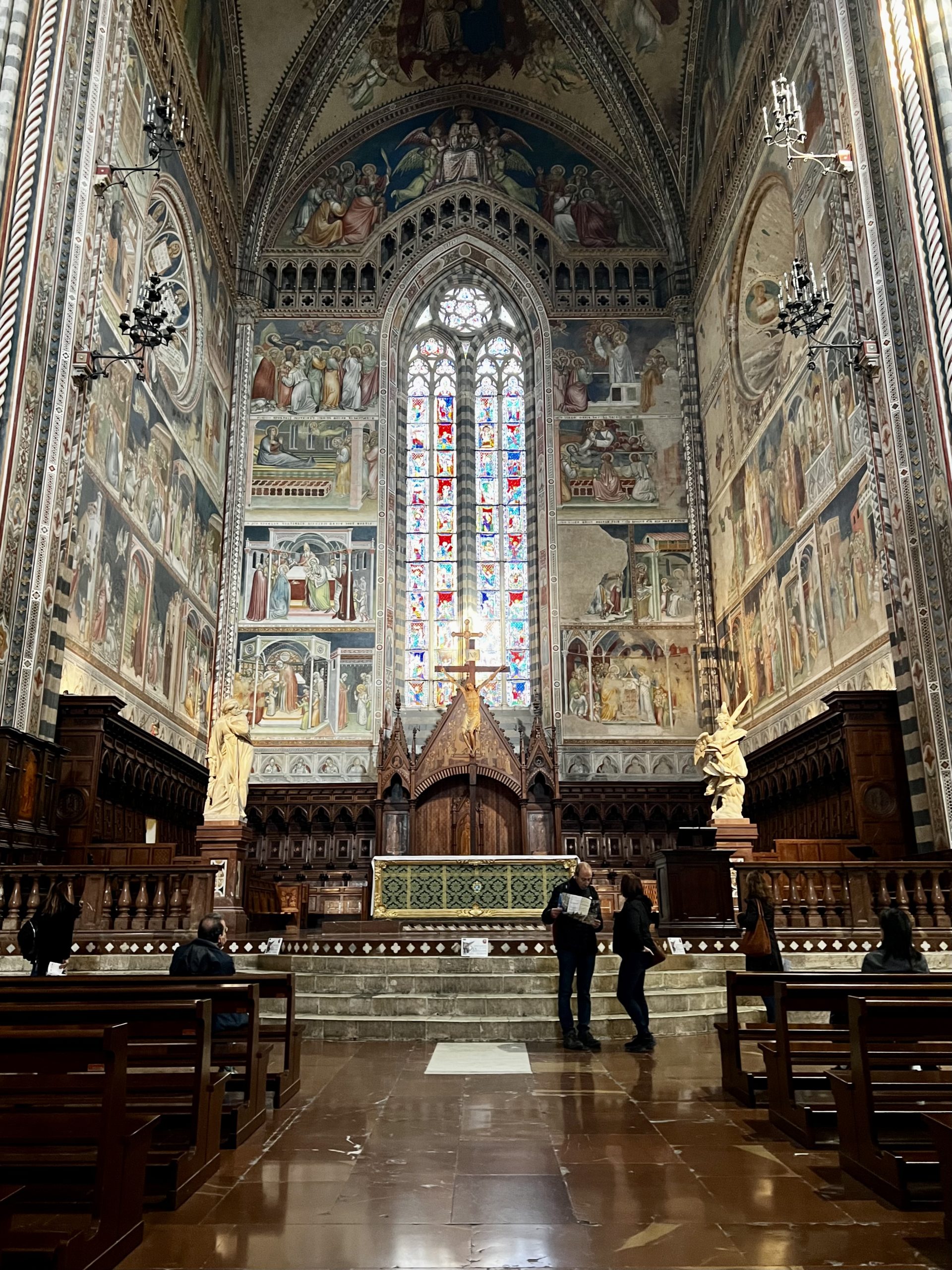
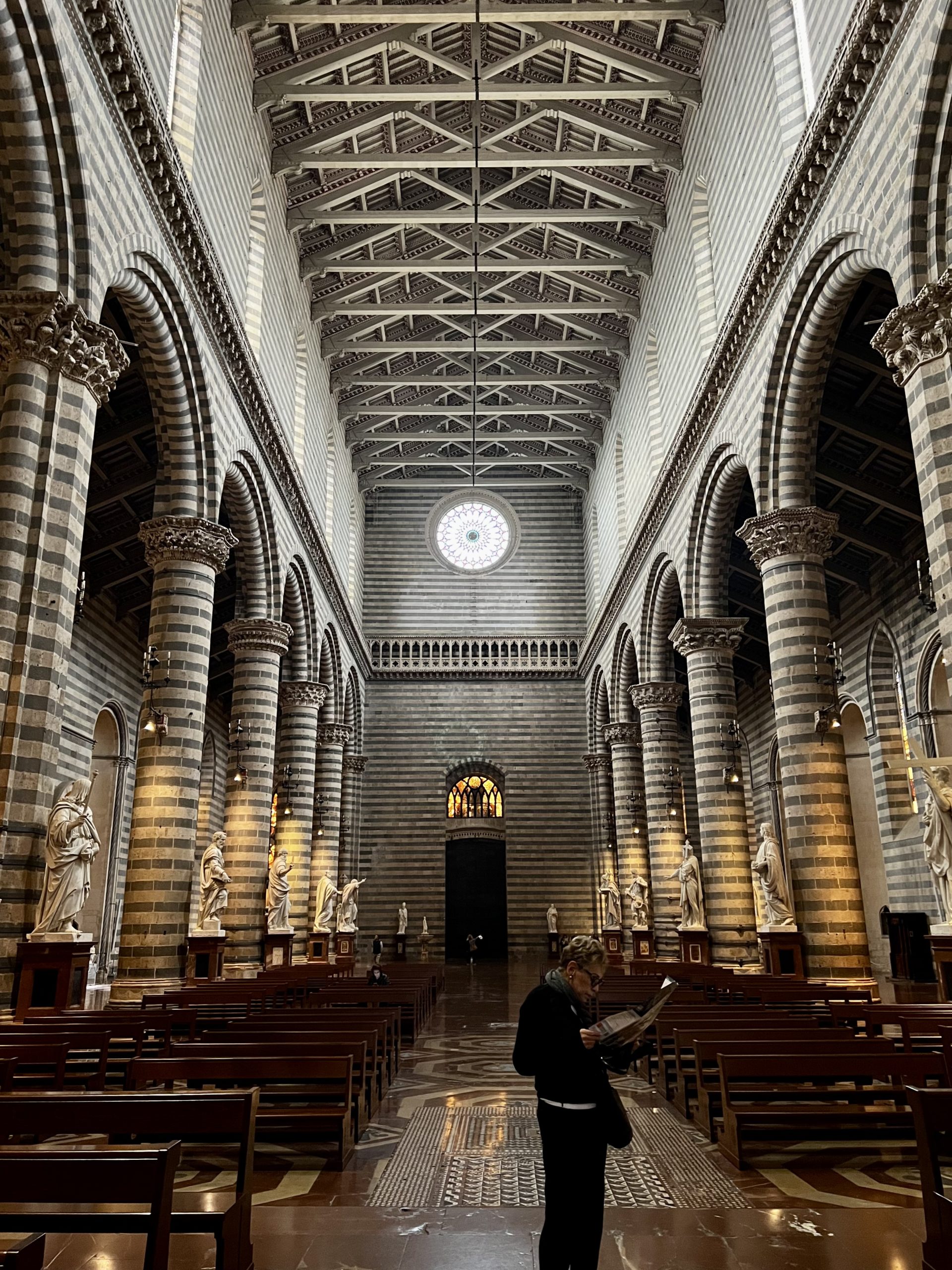
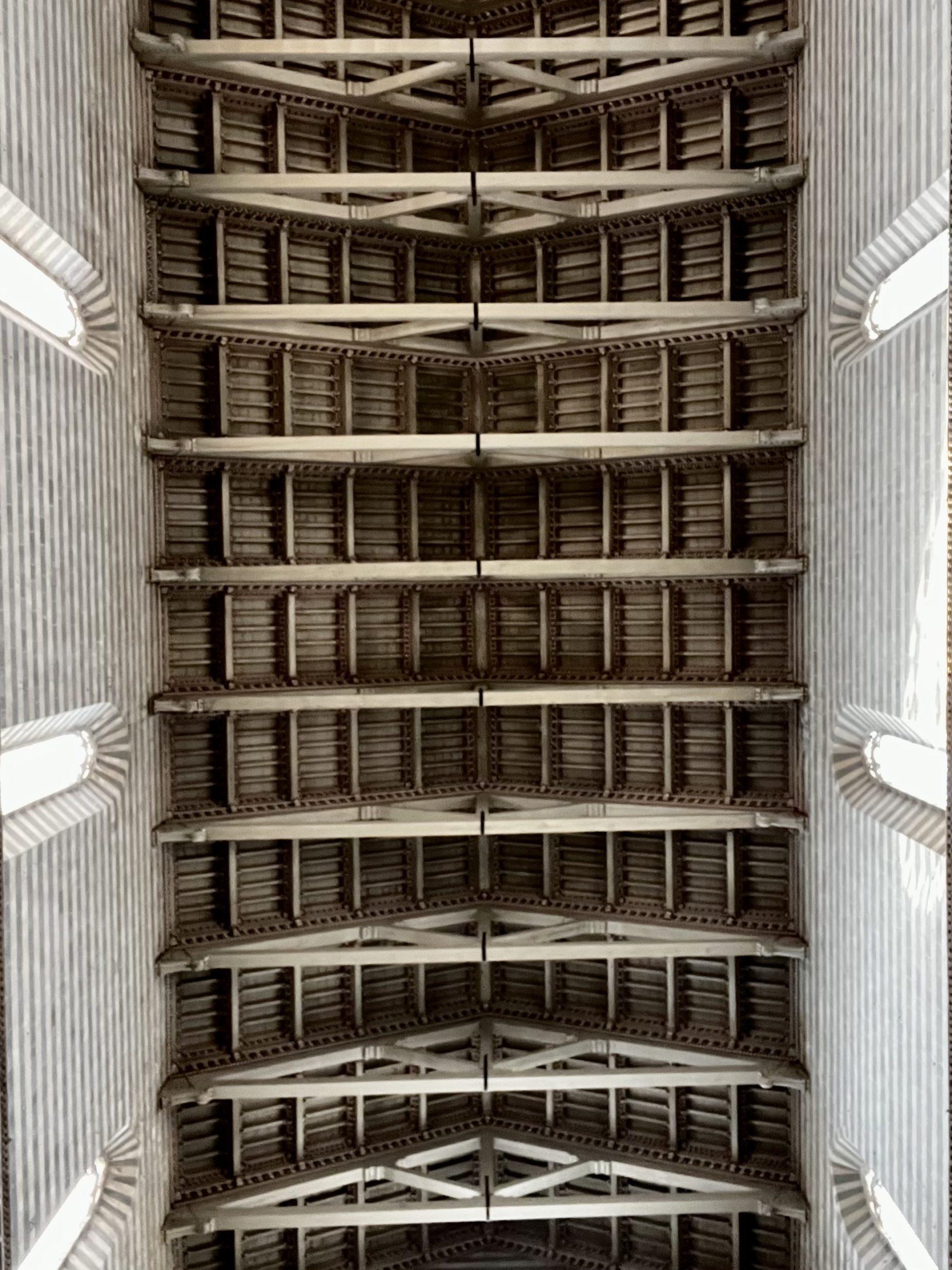
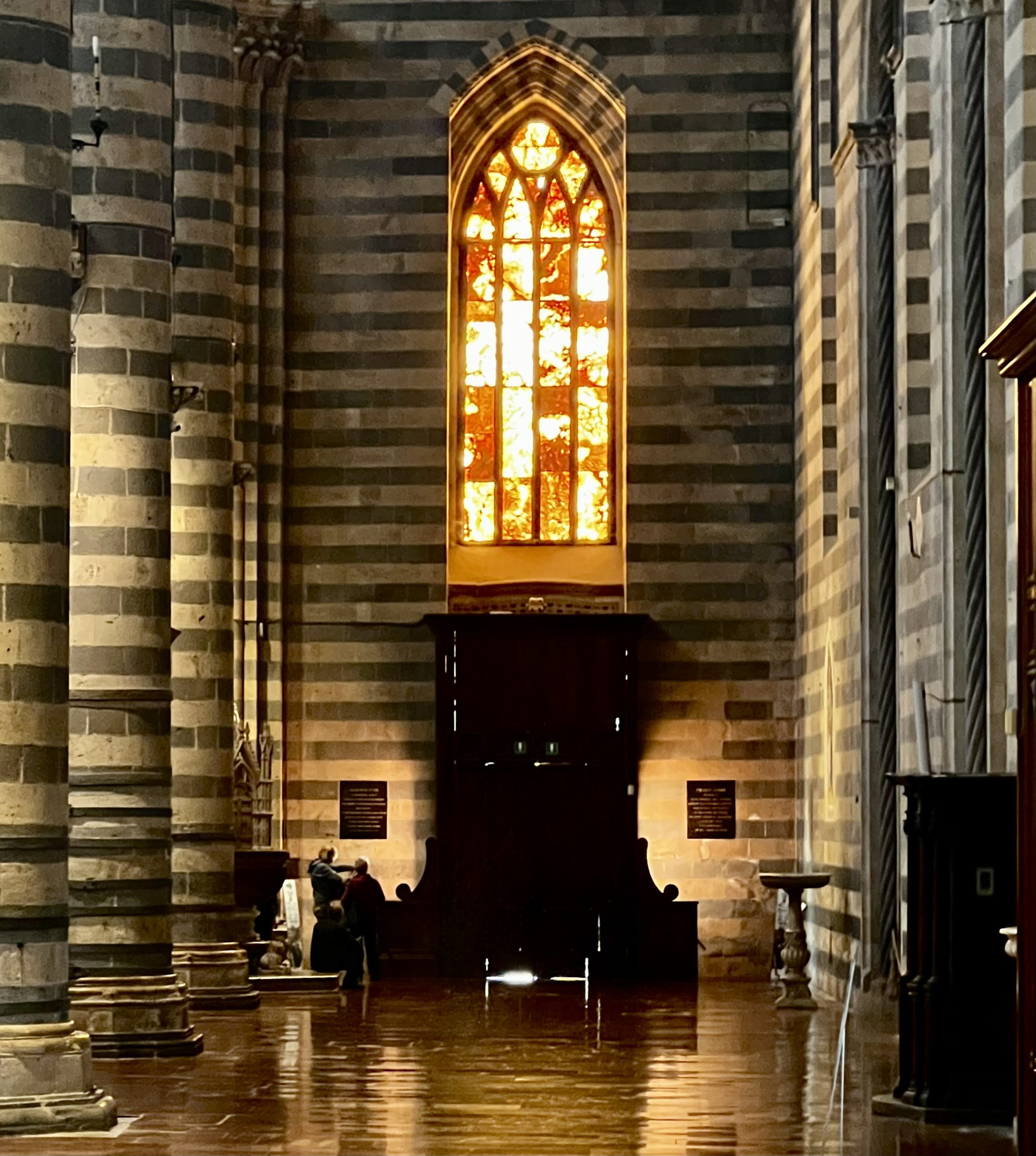
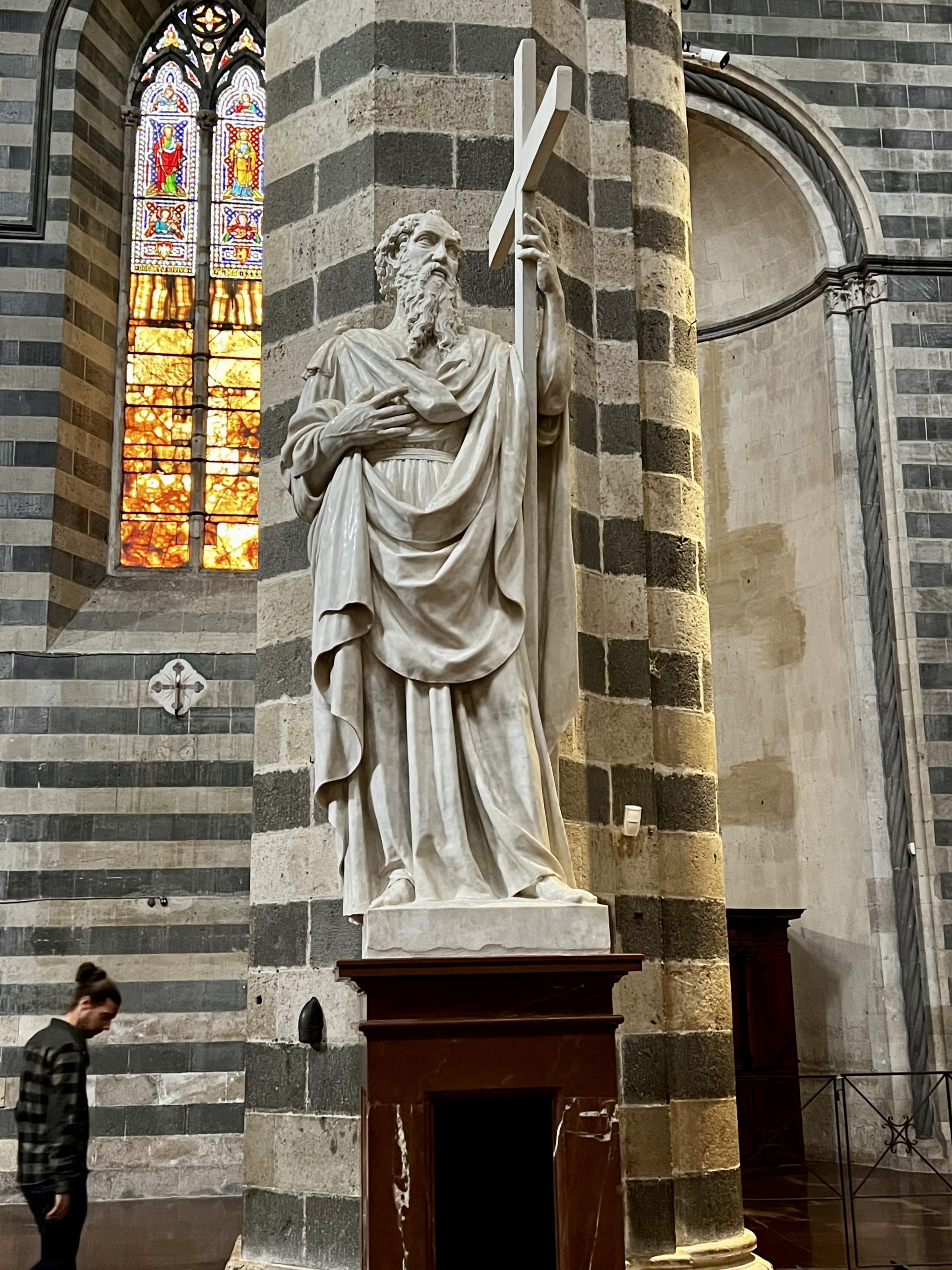
Cappella Nova
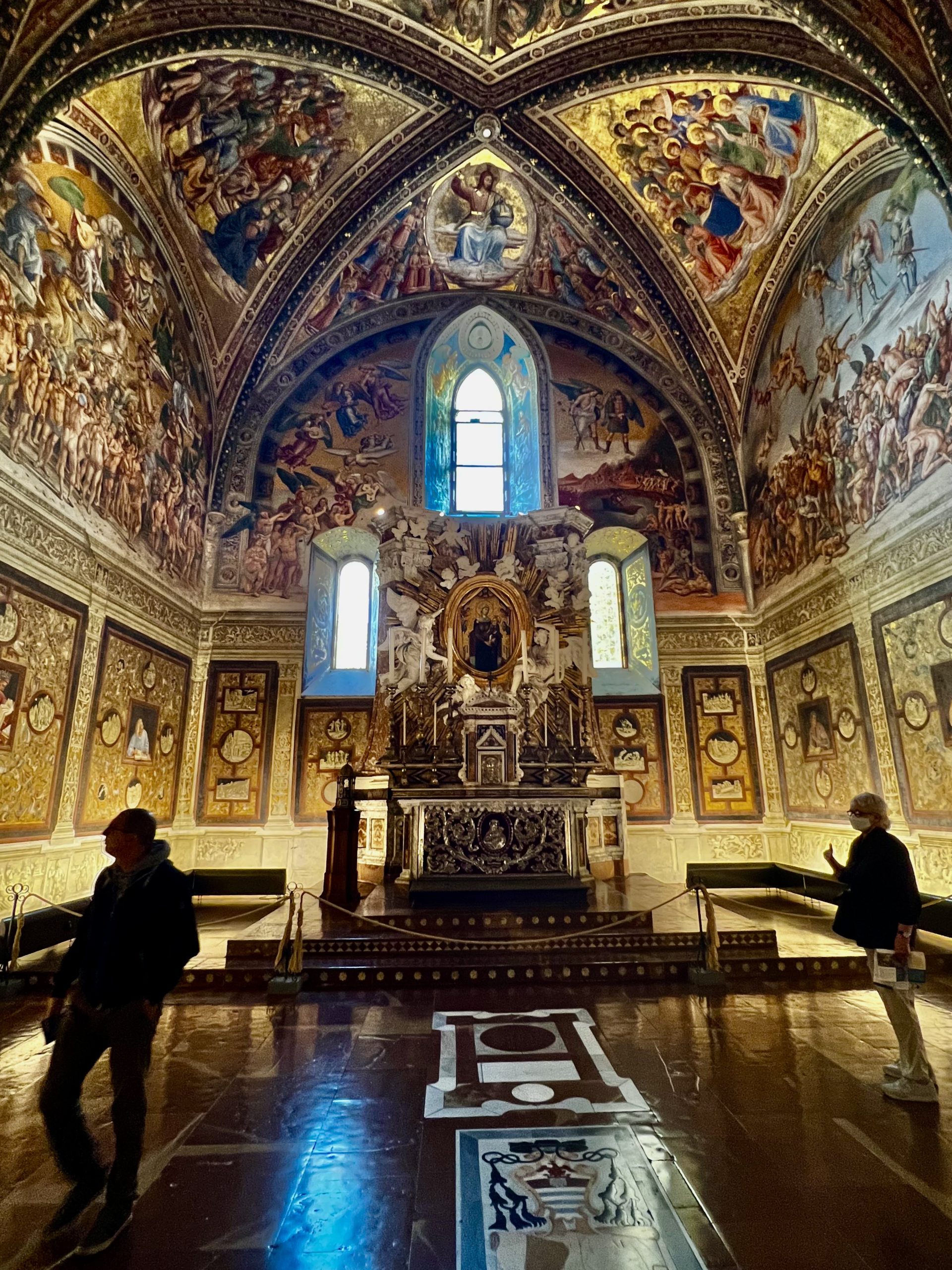
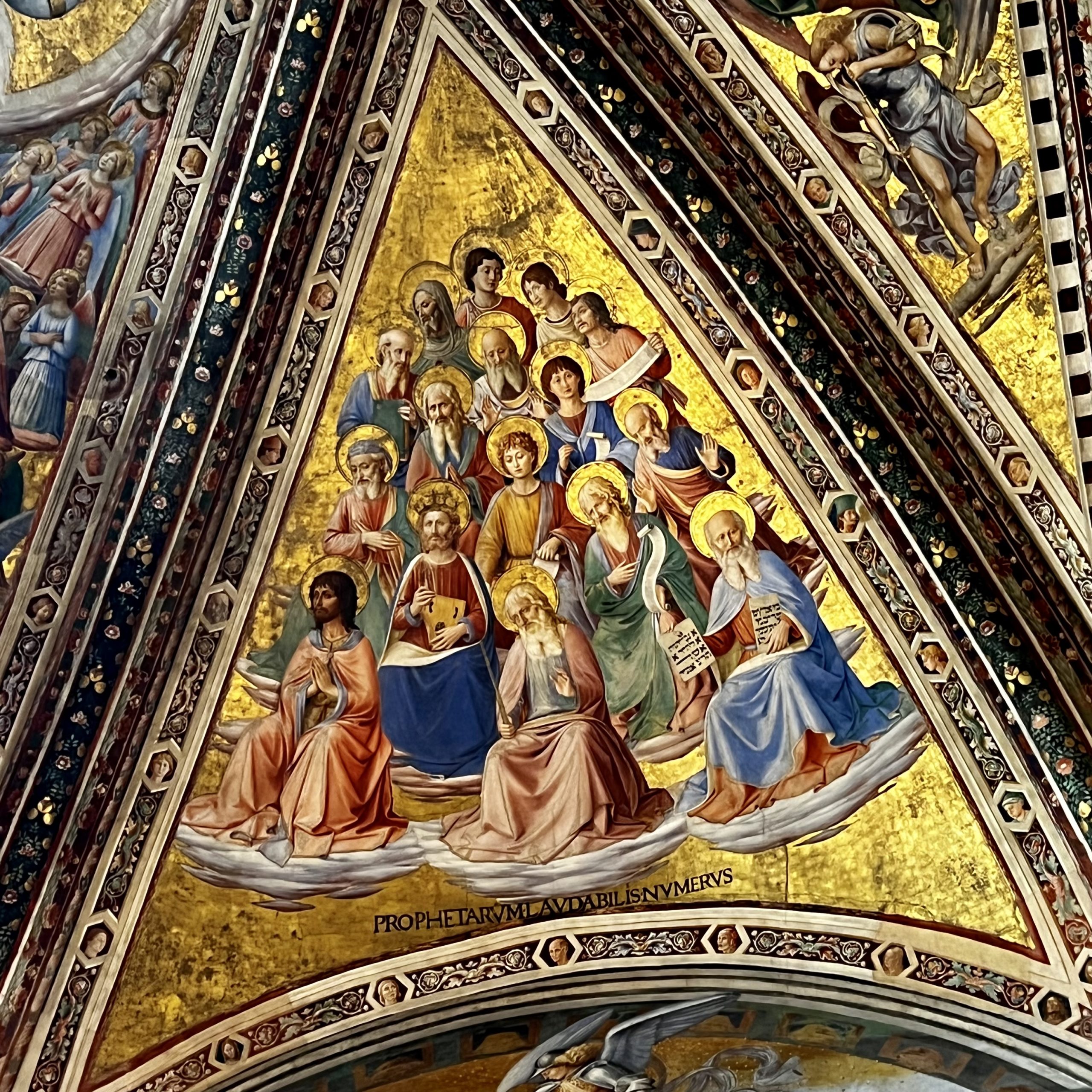
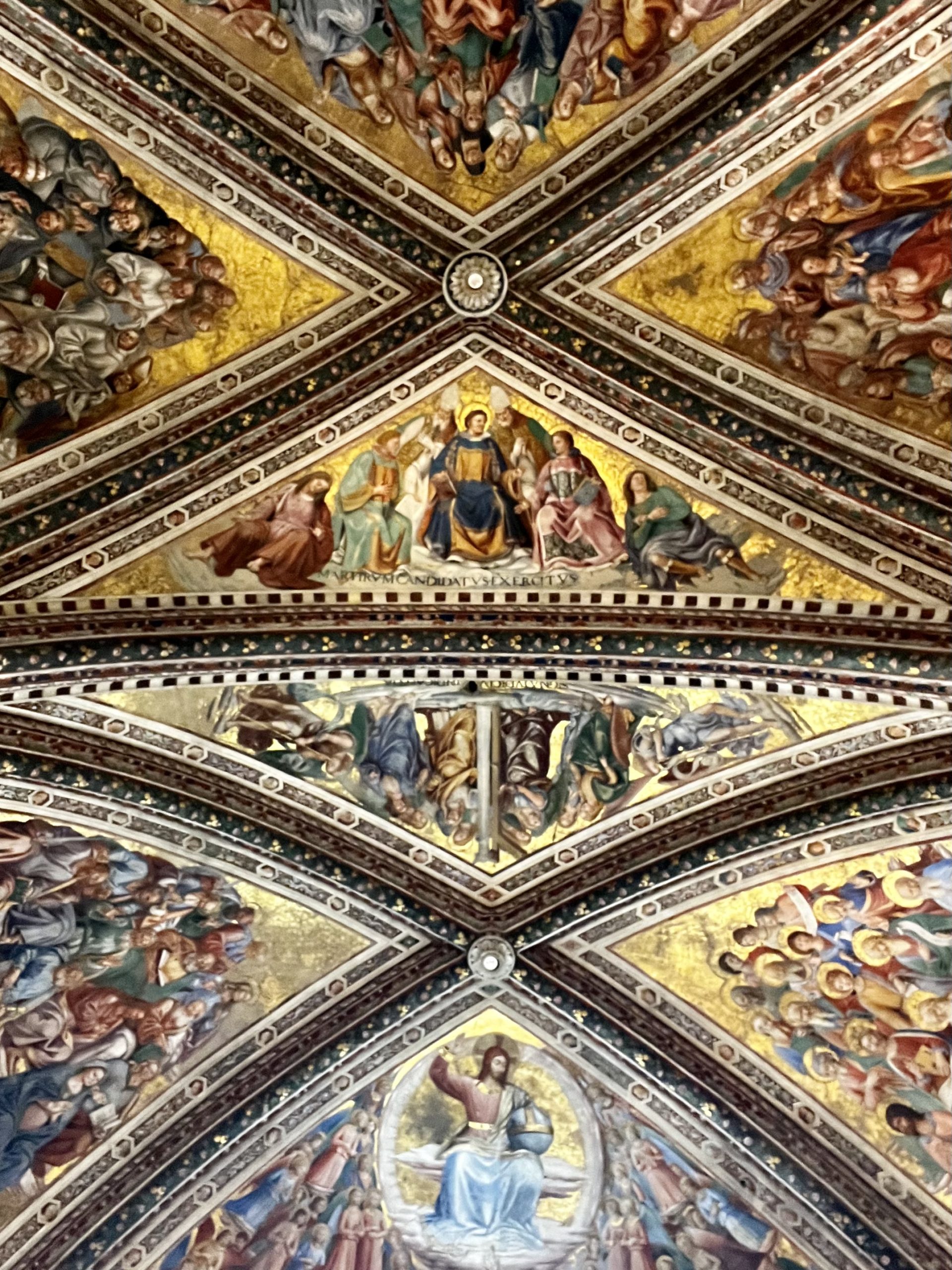
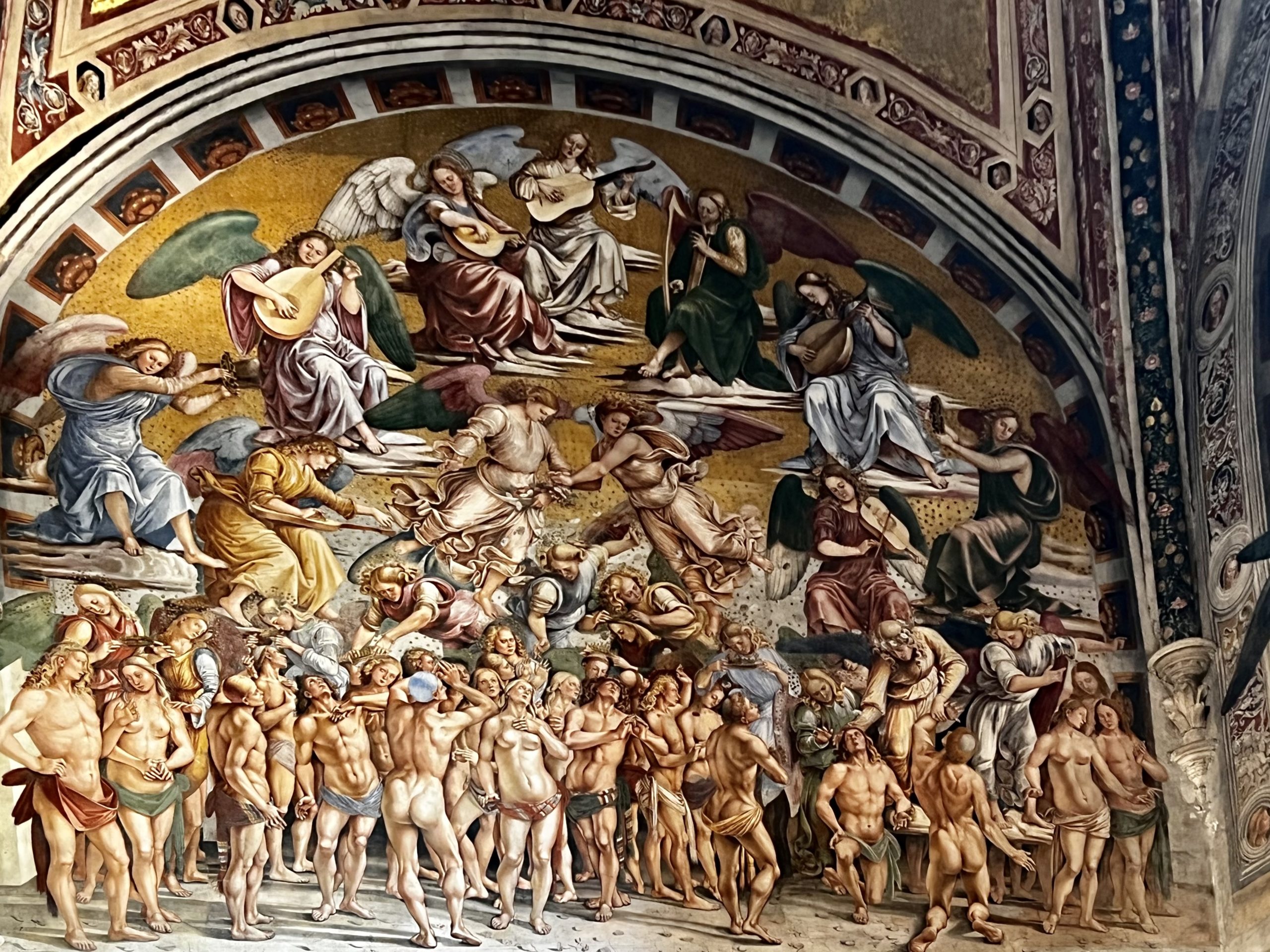
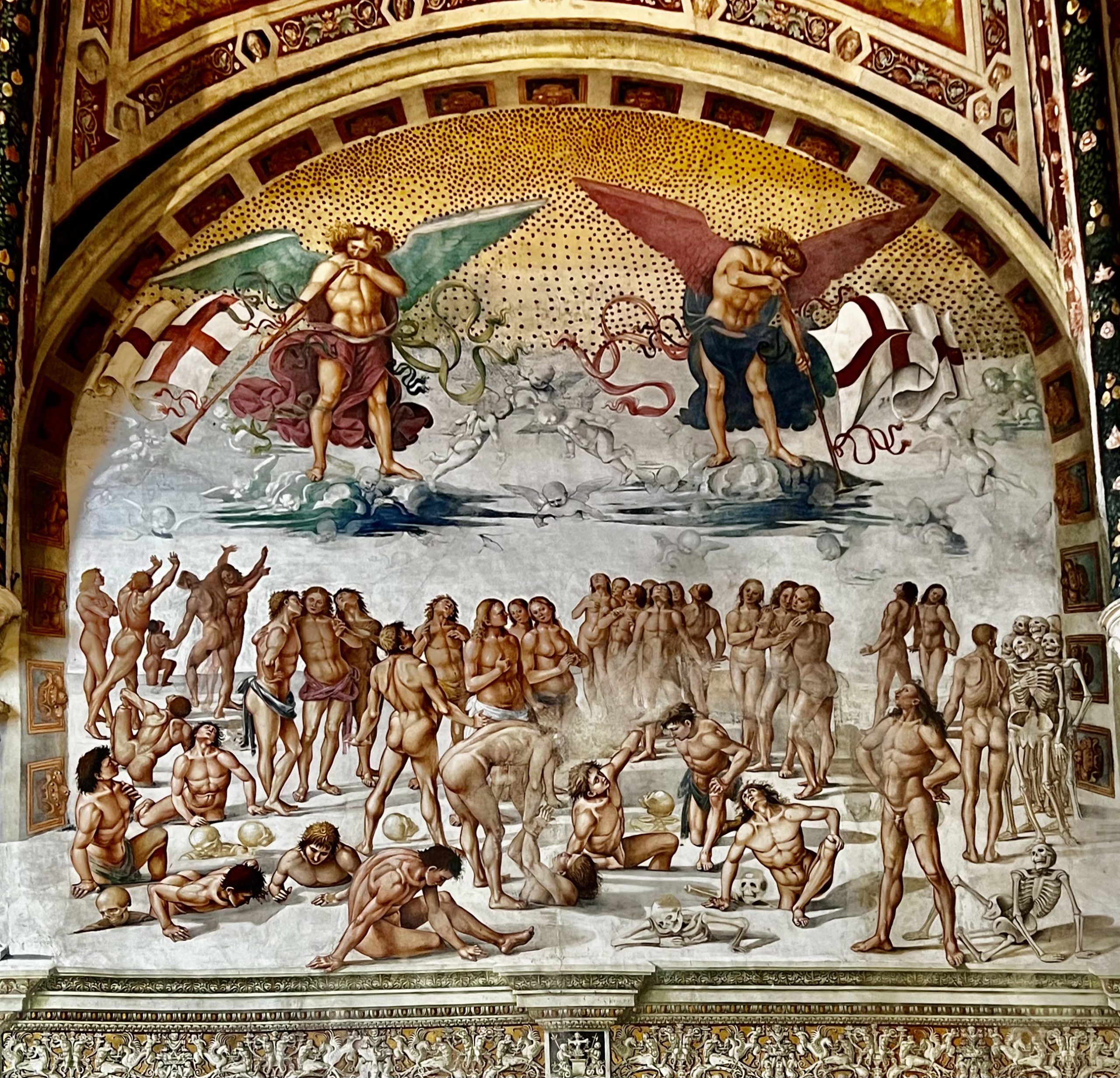
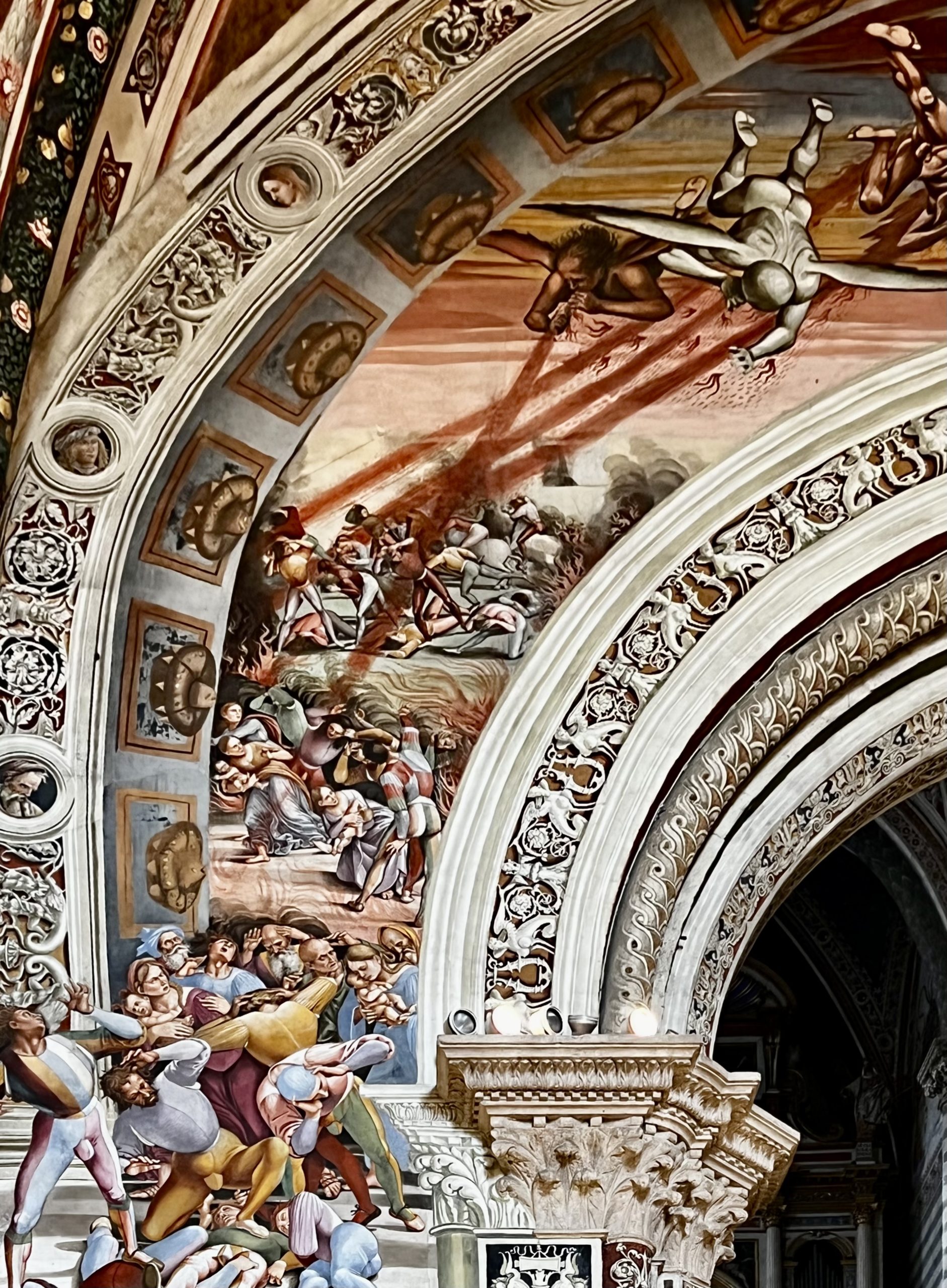
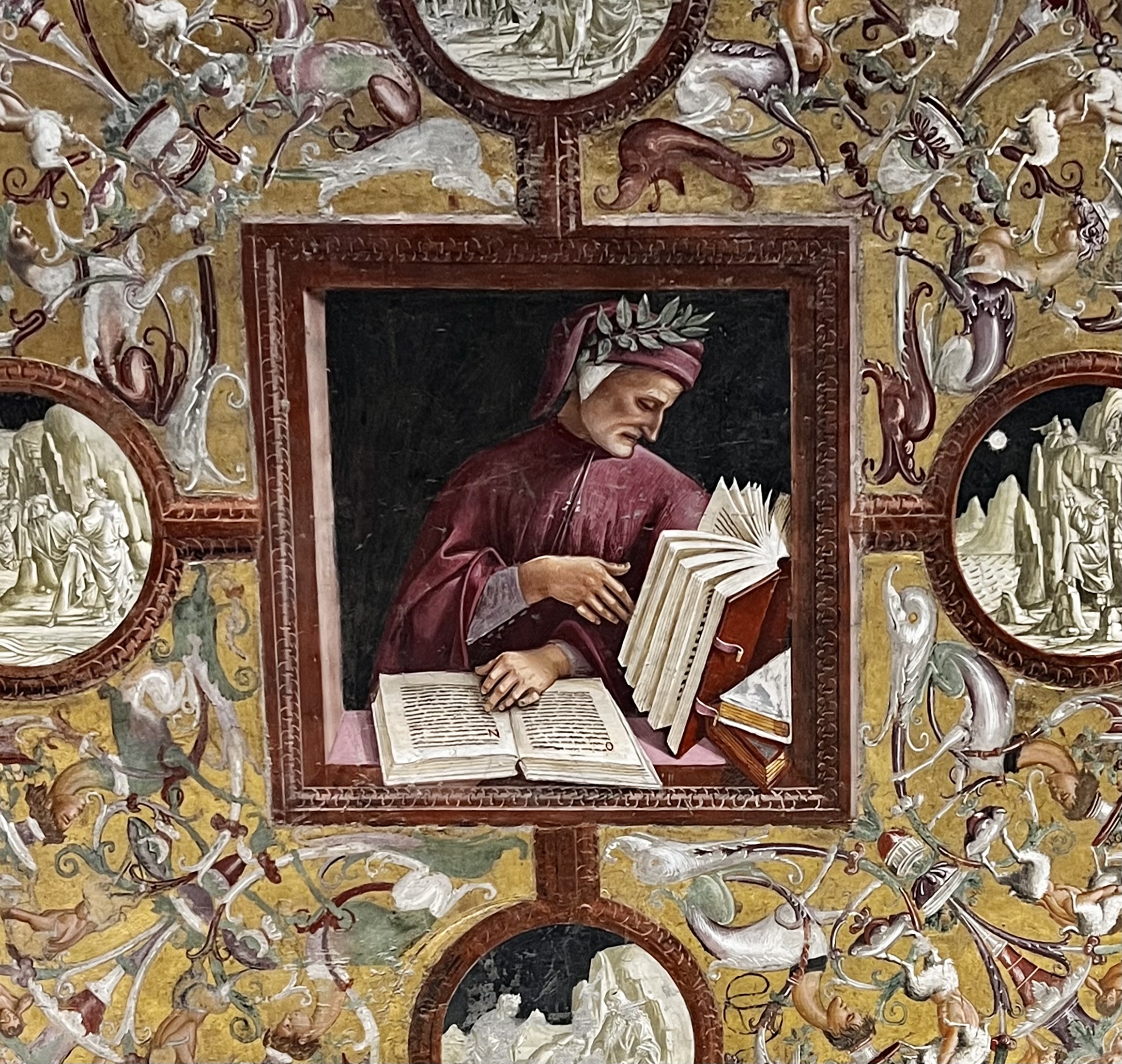
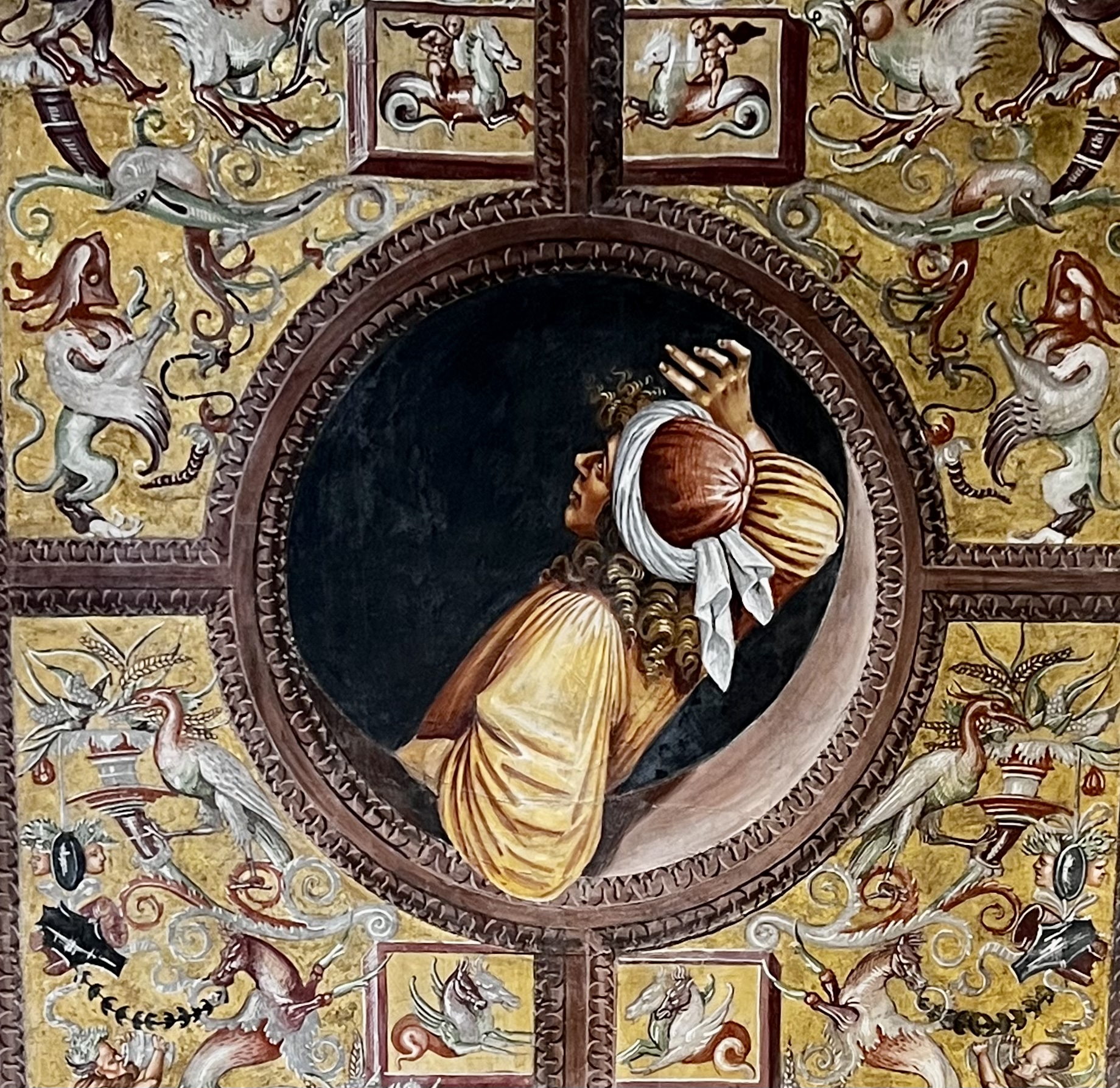
Additional Chapel
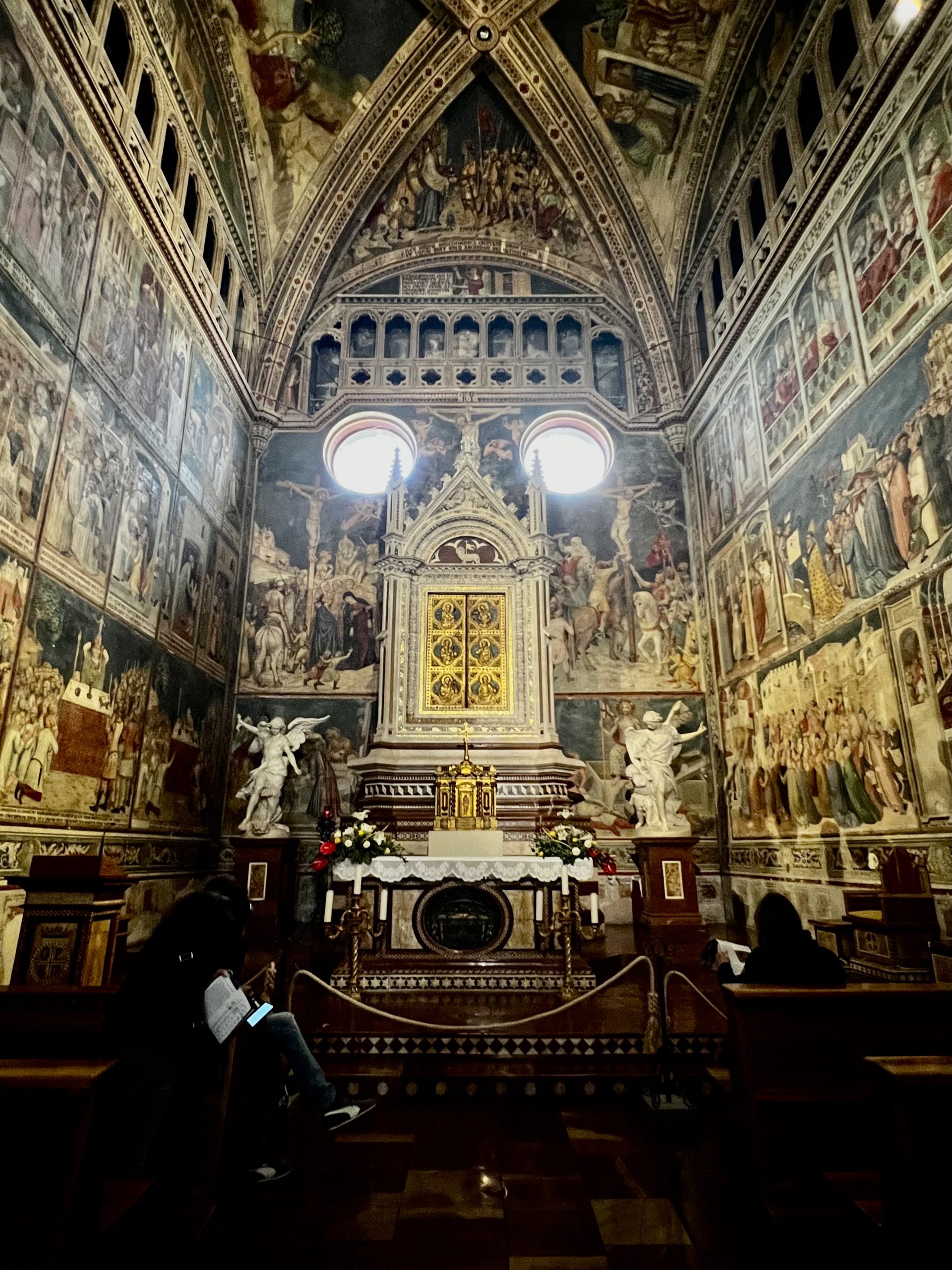
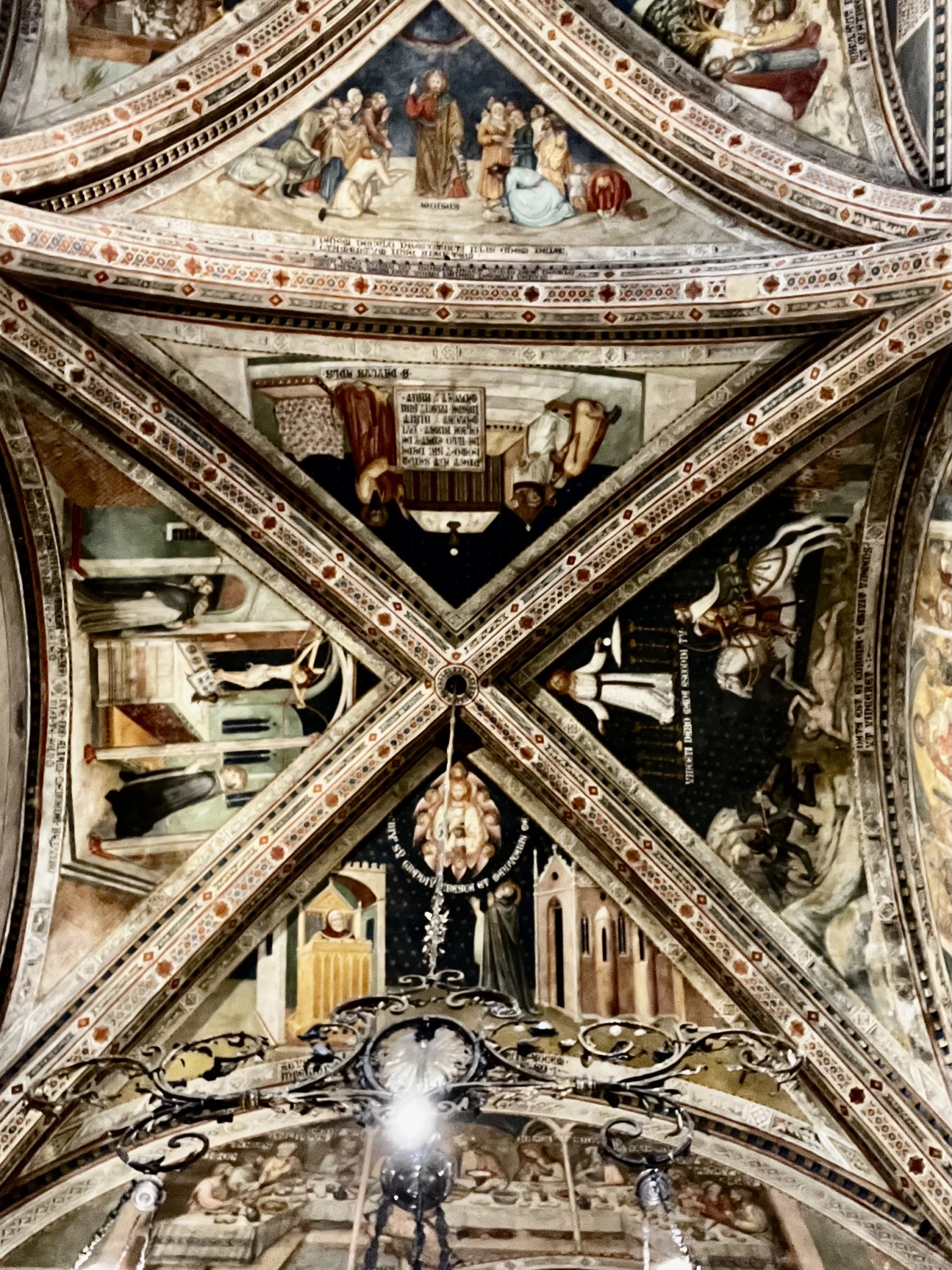
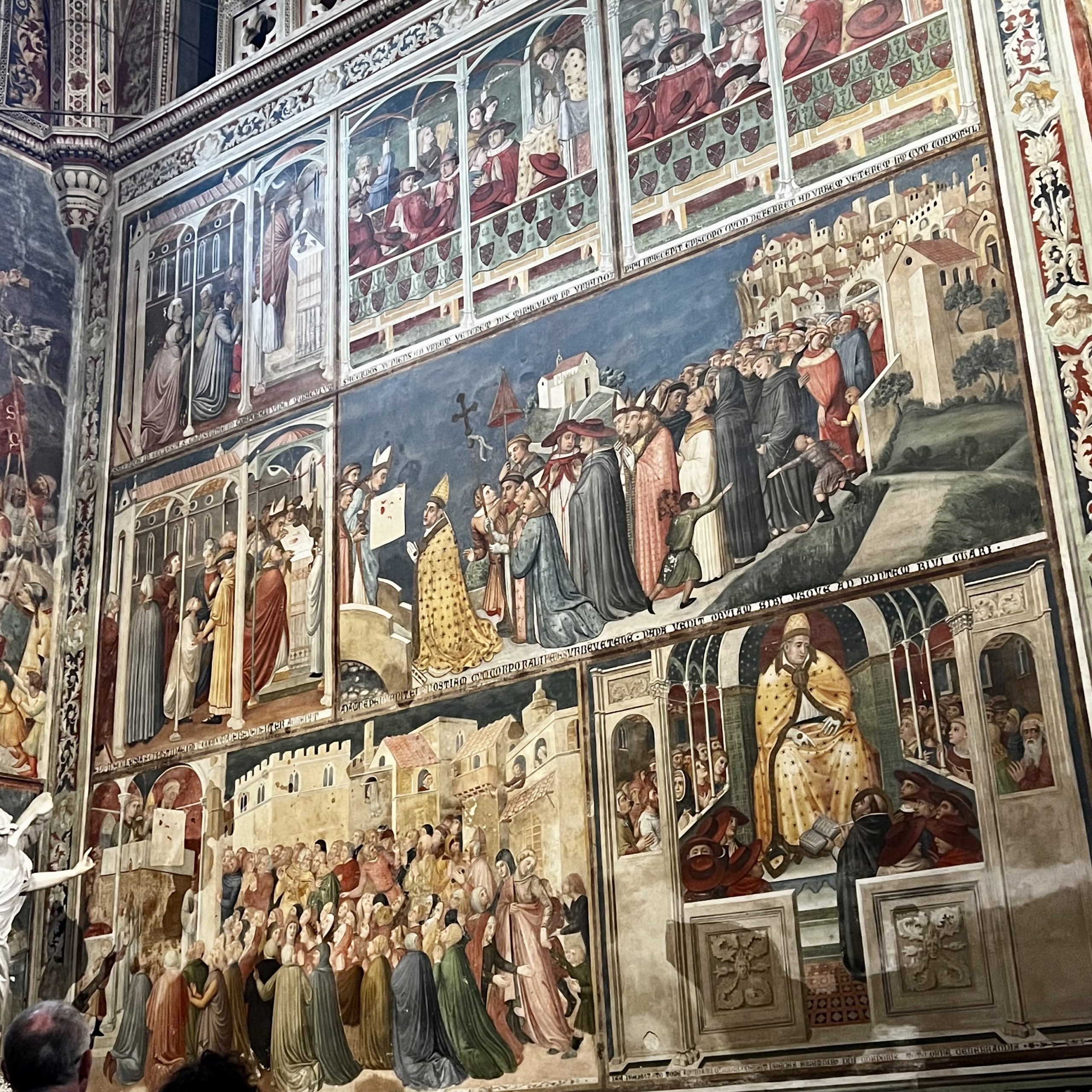
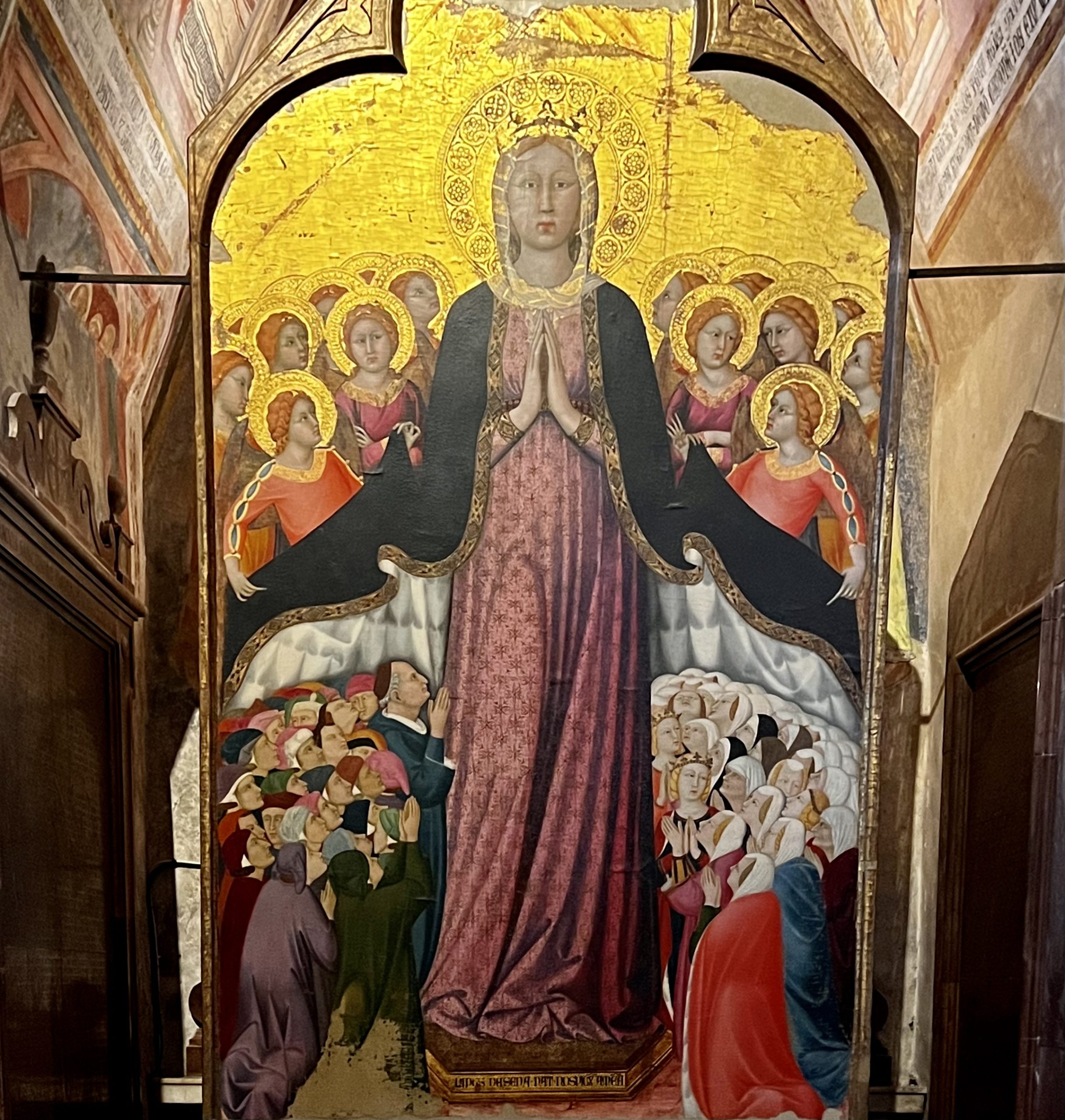
Strolling
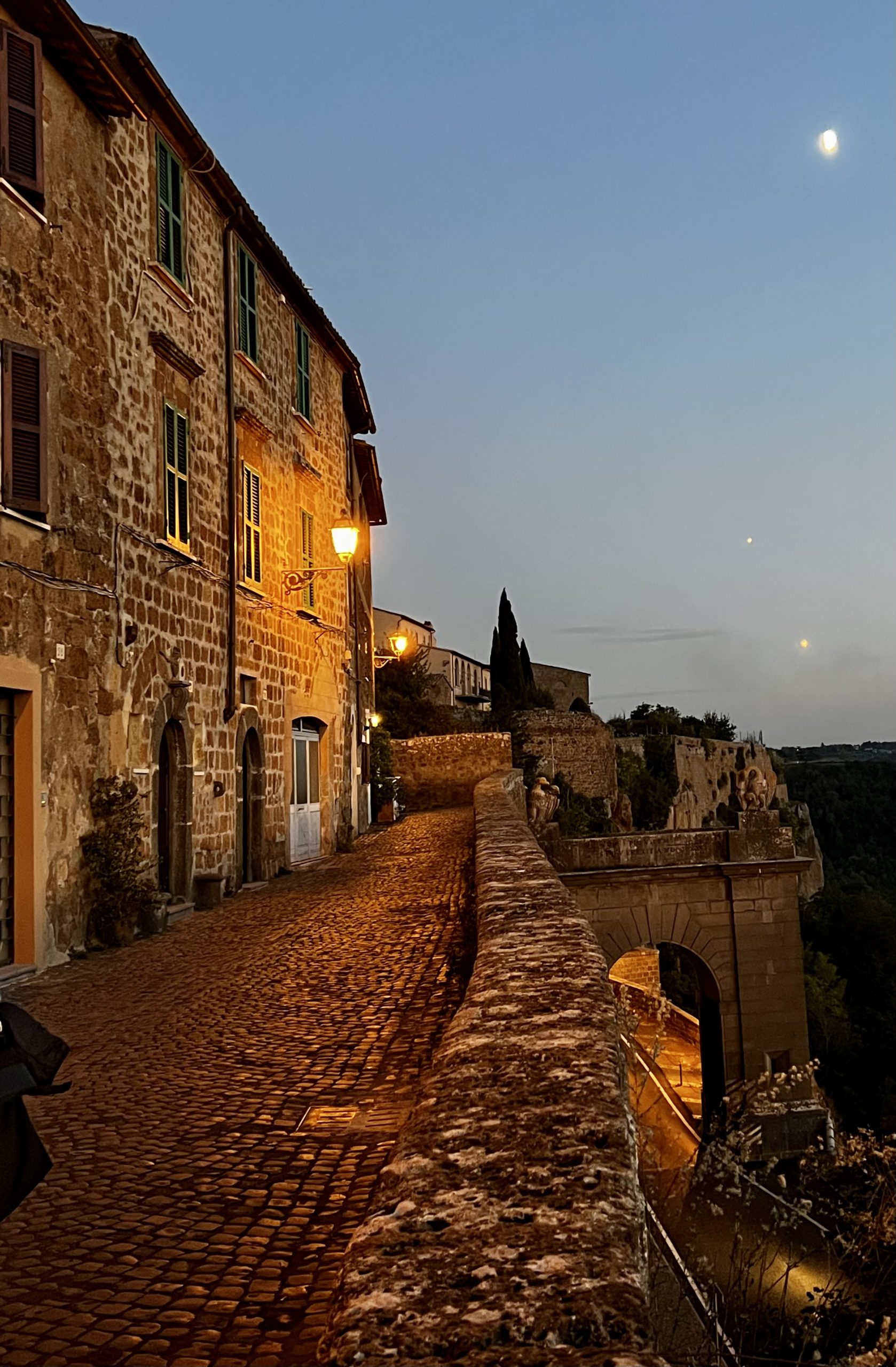
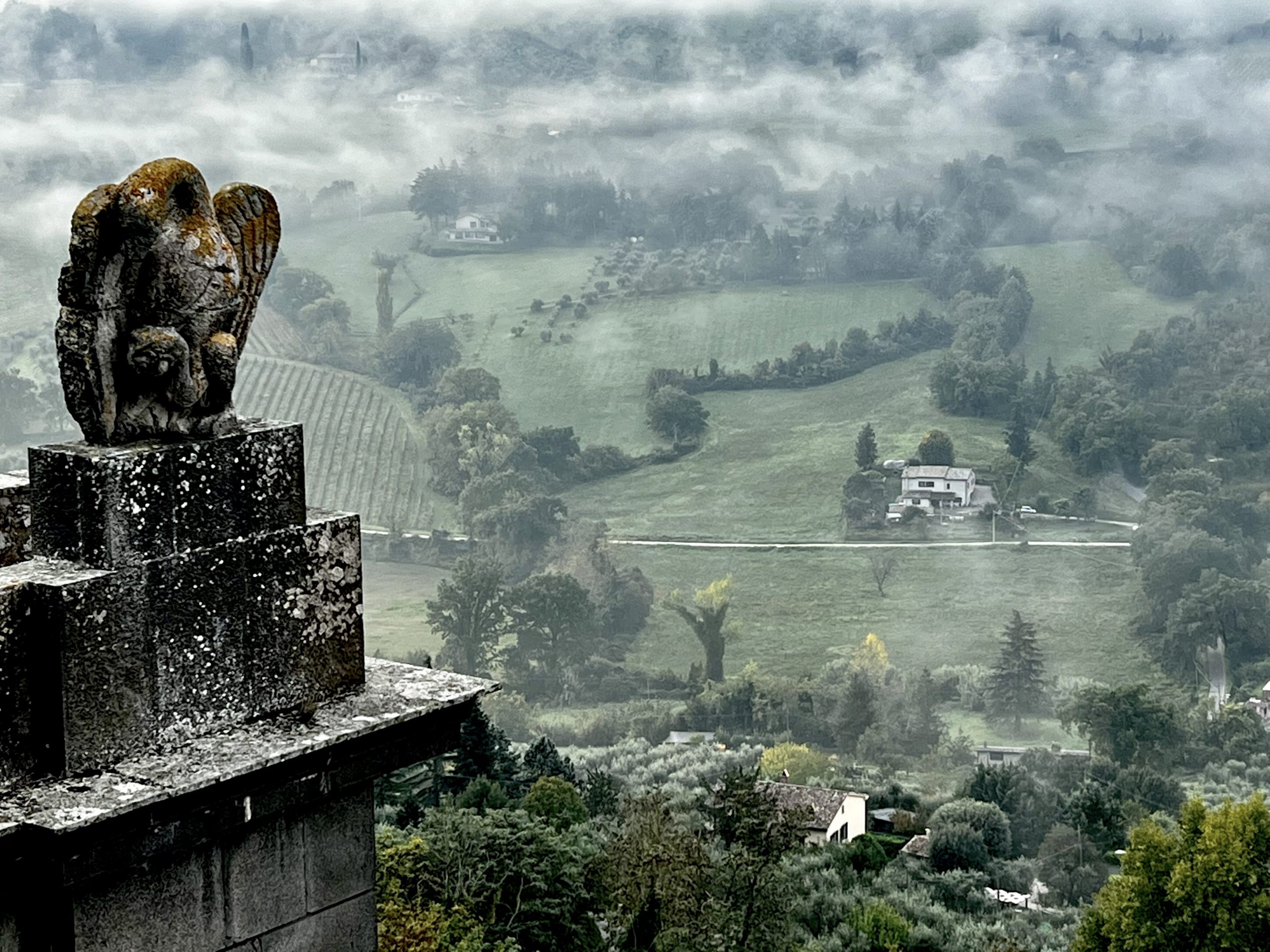

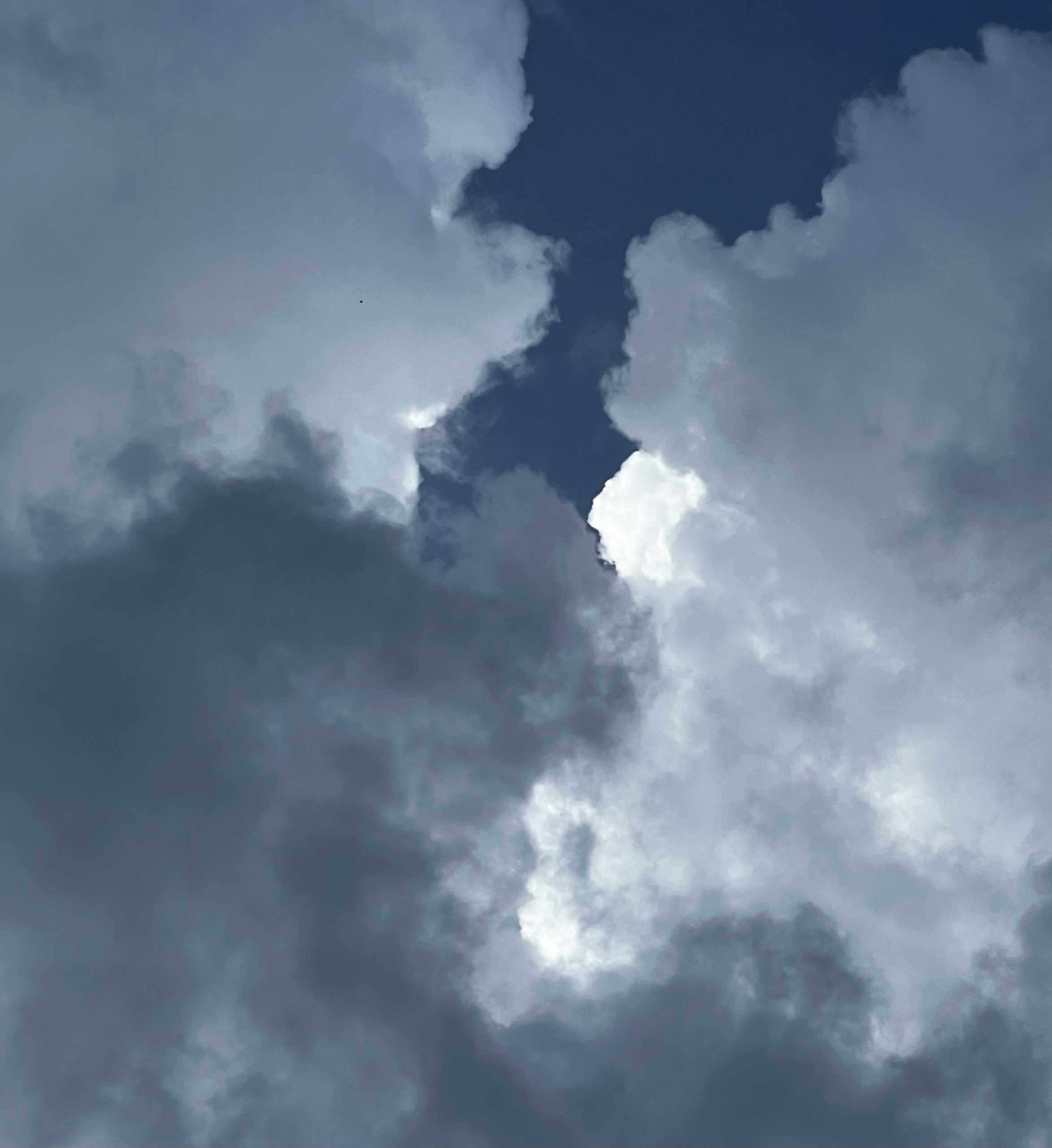
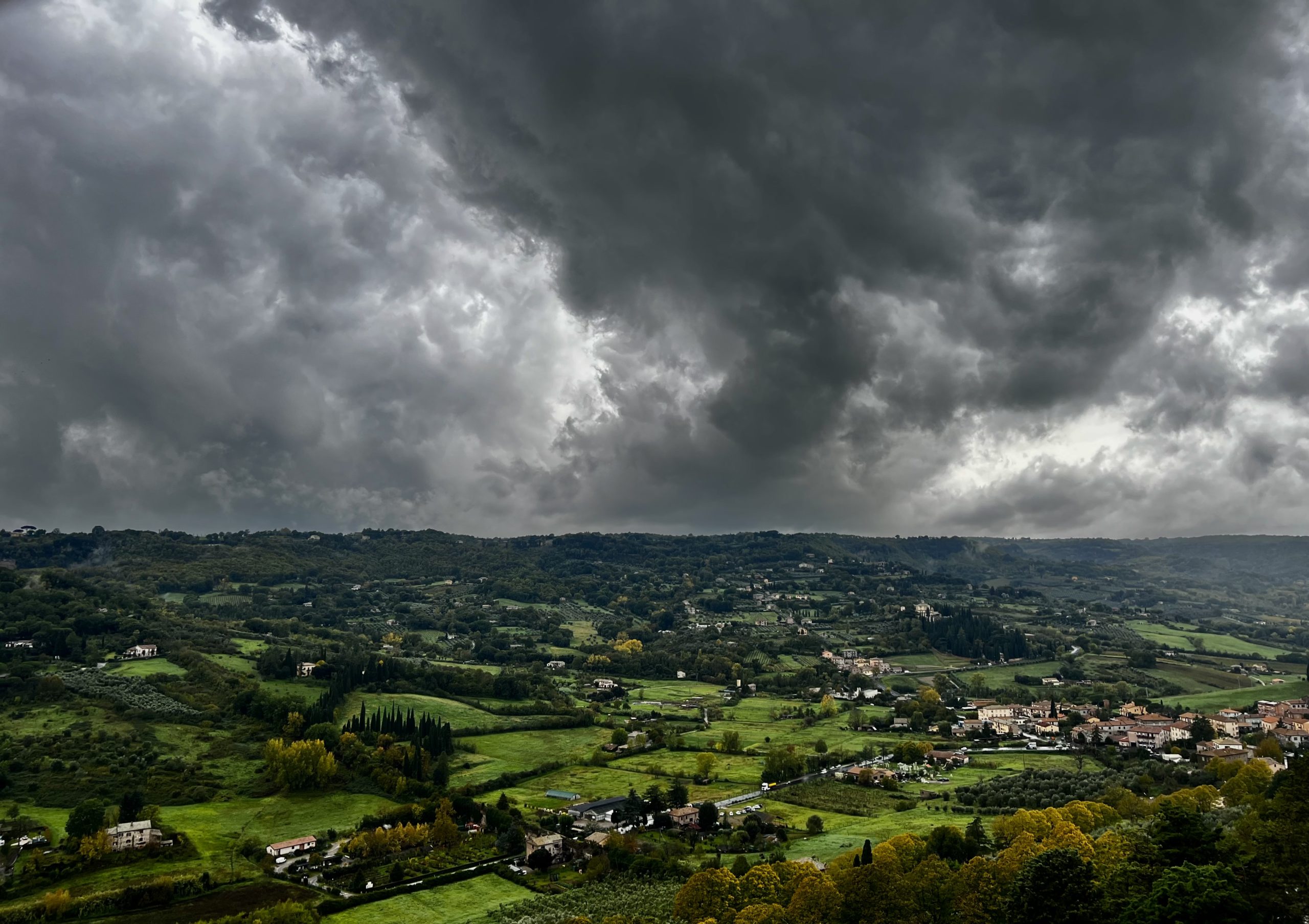
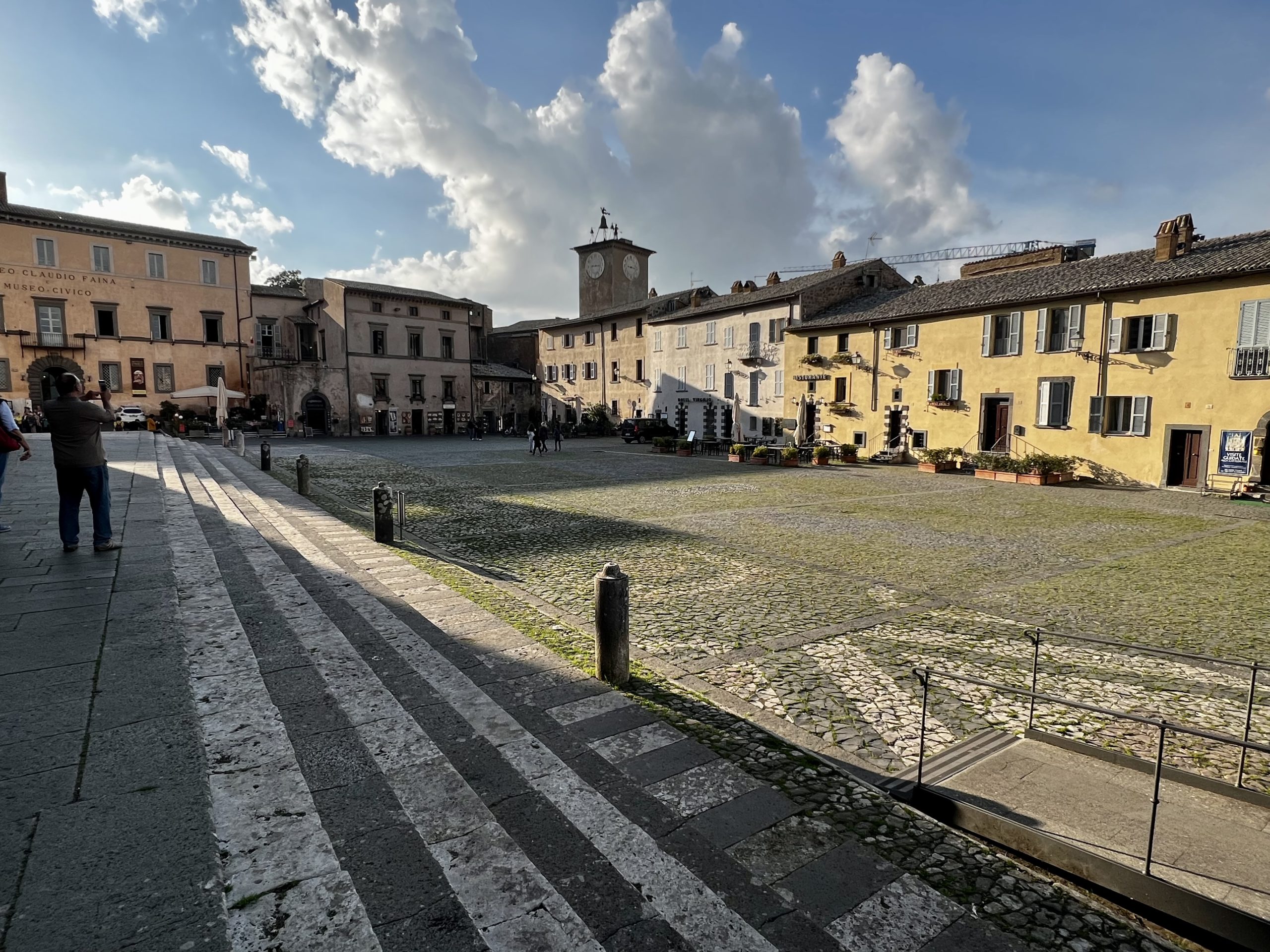
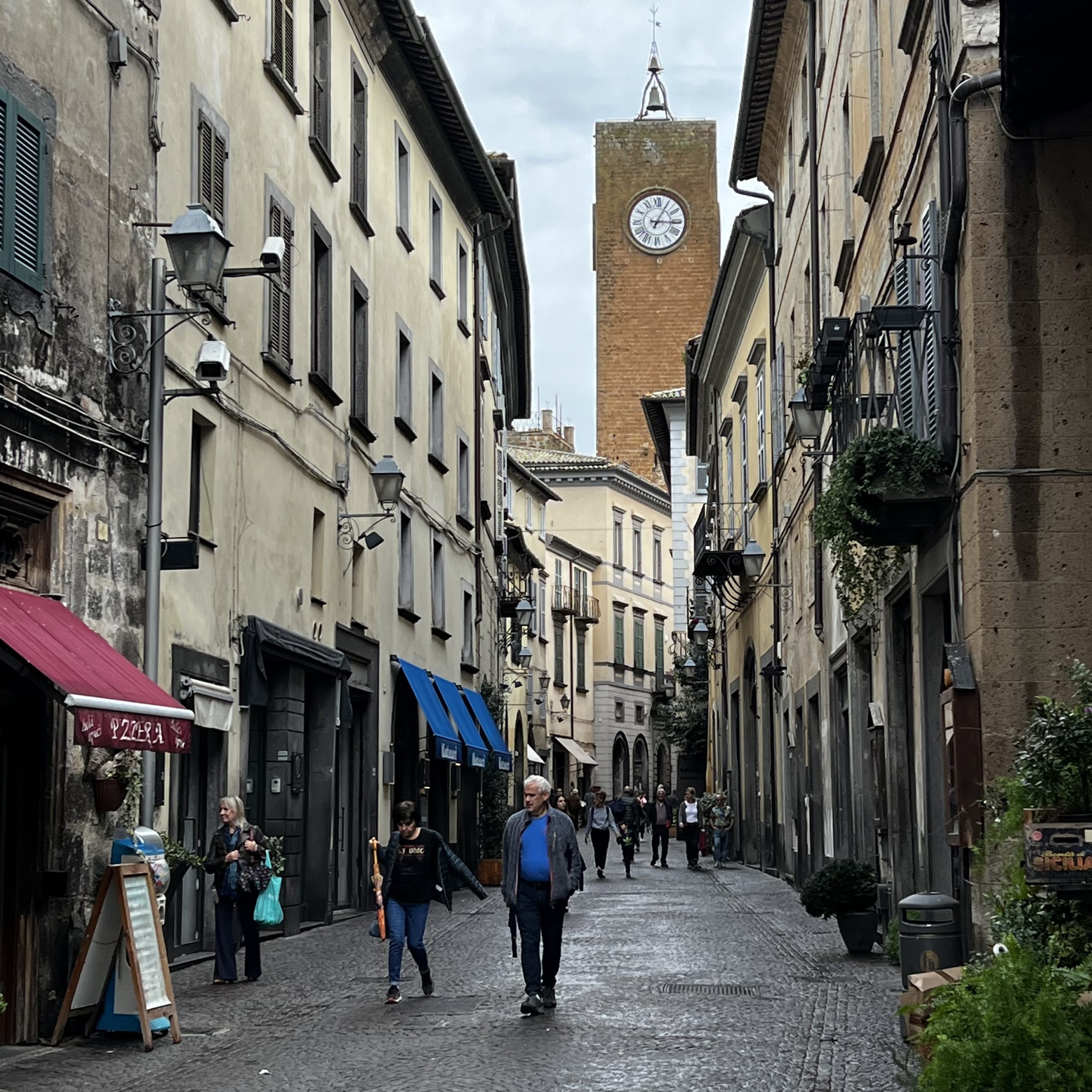

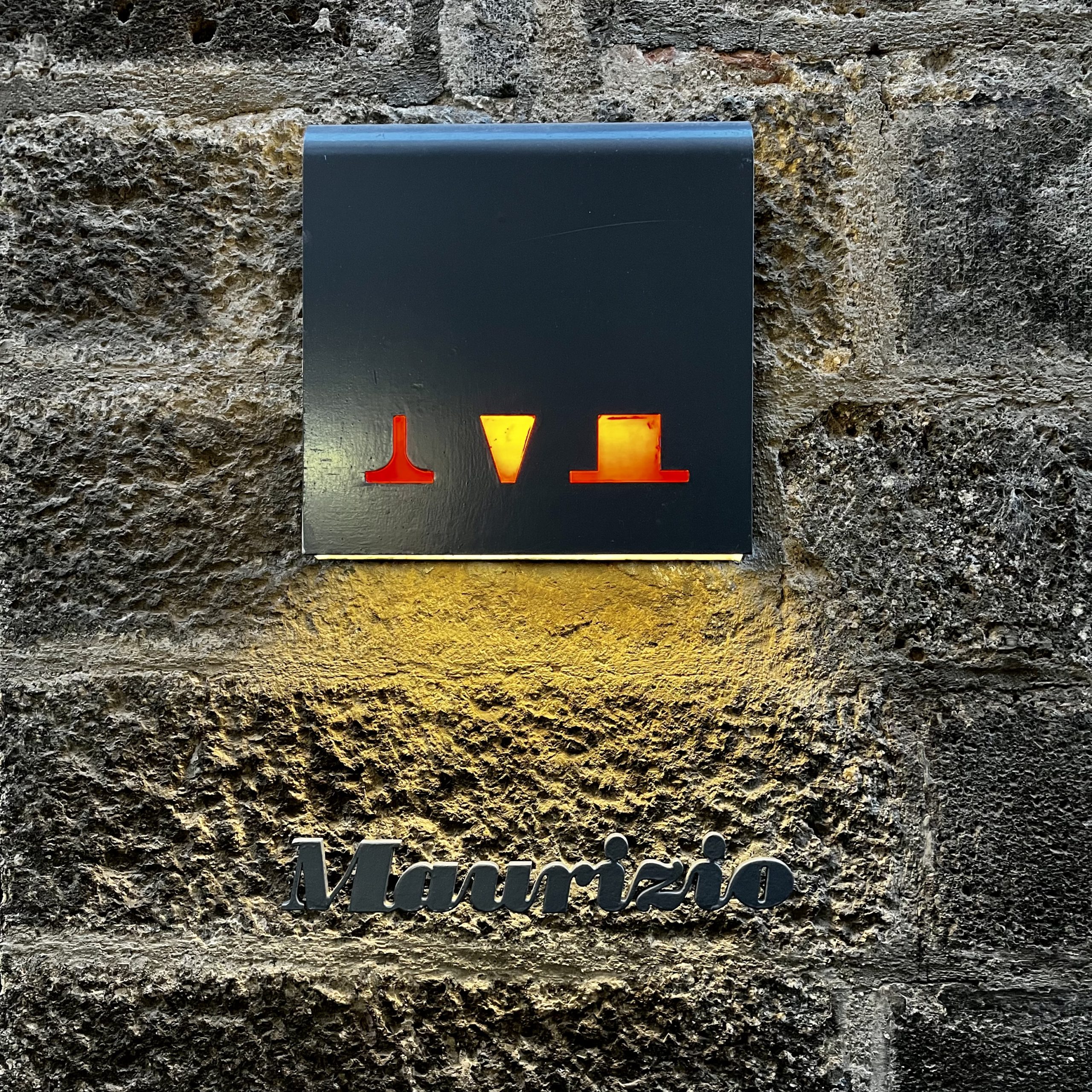
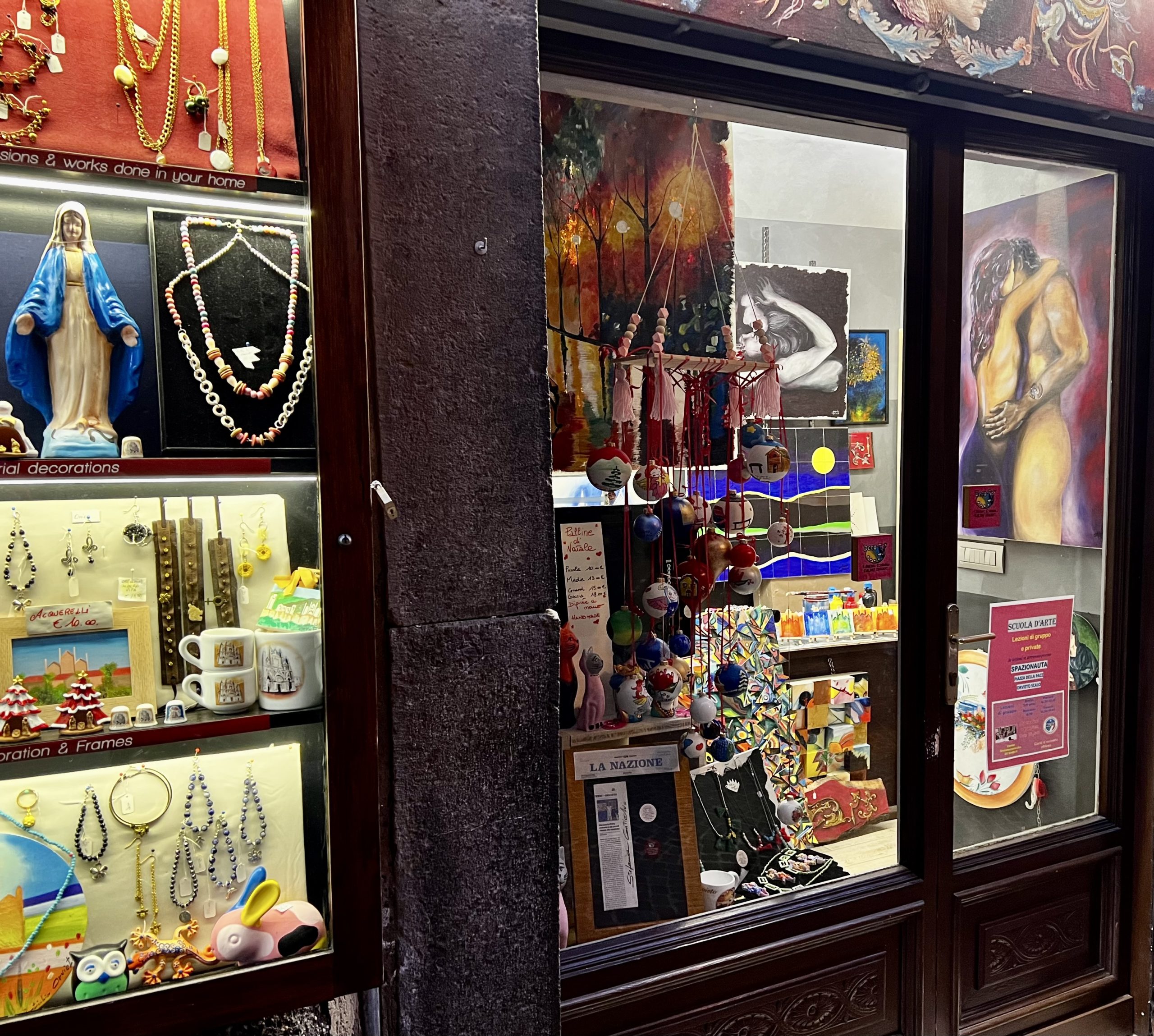
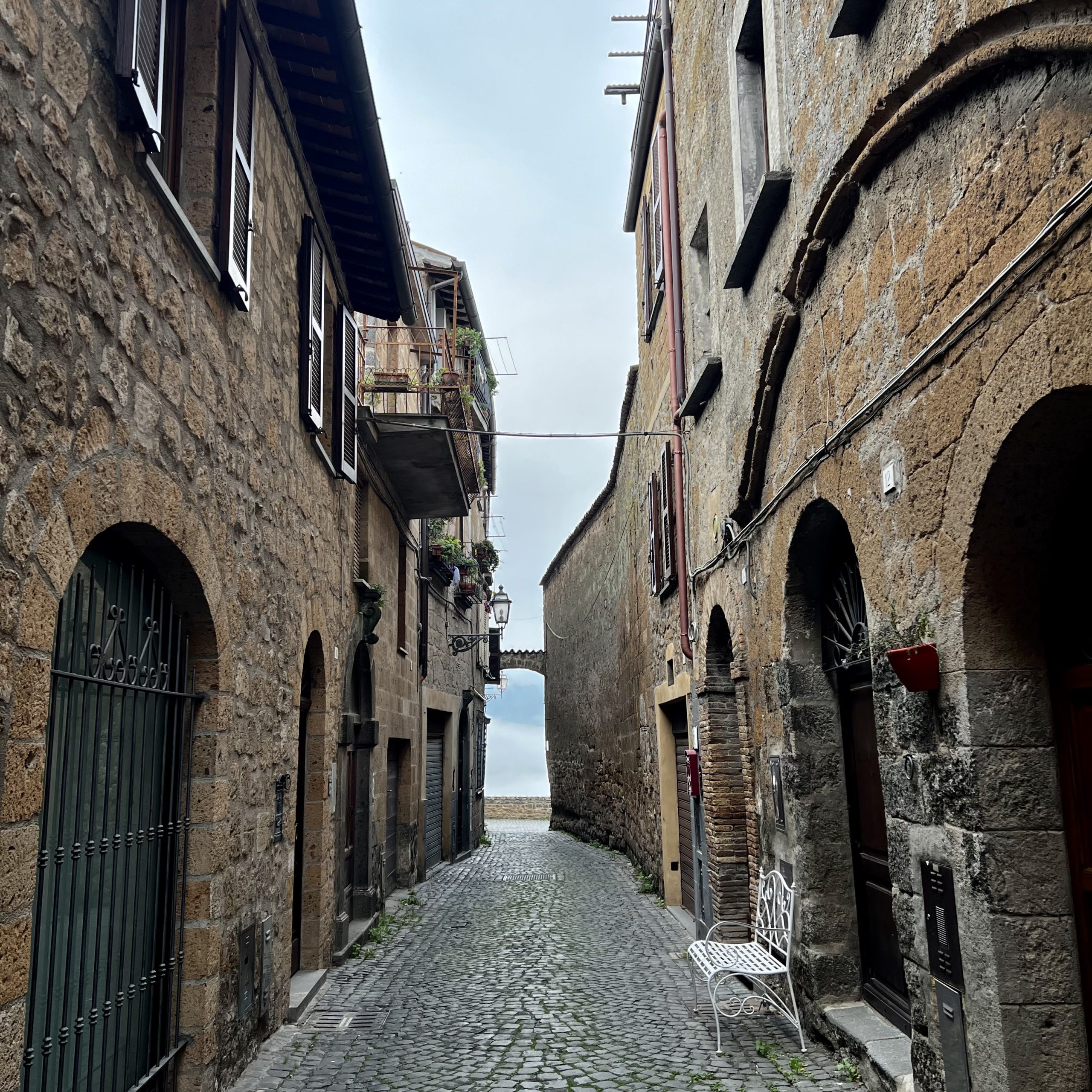
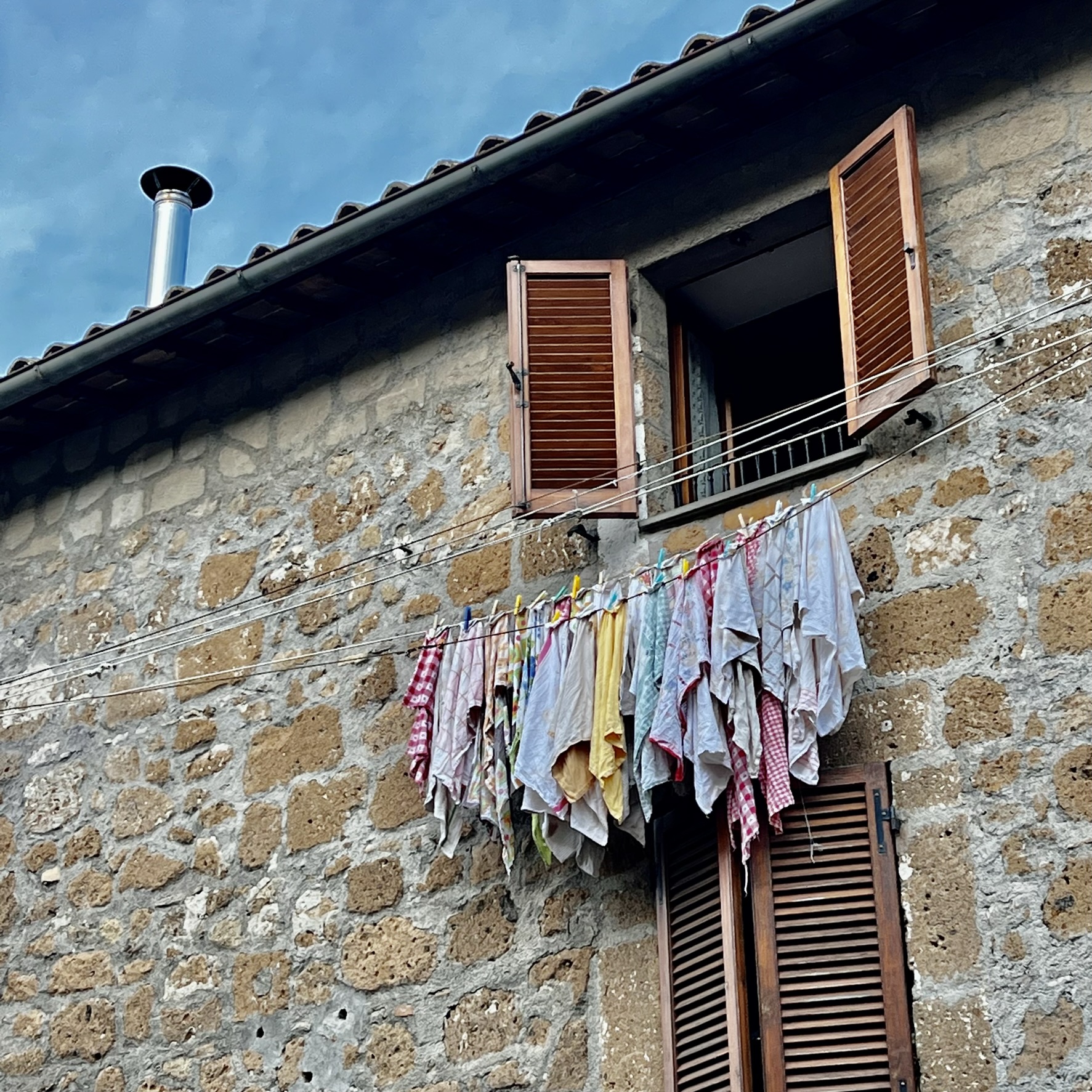

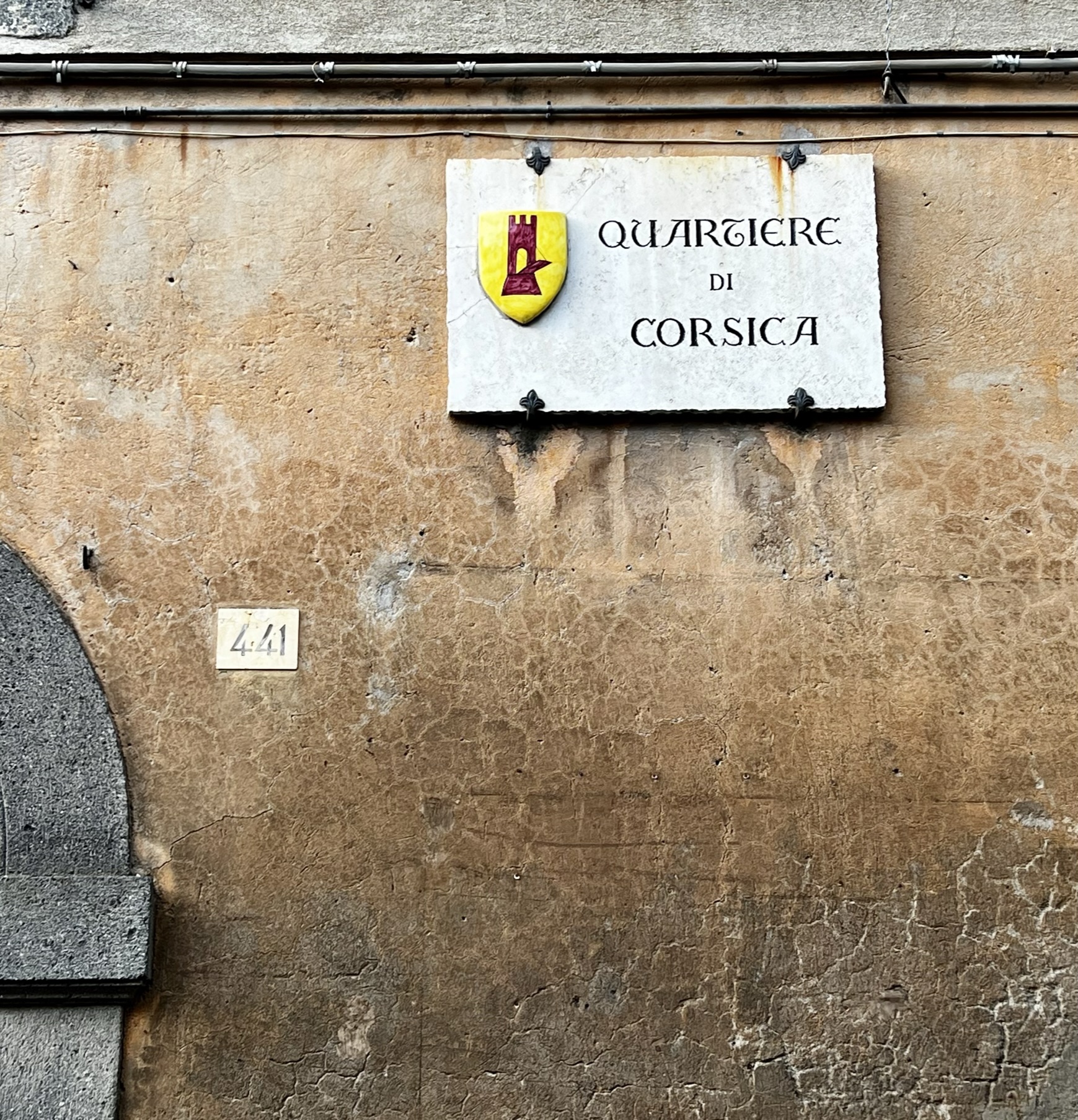
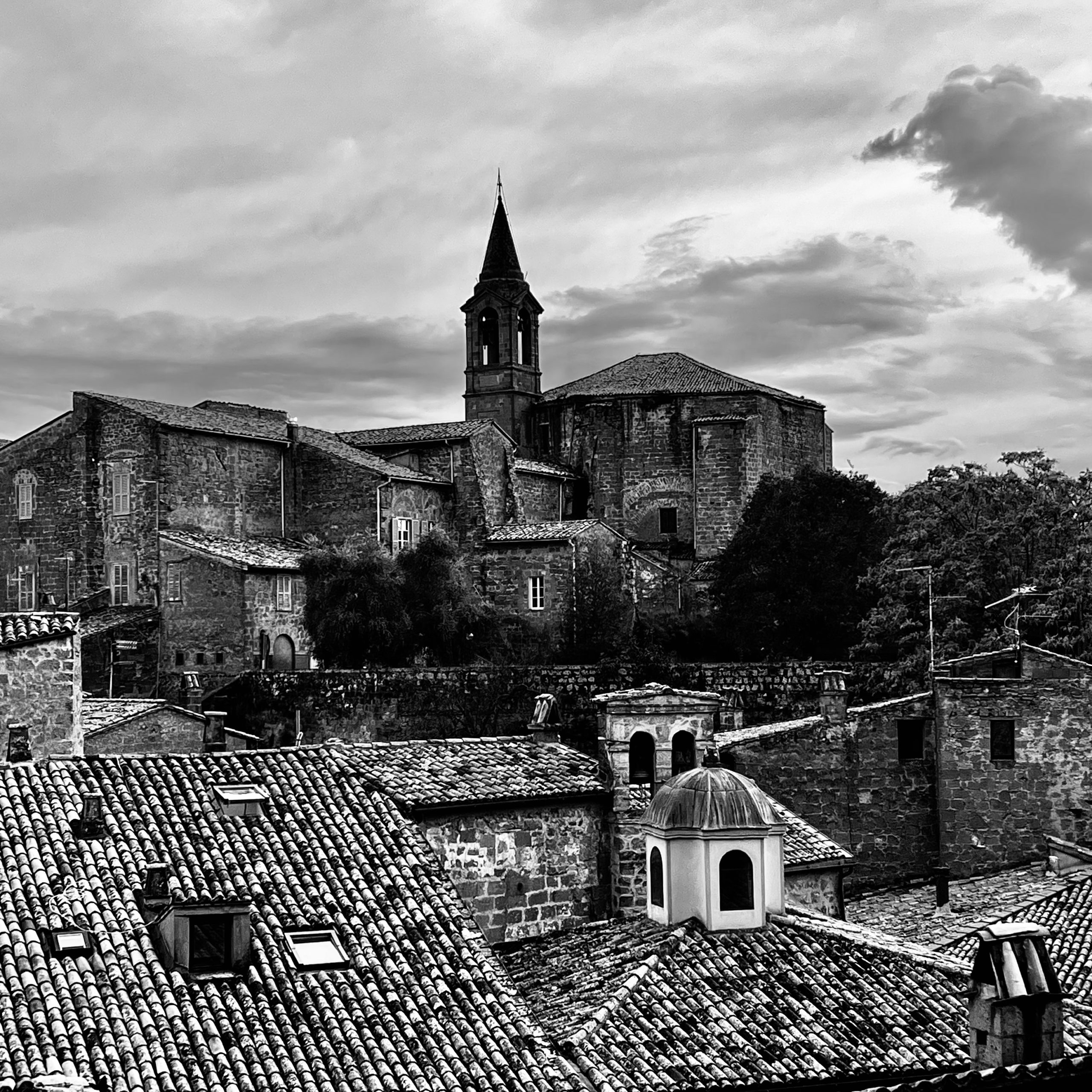
Underground Orvieto
Robert (not Bonnie) took the underground tour that starts near the Dumo. How can a guy not go on tour of caves?! Orvieto is riddled with hand-hewn caves that were begun by the Etruscans and expanded in subsequent centuries. The underlying volcanic tuff makes for “easy” excavation while retaining structural strength. Pozzolane, another product of the volcanic debris, is granular and lacks structure. But it has the unique characteristic of acting like cement when combined with water. This material was excavated to construct Orvieto. There are 1200 known caves (show in red in an image below), 440 of which have been surveyed. Many are in private ownership. Some were used as secret escape routes. A few today make a great setting for a restaurant. We went to one. The tour guide took went to two sets of caves. It was all in Italian and she spoke fast! Robert understood about eighty percent. Not bad, considering.
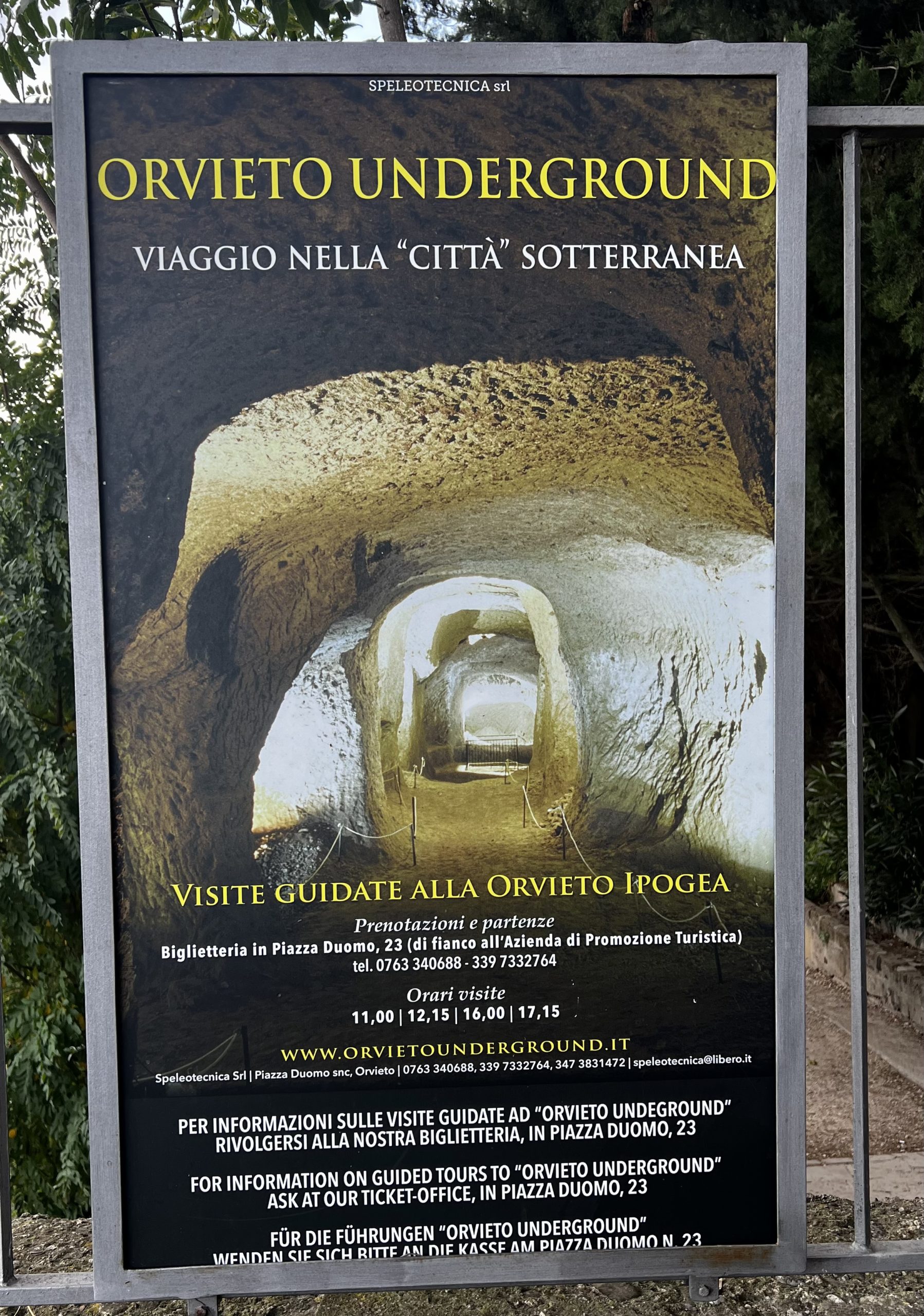
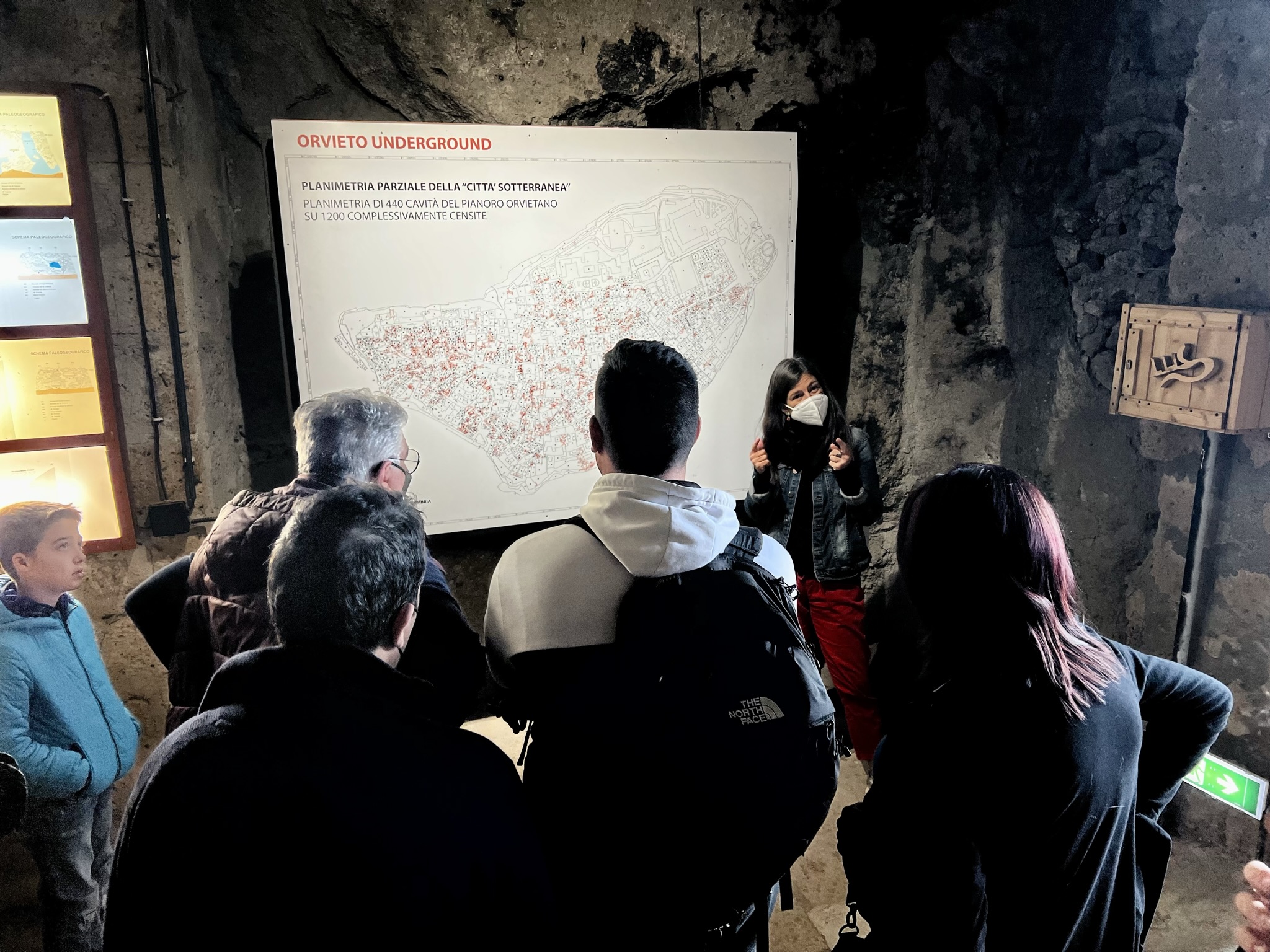
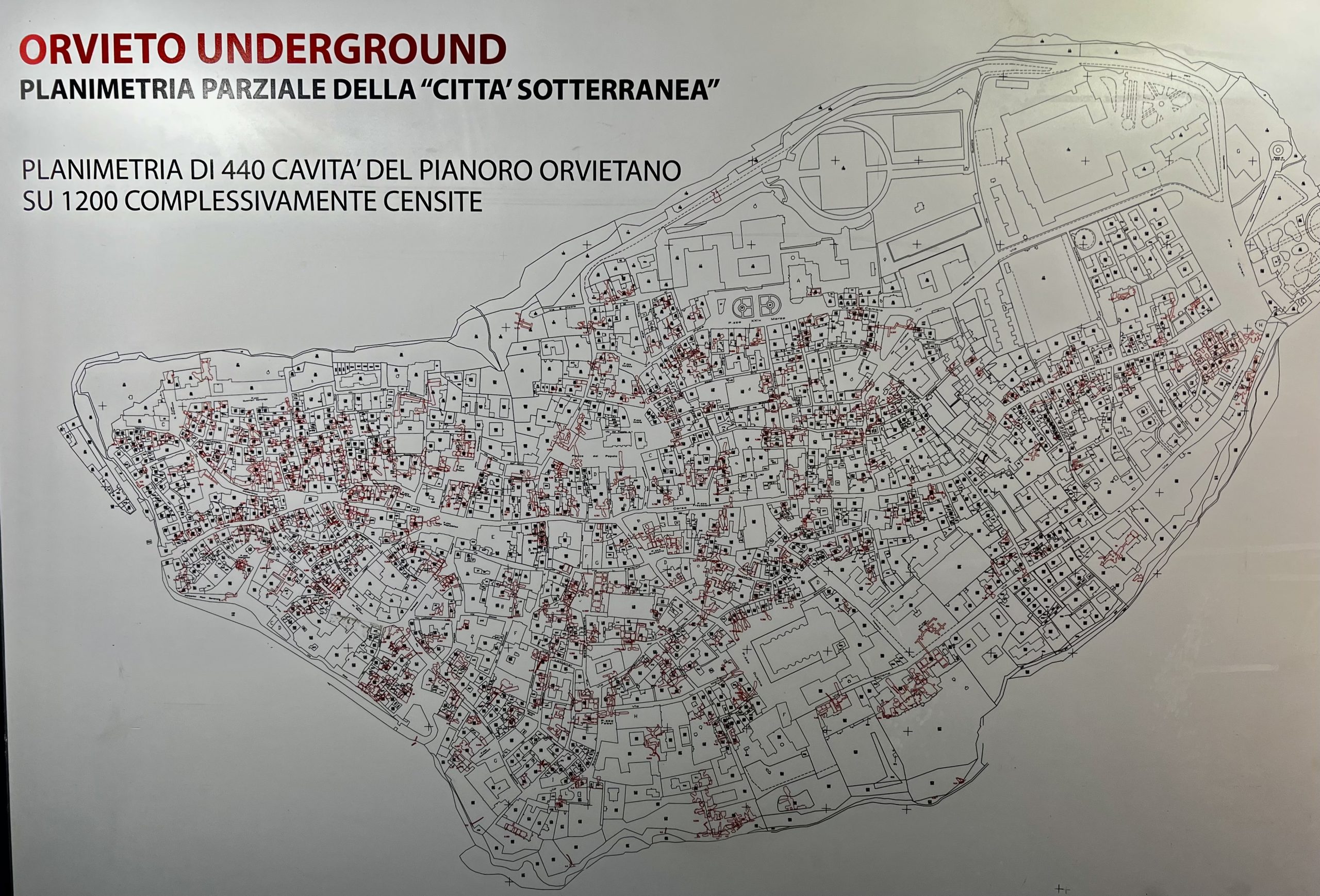
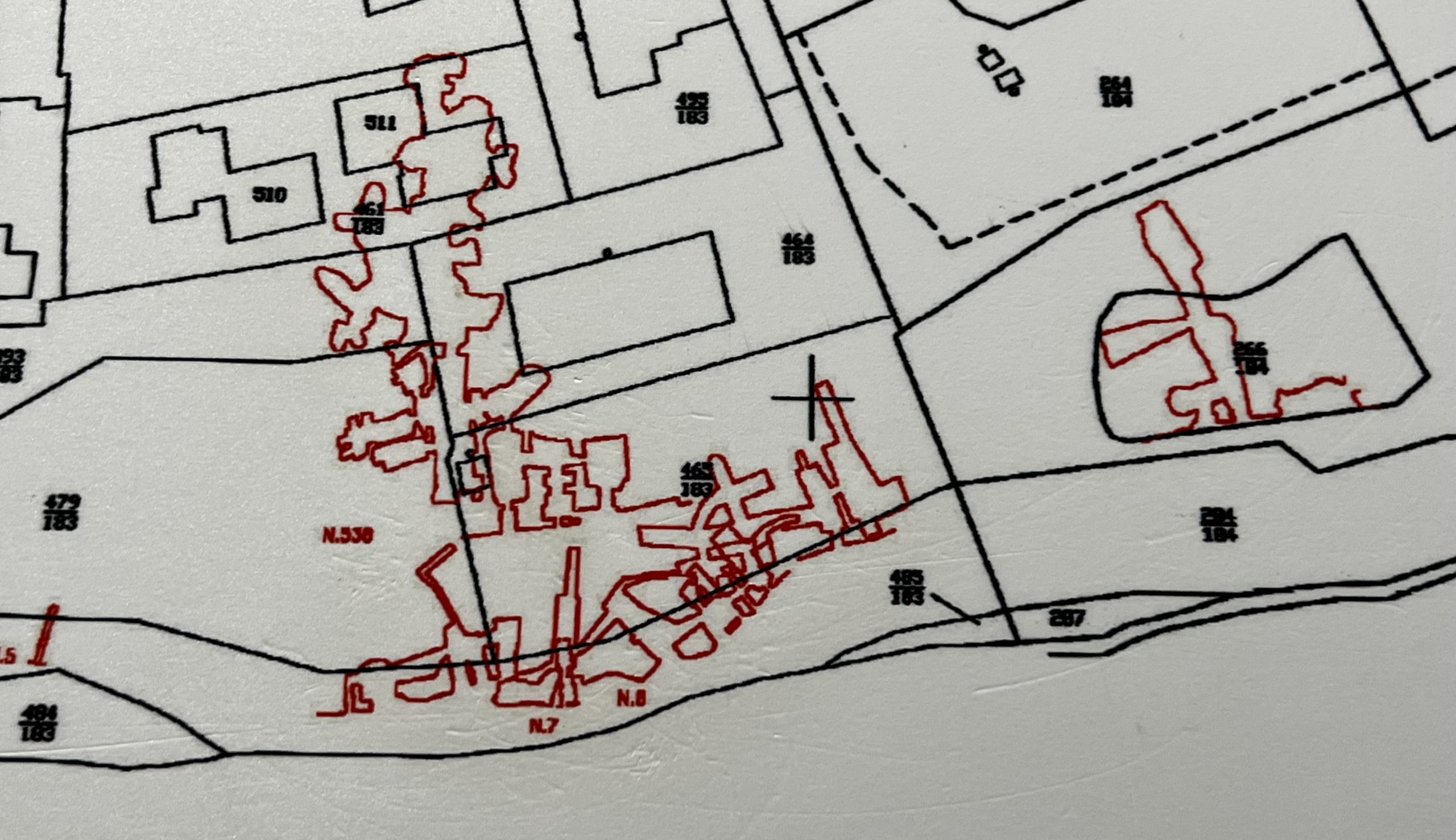
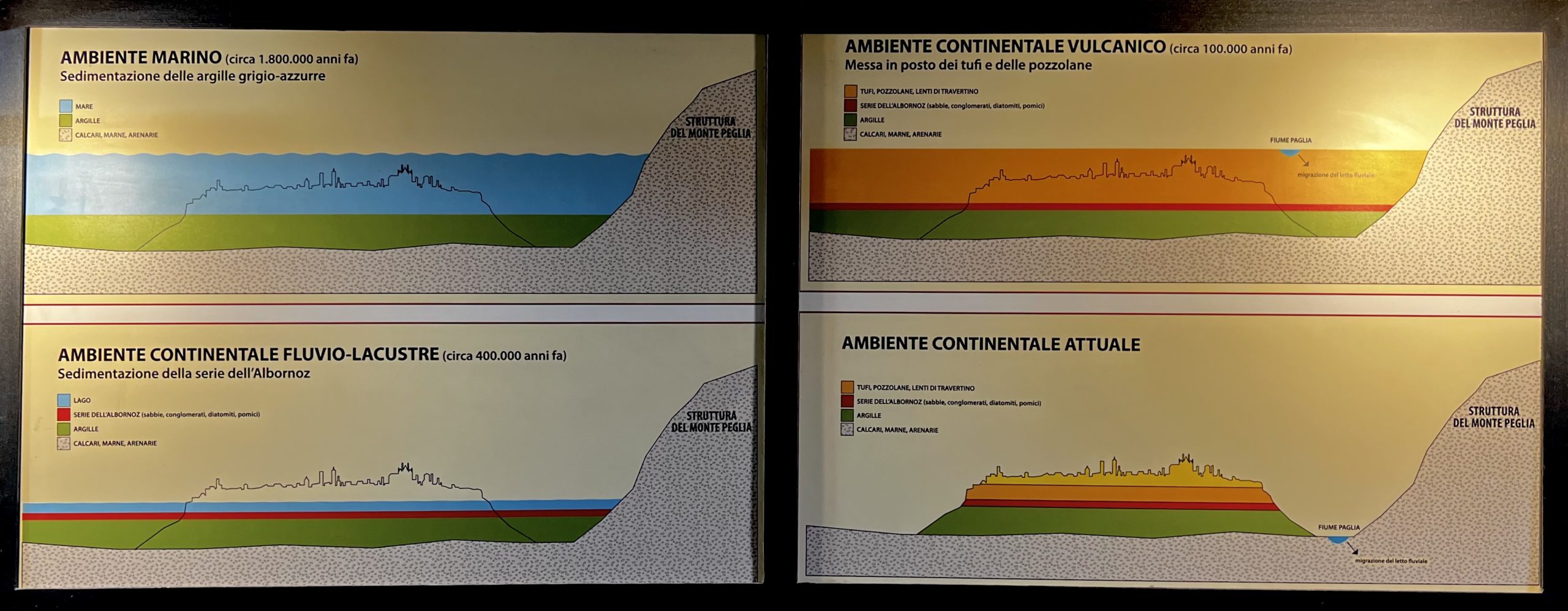

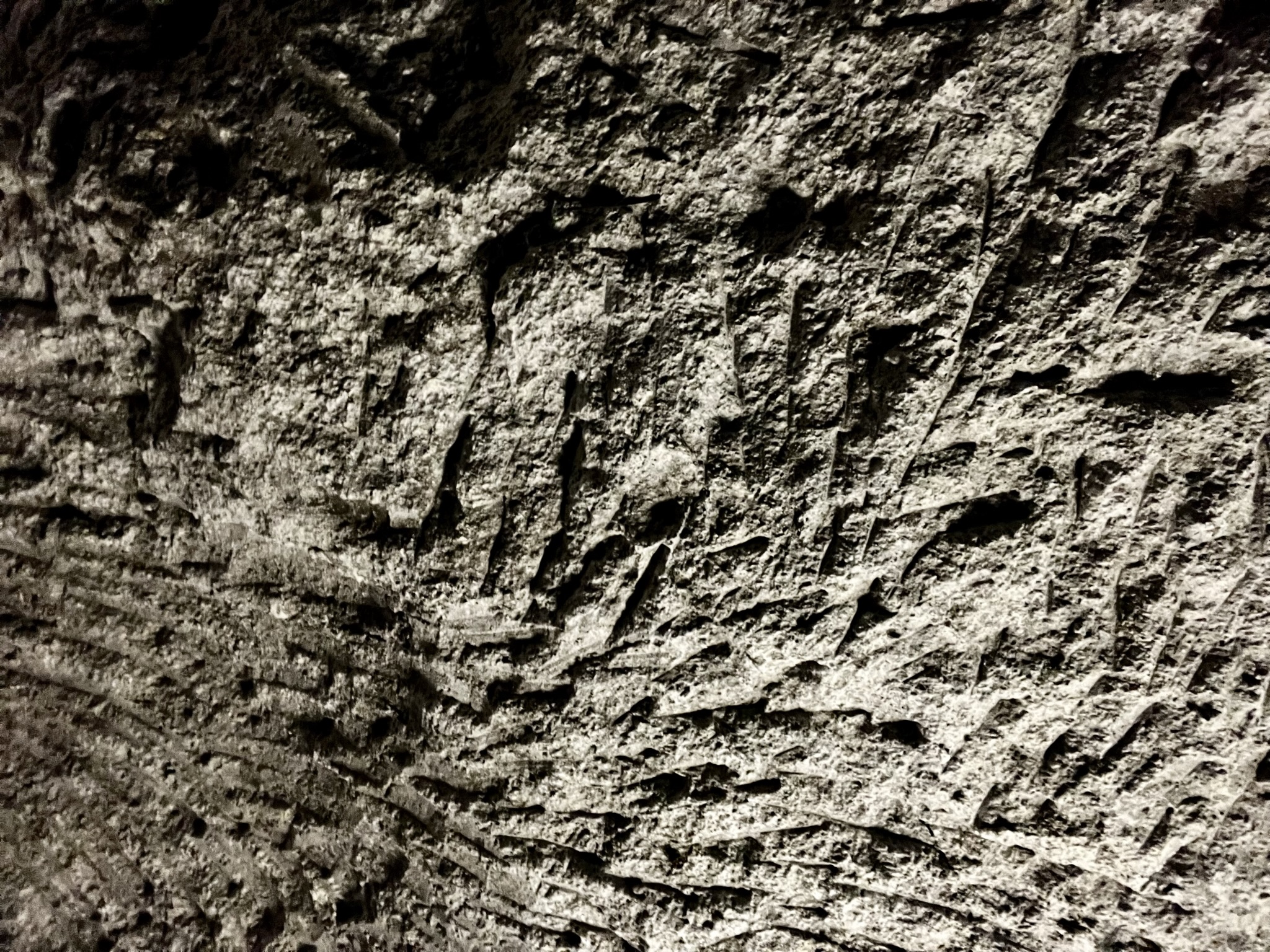
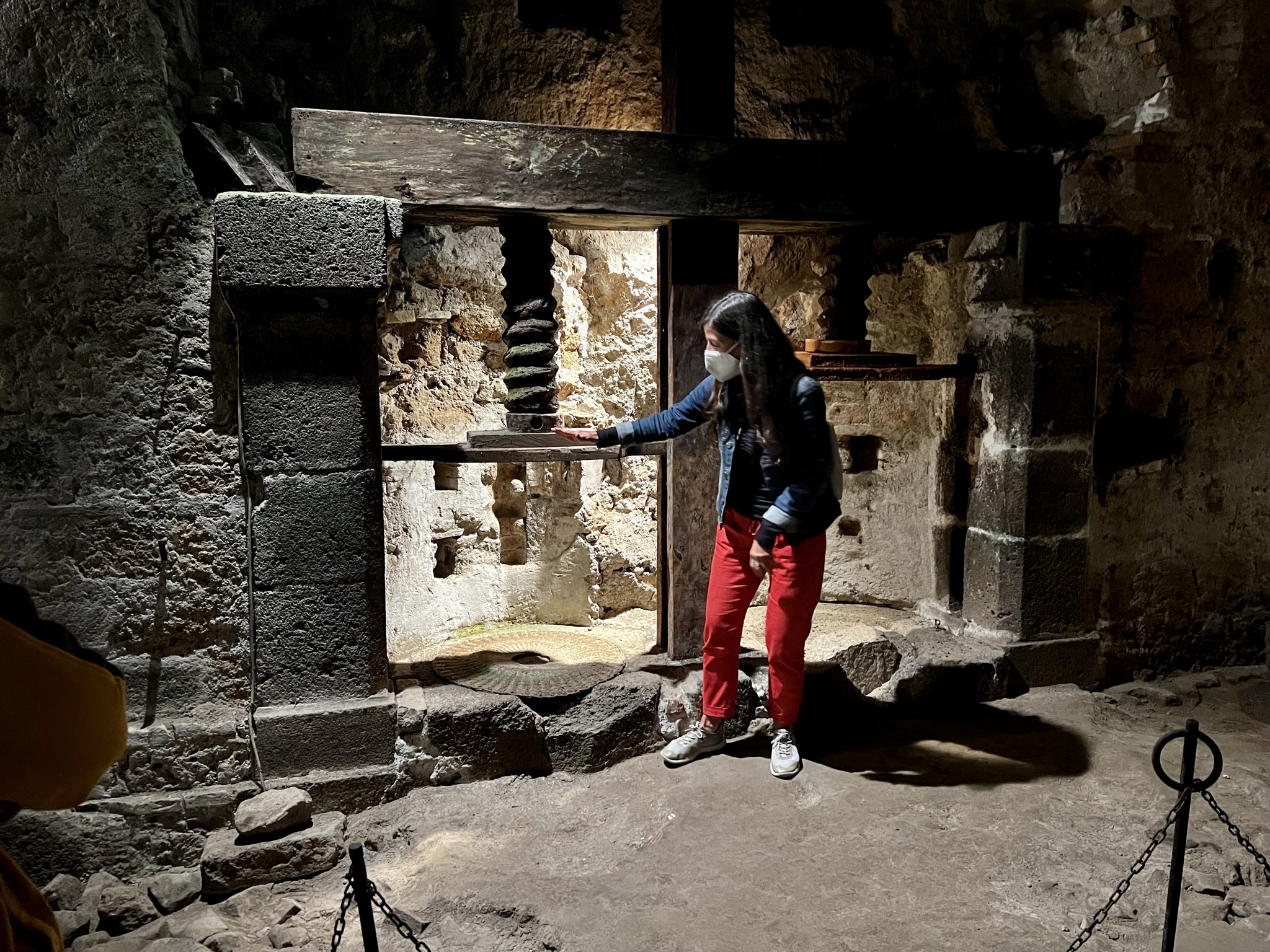
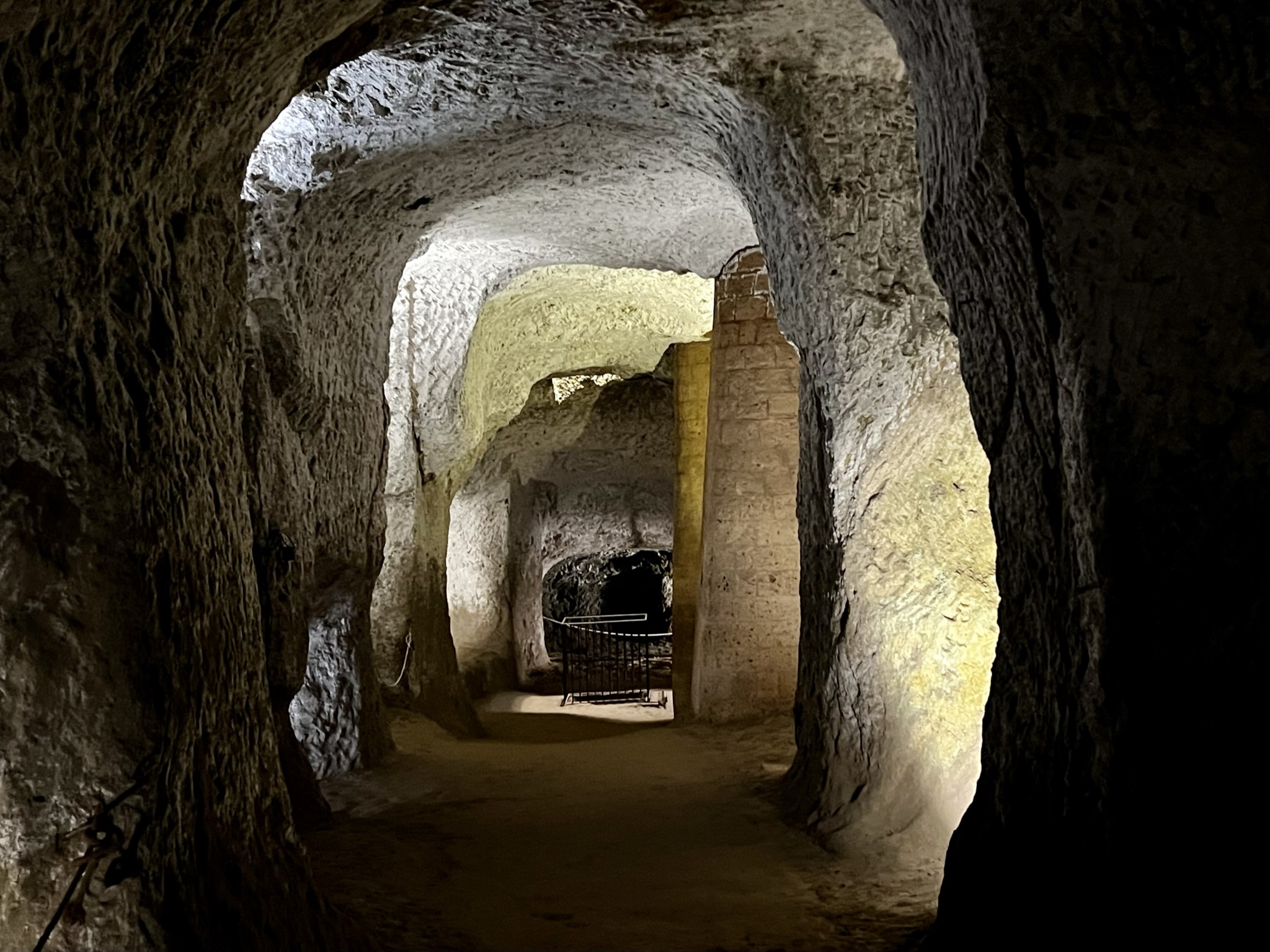

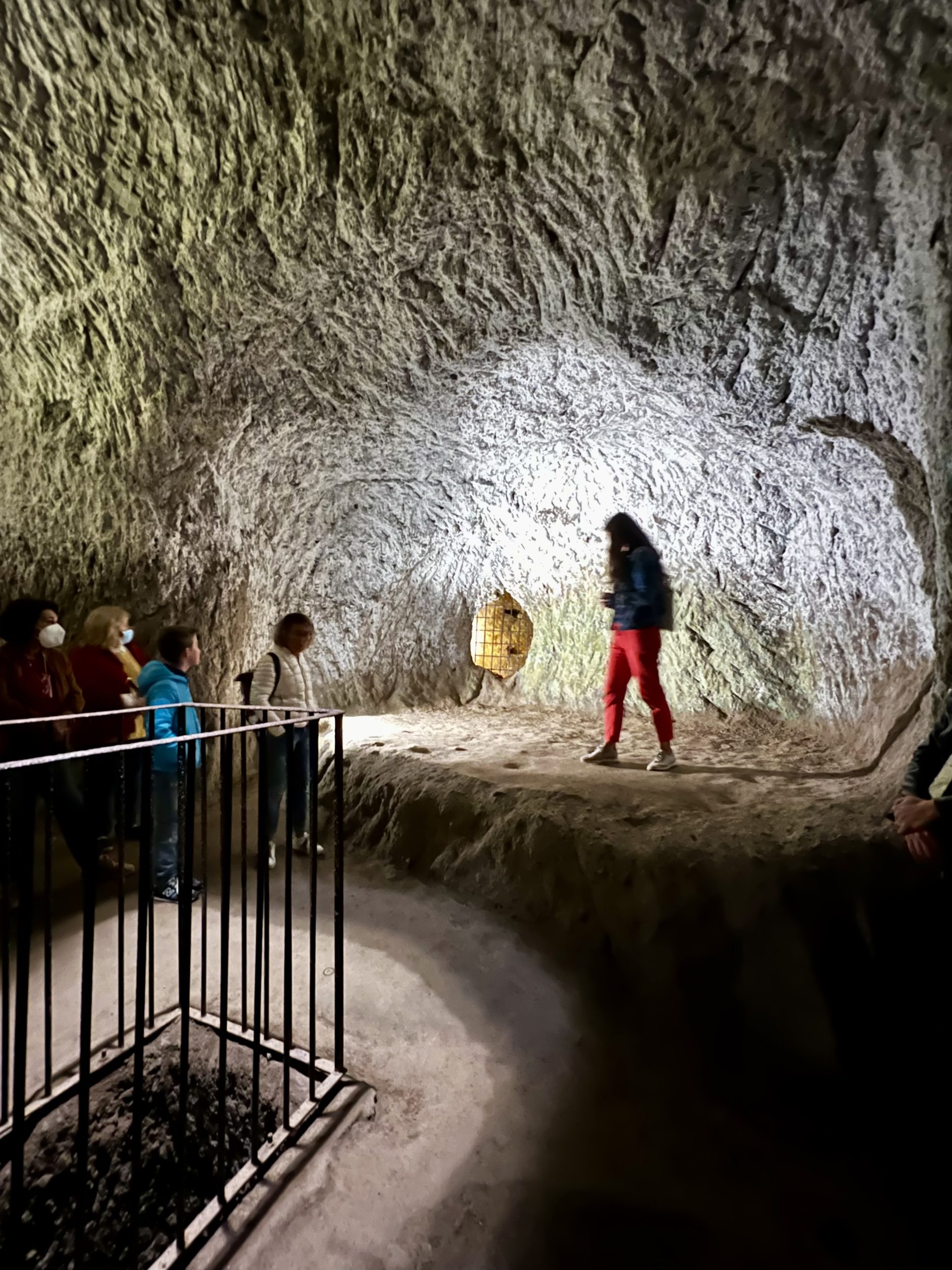
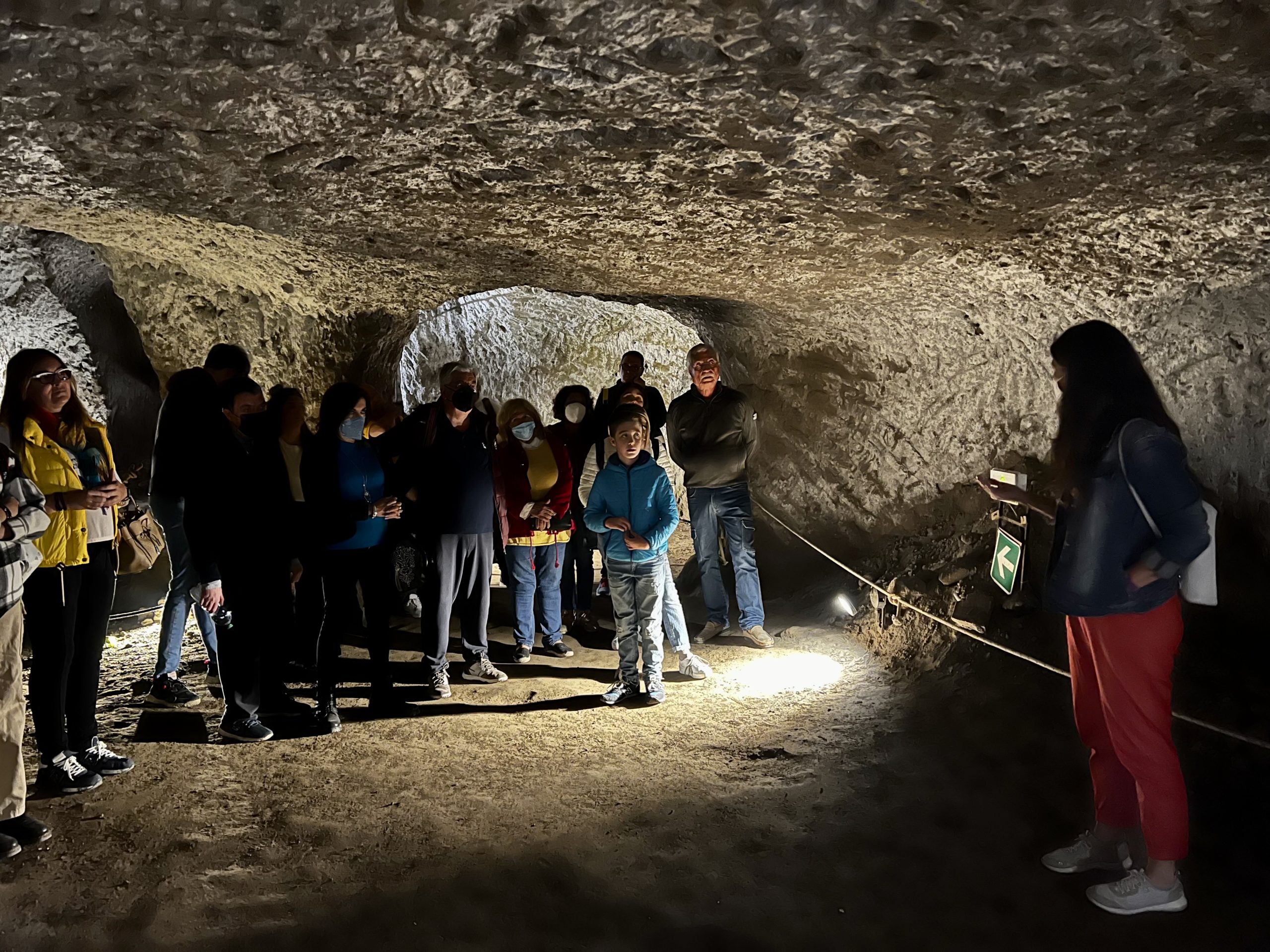
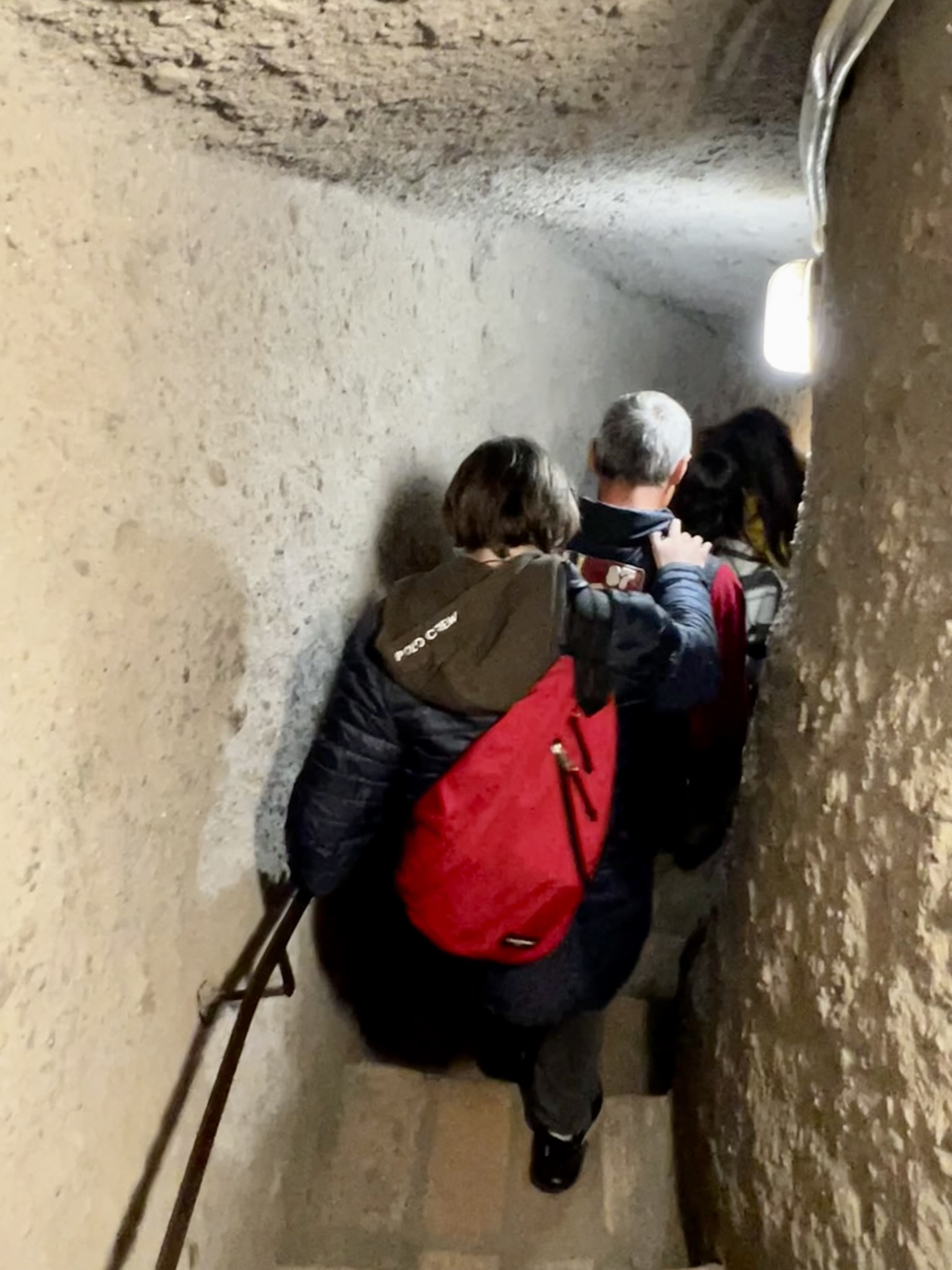
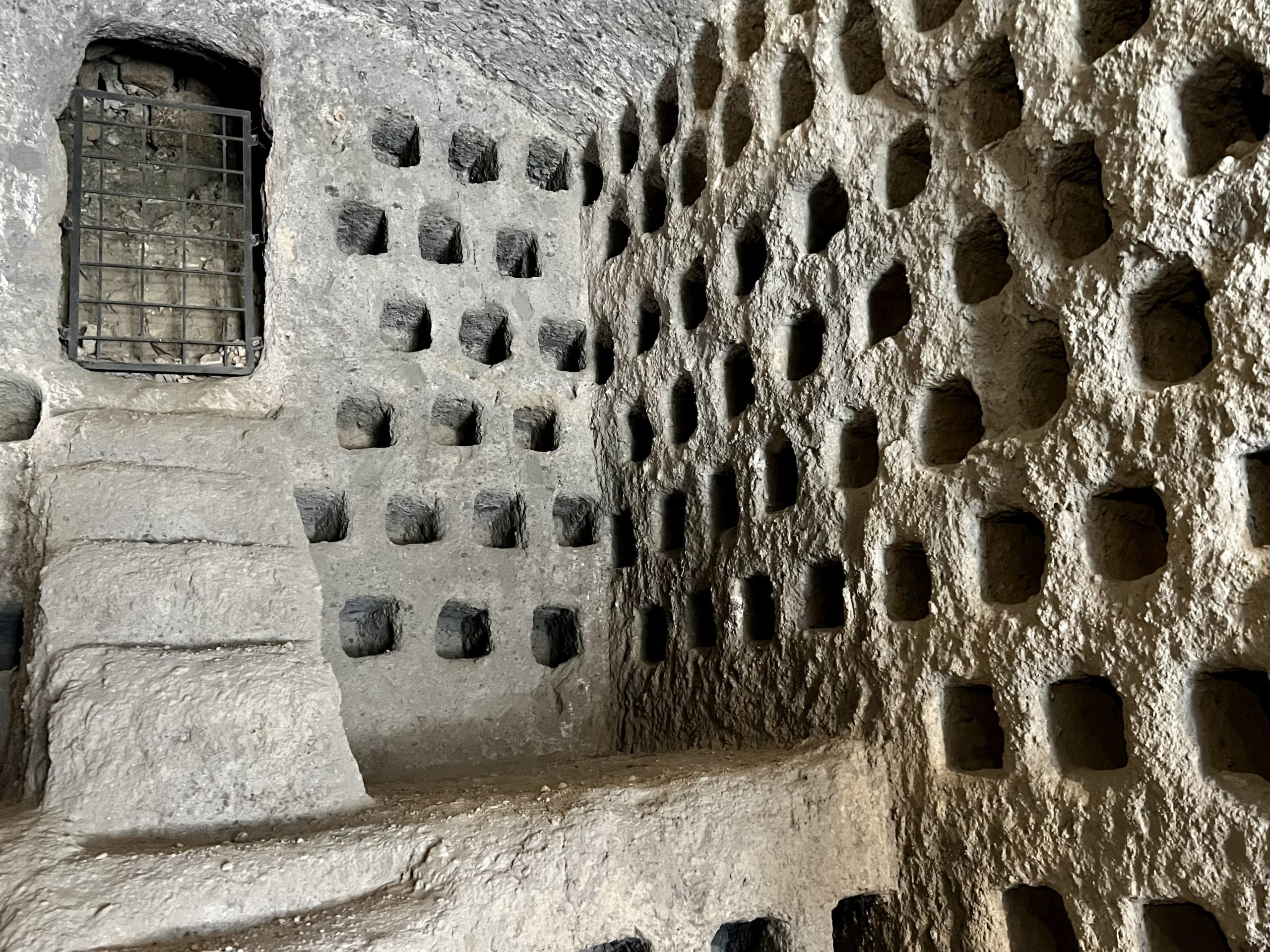
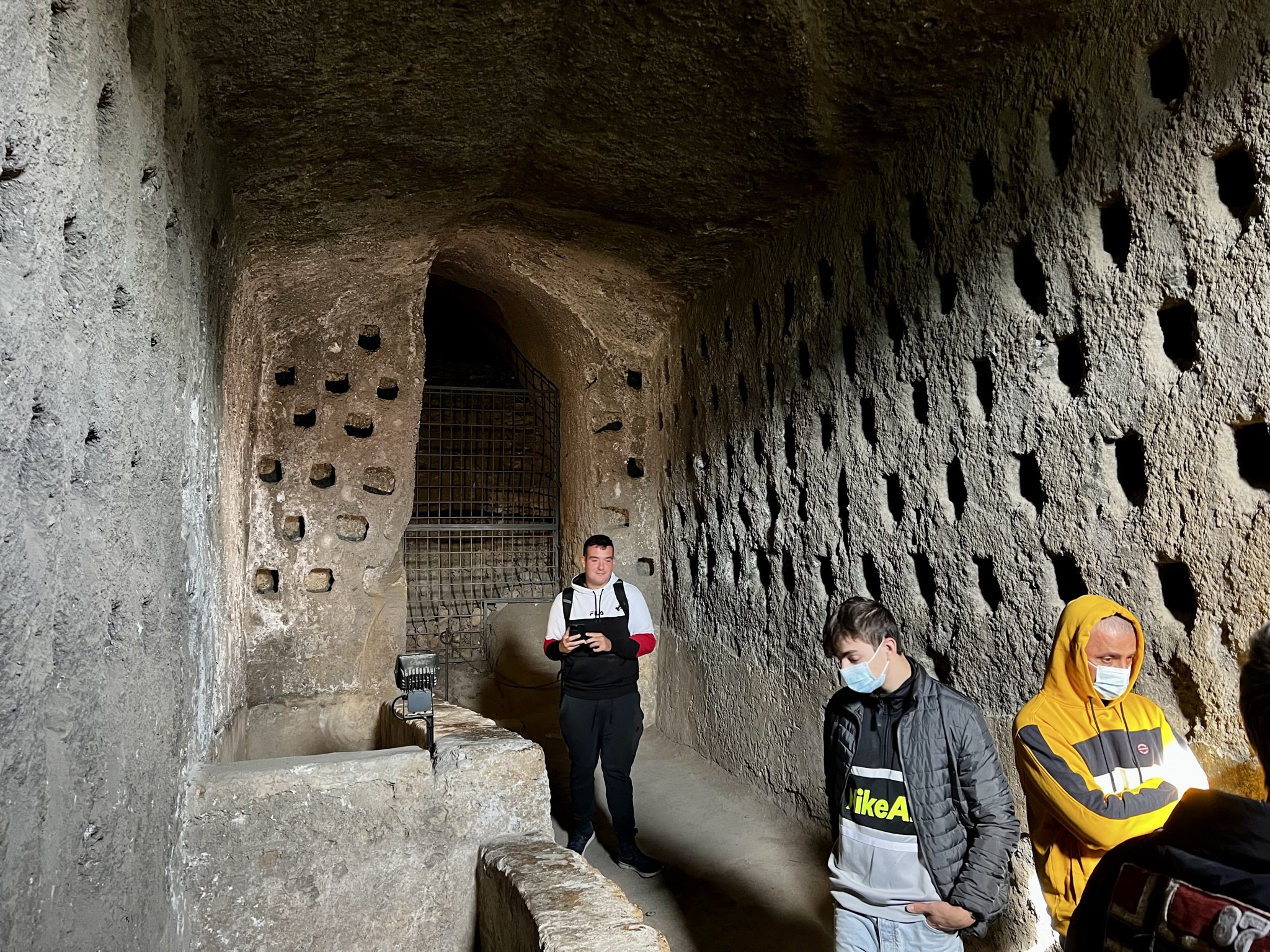
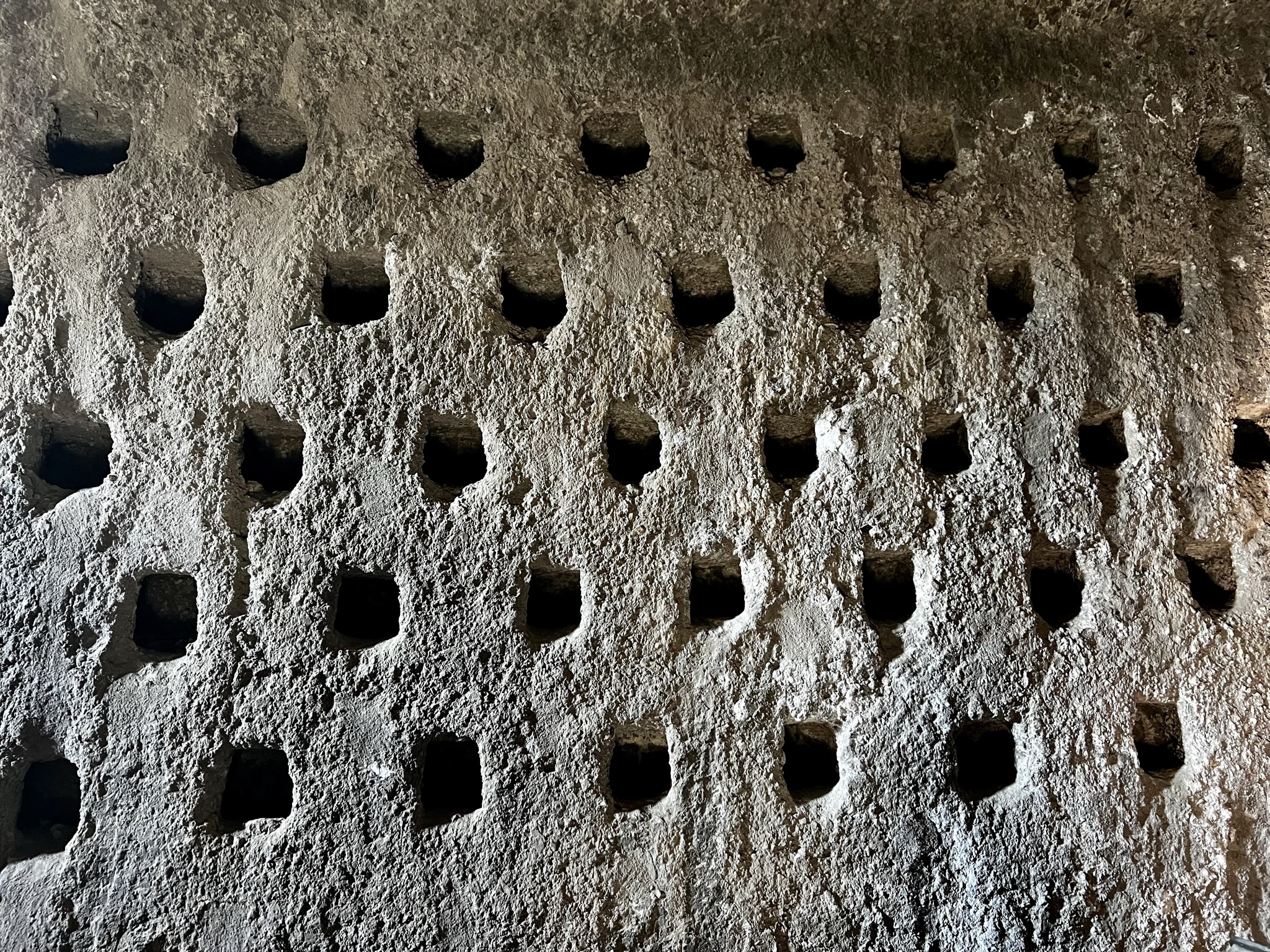
St. Patrick’s Well
It appears that popes did not live in the Vatican 100 percent of the time. They often left Rome when it was threatened or under siege. These popes would establish residency in a variety of towns and Orvieto appears to have been favored for these extended stays. In one case, Pope Clement VII had a well dug to assure a water supply should Orvieto be under siege. He had the well dug (carved out of the tuff) between 1527 and 1537 and it was completed during the papacy of Pope Paul III. The well is about 174 feet deep and is surrounded by a double ramp helix to allow mules to carry empty barrels down and full barrels up without encountering each other. Windows provide natural light at all levels. Robert took the walk down and up while Bonnie enjoyed the view outside.
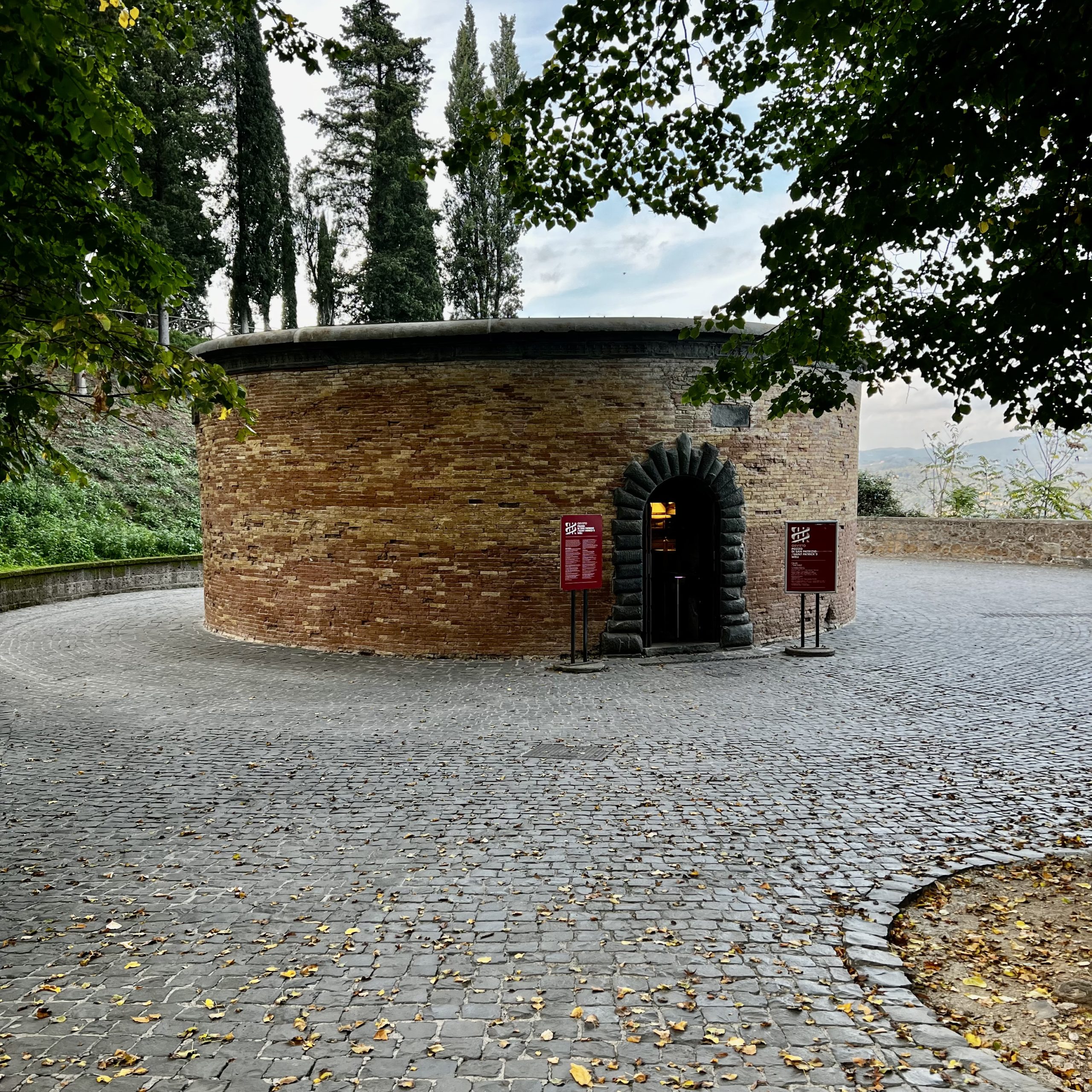
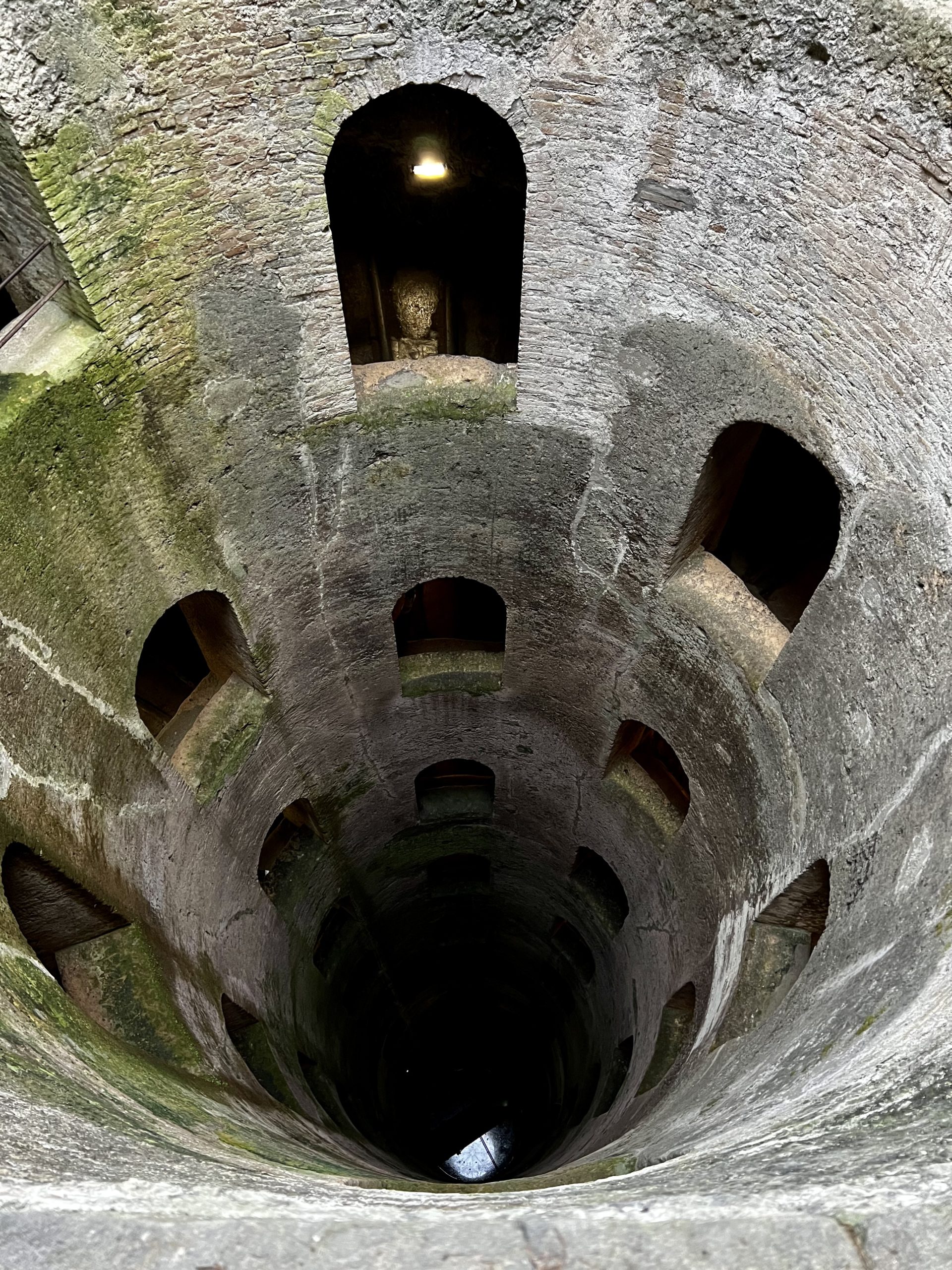
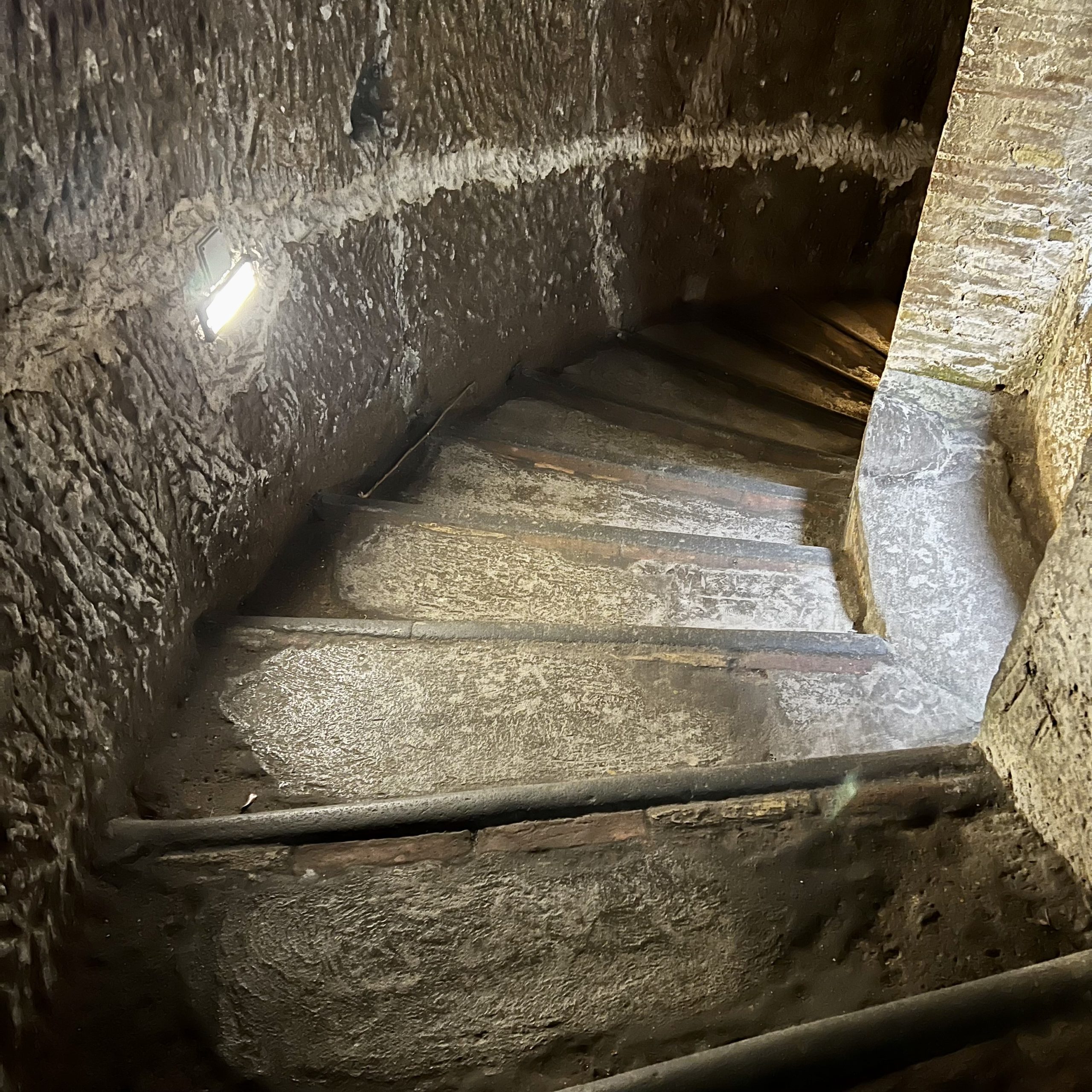
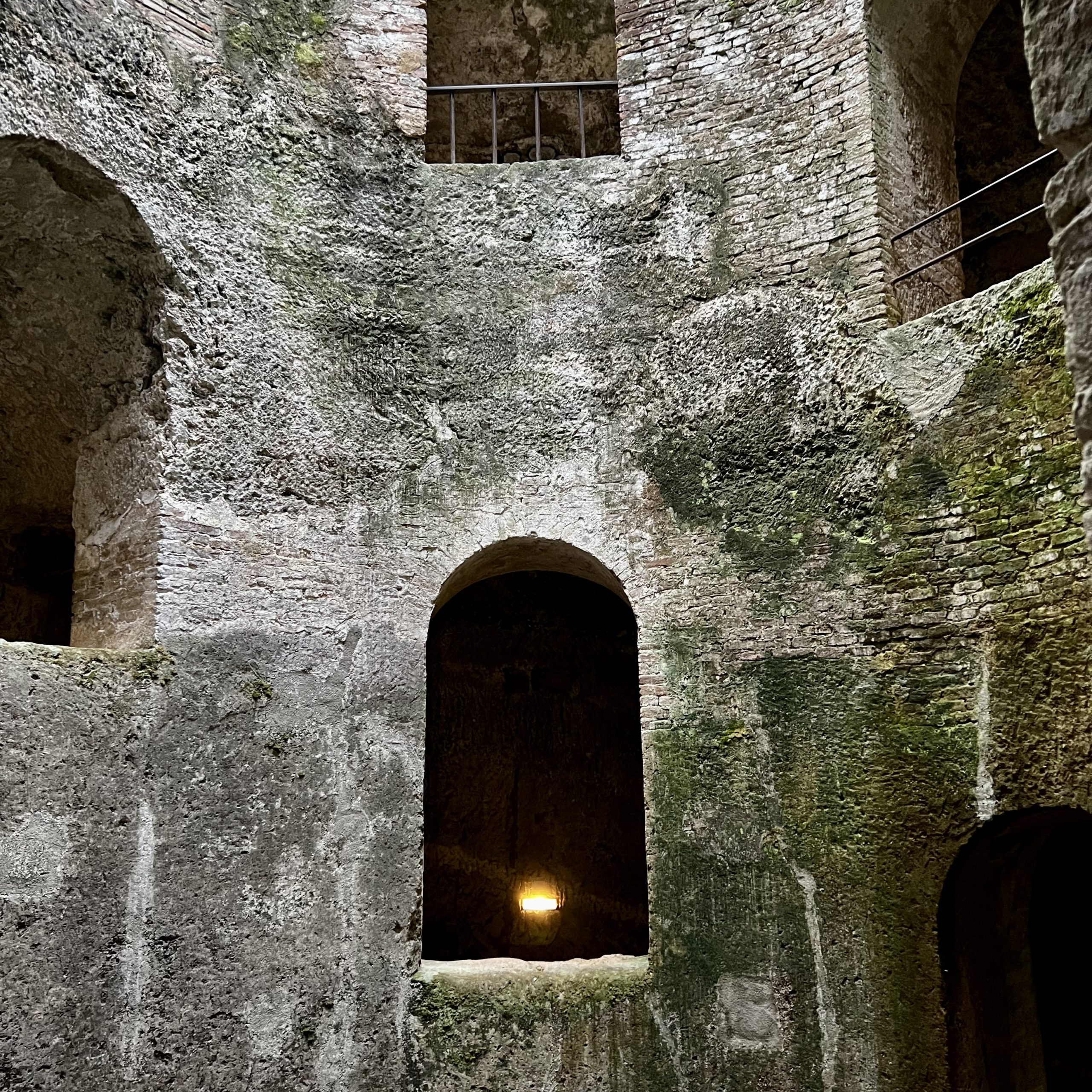
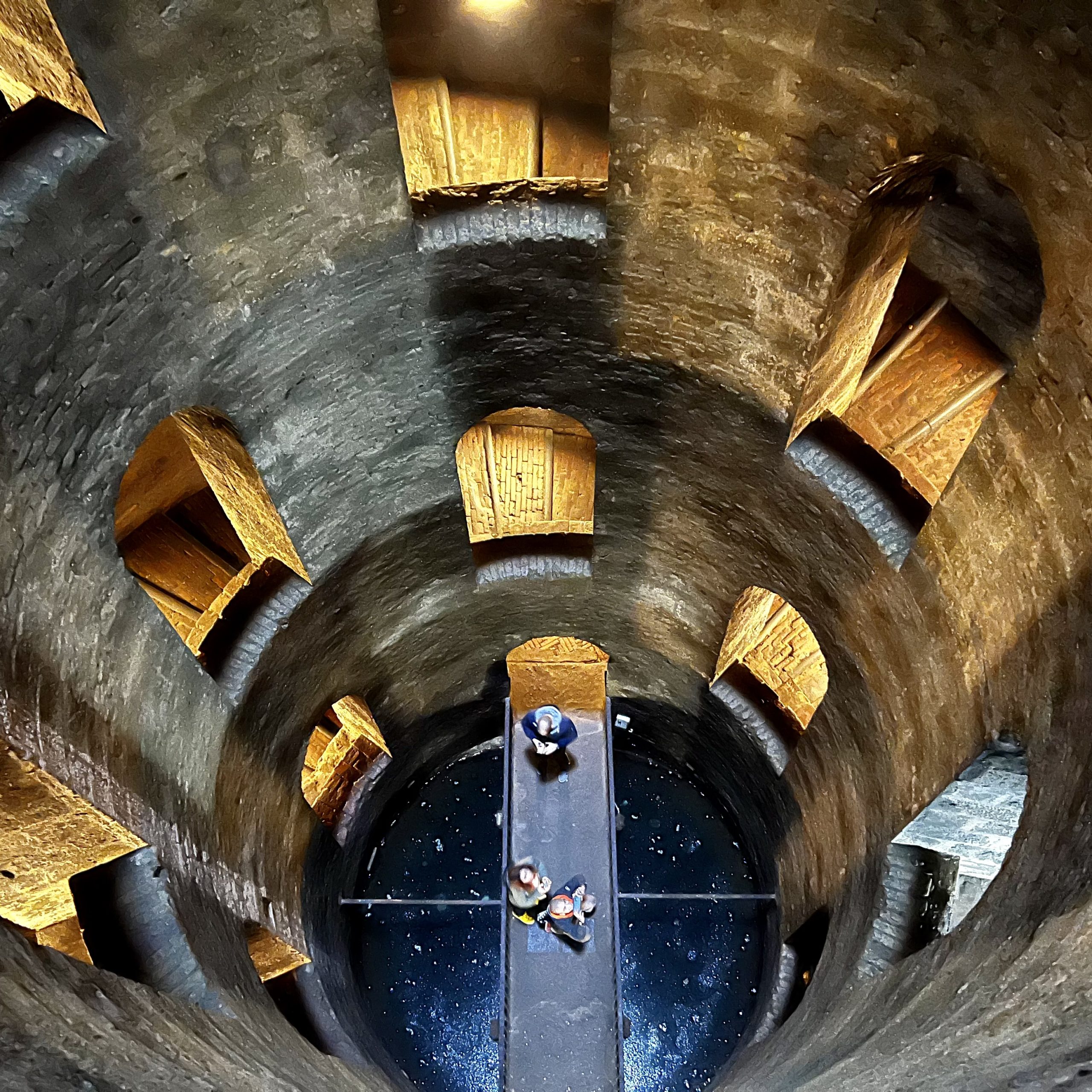
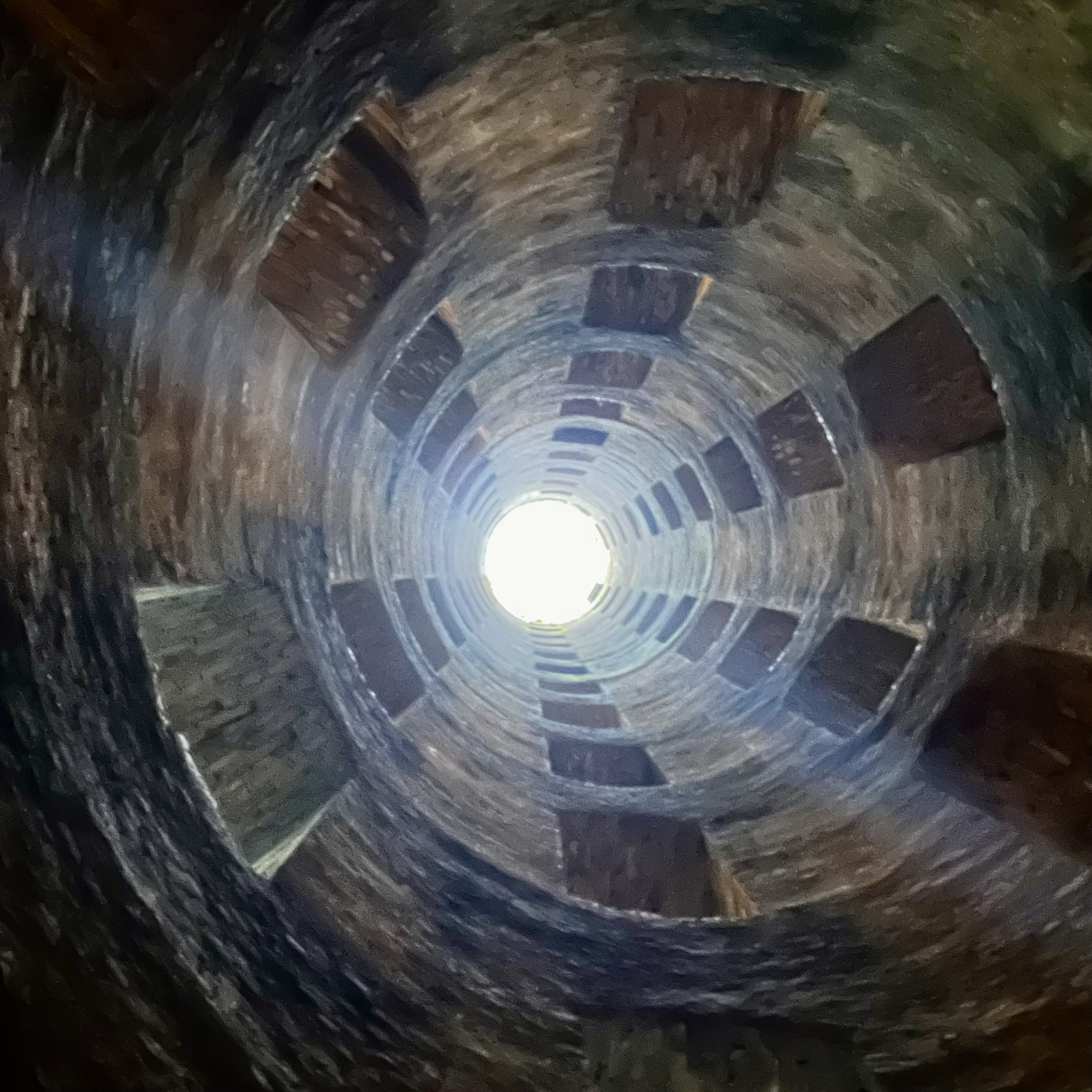
Museo Archeolgico Nationale di Orvieto
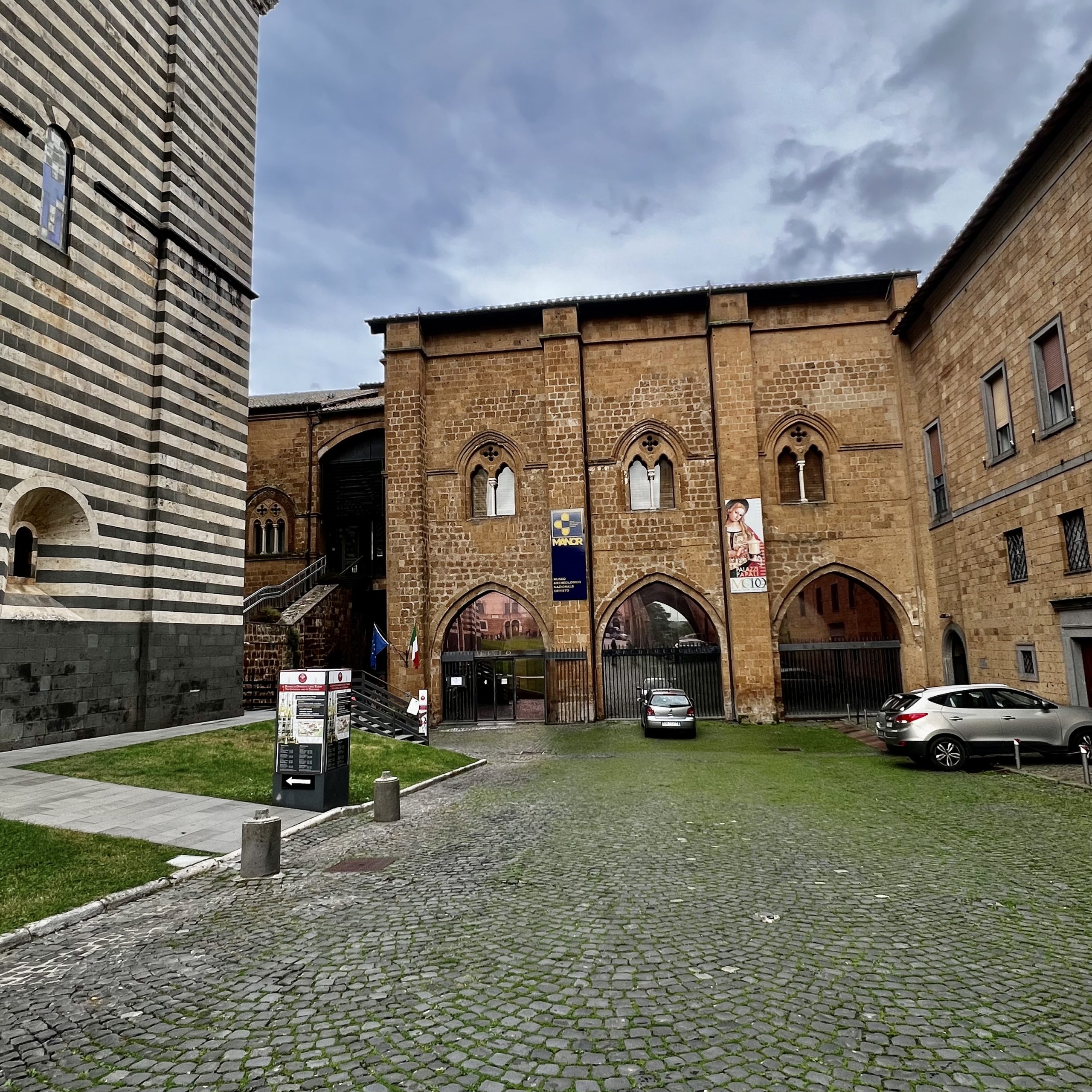
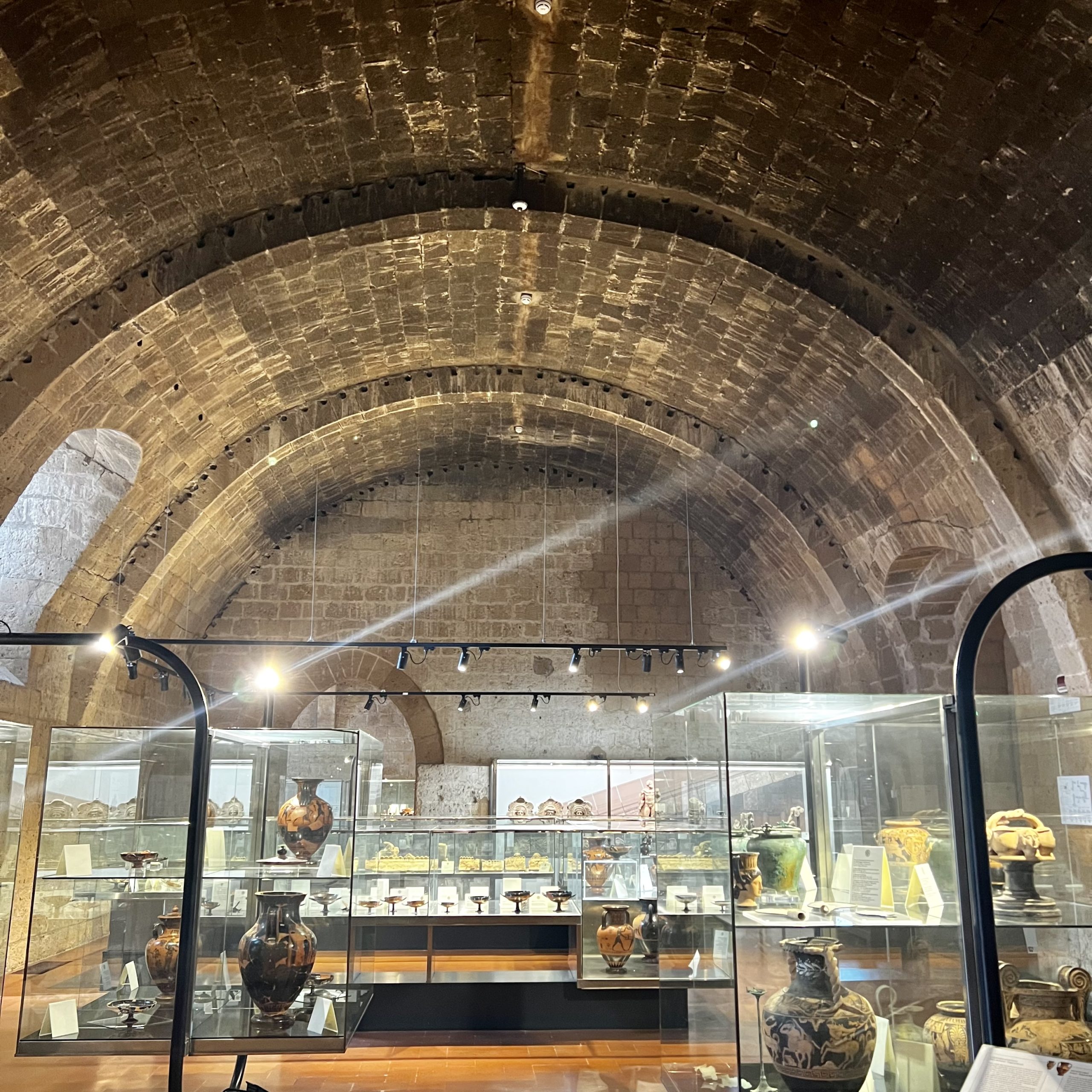
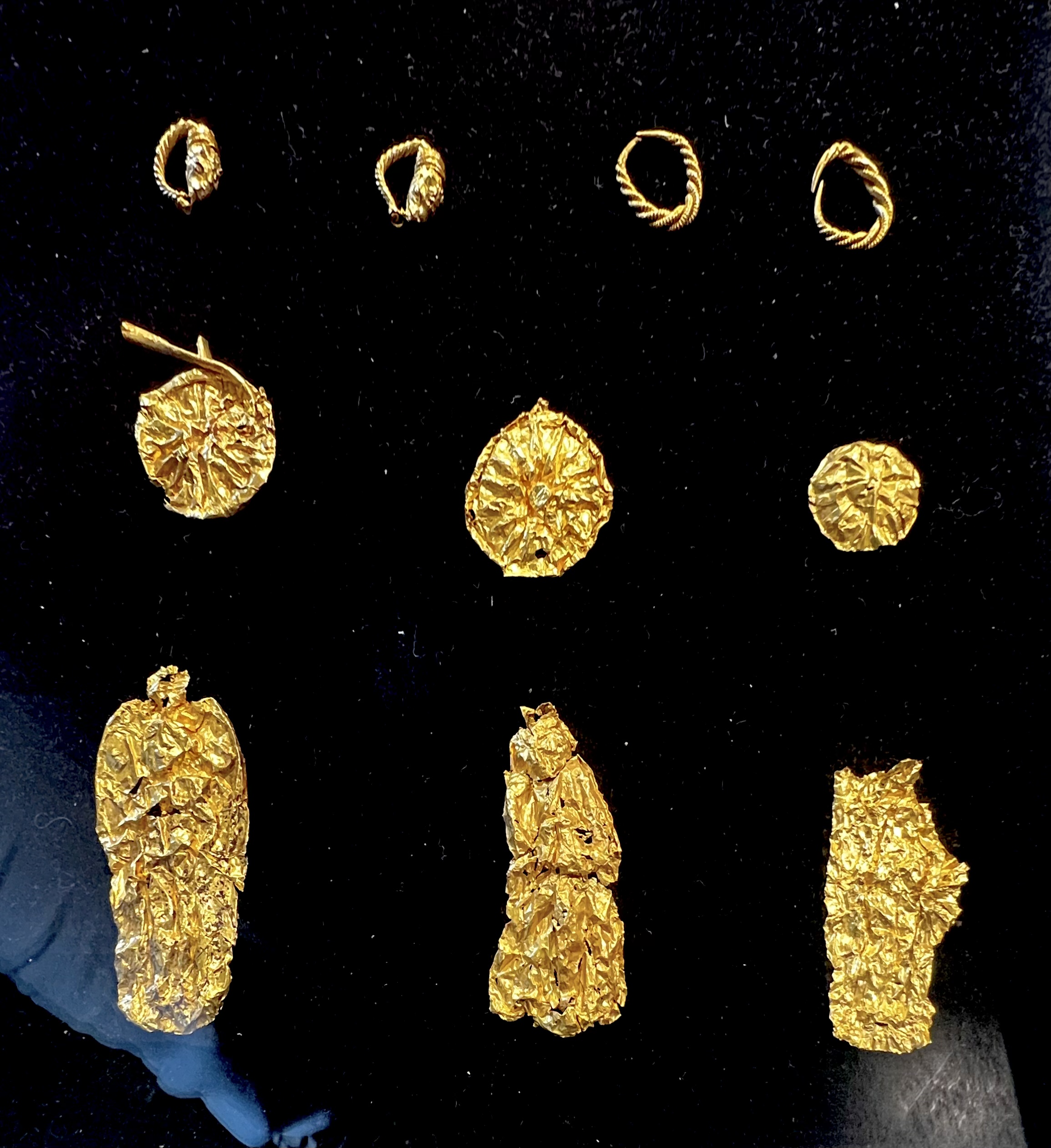

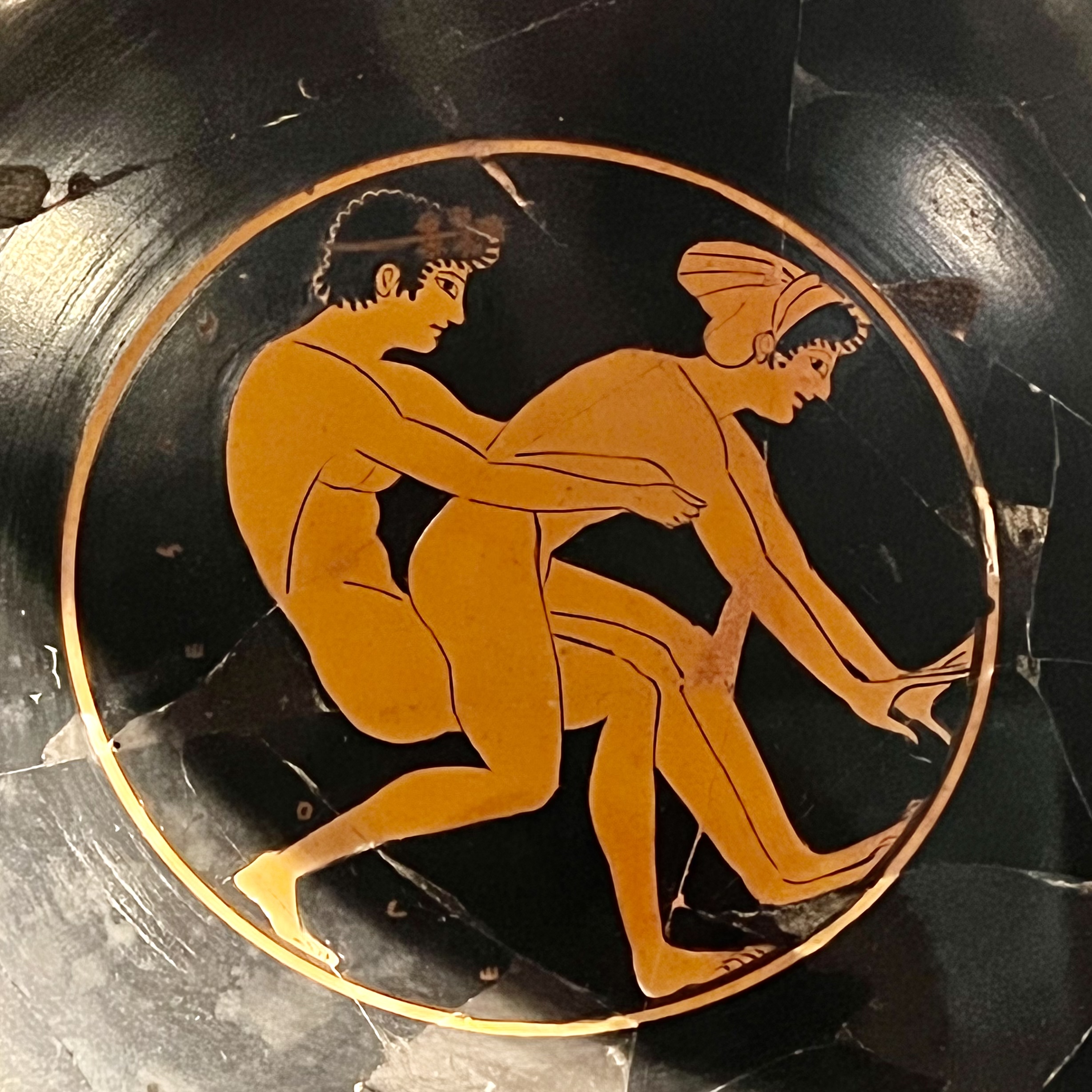

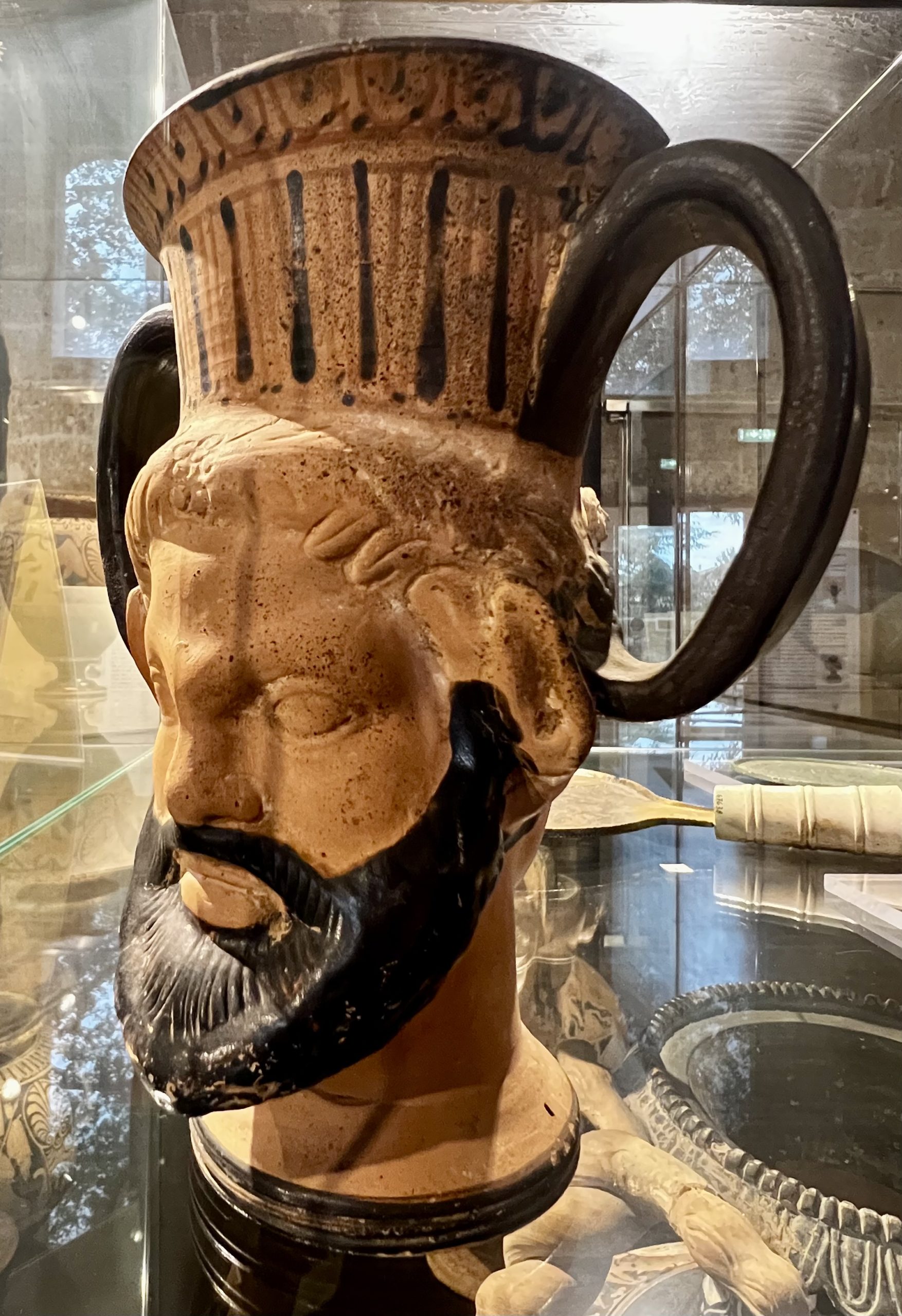
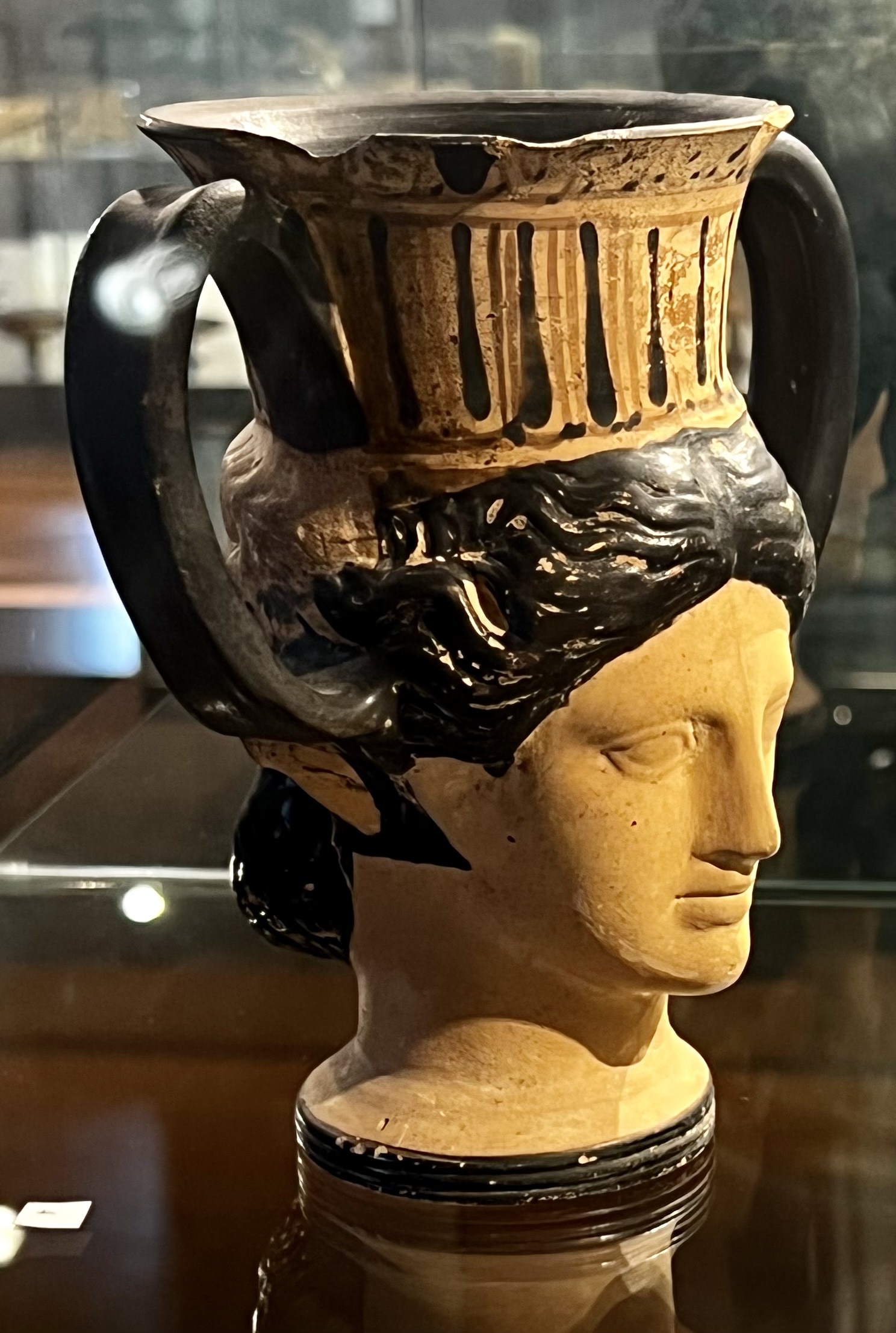
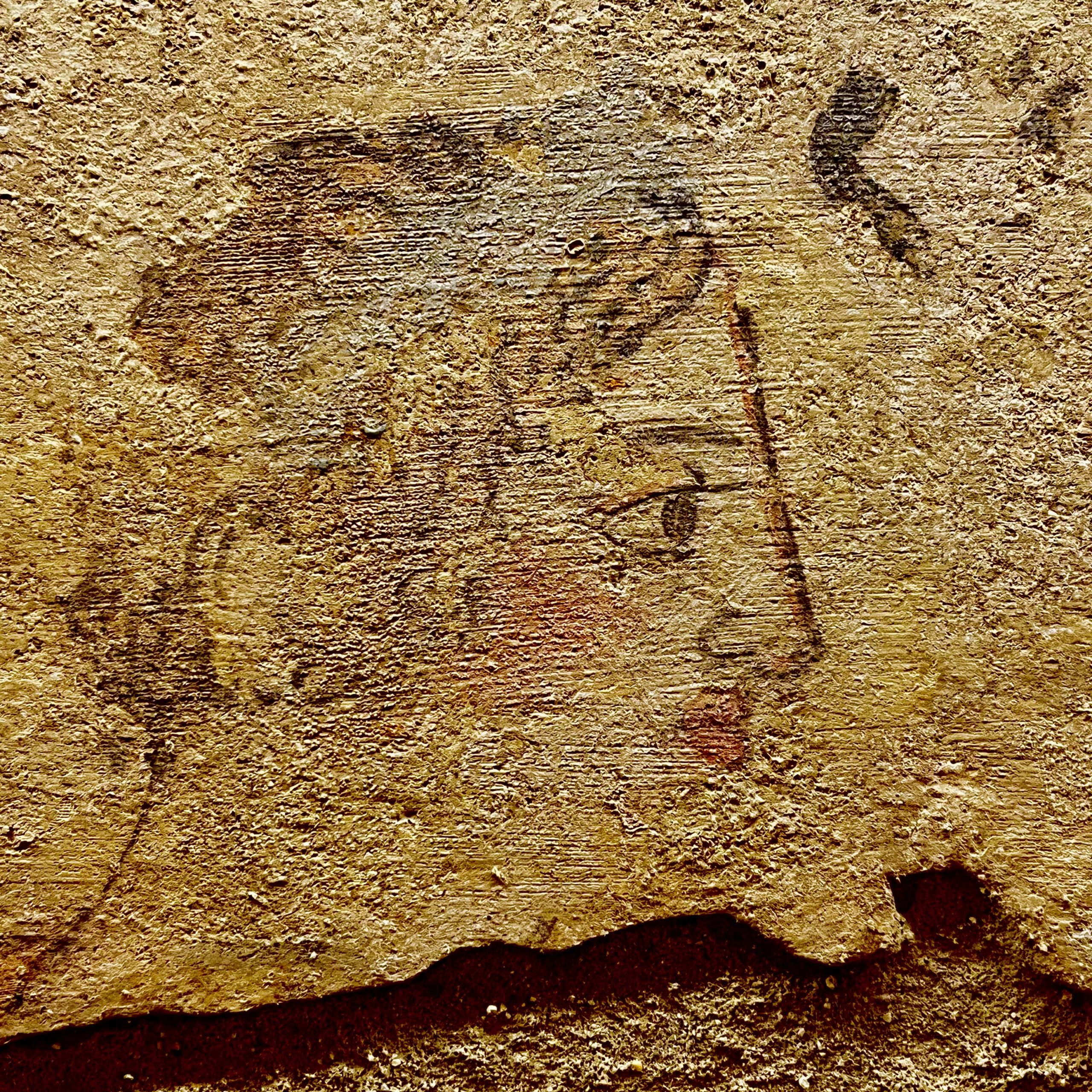
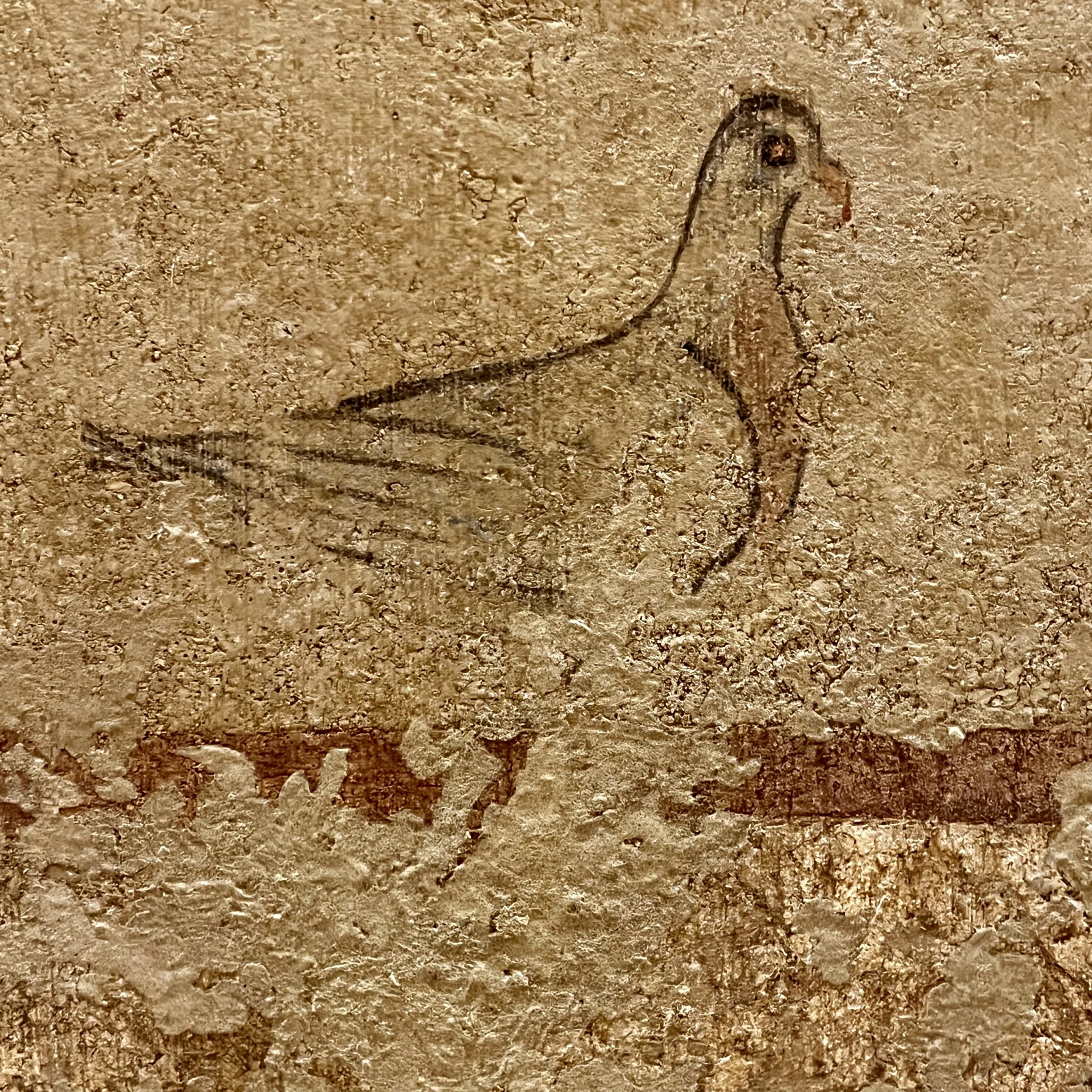
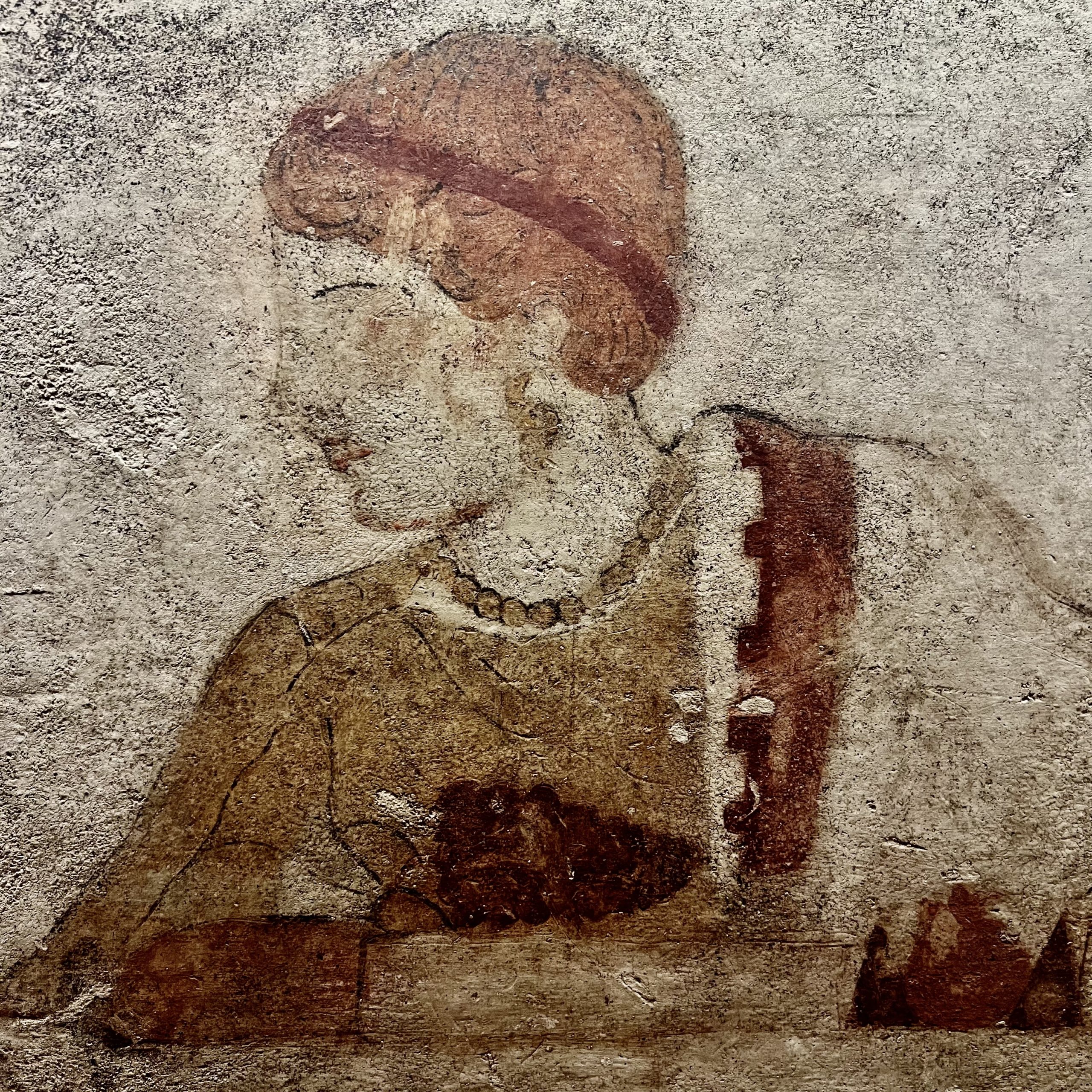
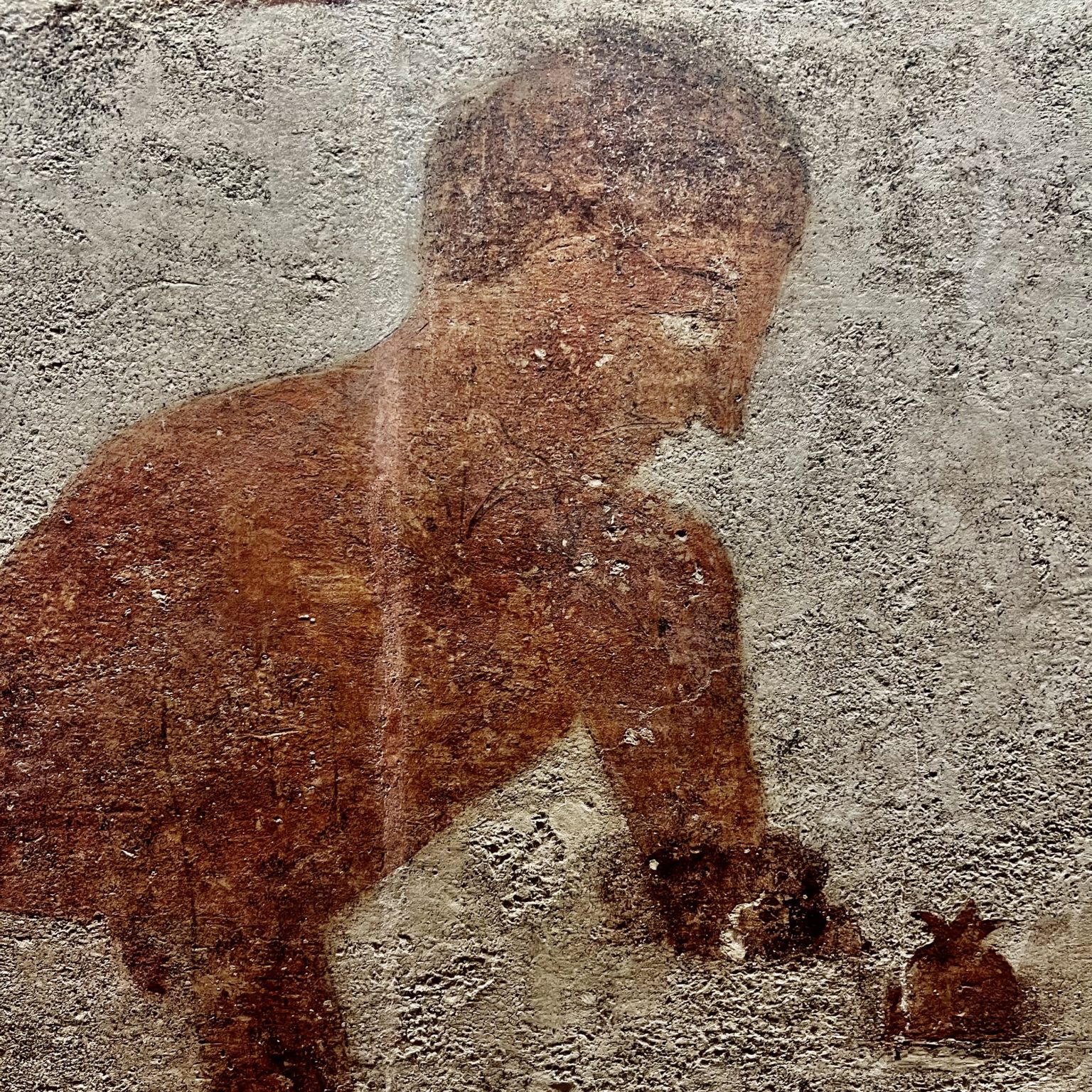
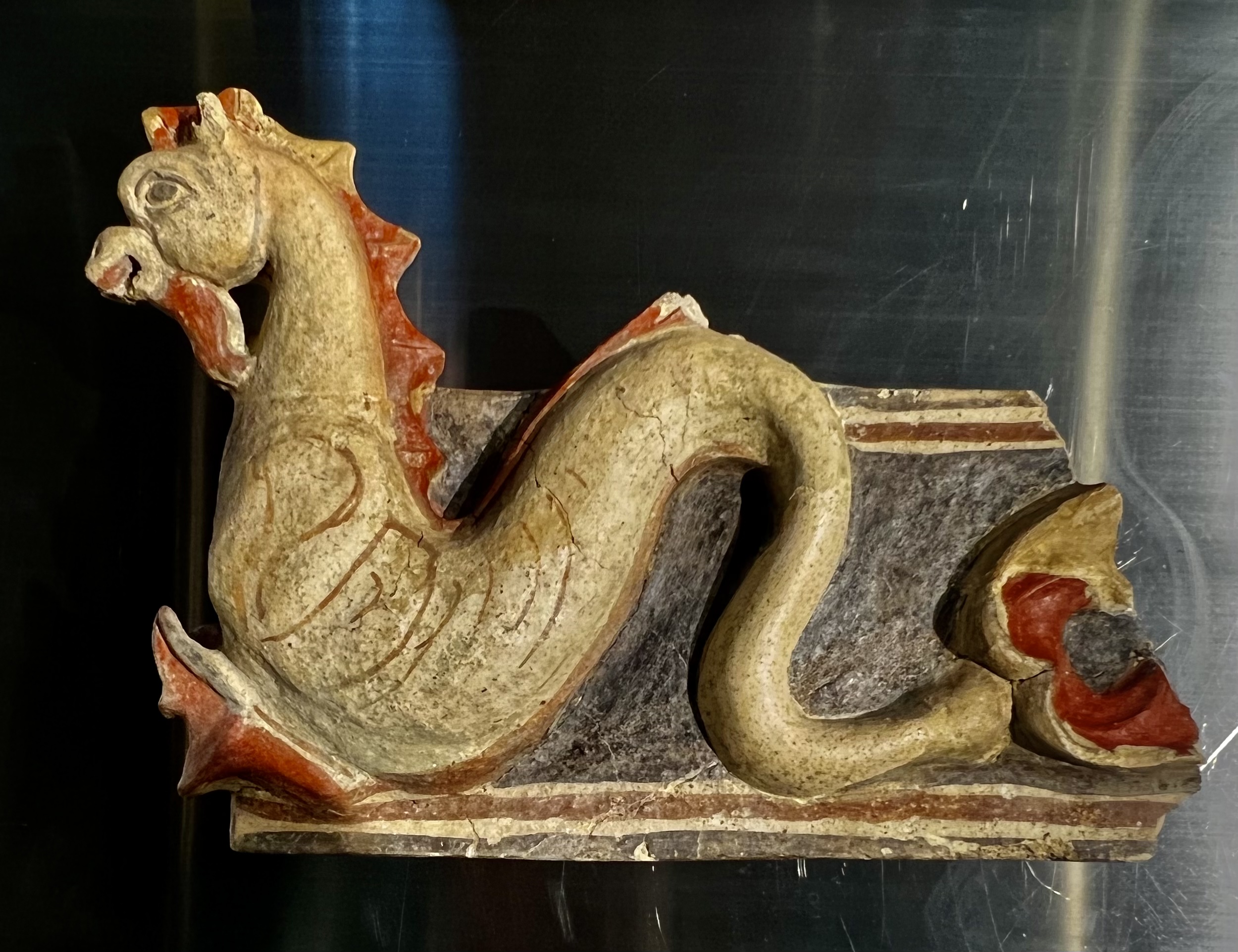
Chiesa di San Giovenale
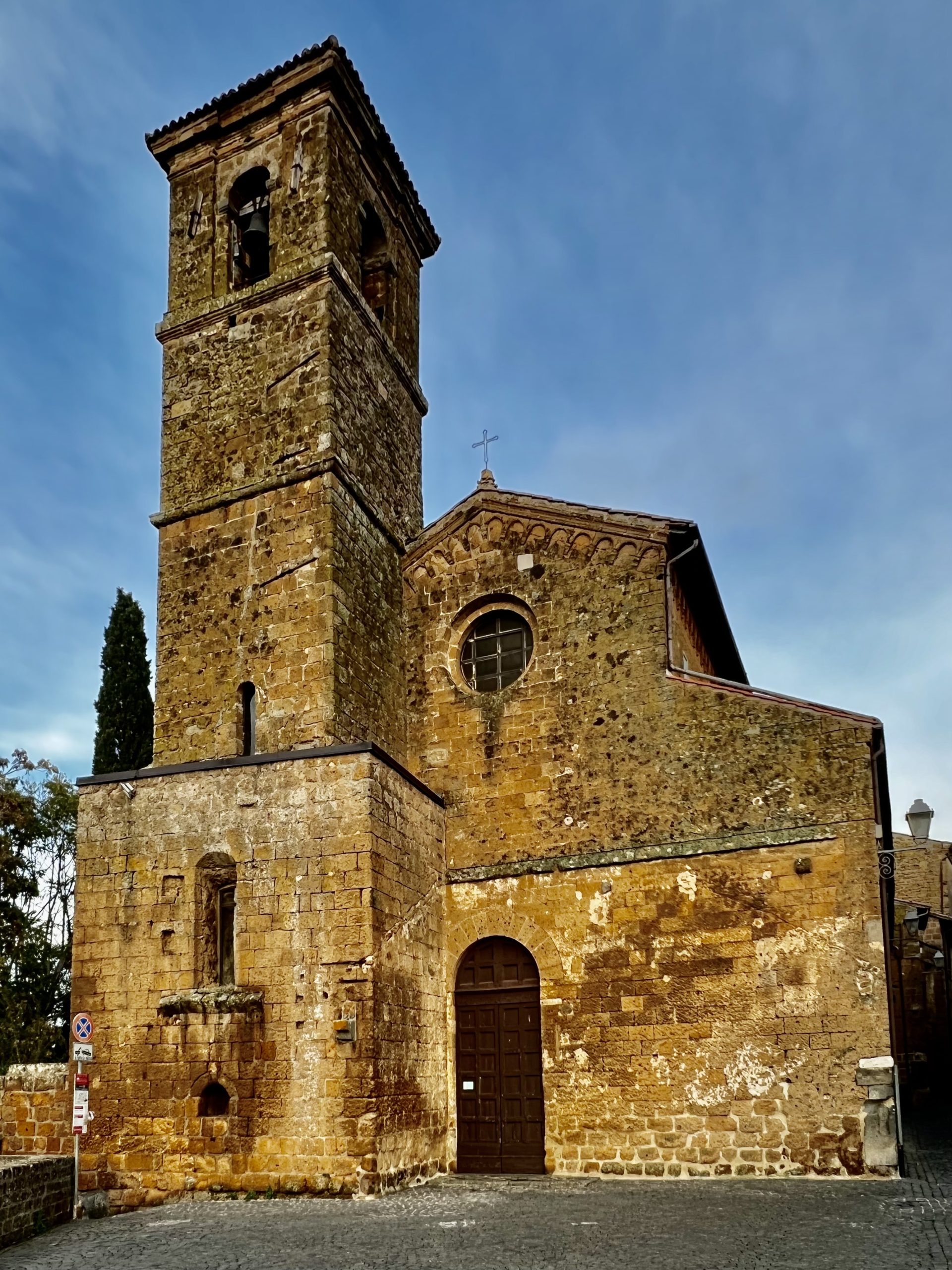
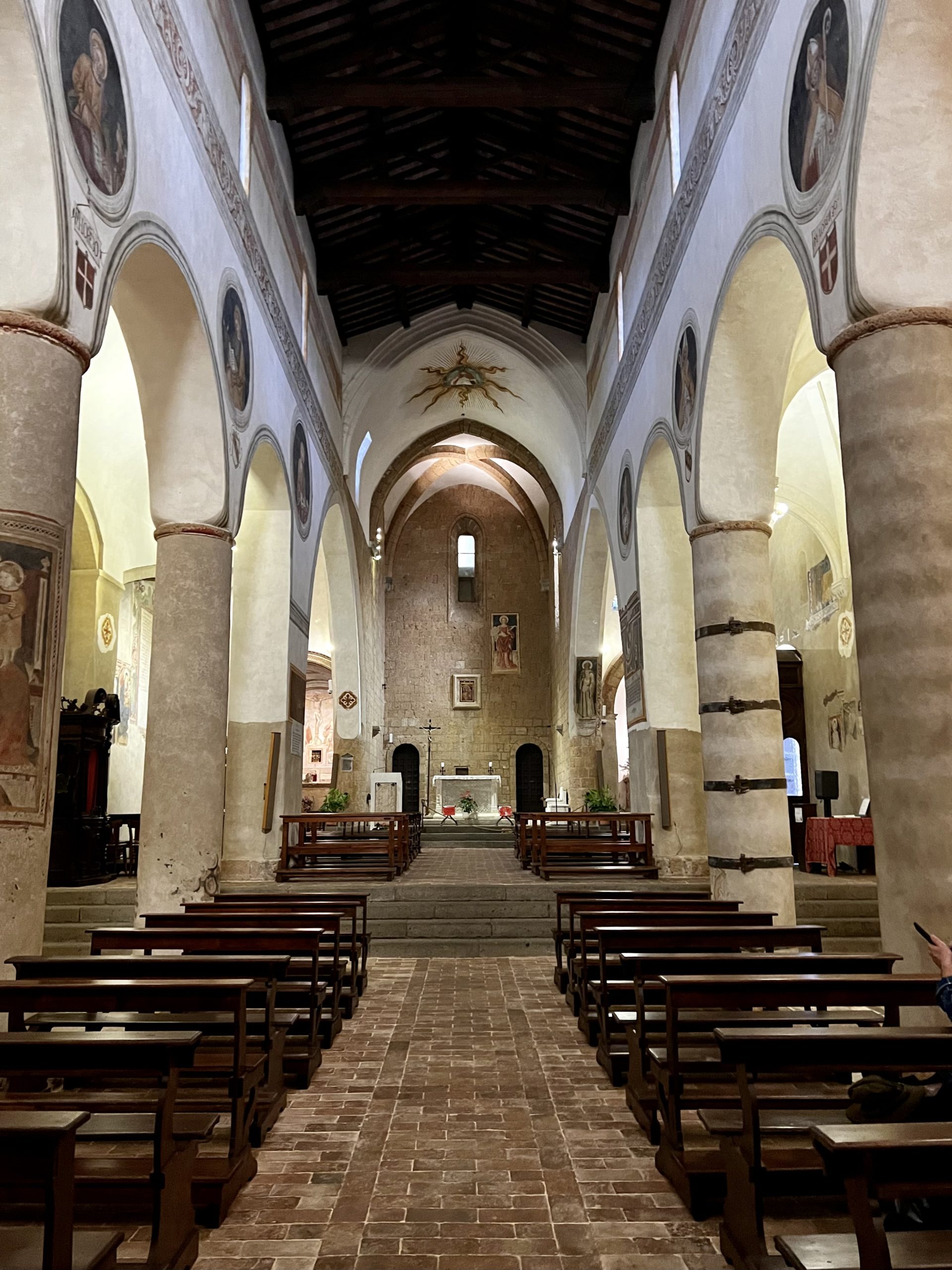
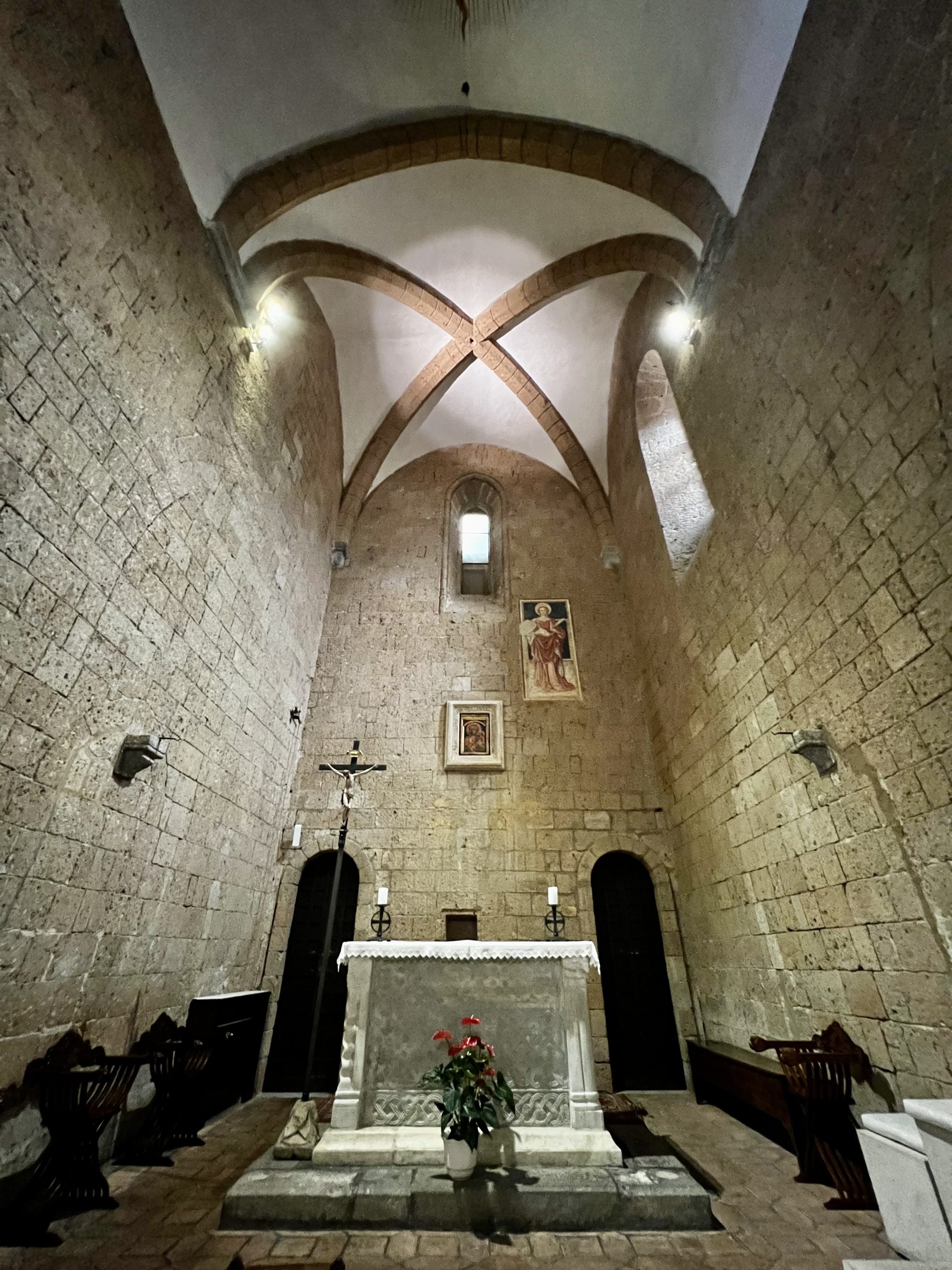
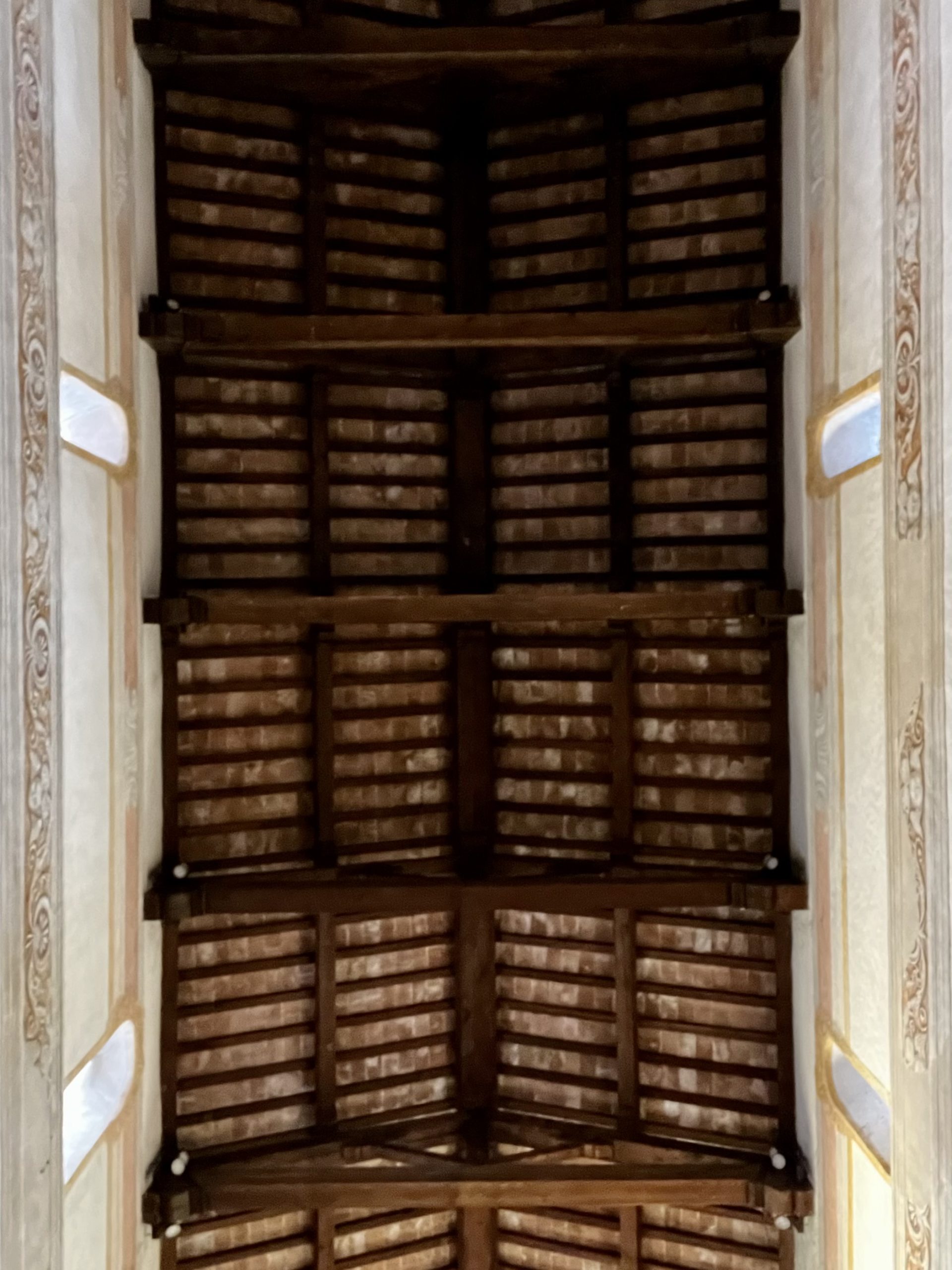
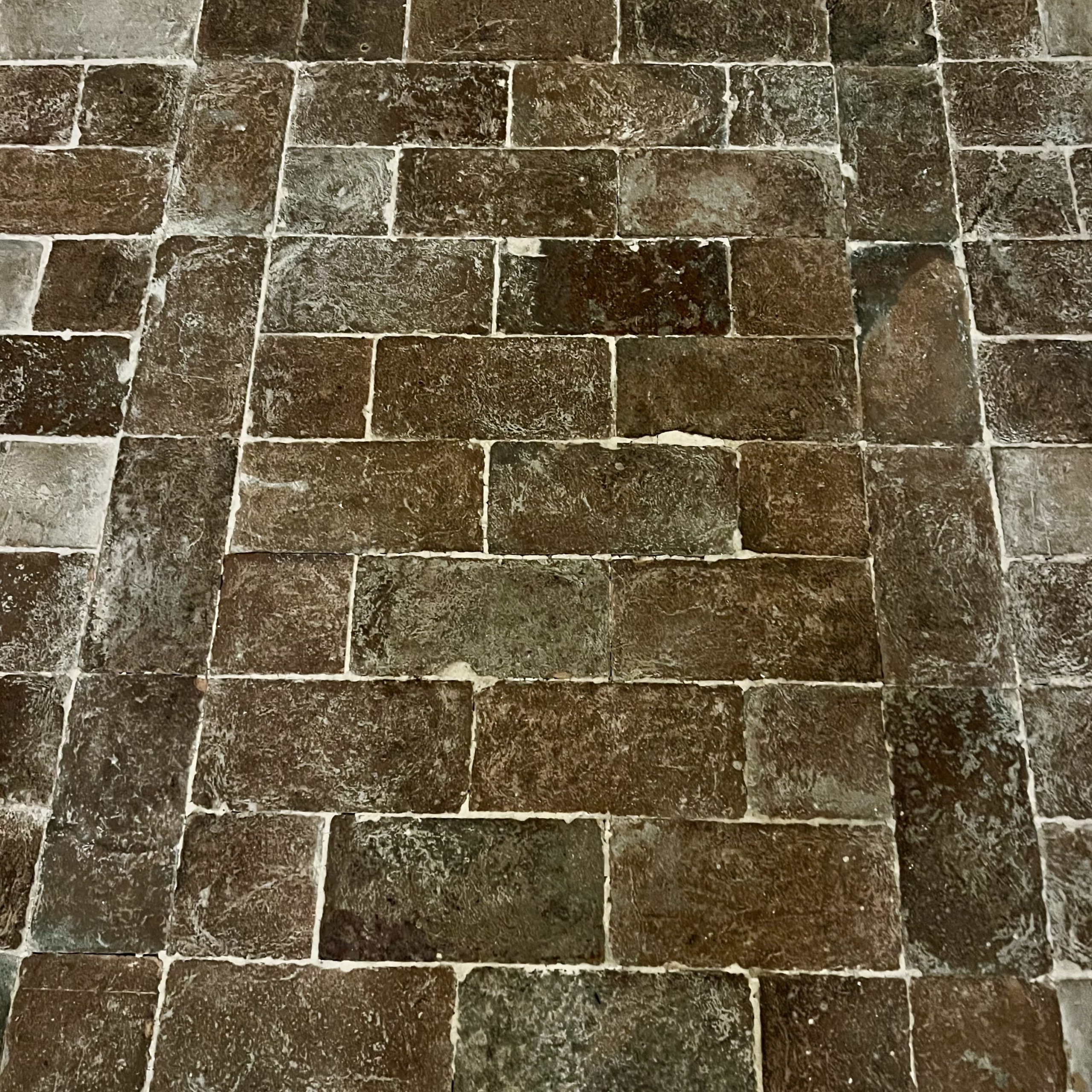
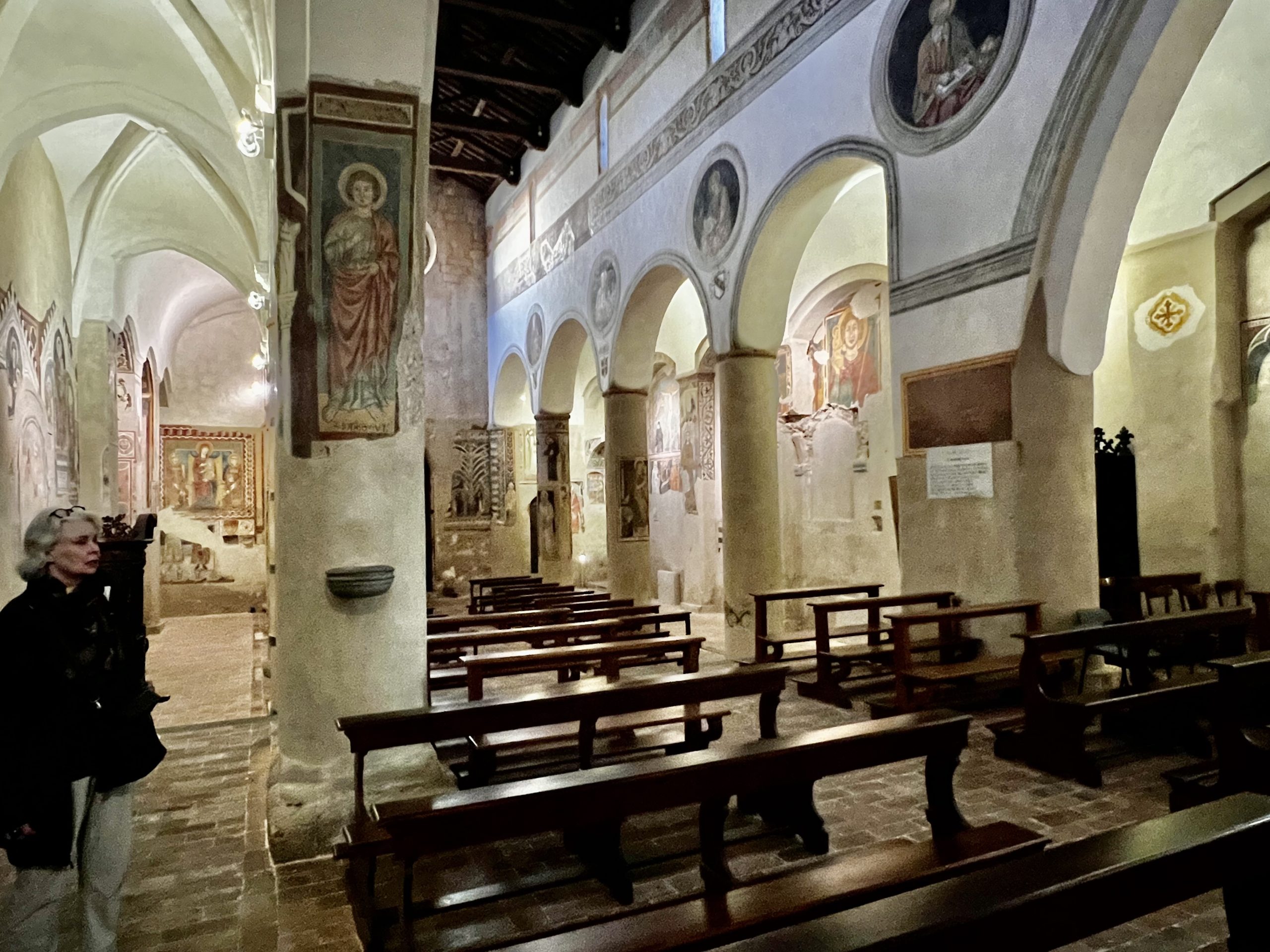
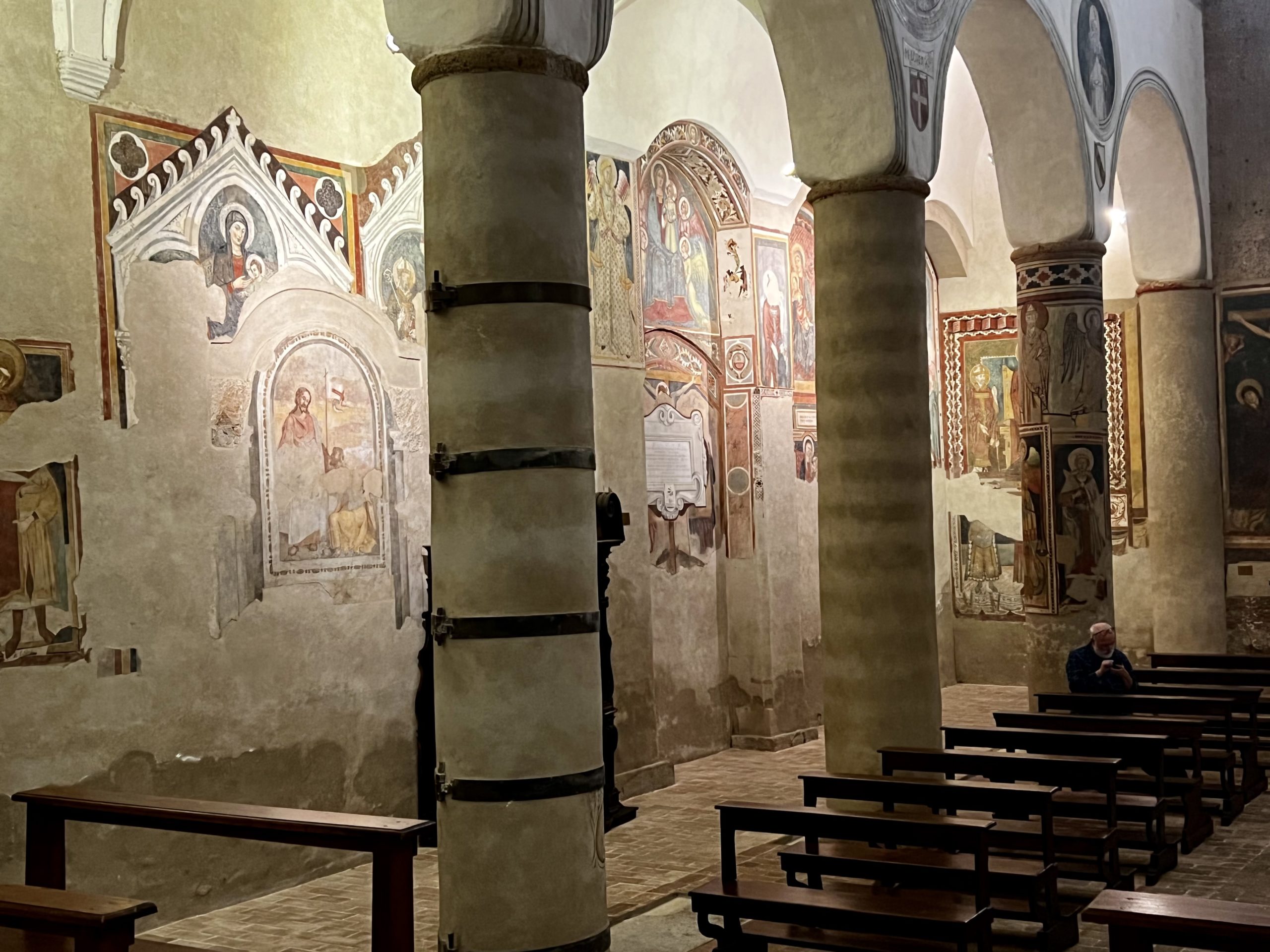
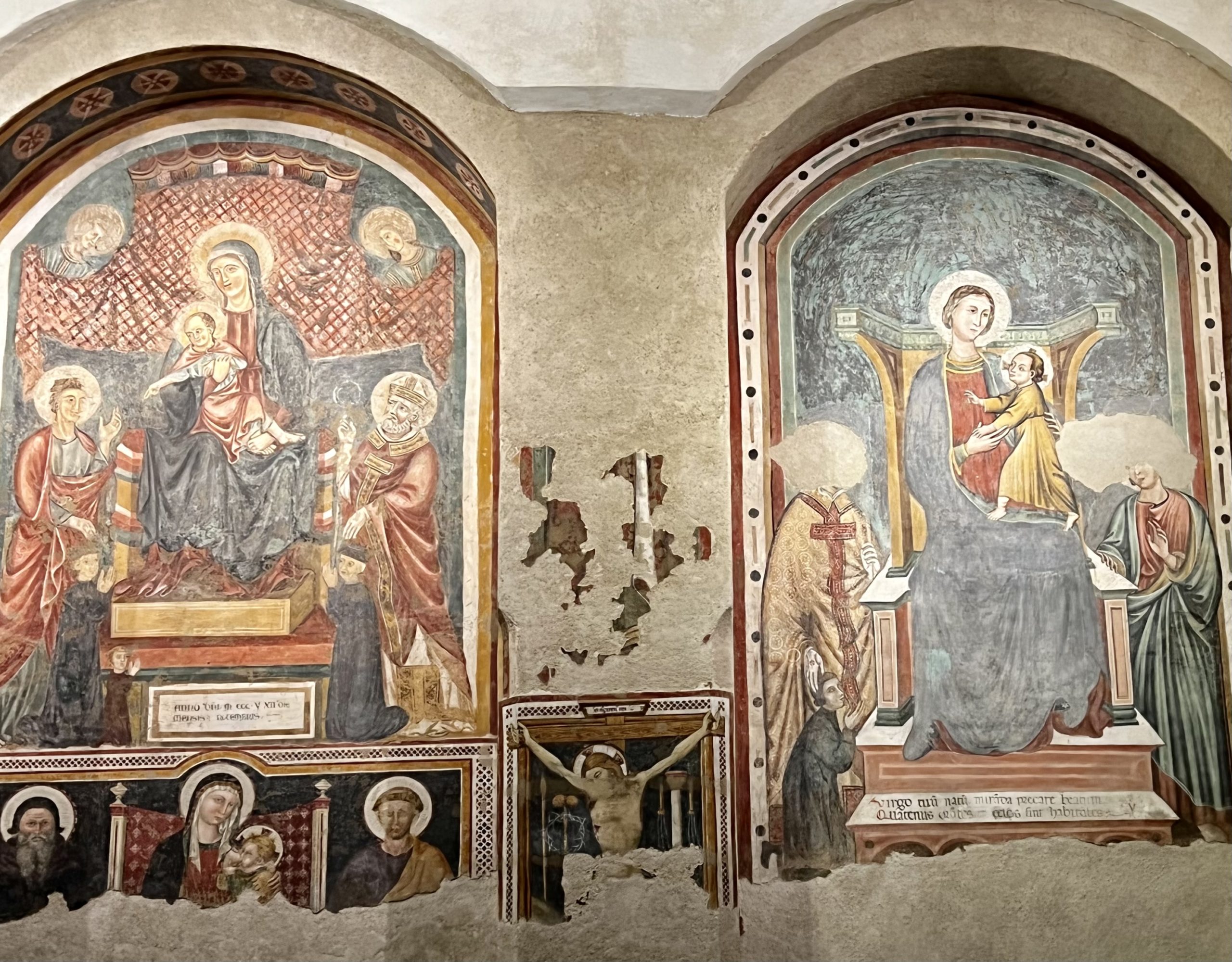
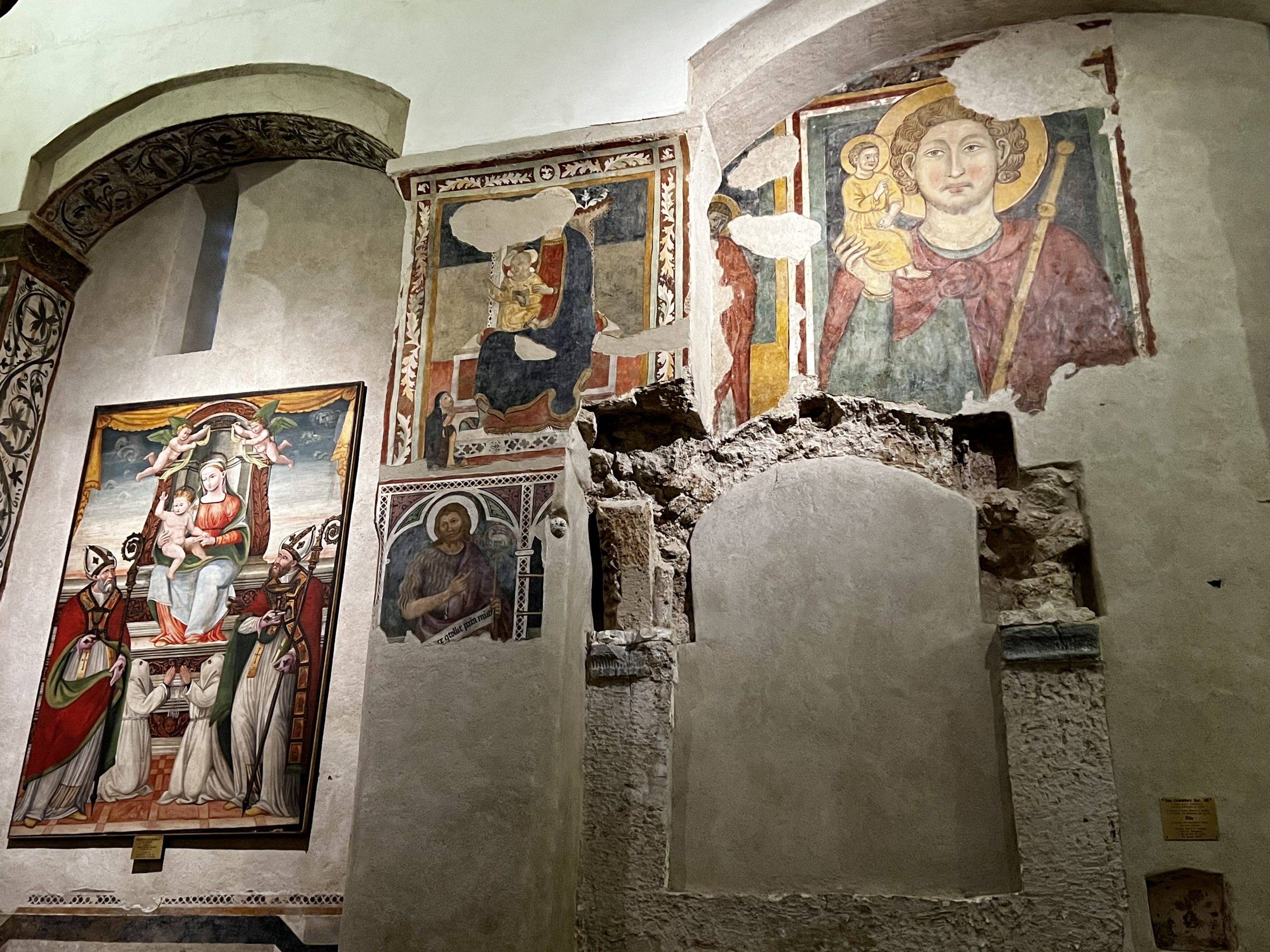
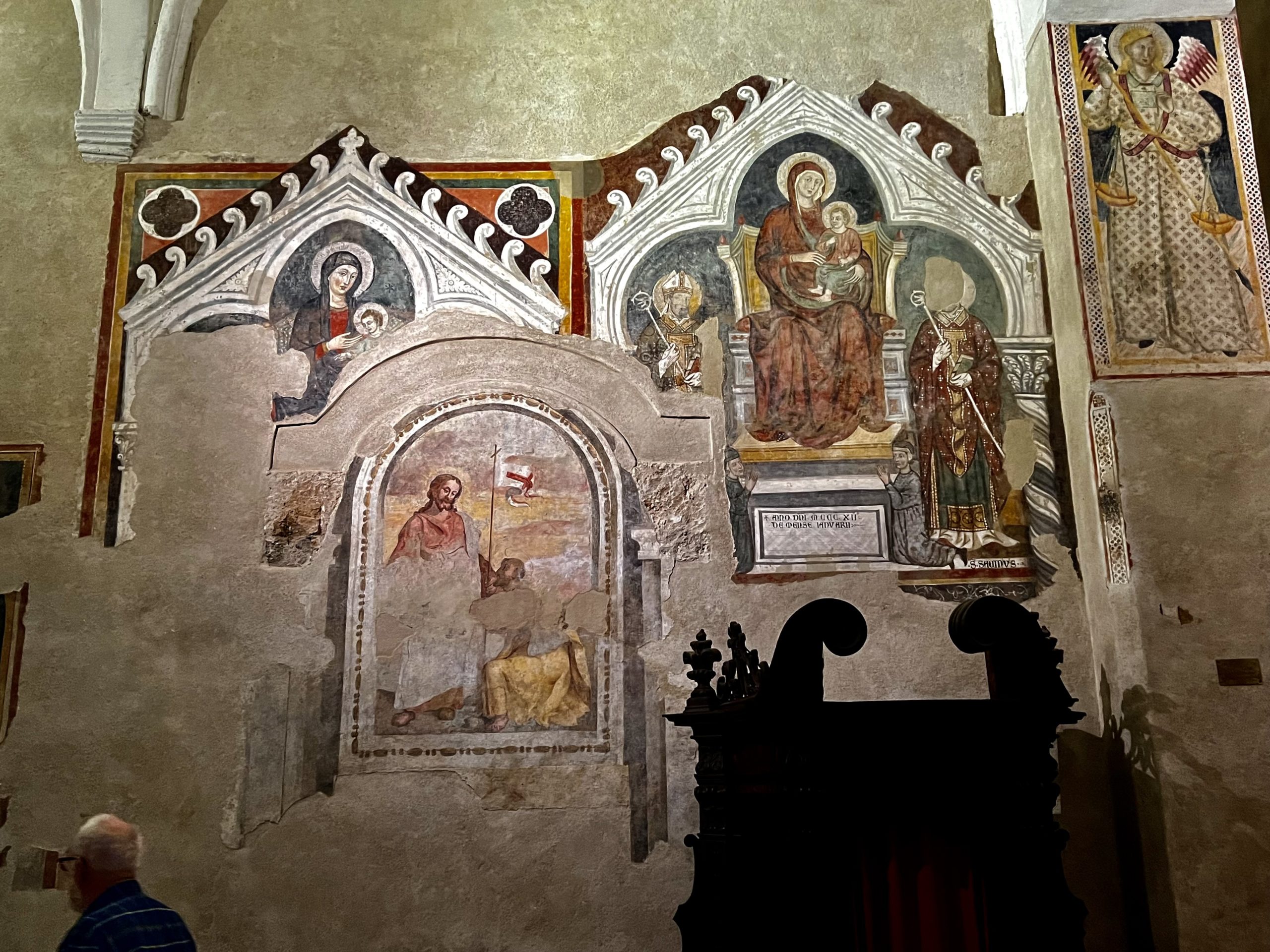
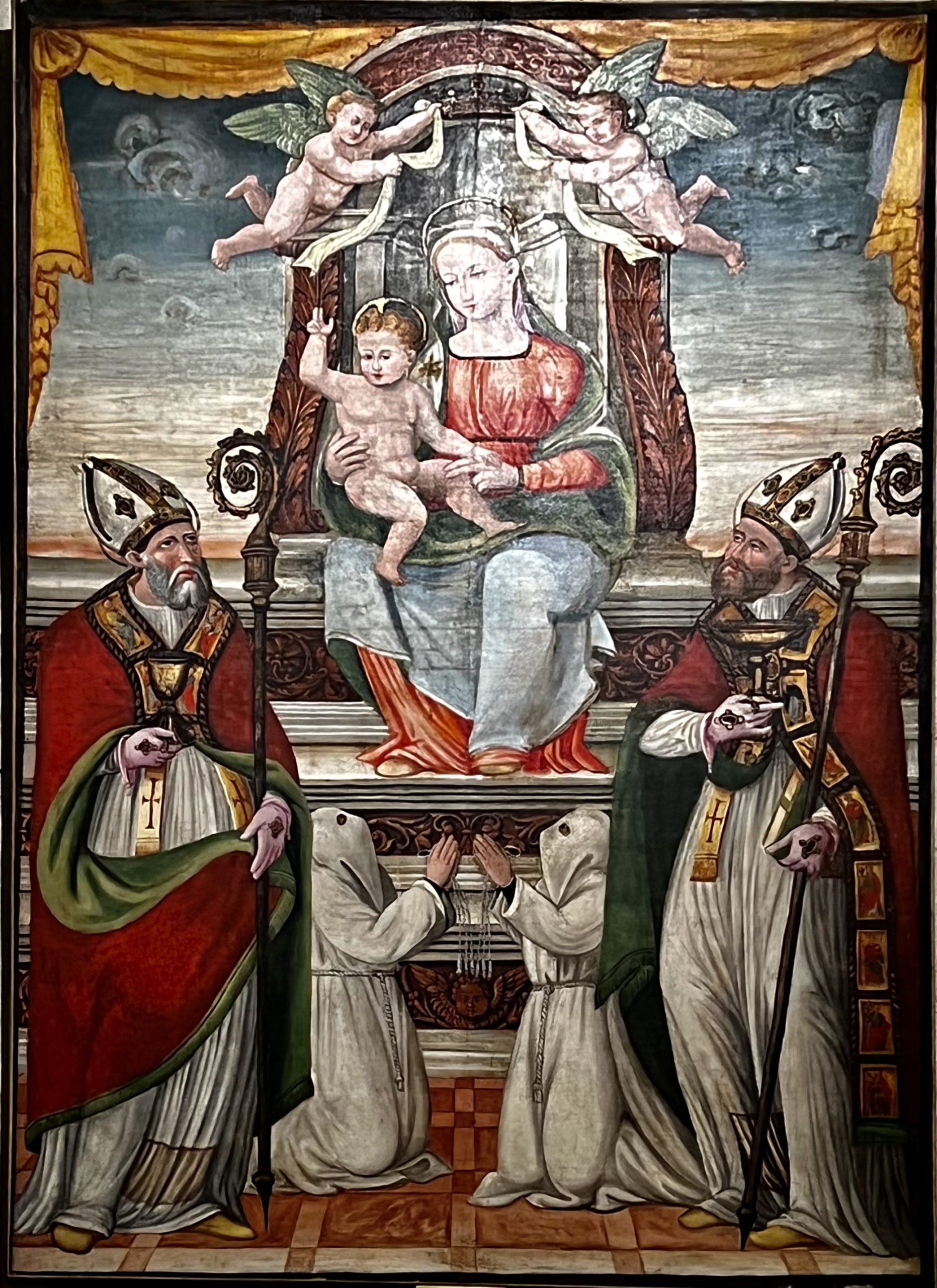
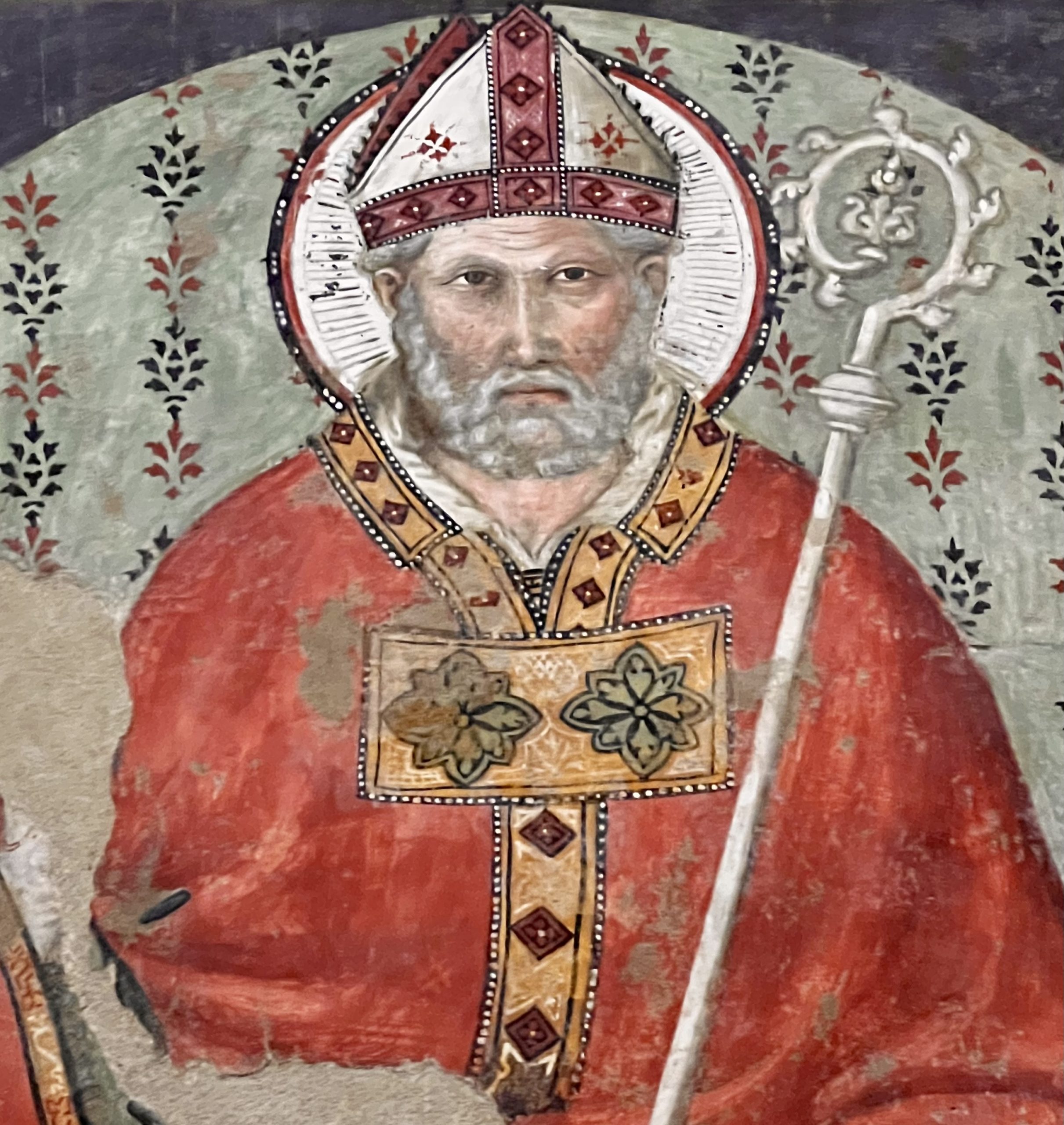
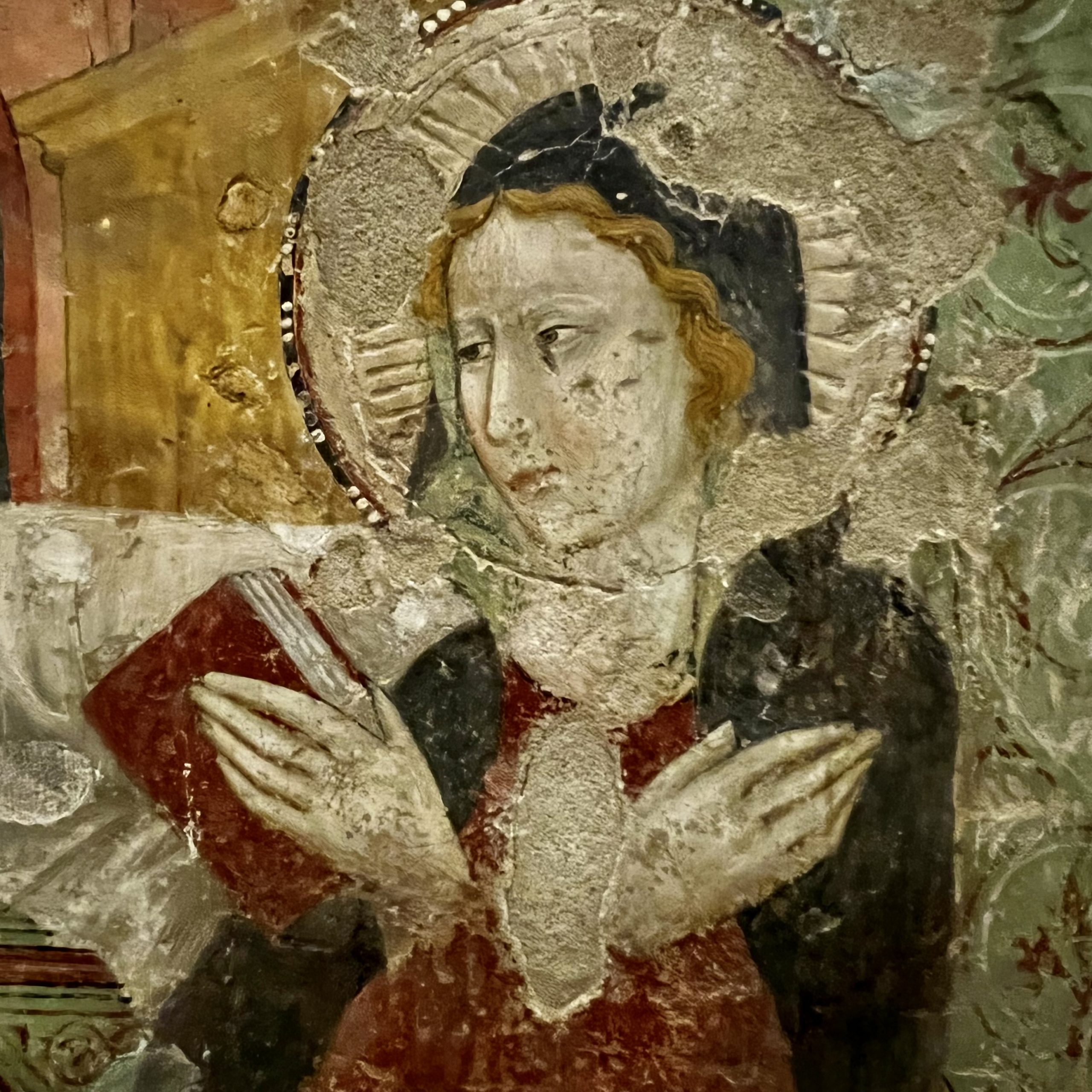
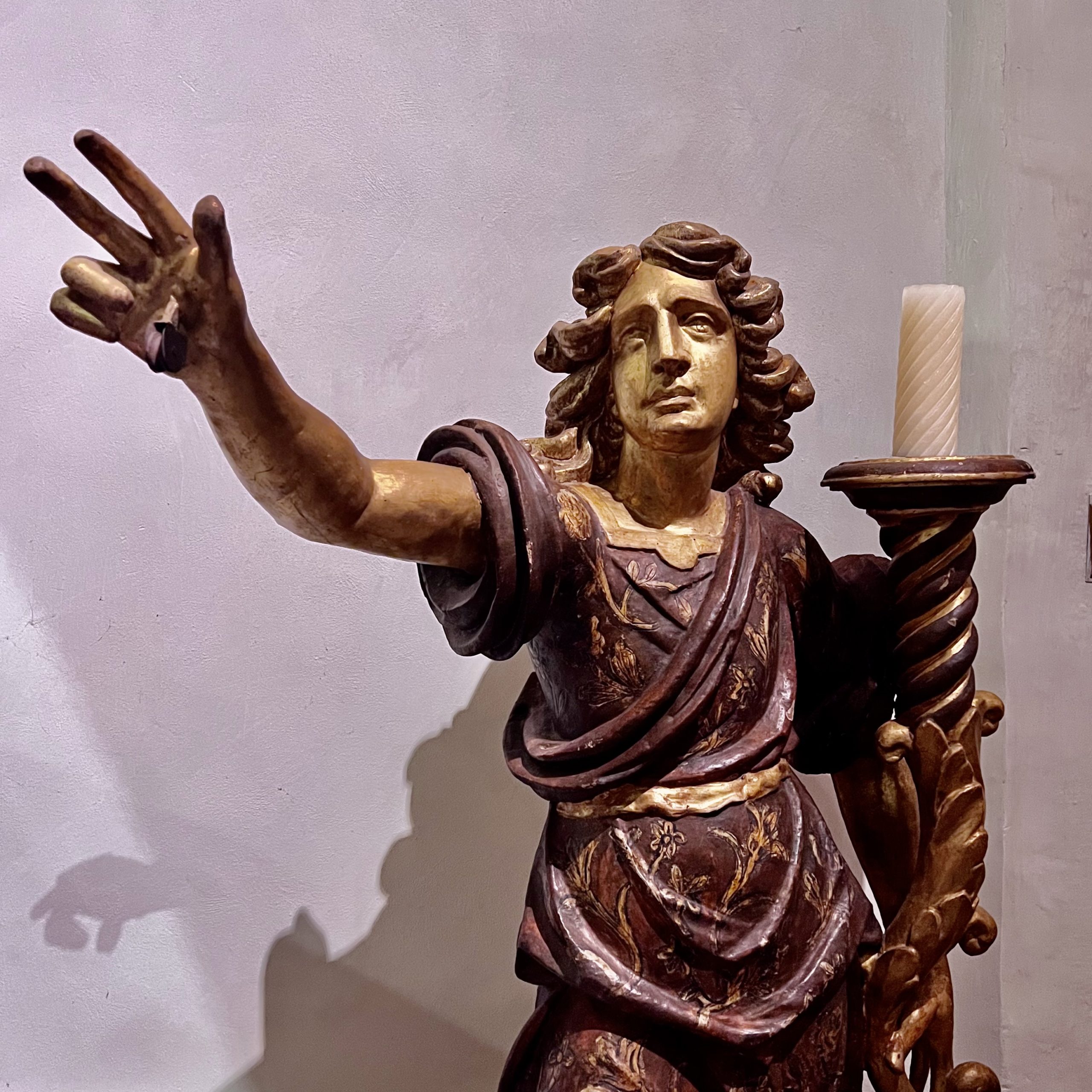
Kirk and Adria
Our Bay Area friends Kirk and Adria lived with their kids here for one year—2002-2003. We asked them for their address and they asked us to say hello to their friends here. We did. Nice folks.
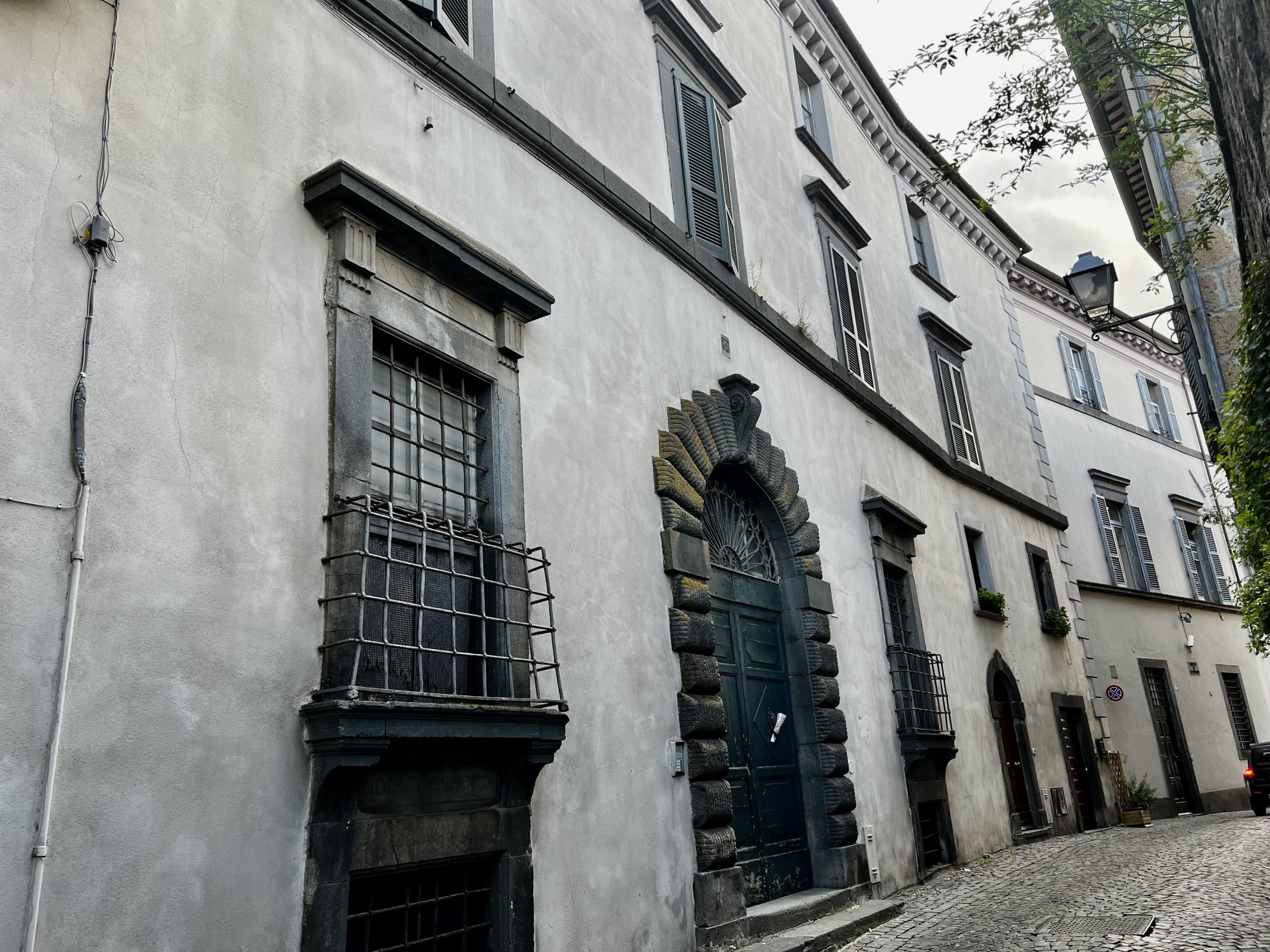
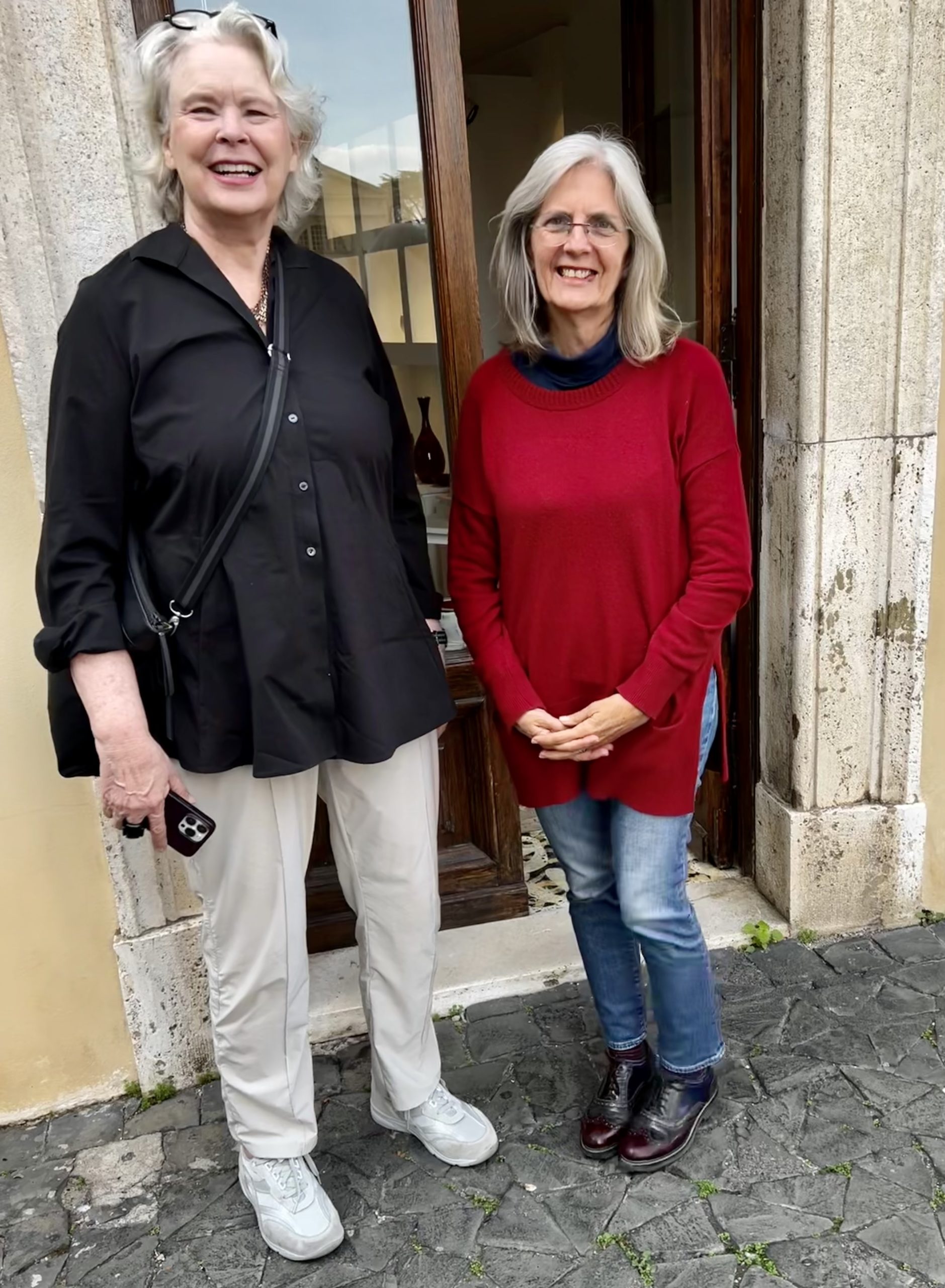
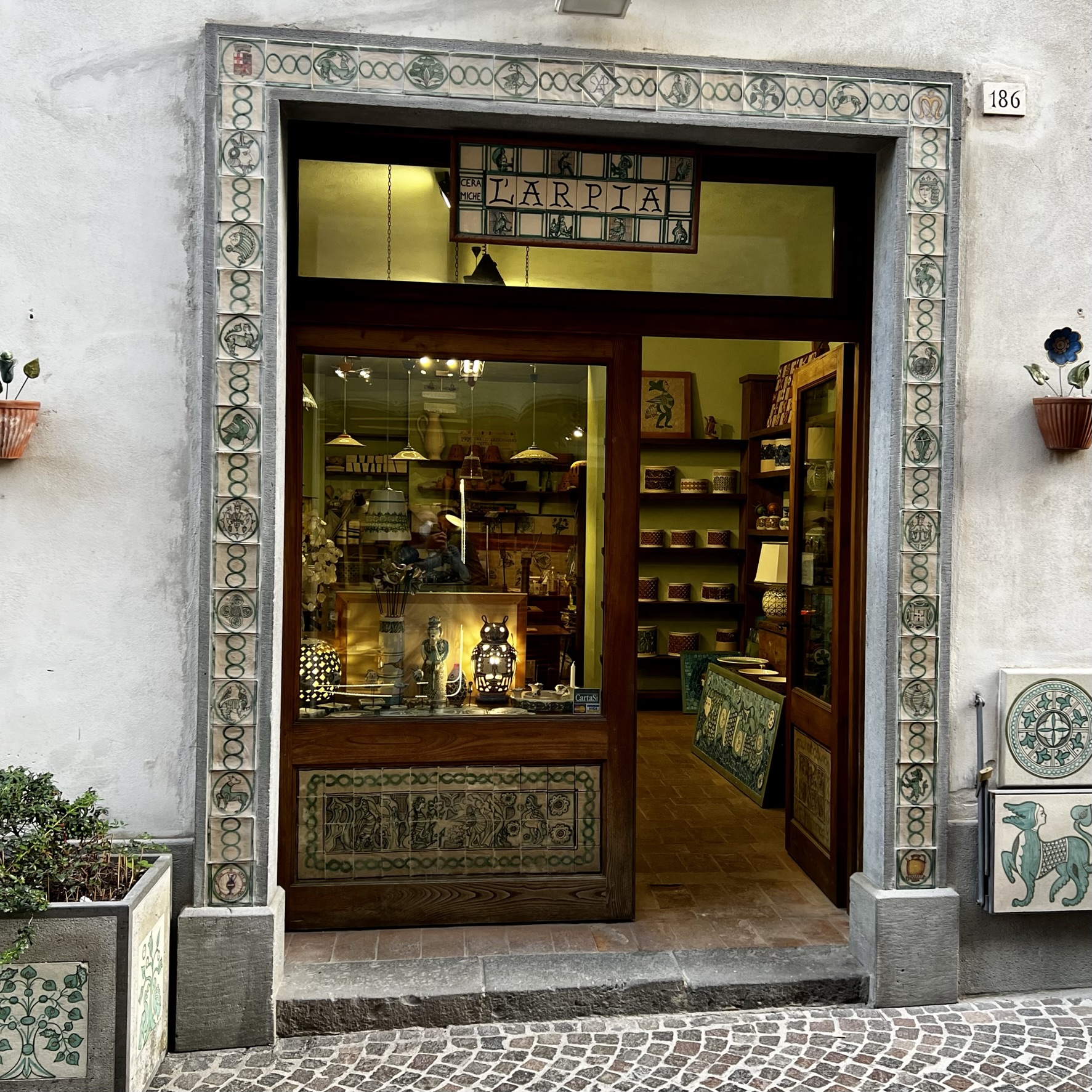
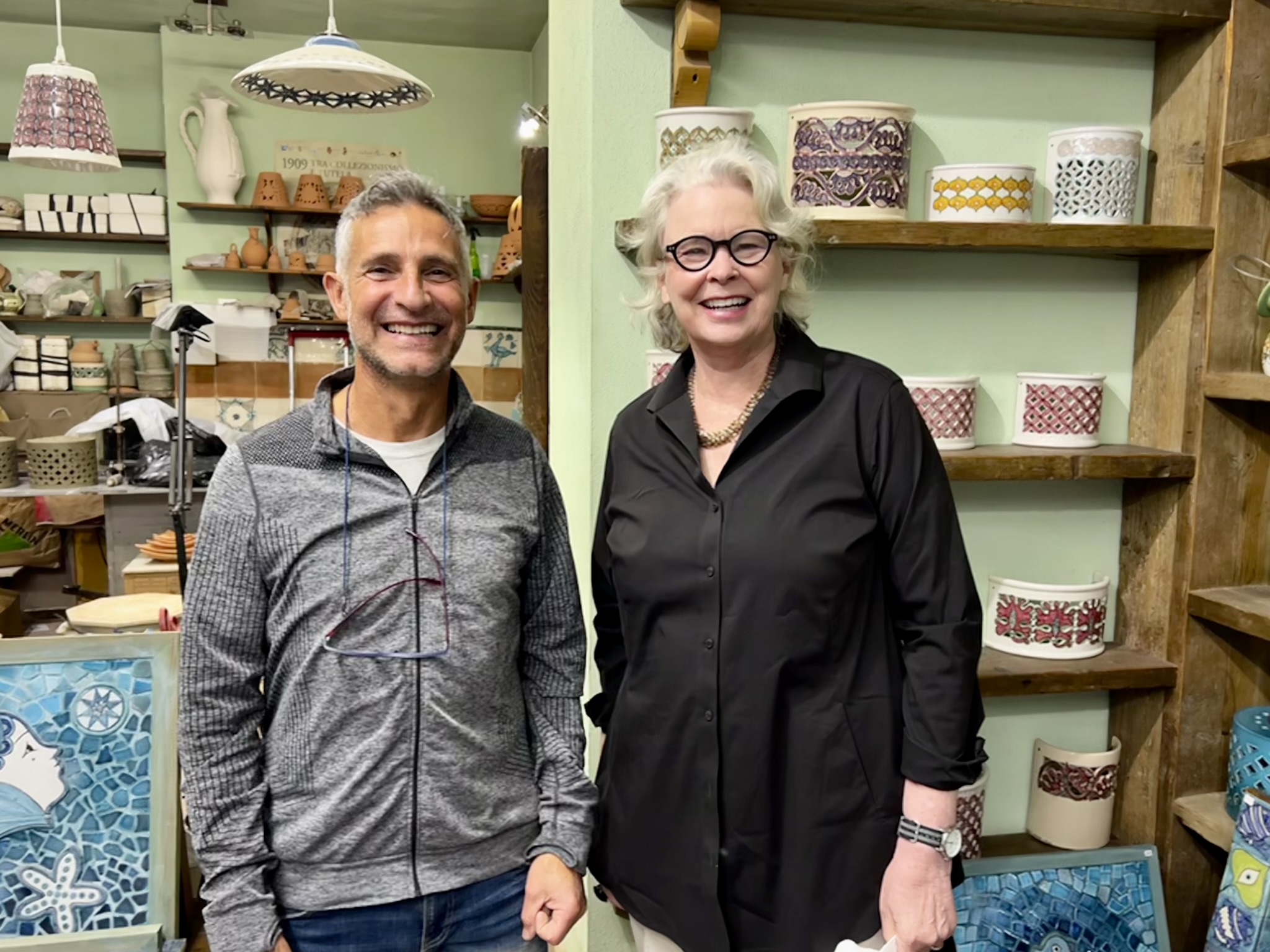
Mercato
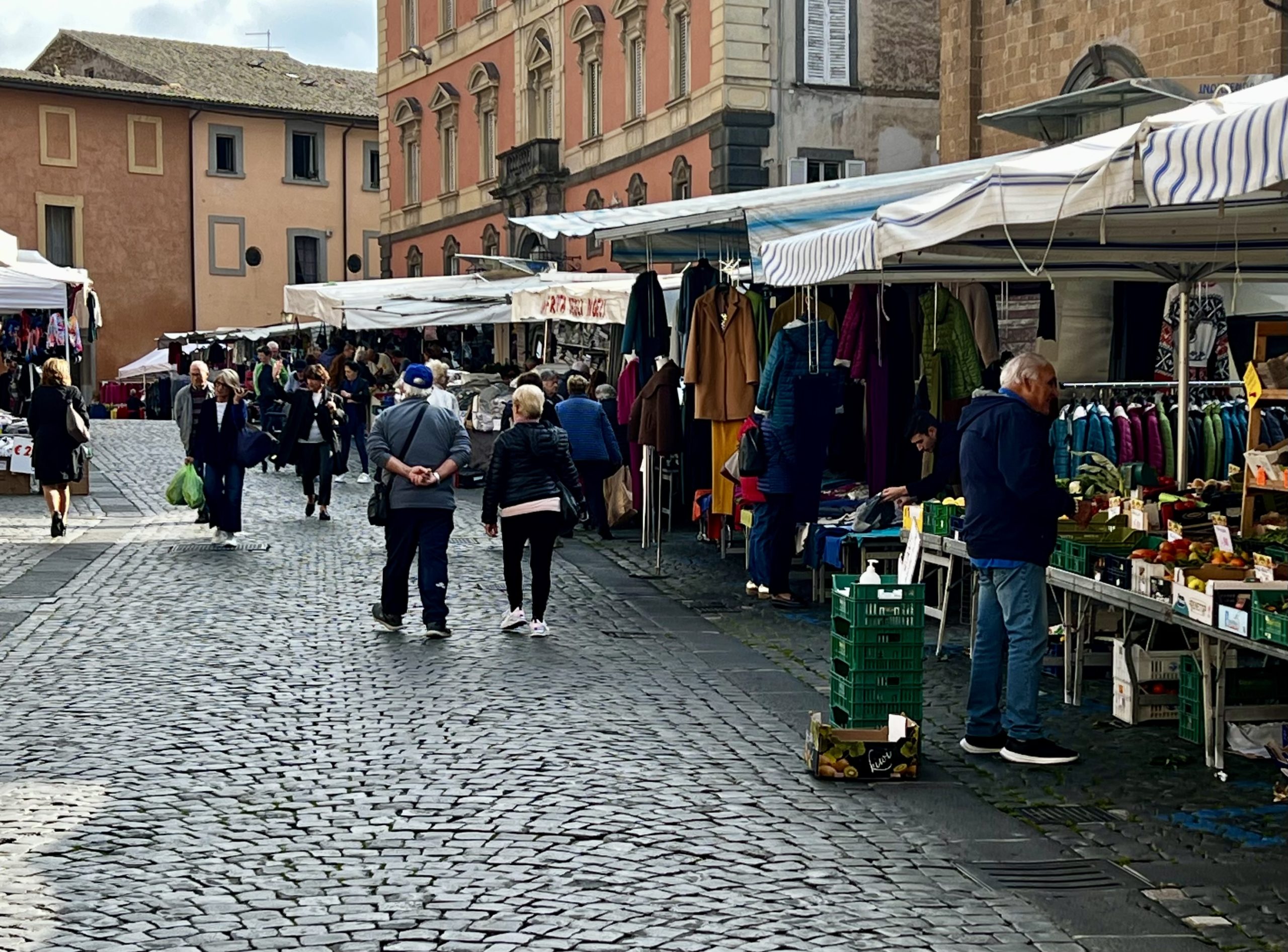

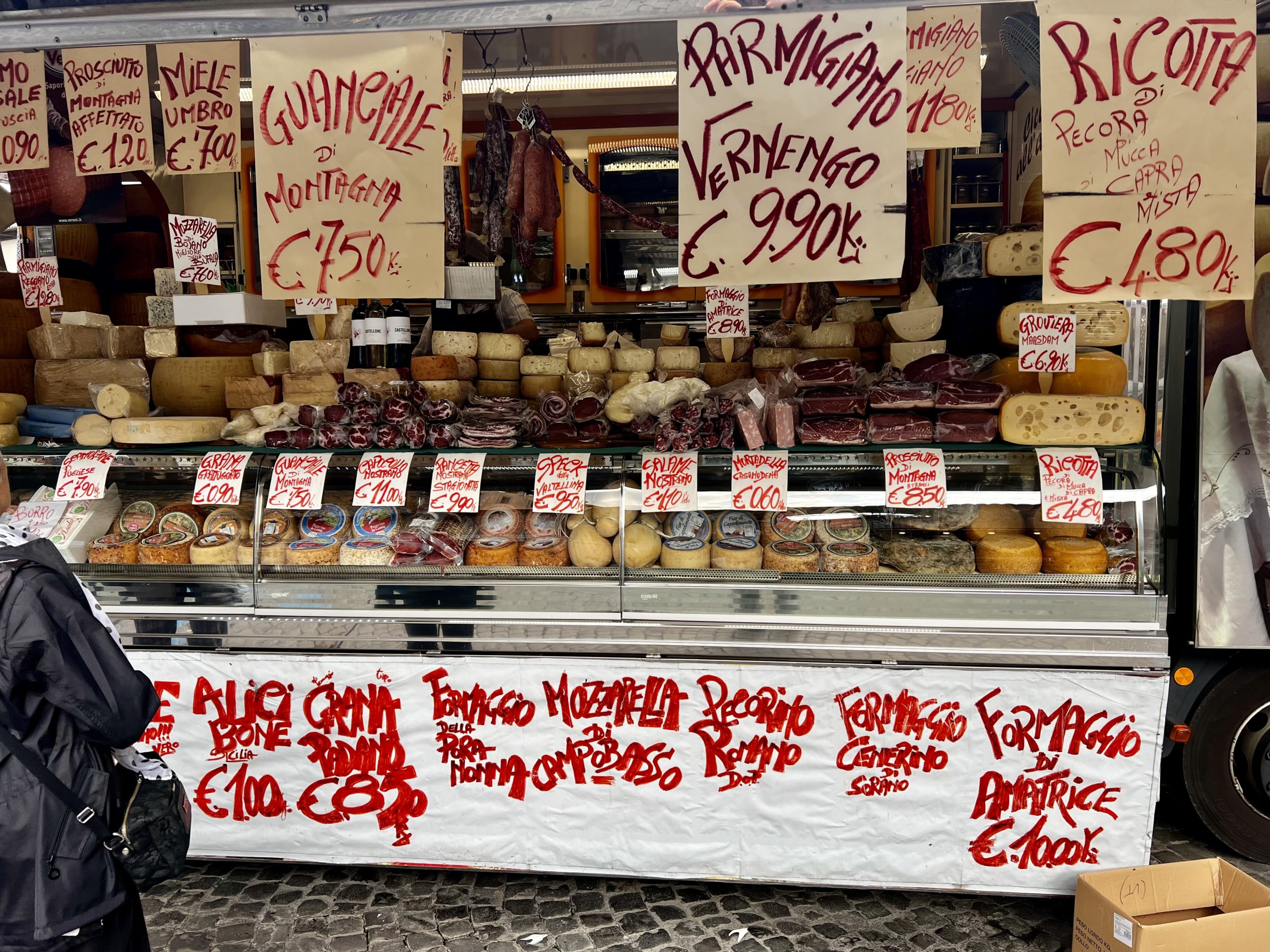
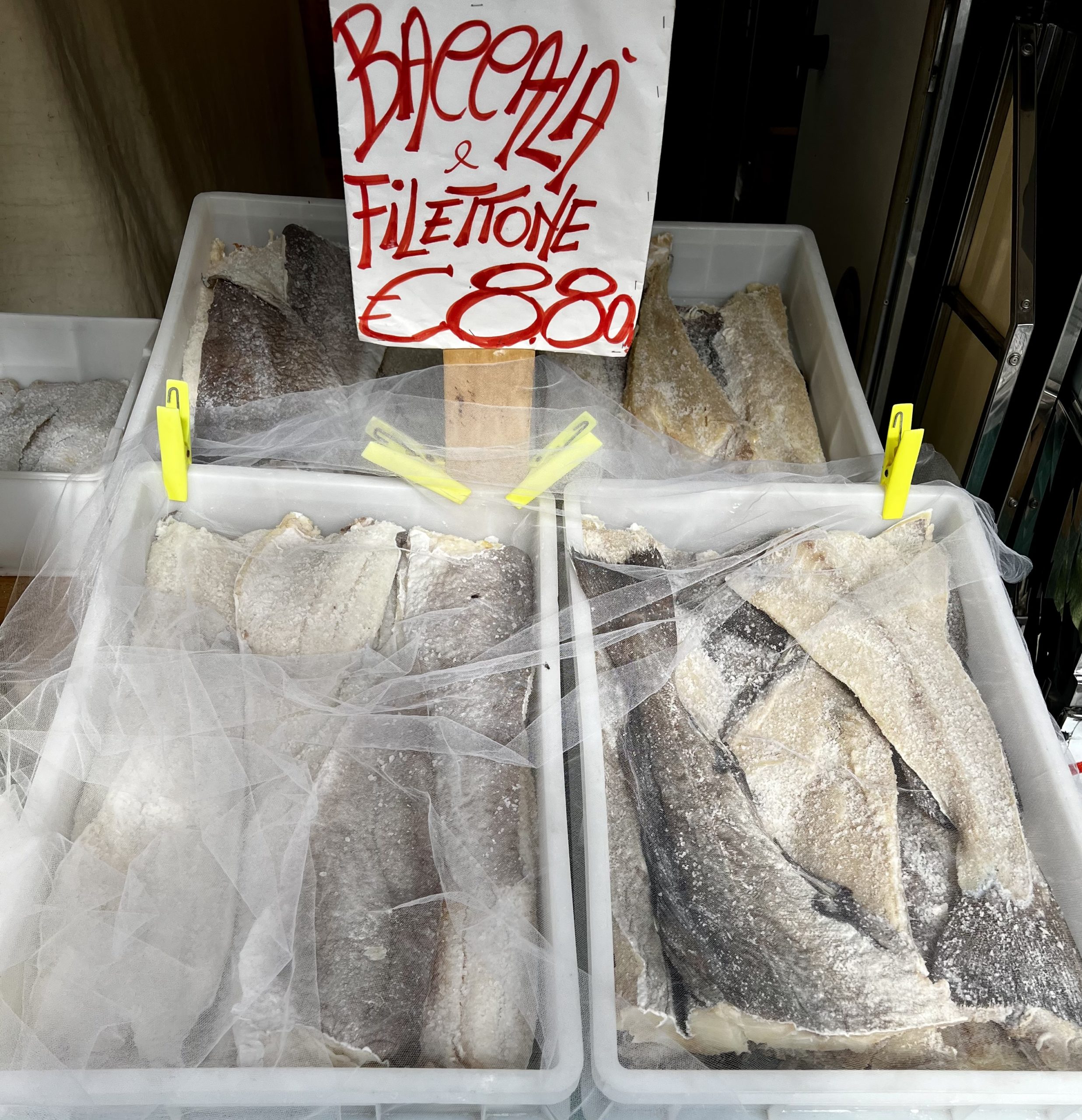
I Cibi e i Bibete
